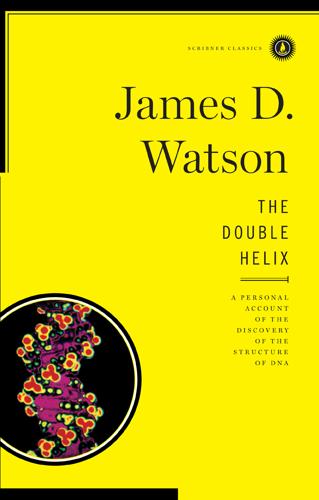
Double Helix
by
James D. Watson
and
Gunther S. Stent
Published 1 Jan 1968
Barrington Brown Letter to Max Delbrück In Stockholm, December 1962 Svenskt Pressfoto, Stockholm DIAGRAMS Short section of DNA, 1951 Chemical structures of the DNA bases, 1951 Covalent bonds of the sugar-phosphate backbone Schematic view of a nucleotide Mg++ ions binding phosphate groups Schematic view of DNA, like-with-like base pairs Base pairs for the like-with-like structure Tautomeric forms of guanine and thymine Base pairs for the double helix Schematic illustration of the double helix DNA replication THE DOUBLE HELIX IN THE summer of 1955, I arranged to join some friends who were going into the Alps. Alfred Tissieres, then a Fellow at King’s, had said he would get me to the top of the Rothorn, and even though I panic at voids this did not seem to be the time to be a coward.
…
That structure, they reported in a short article in Nature just weeks later, was the beguilingly beautiful “double helix.” Noting that the helix could “unzip” and copy itself, Crick and Watson confirmed what had hitherto only been suspected: that DNA was the substance that embodied the genetic code. Their brilliant insight—which heralded a new age in biology and medicine—proved to be the scientific coup of the second half of the century. Watson tells how they pulled it off in this now-classic memoir. First published in 1968 and in print for more than three decades, The Double Helix remains unique in the annals of science writing. The discovery it describes was of a magnitude comparable, in terms of scientific and social significance, to the breakthroughs that led to the splitting of the atom and the invention of the computer.
…
It is also a wonderfully readable human drama that lets nonscientists share some of the intellectual excitement, high emotion, and incredible suspense. Small wonder that The Double Helix became the inspiration for the whole genre of science best-sellers. Its enduring freshness owes much to Watson’s decision to write it from the viewpoint and in the voice of his younger, rather than mature, self. Much was made, at the time of the book’s initial publication, of Watson’s candid and sometimes barbed sketches of scientists at work. Yes, the theme of The Double Helix is the unbridled lust for fame. (“It was certainly better to imagine myself becoming famous than maturing into a stifled academic who never risked a thought” is a typical aside.)
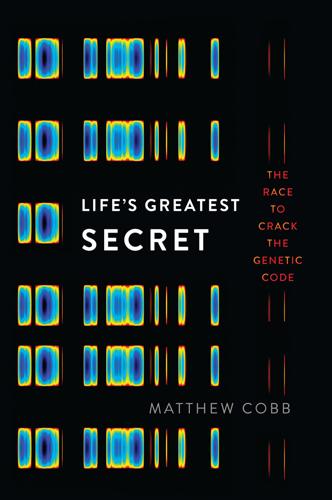
Life's Greatest Secret: The Race to Crack the Genetic Code
by
Matthew Cobb
Published 6 Jul 2015
* Although we generally describe the structure of DNA as a double helix, it is in fact a bit more complicated than this. Unlike a screw thread, which has a constant pitch or interval between each turn, the double helix has two different intervals, which alternate as the molecule spirals round. These are known as the major and minor grooves – the major groove, which is larger, tends to be the point at which DNA-binding proteins affect gene activity, as the sequence of bases is physically more accessible there. Above all, the DNA double helix spirals in only one direction – anticlockwise as seen from the top, or right-handed, like a normal screw.
…
Above all, the DNA double helix spirals in only one direction – anticlockwise as seen from the top, or right-handed, like a normal screw. It is easy to get confused about which way the double helix should spiral, and in many representations of DNA the molecule spirals the wrong way. In 1996 Tom Schneider began posting images of leftward spiralling double helices on his web site, but he was soon overwhelmed by the number of examples.15 I will not cast the first stone over mistaken representations of DNA – I once managed to put a wrong double helix on the side of a building: it was not even left-handed, it was geometrically impossible. The DNA double helix comes in several shapes. The two forms studied by Wilkins and Franklin – A-DNA and B-DNA – both have right-handed helices; B-DNA is the iconic version that exists in your cells, and A-DNA occurs under conditions of low humidity and can be found in organisms although its biological function (if any) is unclear.
…
In a process known as translation, tRNA molecules attached to an amino acid shuttle through the ribosome, bind with the mRNA codon and release their amino acid, thereby creating a protein chain. AUG FOREWORD In April 1953, Jim Watson and Francis Crick published a scientific paper in the journal Nature in which they described the double helix structure of DNA, the stuff that genes are made of. In a second article that appeared six weeks later, Watson and Crick put forward a hypothesis with regard to the function of the ‘bases’ – the four kinds of molecule that are spaced along each strand of the double helix and which bind the two strands together. They wrote: ‘it therefore seems likely that the precise sequence of the bases is the code which carries the genetical information.’
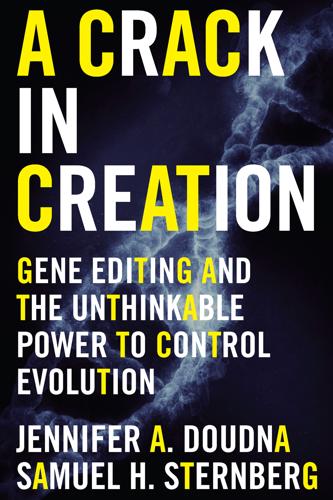
A Crack in Creation: Gene Editing and the Unthinkable Power to Control Evolution
by
Jennifer A. Doudna
and
Samuel H. Sternberg
Published 15 Mar 2017
These findings hinted at the vital role CRISPR RNA plays within the bacterial immune system—a role made possible by the basic functions of RNA itself. Since RNA is chemically so similar to DNA, it can create double helixes of its own by using base-pairing interactions, the same process that forms the famous double helix of DNA. Matching RNA strands can pair with each other, forming an RNA-RNA double helix, but a single strand of RNA can also pair with a matching single strand of DNA, forming an RNA-DNA double helix. This versatility, and the variety of different sequences found in CRISPR RNA, gave scientists an intriguing idea. It seemed possible that these CRISPR RNA molecules could single out both DNA and RNA molecules from invading phages for attack during an infection by pairing with any that they matched and initiating some sort of immune response in the cell.
…
See also therapeutics WHIM syndrome, 3–6, 14 X-linked recessive, 169 diseases, mitochondrial, 196 diversity, 233 DMD (Duchenne muscular dystrophy), 169–70 DMD gene, 169 DNA, 8, 9–15, 104–8 base pairs, 9 double helix, 9–11, 10 editing source code of, 22–26 mutations, 223 repair process, 92–93, 104–8 repeating sequences, 41–42, 43. See also CRISPR sequencing, 14–15 tactics for editing, 100 DNA, cutting, 27–30, 32, 33, 34, 47, 66 Cas proteins and, 65 Cas1 and, 64 by Cas9, 76–77, 79–81, 79, 91 crucial components for, 80 experiments, 78 programmable, 83 DNA, lab-made, 22 DNA, recombinant, 19, 201, 205, 207 DNA repair, 104–8 dogs, 143–44 Dolly (sheep), 191 double helix, 9–11, 10 double helix, DNA-RNA, 58, 79 double helix, RNA-RNA, 58 Double Helix, The (Watson), 10 double muscling, 130–32, 132, 133, 143 double-strand-break model, 27–29 Doudna, Jennifer American Society for Microbiology conference, 70–74 on animal models, 139–40 Caribou Biosciences, 66 Cas9.
…
After that, other enzymes build a new partner strand for each single strand simply by using the same base-pairing rules, resulting in two exact copies of the original double helix. My own introduction to the DNA double helix coincided with my discovery that scientists could learn about molecules that were too tiny to see with even the most powerful light microscopes. I came home from school one day when I was about twelve or so to find a tattered copy of James Watson’s The Double Helix lying on my bed. (My dad would occasionally pick up books for me at used bookstores to see if they sparked any interest.) Thinking this book was a detective novel—which it was!
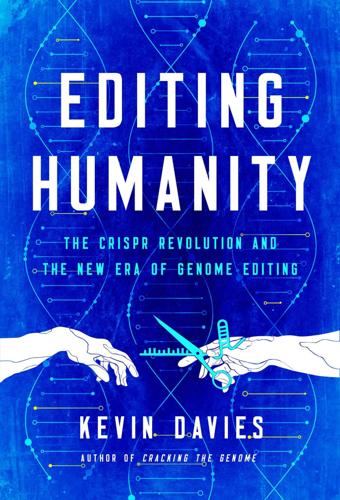
Editing Humanity: The CRISPR Revolution and the New Era of Genome Editing
by
Kevin Davies
Published 5 Oct 2020
A few weeks later, on April 25, 1953, the world—or at least Nature subscribers—got their first glimpse of the double helix. It was a family affair: the eight-hundred-word report was typed up by Watson’s sister Elizabeth, while the double helix was elegantly sketched by Crick’s wife, Odile. The report began with an immortal English understatement: We wish to suggest a structure for the salt of deoxyribonucleic acid (DNA). This structure has novel features which are of considerable biological interest.8 Word traveled slowly in those days. It took the New York Times six weeks before it saw fit to print a front-page story on the double helix. Watson and Crick published a follow-up paper in which they proposed that “the precise sequence of the bases is the code which carries the genetical information.”
…
And now here we are, humans, in a pandemic facing this challenge.”19 * * * As we contemplate the future of genome editing, I can’t help but think of the remarkable progress geneticists have made over the past fifty to seventy-five years, unraveling the secrets of the gene and the genome like the Cas enzyme unzipping the double helix. Francis Crick and Jim Watson’s classic 1953 letter to Nature consisted of eight hundred words and one diagram—a beautiful, elegant pencil drawing of the double helix courtesy of Crick’s wife Odile. CRISPR has given us the means to modify the DNA code as easily (almost) as a deft flick of Odile’s pencil eraser. Odile Crick was a professional painter with a penchant for nudes. She wasn’t as enamored with the double helix breakthrough as her husband. “You were always coming home and saying things like that, so naturally I thought nothing of it,” she recalled.
…
Watson, correspondence: Letter to Max Delbruck, March 12, 1953, http://scarc.library.oregonstate.edu/coll/pauling/dna/corr/corr432.1-watson-delbruck-19530312-transcript.html. 7. Brenda Maddox, “DNA’s double helix: 60 years since life’s deep molecular secret was discovered,” Guardian, February 22, 2013, https://www.theguardian.com/science/2013/feb/22/watson-crick-dna-60th-anniversary-double-helix. 8. J. D. Watson and F. H. C. Crick, “Molecular Structure of Nucleic Acids: A Structure for Deoxyribose Nucleic Acid,” Nature 171, (1953):737–738, http://dosequis.colorado.edu/Courses/MethodsLogic/papers/WatsonCrick1953.pdf. 9. Brenda Maddox, “DNA’s double helix: 60 years since life’s deep molecular secret was discovered,” Guardian, February 22, 2013, https://www.theguardian.com/science/2013/feb/22/watson-crick-dna-60th-anniversary-double-helix. 10.
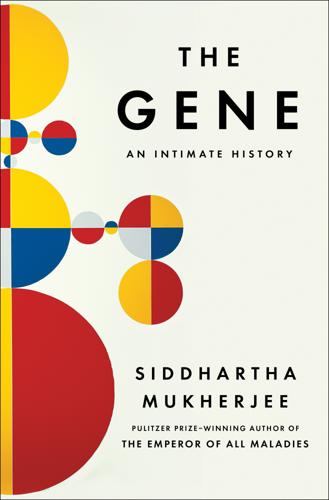
The Gene: An Intimate History
by
Siddhartha Mukherjee
Published 16 May 2016
No one knew or understood the chemical structure: Robert C. Olby, The Path to the Double Helix: The Discovery of DNA (New York: Dover Publications, 1994), 107. Swiss biochemist, Friedrich Miescher: George P. Sakalosky, Notio Nova: A New Idea (Pittsburgh, PA: Dorrance, 2014), 58. extremely “unsophisticated” structure: Olby, Path to the Double Helix, 89. “stupid molecule”: Garland Allen and Roy M. MacLeod, eds., Science, History and Social Activism: A Tribute to Everett Mendelsohn, vol. 228 (Dordrecht: Springer Science & Business Media, 2013), 92. “structure-determining, supporting substance”: Olby, Path to the Double Helix, 107. “primordial sea”: Richard Preston, Panic in Level 4: Cannibals, Killer Viruses, and Other Journies to the Edge of Science (New York: Random House, 2009), 96.
…
But he was vastly more interested in DNA and soon abandoned all other projects to focus on DNA. Watson, Annotated and Illustrated Double Helix, 127. “A youthful arrogance”: Crick, What Mad Pursuit, 64. “The trouble is, you see, that there is”: Watson, Annotated and Illustrated Double Helix, 107. Pauling’s seminal paper: L. Pauling, R. B. Corey, and H. R. Branson, “The structure of proteins: Two hydrogen-bonded helical configurations of the polypeptide chain,” Proceedings of the National Academy of Sciences 37, no. 4 (1951): 205–11. “product of common sense”: Watson, Annotated and Illustrated Double Helix, 44. “like trying to determine the structure of a piano”: http://www.diracdelta.co.uk/science/source/c/r/crick%20francis/source.html#.Vh8XlaJeGKI.
…
Corey, “A proposed structure for the nucleic acids,” Proceedings of the National Academy of Sciences 39, no. 2 (1953): 84–97. “V.Good. Wet Photo”: http://profiles.nlm.nih.gov/ps/access/KRBBJF.pdf. “important biological objects come in pairs”: Watson, Double Helix, 184. he would later write defensively: Anne Sayre, Rosalind Franklin & DNA (New York: W. W. Norton, 1975), 152. “Suddenly I became aware”: Watson, Annotated and Illustrated Double Helix, 207. “Upon his arrival”: Ibid., 208. “winged into the Eagle”: Ibid., 209. “We see it as a rather stubby double helix”: John Sulston and Georgina Ferry, The Common Thread: A Story of Science, Politics, Ethics, and the Human Genome (Washington, DC: Joseph Henry Press, 2002), 3.
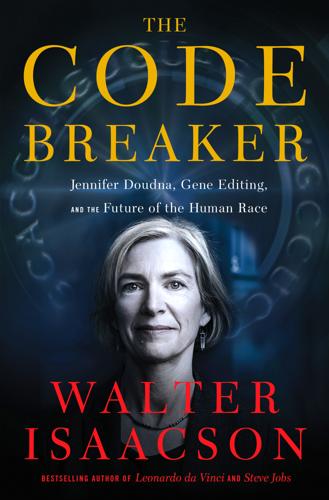
The Code Breaker: Jennifer Doudna, Gene Editing, and the Future of the Human Race
by
Walter Isaacson
Published 9 Mar 2021
James Watson’s The Double Helix Doudna’s father was a voracious reader who would check out a stack of books from the local library each Saturday and finish them by the following weekend. His favorite writers were Emerson and Thoreau, but as Jennifer was growing up he became more aware that the books he assigned to his class were mostly by men. So he added Doris Lessing, Anne Tyler, and Joan Didion to his syllabus. Often he would bring home a book, either from the library or the local secondhand bookstore, for her to read. And that is how a used paperback copy of James Watson’s The Double Helix ended up on her bed one day when she was in sixth grade, waiting for her when she got home from school.
…
“The book made me realize you could also hunt for the reasons why nature worked the way it did.” Doudna’s career would be shaped by the insight that is at the core of The Double Helix: the shape and structure of a chemical molecule determine what biological role it can play. It is an amazing revelation for those who are interested in uncovering the fundamental secrets of life. It is the way that chemistry—the study of how atoms bond to create molecules—becomes biology. In a larger sense, her career would also be shaped by the realization that she was right when she first saw The Double Helix on her bed and thought that it was one of those detective mysteries that she loved. “I have always loved mystery stories,” she noted years later.
…
I asked Fyodor whether the coronavirus had led him to ask his father, who now lives near him in Berkeley, about Defoe’s 1722 book, A Journal of the Plague Year. “Yes,” he said, “I’m going to get him to give me and our daughter who lives in Paris a Zoom lecture on the book.”2 Like Doudna, Urnov read Watson’s The Double Helix when he was about thirteen and decided to become a biologist. “Jennifer and I joke about the fact that we both read The Double Helix at about the same age,” he says. “For all of Watson’s shortcomings as a human being, which are substantial, he produced a ripping good yarn that makes the hunt for the mechanisms of life seem very exciting.” At eighteen, Urnov, a bit of a rebel, was drafted into the Soviet military and his head shaved.
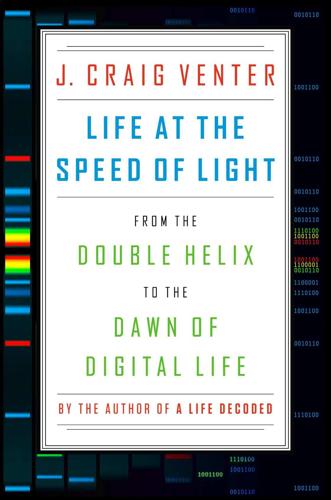
Life at the Speed of Light: From the Double Helix to the Dawn of Digital Life
by
J. Craig Venter
Published 16 Oct 2013
Schrödinger’s book motivated the American James Watson and Briton Francis Crick to seek that code-script, which ultimately led them to DNA and to discover the most beautiful structure in all biology, the double helix, within whose turns lay the secrets of all inheritance. Each strand of the double helix is complementary to the other, and they therefore run in opposite (anti-parallel) directions. As a result the double helix can unzip down the middle, and each side can serve as a pattern or template for the other, so that the DNA’s information can be copied and passed to progeny. On August 12, 1953, Crick sent Schrödinger a letter indicating as much, adding that “your term ‘aperiodic crystal’ is going to be a very apt one.”
…
Thank you for buying an authorized edition of this book and for complying with copyright laws by not reproducing, scanning, or distributing any part of it in any form without permission. You are supporting writers and allowing Penguin to continue to publish books for every reader. LIBRARY OF CONGRESS CATALOGING-IN-PUBLICATION DATA Venter, J. Craig. Life at the speed of light : from the double helix to the dawn of digital life / J. Craig Venter. pages cm Includes bibliographical references and index. ISBN 978-1-101-63802-6 1. Science—Social aspects. 2. Biology—Philosophy. 3. Artificial life. 4. Genomics. I. Title. Q175.5.V44 2013 303.48'3—dc23 2013017049 To the team that contributed to making the first synthetic cell a reality: Mikkel A.
…
For illustration, think of the Morse code. The two different signs of dot and dash in well-ordered groups of not more than four allow of thirty different specifications.”23 Even though von Neumann conceived his self-replicating automaton some years before the actual hereditary code in the DNA double helix was discovered, he did lay stress on its ability to evolve. He told the audience at his Hixon lecture that each instruction that the machine carried out was “roughly effecting the functions of a gene” and went on to describe how errors in the automaton “can exhibit certain typical traits which appear in connection with mutation, lethally as a rule, but with a possibility of continuing reproduction with a modification of traits.”
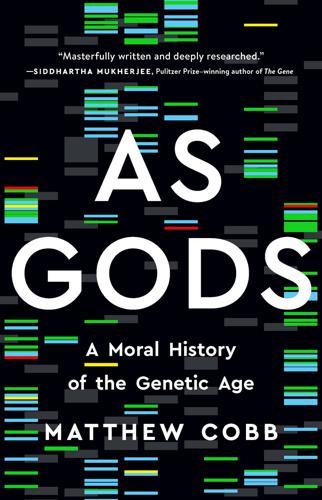
As Gods: A Moral History of the Genetic Age
by
Matthew Cobb
Published 15 Nov 2022
Roszak argued not only that the younger generation was opposed to science and technology, but also that scientific objectivity itself was an illusion.7 In what now looks like a profound contradiction, Roszak’s anti-science book nestled on young scientists’ shelves next to Jim Watson’s recent best-selling novelised account of the race to discover the structure of DNA, The Double Helix.i Watson’s book described events that occurred fifteen years previously but the breakthrough was only now bearing fruit. Furthermore, his lively first-hand descriptions of scientists and their sometimes base motivations seemed to capture the imagination of the young generation: although Watson’s scornful treatment of women, in particular his depiction of Rosalind Franklin, was straight out of the 1950s, The Double Helix made molecular biology seem modern, attractive, rule-breaking and sexy. These complex and contradictory cultural, political and psychological changes that were shaking the world had consequences for how genetic discoveries were viewed.
…
No new molecule was created and the group dispersed without pursuing the topic any further.22 Throughout 1971 and the first half of 1972, the Stanford researchers tried to solve the problem of getting two pieces of DNA to fuse together, using what were called ‘sticky ends’. Phage DNA is composed of the usual double helix, but at either end one of the strands sticks out an extra twelve bases.iii These twelve-base sequences at each end are complementary, meaning that the two ends can fuse together – the shape of the DNA molecule means that A can only bind with T and C can only bind with G. The result is a chain of viral double helixes, or even a circular molecule. These sticky ends would be used as pieces of molecular Velcro that would allow larger molecules to be assembled.
…
The best solution would be not to add a genetic instruction from the outside, as in recombinant DNA, but instead to simply rewrite the existing genes so that they make the cell do something else. This is the kind of stuff that is easy in fiction, but hard in reality. And yet that is basically where we are today. At the heart of this radical change has been the discovery of what happens in cells when the DNA double helix is broken. Damage to a single strand of the double helix is easy for the cell to repair – the sequence on the intact strand is used as a way of synthesising the required complementary bases. In the 1980s it was discovered that mammalian stem cells can respond to a double strand break by using the corresponding sequence on the other chromosome as a template to repair the missing bases.
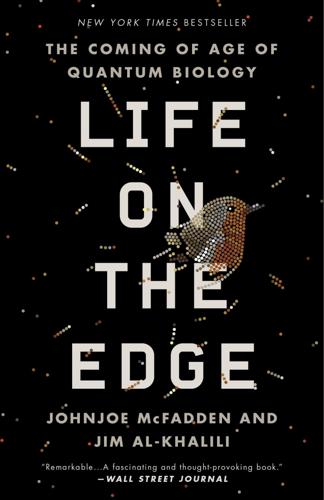
Life on the Edge: The Coming of Age of Quantum Biology
by
Johnjoe McFadden
and
Jim Al-Khalili
Published 14 Oct 2014
The two strands of the double helix with their complementary information are pulled apart to allow an enzyme called DNA polymerase access to each separated strand. The enzyme then attaches to a single strand and slides along the chain of nucleotides, reading each genetic letter and, with almost unerring accuracy, inserting a complementary base into the growing strand: whenever it sees an A it inserts a T, whenever it sees a G it inserts a C, and so on until it has made a complete complementary copy. The same process is repeated on the other strand, giving rise to two copies of the original double helix: one for each daughter cell.
…
Conventional chemistry, driven by those Boltzmann ball-like molecules, just didn’t seem capable of providing the means to store, copy and accurately transmit genetic information. The answer was famously provided in 1953 when James Watson and Francis Crick, working in the Cavendish Laboratory in Cambridge, managed to fit a remarkable structure to the experimental data obtained from DNA by their colleague Rosalind Franklin: the double helix. Each DNA strand was found to be a kind of molecular string made up of atoms of phosphorus, oxygen and a sugar called deoxyribose, with chemical structures called nucleotides*6 strung out like beads on that string. These nucleotide beads come in four varieties: adenine (A), guanine (G), cytosine (C) and thymine (T), so their arrangement along the DNA strand provides a one-dimensional sequence of genetic letters such as “GTCCATTGCCCGTATTACCG.”
…
And, as we will discover in chapter 7, identification of the double helical DNA strand also solved the problem of how genetic information is copied. At a stroke, two of the greatest mysteries of science had been solved. The discovery of the structure of DNA provided a mechanistic key that unlocked the mystery of genes. Genes are chemicals and chemistry is just thermodynamics; so did the discovery of the double helix finally bring life entirely into the realm of classical science? Life’s curious grin In Lewis Carroll’s Alice’s Adventures in Wonderland, the Cheshire cat has a habit of disappearing, leaving only his grin, prompting Alice to remark that she has “often seen a cat without a grin but never a grin without a cat.”
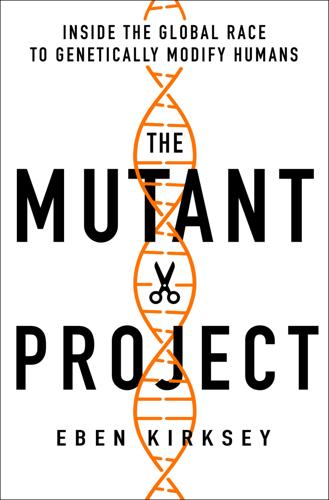
The Mutant Project: Inside the Global Race to Genetically Modify Humans
by
Eben Kirksey
Published 10 Nov 2020
TO LULU AND NANA THE MUTANT TIMELINE PAST 1818 Mary Shelley’s Frankenstein, the world’s first science fiction novel, depicts a young researcher who produces a creature with superhuman powers. 1869 Charles Darwin publishes On the Origin of Species. 1901 The Mutation Theory, by Hugo de Vries, introduces foundational ideas about genetic variation and evolutionary change. 1953 James Watson and Francis Crick claim to have discovered “the secret of life” with DNA’s double-helix structure, after sneaking a peek of an X-ray diffraction photograph taken by Rosalind Franklin. 1963 The X-Men debut in a Marvel Comics series as mutant superheroes fighting for equality and justice. 1978 The world’s first test-tube baby, Louise Brown, is born in England. 1987 CRISPR, or clustered regularly interspaced short palindromic repeats, is discovered by Yoshizumi Ishino in bacteria.
…
After the cells were grown in culture and studied for possible genetic damage, they were inserted—or transferred—back into the women’s wombs with a long flexible tube. Philosophically speaking, the birth of the first CRISPR babies was a profound moment for humanity. Scientists have been talking openly about altering the genes of human babies at least since the 1950s, when Watson and Crick described the DNA double helix. Hannah Arendt, the celebrated German thinker who narrowly escaped the Nazis, was one of the early critics who alerted the public about scientific enterprises aiming “to produce superior human beings.” Writing in 1958, as nuclear weapons proliferated and satellites were being launched into space, Arendt reported that scientists were striving “to create life in the test tube” and “mix germ plasm from people of demonstrated ability under the microscope.”
…
“Thinking of DNA as a language,” Roof argues, “implies that DNA is readable, translatable, writable, editable, and copyrightable, analogies that make DNA seem far more transparent, malleable, accessible, and ownable than it is.”5 Mixed metaphors were everywhere in the China National GeneBank, in displays oriented to nonscientists. Up on the wall a timeline gave an overview of historical landmarks in genetics and genomics that showed a trajectory from famous moments in science to BGI’s recent achievements: 1953 Watson and Crick describe the double helix structure of DNA. 1972 Rudimentary genetic engineering techniques are pioneered by Stanley Cohen and Herbert Boyer, enabling scientists to manipulate DNA. 1977 DNA sequencing methods are developed by Frederick Sanger, Allan Maxam, and Walter Gilbert, leading to the decoding of genes. 1982 GenBank, the first publicly accessible genetic sequence database, is established in the United States. 1999 Beijing Genomics Institute (BGI) is created to participate in the international Human Genome Project. 2003 The finished version of the first human genome sequence is completed. 2014 BGI’s first gene sequencing machine is given clearance by China’s FDA.
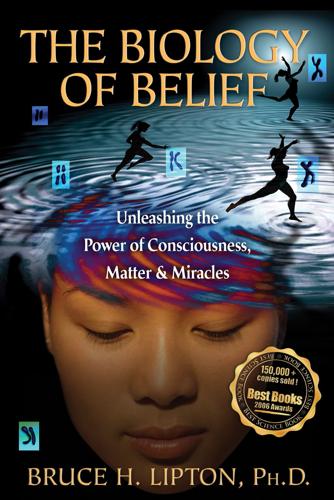
The Biology of Belief: Unleashing the Power of Consciousness, Matter & Miracles
by
Bruce H. Lipton
Published 1 Jan 2005
Watson and Crick also explained why DNA is the perfect hereditary molecule. Each DNA strand is normally intertwined with a second strand of DNA, a loosely wrapped configuration known as the “double helix.” The genius of this system is that the sequences of DNA bases on both strands are mirror images of each other. When the two strands of DNA unwind, each single strand contains the information to make an exact, complementary copy of itself. So through a process of separating the strands of a double helix, DNA molecules become self-replicating. This observation led to the assumption that DNA “controlled” its own replication … it was its own “boss.”
…
As I conjured up a biocomputer, I realized that the nucleus is simply a memory disk, a hard drive containing the DNA programs that encode the production of proteins. Let’s call it the Double Helix Memory Disk. In your home computer you can insert such a memory disk containing a large number of specialized programs like word processing, graphics, and spreadsheets. After you download those programs into active memory, you can remove the disk from the computer without interfering with the program that is running. When you remove the Double Helix Memory Disk by removing the nucleus, the work of the cellular protein machine goes on because the information that created the protein machine has already been downloaded.
…
That bit of insight set scientists off on a frenzied attempt to dissect life down to its molecular nuts and bolts, for within the structure of the cell was to be found the heredity mechanism that controlled life. The search came to a remarkable end fifty years ago when James Watson and Francis Crick described the structure and function of the DNA double helix, the material of which genes are made. Scientists finally figured out the nature of the “hereditary factors” that Darwin had written about in the 19th century. The tabloids heralded the brave new world of genetic engineering with its promise of designer babies and magic bullet medical treatments.
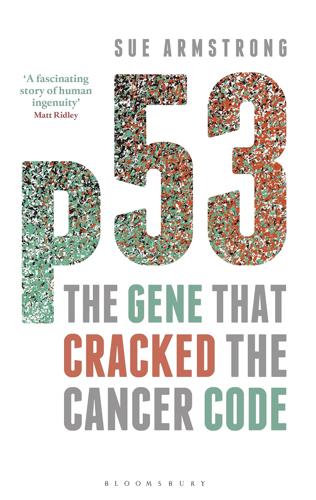
P53: The Gene That Cracked the Cancer Code
by
Sue Armstrong
Published 20 Nov 2014
Thus the genes which are carried on the chromosomes – not as discrete chunks of DNA but as segments along the continuous stand of genetic material – remain unseeable, and it is these scraps of information that carry the recipes for the proteins that the scientists are after. The famous corkscrew structure of DNA – the double helix discovered by James Watson and Francis Crick in 1953 – is made up of components called nucleotides, which stack one on top of the other like nano-sized blocks of Lego to form long chains. Each nucleotide, or block, has three components: a sugar molecule called a deoxyribose (the D in DNA), a phosphate group and a nitrogen ‘base’.
…
A subunit of the polymerase travels along behind, ‘proofreading’ the new DNA to see that it has been faithfully copied. Then an enzyme ‘glue’ called DNA ligase seals the fragments of copied DNA into a continuous double-sided strand that rewinds itself automatically. In the replicated DNA, one strand of the double helix will be from the original (known as the parent strand) and the other will be the new copy (known as the daughter strand). The cell is now ready to divide into two cells with equal shares of identical genetic material. This process, going on ceaselessly in billions of cells in our bodies as we repair and replace tissue and our hair and nails grow, is so efficient that mutations – mistakes that escape the proofreader – occur at the rate of about one in 109 nucleotides per replication.
…
This process, going on ceaselessly in billions of cells in our bodies as we repair and replace tissue and our hair and nails grow, is so efficient that mutations – mistakes that escape the proofreader – occur at the rate of about one in 109 nucleotides per replication. It’s interesting to note that this knowledge, this understanding of how the machinery of life works, is built on the foundations of Watson and Crick’s discovery of the structure of DNA. The double helix – the spiral staircase drawn originally for their paper in Nature by Crick’s wife Odile – remains one of the iconic images of 20th-century science. Yet when the paper announcing their discovery came out in 1953, it was noticed by hardly anyone beyond a small group of enormously brainy and ambitious scientists working in the same field – some of whom had been racing to make the discovery themselves first.
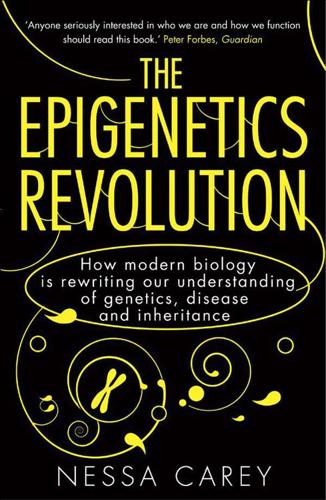
Epigenetics Revolution: How Modern Biology Is Rewriting Our Understanding of Genetics, Disease and Inheritance
by
Nessa Carey
Published 31 Aug 2011
There are always two backbones facing each other, like the two sides of the zip, and DNA is therefore referred to as double-stranded. The two sides of the zip are basically twisted around to form a spiral structure – the famous double helix. Figure 3.1 is a stylised representation of what the DNA double helix looks like. Figure 3.1 A schematic representation of DNA. The two backbones are twisted around each other to form a double helix. The helix is held together by chemical bonds between the bases in the centre of the molecule. The analogy will only get us so far, however, and that’s because the teeth of the DNA zip aren’t all equivalent.
…
Each daughter cell ends up with a new perfect copy of the DNA, in which one of the strands came from the original DNA molecule and the other was newly synthesised. Figure 3.2 The first stage in replication of DNA is the separation of the two strands of the double helix. The bases on each separated backbone act as the template for the creation of a new strand. This ensures that the two new double-stranded DNA molecules have exactly the same base sequence as the parent molecule. Each new double helix of DNA has one backbone that was originally part of the parent molecule (in black) and one freshly synthesised backbone (in white). Even in nature, in a system which has evolved over billions of years, nothing is perfect and occasionally the replication machinery makes a mistake.
…
In this situation, the pattern of DNA methylation is passed from mother cell to daughter cells. When the two strands of the DNA double helix separate, each gets copied using the base-pairing principle, as we saw in Chapter 3. Figure 4.2 illustrates what happens when this replication occurs in a region where the CpG is methylated on the C. Figure 4.2 This schematic shows how DNA methylation patterns can be preserved when DNA is replicated. The methyl group is represented by the black circle. Following separation of the parent DNA double helix in step 1, and replication of the DNA strands in step 2, the new strands are ‘checked’ by the DNA methyltransferase 1 (DNMT1) enzyme.
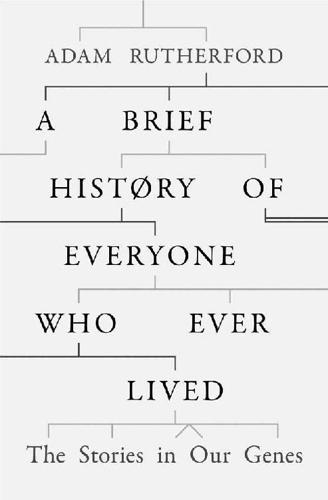
A Brief History of Everyone Who Ever Lived
by
Adam Rutherford
Published 7 Sep 2016
With his proposed theory of descent with modification in the distant future, light will be shed on our own story: to be continued. That time has come. There is now another way to read our pasts, and floodlights are being shone on our origins. You carry an epic poem in your cells. It’s an incomparable, sprawling, unique, meandering saga. About a decade ago, fifty years after the discovery of the double helix, our ability to read DNA had improved to the degree that it was transformed into a historical source, a text to pore over. Our genomes, genes and DNA house a record of the journey that life on Earth has taken – 4 billion years of error and trial that resulted in you. Your genome is the totality of your DNA, 3 billion letters of it, and due to the way it comes together – by the mysterious (from a biological point of view) business of sex – it is unique to you.
…
He had no mechanism for how that modification was passed from generation to generation. Since the end of the nineteenth century we’ve known the patterns by which characteristics are passed from parent to child. In the 1940s we discovered that DNA was the molecule that transmitted that information down the generations. Since 1953, we’ve known that the double helix is how DNA is built, giving it the impressive ability to copy itself and allow those copies to build cells just like the ones they came from. And since the 1960s we’ve known how DNA encodes proteins, and that all life is built of, or by, proteins. Those titans of science, Gregor Mendel, Francis Crick, James Watson, Rosalind Franklin and Maurice Wilkins, stood on their predecessors’ and colleagues’ shoulders, and would in turn be the giants from whose shoulders all biologists would see into the future.
…
Those titans of science, Gregor Mendel, Francis Crick, James Watson, Rosalind Franklin and Maurice Wilkins, stood on their predecessors’ and colleagues’ shoulders, and would in turn be the giants from whose shoulders all biologists would see into the future. The unravelling of these mysteries were the great science stories of the twentieth century, and by the beginning of the twenty-first the principles of biology were set in place. In cracking the universal genetic code, and unwinding the double helix, we had unveiled a set of simple rules of life. Yet they turned out to be profoundly complex, as we will soon see. But Darwin didn’t know any of that. When he published his second great work, The Descent of Man, in 1871, his primary concern was the question of whether man, like every other species, is descended from some pre-existing form . . .
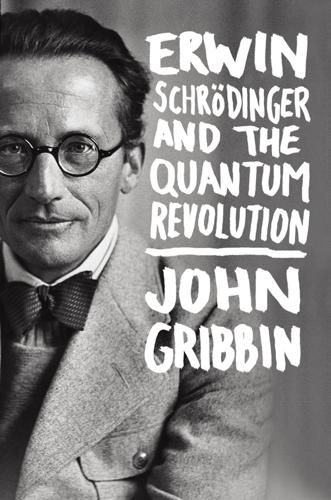
Erwin Schrodinger and the Quantum Revolution
by
John Gribbin
Published 1 Mar 2012
The cat in the box From Oxford with love Chapter Ten: There, and Back Again Whistling in the dark Reality bites The unhappy return Belgian interlude Chapter Eleven: “The Happiest Years of My Life” “Dev” Settling in Early days at the DIAS “Family” life in Dublin The post-war years Many worlds Chapter Twelve: What Is Life? Life itself Quantum chemistry The green pamphlet Schrödinger’s variation on the theme The double helix Chapter Thirteen: Back to Vienna Farewell to Dublin Home is the hero Declining years The triumph of entropy Chapter Fourteen: Schrödinger’s Scientific Legacy Hidden reality and a mathematician’s mistake The Bell test and the Aspect experiment Quantum cryptography and the “no cloning” theorem Quantum teleportation and classical information The quantum computer and the Multiverse Quantum physics and reality Postscript Sources and Further Reading Index Copyright © 2013 by Mary and John Gribbin.
…
He was a disciple of Arthur Schopenhauer, with a profound interest in philosophy and Eastern religion, particularly espousing the Hindu Vedanta and subscribing to the idea of a single cosmic consciousness of which we are all part. He studied colour vision, and wrote a book, What Is Life?, which Francis Crick and James Watson each independently cited as a major influence on the work which led them to the discovery of the DNA double helix. Schrödinger also addressed questions such as “What is a law of nature?” and whether or not the world is in principle completely deterministic and predictable. He wrote poetry (badly) and a book about the science and philosophy of ancient Greece. Schrödinger’s private life was no less interesting.
…
Strings of these four bases can convey information in what is usually called a code, but which I prefer to think of as a language, in the same way that the twenty-six letters of the alphabet are used in long strings to convey information in this book. But DNA molecules do not usually exist in isolation. They come in pairs, with one long molecule twined around its partner in the famous double helix arrangement. The two molecules in each helix are not identical, but are like mirror images of one another; everywhere one molecule has an A, its partner has a T; everywhere one molecule has a C, its partner has a G; everywhere one molecule has a G, its partner has a C; everywhere one molecule has a T, its partner has an A.
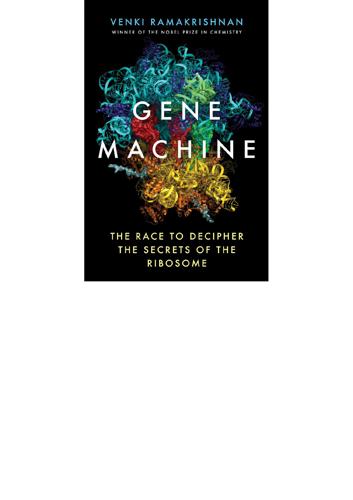
The Gene Machine
by
Venki Ramakrishnan
As the maps improved, we were able to find even weaker sites – ones that SOLVE couldn’t identify automatically – and throwing them into the calculations made the maps even better. Suddenly, a month after I had arrived in Cambridge, there it was: a long RNA double helix that ran right down the face of the 30S subunit. Unusually for me, it was fairly late, and I rushed out of the graphics room in the LMB and found Richard Henderson, who was famous for working late into the night. He agreed it looked like a double helix. Excitedly, I sent it off to Utah. I almost wished I could have been there when they saw it. Figure 11.1 An exciting moment – being able to see a clear RNA double helix, with little bumps for the phosphate groups on each strand Brian very quickly identified the outlines of the 30S and its characteristic shape in the map.
…
Matt Ridley, author of Genome and Francis Crick: Discoverer of the Genetic Code ‘An enchanting and invigorating work, Gene Machine casts a many-angled light on the world of science, the nature of discovery, and on one of the deepest mysteries of twentieth-century biology. Ramakrishnan, one of the key players in deciphering the molecular basis of protein translation, gives us both a rollicking scientific story and a profoundly human tale. In the tradition of The Double Helix, Gene Machine does not hesitate to highlight the process by which science advances: moving through fits and starts, often underscored by deep rivalries and contests, occasionally pitching towards error and misconception, but ultimately advancing towards profound and powerful truths. An outsider to the world of ribosome biology – an Indian immigrant, a physicist by training – Ramakrishnan retains his “outsider’s” vision throughout the text, reminding us about the corrosive nature of scientific prizes, and the intensity of competition that drives researchers (both ideas, I suspect, will have a munificent effect on our current scientific culture).
…
Siddhartha Mukherjee, author of The Emperor of All Maladies and The Gene ‘The ribosome is the central processor that decodes the universal machine-code of life, and the history of its unravelling is on a par with that of DNA itself. You could think of Venki Ramakrishnan as a sort of “nice Jim Watson”. His meticulously detailed and generous memoir has the same disarming frankness as The Double Helix. His personal honesty about the competitive ambition that drove him is tempered by his deeply thoughtful reflections on the potentially corrupting effect of big prizes. Gene Machine will be read and re-read as an important document in the history of science.’ Richard Dawkins ‘This exhilarating account of the race to understand the molecular machine that turns genes into flesh and blood is remarkable for its candid insights into the way science is really done, by human beings with all their talents and foibles.
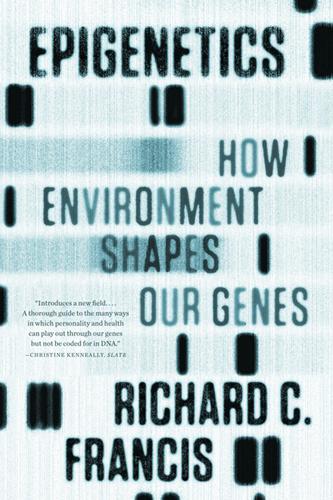
Epigenetics: How Environment Shapes Our Genes
by
Richard C. Francis
Published 14 May 2012
depression: in Dutch famine cohort gene mutation and maternal style and stress biasing and development cell division in cellular interactions in epigenesis theory of epigenetic processes in executive function in, see executive function feedback (reciprocal causation) in gene mutation and genetic-epigenetic program metaphor in preformationist theory of, see preformationism recipe/program metaphors in self-organizing processes in see also cellular differentiation developmental biology developmental genetics developmental origins hypothesis, see fetal programming developmental systems perspective devil facial tumor disease (DFTD) cellular stability of immune response and normalization and in tissue-based theory of cancer transmissibility of vaccine for diabetes: agouti alleles and in Dutch famine cohort gene mutation and genomic imprinting and GR expression and metabolic syndrome and stress biasing and diet, epigenetic inheritance and directorial intuition DNA base pairs in double helix structure of epigenetic modification of DNA histones and methylation of mutation of, x noncoding in protein synthesis DNA methyltransferases (Dnmt) dogs, cancer in donkeys dosage compensation see also X inactivation double helix Driesch, Hans Dutch famine multigenerational impact of Dutch Famine Birth Cohort Study birth weight in cardiovascular disease in diabetes in obesity in psychiatric disorders in timing of exposure as factor in egg cells, epigenetic attachments removed in production of egg fertilization embryonic cancers embryonic skin cells embryonic stem cells cancer and cellular interactions and controversy surrounding as pluripotent endocrine disruptors transgenerational effects of entelechy environment: epigenetic change as response to and epigenetic inheritance fetal, see fetal environment gene regulation effects of, as cell type-specific postnatal see also microenvironment, of cancer cells environmental toxins enzymes epialleles epigenesis epigenetic inheritance agouti locus and in Avy allele cancer and cardiovascular disease and diet and epigenetic reprogramming and olfaction and in plants randomness in RNA-based social inheritance as affected by epigenetic processes: asymmetry in cancer and definition of in gene regulation, see gene regulation, epigenetic as response to environment reversals of transgenerational, see transgenerational epigenetic processes and view of gene function in X inactivation epigenetic reprogramming epimutations epistasis erectile malfunctions, steroid abuse and estradiol estrogen receptors methylation of estrogens endocrine disruptor mimicking of evolutionary biology executive function: as residing in cells as residing in genes as residing in genome exons extracellular matrix eye color famine: epigenetic inheritance and see also Dutch famine; Dutch Famine Birth Cohort Study fast-food chains fat cells (adipose tissue): gene expression in melanin production in Faulkner, William fearfulness feedback (reciprocal causation) fertility drugs fertilization fetal development: IGF2 and maternal nutrition and fetal environment: epigenetic change as response to long-term health consequences of fetal environment mismatches between postnatal environment and nutrient availability in obesity and stress and true epigenetic inheritance and fetal programming fibroblast cells fight-or-flight response fish, effects of endocrine disruptors in folic acid autism and fruit flies fungicides FWA allele fwa mutation gene expression biparental vs. uniparental birth weight correlated with glucocorticoids and as inhibited by methylation monoallelic vs. biallelic mutation and, see mutation randomness and transcription factors in see also gene regulation gene regulation cancer and as cell type-specific executive function in, see executive function garden-variety (short-term) social interactions and gene regulation, epigenetic in development Driesch and as long-term methylation and, see methylation/demethylation microRNA and in plants as reversible stress biasing and war and Xist RNA and genes: activation of, see gene expression control panels of in executive cell view of gene regulation executive (traditional) view of imprinting control regions of inactive Janus metaphor of loci of methylation/demethylation of, see methylation/demethylation protein-coding sequence of traits as linked to see also alleles genetic background genetic code genetics: Mendelian modern, preformationism and genetic variation, immune response and genomic imprinting, see imprinting, genomic German army, in World War II glucocorticoid programming, see stress biasing glucocorticoid receptor gene, see GR gene glucocorticoid receptors (GR) glucocorticoid stress hormones glucose intolerance GnRH, see gonadotropin releasing hormone (GTRH) gonadotropin releasing hormone (GTRH) gonadotropins (GT) gonads genomic imprinting and melanin production in gorillas, socialization in GR gene methylation of growth: genomic imprinting and pathogen defense vs.
…
The term epigenetic refers to long-term alterations of DNA that don’t involve changes in the DNA sequence itself. Either Al’s DNA was epigenetically altered in a way that meliorated his Kallmann syndrome, or Bo’s DNA was epigenetically altered in a way that exacerbated it. The naked gene consists of DNA in the form of the famous double helix. The genes in our cells are rarely naked, however. They are, rather, clothed in a variety of other organic molecules that are chemically attached. What makes these chemical attachments important is that they can alter the behavior of the genes to which they are attached; they can cause genes to be more or less active.
…
But proteins come in multitudinous varieties while all DNA seemed similar. How then, were all of these proteins made from seemingly unvarying DNA? To answer this question, scientists had to take a closer look at DNA. It was discovered that the DNA molecule generally has two strands that coil in a helical fashion, the double helix. The “D” in DNA stands for the sugar deoxyribose (NA = nucleic acid). The deoxyribose sugar groups, each separated by a phosphate molecule, comprise the backbone of the DNA molecule. Attached to each sugar is a chemical called a base (as in basic, as opposed to acidic). The bases come in four varieties—adenine, cytosine, guanine, and thymine—which are generally denoted by their first letter: A, C, G, and T, respectively.
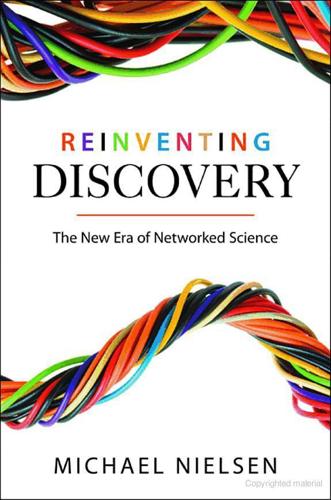
Reinventing Discovery: The New Era of Networked Science
by
Michael Nielsen
Published 2 Oct 2011
Those strands of DNA carry information, and the information they carry is the design for you. To understand how DNA carries this information, recall the double helix structure of DNA. The helices are beautiful and memorable, but the information isn’t stored in the helices, per se. Rather, it is stored in between the helices. Every few nanometers as you move up the double helix there is a pair of molecules joining the two sides of the helix, called a base pair. It’s a pair of special little mini-molecules that bond to one another, and to the backbones of the double helix. There are four types of base molecule, called adenine, cytosine, guanine, and thymine. Their names are usually just shortened to A, C, G, and T.
…
To their astonishment, they quickly realized that Pauling was wrong: the world’s greatest chemist had made a simple mistake in basic chemistry, a mistake his own textbooks should have alerted him to. Watson and Crick went back to their work with renewed intensity, and soon after found the right structure. When that happened it didn’t matter that Pauling was world famous while Watson, Crick, and Franklin were unknowns. The scientific community rejected Pauling’s work, and hailed the double helix as one of the scientific discoveries of the century. The examples of Einstein and of Watson, Crick, and Franklin illustrate the strength of the shared praxis in science. To an extent unusual in many parts of life, in science it’s often the person with the best evidence and best arguments who wins out, and not the person with the biggest reputation and the most power.
…
p 79: Regarding the rapid acceptance of Einstein’s ideas, it helped that leading scientists such as Lorentz and Poincaré arrived at similar conclusions at about the same time. But although Einstein’s formulation of relativity was even more radical than the formulations of Lorentz and Poincaré, it quickly became accepted as the correct way to think about relativity. p 79: On the discovery of DNA, and Pauling’s error, see Watson’s memoir, The Double Helix [234]. p 80 “If Feynman says it three times, it’s right”: [72]. p 84: My thanks to Mark Tovey for help constructing this example on optical illusions and cognitive science. p 85: On collaboration markets, see also [246] and [146]. p 85: The discussion of topological quantum computes is inspired by [22].
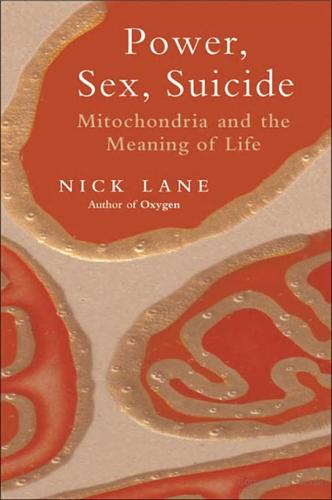
Power, Sex, Suicide: Mitochondria and the Meaning of Life
by
Nick Lane
Published 14 Oct 2005
When he discovered the structure of DNA, Francis Crick immediately understood how genetic inheritance works, announcing in the pub that evening that he understood the secret of life. DNA is a template, both for itself and for proteins. The two entwined strands of the double helix each act as a template for the other, so that when they are prized apart, during cell division, each strand provides the information necessary for reconstituting the full double helix, giving two identical copies. The information encoded in DNA spells out the molecular structure of proteins. This, said Crick, is the ‘central dogma’ of all biology: genes code for proteins. The long ticker tape of DNA is a seemingly endless sequence of just four molecular ‘letters’, just as all our words, all our books, are a sequence of only 26 letters.
…
Information is encoded in the genes, which spell out the instructions for building proteins, cells, and bodies. The double helix of DNA, the stuff of genes, is an icon of our information age, and the discoverers of its structure, Watson and Crick, are household names. The reasons for this status are a mixture of the personal, the practical, and the symbolic. Crick and Watson were brilliant and flamboyant, and unveiled the structure of DNA with the aplomb of conjurors. Watson’s famous book narrating the discovery, The Double Helix, defined a generation and changed the way that science is perceived by the general public; and he has been an outspoken and passionate advocate of genetic research ever since.
…
At one time, his research was funded in part by the proceeds from a herd of dairy cows, and he even won a prize for the quality of his cream. His writings did not compete with Watson’s Double Helix—besides the usual run of dry academic papers (even more obscure than usual in Mitchell’s own case), he expounded his theories in two ‘little grey books’, published privately and circulated among a few interested professionals. His ideas can’t be encapsulated in a visually arresting emblem like the double helix, redolent of the standing of science in society. Yet Mitchell was largely responsible for articulating and proving one of the very greatest insights in biology, a genuine and bizarre revolution that overturned long-cherished ideas.
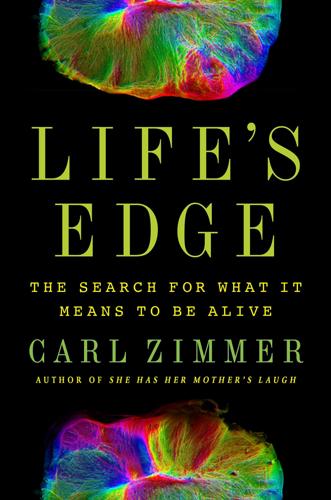
Life's Edge: The Search for What It Means to Be Alive
by
Carl Zimmer
Published 9 Mar 2021
(Franklin could not be considered for the award because she died of cancer in 1958.) But the molecule only penetrated pop culture when Watson published a best-selling account of the discovery in 1968, The Double Helix. In its pages he reprinted a photograph taken of himself and Crick shortly after their paper came out in Nature. The two scientists posed in their Cavendish lab next to a man-sized model of the double helix they had built from rods and plates and screws. Watson looked on as Crick pointed to a twist in the backbones with a slide rule. That photograph came to represent the turning point in our modern conception of life.
…
And the picture also does a disservice to Crick’s memory. It traps him in the frame with the double helix, as if that were his sole accomplishment. But Crick went on to do work that proved to be just as profound: he joined forces with an international network of scientists to figure out the rules by which cells translate the information in genes into the structure of proteins. They named the rules the genetic code. No one photographed Crick pointing a slide rule at the code. Yet its discovery was arguably just as important as that of the double helix. Genes and proteins, Crick recognized, are spelled out in different alphabets.
…
On the day that Crick and Watson realized they had worked out the structure of DNA, they marched to a nearby pub to celebrate their breakthrough. Crick shouted that they had “found the secret of life.” It was a cry of victory in his war against the vitalists. Along with Franklin and their other colleagues, they wrote up their results, and the batch of papers appeared in Nature on April 25, 1953, laying out the double-helix model and the evidence for it. When the New York Times interviewed Crick, he said that, for now, the idea “simply smells right.” In August Crick sent reprints to Schrödinger in Dublin, with a short note: “You will see that it looks as though your term ‘aperiodic crystal’ is going to be a very apt one
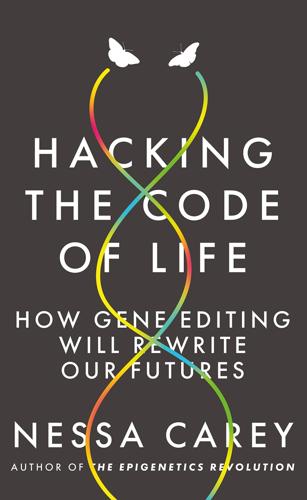
Hacking the Code of Life: How Gene Editing Will Rewrite Our Futures
by
Nessa Carey
Published 7 Mar 2019
Most of the time this will be impossible, but if the guide finds a region where its own sequence of letters is the same as that in the DNA, the guide molecule pushes its way into the double helix. It’s easy to use our knowledge of the genome to create a guide molecule that will bind to only one DNA sequence, for example a mutation that leads to a disease. The guide molecule is now in position where we want it, and the targeting phase of gene editing is complete. This relies on the second component which is a protein that can act like a pair of molecular scissors, cutting across the DNA double helix. These scissors don’t cut randomly; they don’t just flail across the genome. Instead, they only cut where the guide molecule has inserted itself into the DNA.
…
Astonishingly, he never received the Nobel Prize for his work. After that, the pace picked up. Less than ten years after Avery’s paper, the brash British scientist Francis Crick and his even brasher American colleague James Watson announced that they had solved the riddle of the structure of DNA. Their famous double helix model relied heavily on data generated by Rosalind Franklin, who worked in a department at King’s College London headed by Maurice Wilkins. The Nobel Prize followed quickly on this occasion, and was awarded to the three men in 1962. Rosalind Franklin had died from ovarian cancer at the heart-breakingly early age of 37 in 1958 and the Nobel Prize is never awarded posthumously.
…
In its original version it basically used the protocols and materials created by Charpentier and Doudna, relying on just two main foreign components. One of those two components is called the guide molecule. It’s made from a molecule called RNA, which is related to DNA. Like DNA, it is composed of four letters. Unlike DNA, it’s single-stranded whereas DNA is double-stranded. Where DNA forms the iconic double helix, composed of two strands of DNA letters binding to each other, RNA is a singleton. There’s only one strand and this is an important factor in its activity in gene editing. Let’s imagine DNA as a giant zip, where each tooth is one of the four letters of the genetic code. During gene editing, the guide RNA molecule slides along the giant zip, trying to force its way in between the teeth.
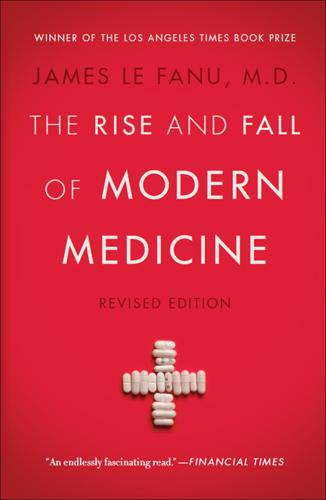
The Rise and Fall of Modern Medicine
by
M. D. James le Fanu M. D.
Published 1 Jan 1999
It might seem pointless to enquire why this might be so, but the explanation must lie at least in part in the simple elegance of the two intertwining strands of the double helix, which for so long has held out the promise that it might be possible to understand ‘the secret of life’. That simple elegance cannot be because the double helix is simple, but because it has to be simple, if it is to copy the genetic material every time the cell divides.24 And that obligation to be simple requires the double helix to condense within the one-dimensional sequence of the CGAT chemicals of the genes strung out along the two intertwining strands the billion-fold biological complexities of the three-dimensional forms and attributes that so readily distinguish one form of life from another – flies from worms from frogs from humans.
…
The only way to try and come to a balanced judgement is to trace the evolution of the principal ideas over the last twenty-five years and then examine the record of its three practical applications to medicine: Genetic Engineering as a method of developing new drugs; Genetic Screening as a means of eradicating inherited disease; and Gene Therapy for the correction of genetic defects. We begin with a preamble describing how the genes work, elucidated for greater clarity by reference to the schematic diagram on page 314. This starts in 1953, when James Watson and Francis Crick famously discovered the structure of DNA to be a spiral staircase (or double helix).2 The two outer ‘banisters’ of the staircase are made up of two strands of sugar molecules – Deoxyribose – from each of which is suspended a parallel series of four types of molecule known as Nucleic Acids – Adenine, Guanine, Cytosine and Thymine (referred to by their initials AGCT) – arranged in sequence.
…
The profound significance of this ‘staircase structure’ is that it is particularly well suited to the replication of genetic information every time the cell divides, as Watson and Crick described: We imagine that, prior to duplication, the bonds [connecting the two parallel chains of nucleic acids or ‘nucleotides’] are broken and the two chains unwind and separate [the staircase, as it were, splits down the middle]. Each chain then acts as a template for the formation on to itself of a new companion chain, so that eventually we shall have two pairs of chains where we only had one before. Moreover the sequence of the pairs of nucleotides will have been duplicated exactly.3 The double helix of DNA consists of two parallel strands of deoxyribose sugar molecules, to which are attached a sequence of nucleotides – AGCT – arranged in threes. The genetic instruction for a protein is conveyed by a strand of messenger RNA (mRNA) that passes out of the nucleus into the cytoplasm, where it feeds its coded instructions into a ribosome or protein factory.

Immortality, Inc.
by
Chip Walter
Published 7 Jan 2020
The Genome War: How Craig Venter Tried to Capture the Code of Life and Save the World. Alfred A. Knopf, 2004. Smith Hughes, Sally. Genentech: The Beginnings of Biotech. University of Chicago Press, 2011. Venter, J. Craig. A Life Decoded: My Genome: My Life, Penguin Books, 2008. ———. Life at the Speed of Light: From the Double Helix to the Dawn of Digital Life. Penguin Books, 2014. Watson, James D. The Double Helix: A Personal Account of the Discovery of the Structure of DNA. Atheneum, 1968. Watson, James D., Andrew James Berry, and Kevin Davies. DNA: The Story of the Genetic Revolution. Alfred A. Knopf, 2017. Weiner, Jonathan. Long for This World: The Strange Science of Immortality.
…
Since then, Watson had grown to become one of those statesman-scientists that often emerge after winning Nobels. He taught at Harvard and ran the legendary Cold Spring Harbor Laboratory. In 1965, he literally wrote the book on genetics, Molecular Biology of the Gene, which he followed three years later with one of the best-selling science books ever, The Double Helix. It had taken 10 years of excruciating labor before Venter had finally nailed down an understanding of one stubborn protein—the adrenaline gene—and he knew as well as anyone that discovering the other hundreds of thousands out there was going to take a very long time. But he didn’t have time for progress that glacial.
…
It was the genome that made one’s face possible, did it not? But it was one thing to know there was a needle in the haystack, and quite another to actually find it. Sabatini and his wizards had done that. Did someone say this would take 10 years? The team did it in eight months! They had extracted precisely the right nuggets of data from the double helix needed to form the picture of a real and accurate face. And they had done it by turning molecules into digits. That was really the purpose of Venter’s Face Project: to provide a test case that revealed how artificial intelligence—or, as some put it, machine learning—could extract the revelations hidden within every human genome.
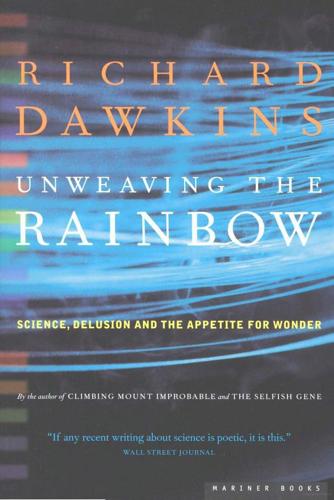
Unweaving the Rainbow
by
Richard Dawkins
Published 7 Aug 2011
Sophisticated theologians who do not literally believe in the Virgin Birth, the Six Day Creation, the Miracles, the Transubstantiation or the Easter Resurrection are nevertheless fond of dreaming up what these events might symbolically mean. It is as if the double helix model of DNA were one day to be disproved and scientists, instead of accepting that they had simply got it wrong, sought desperately for a symbolic meaning so deep as to transcend mere factual refutation. 'Of course,' one can hear them saying, 'we don't literally believe factually in the double helix any more. That would indeed be crudely simplistic. It was a story that was right for its own time, but we've moved on. Today, the double helix has a new meaning for us. The compatibility of guanine with cytosine, the glove-like fit of adenine with thymine, and especially the intimate mutual twining of the left spiral around the right, all speak to us of loving, caring, nurturing relationships...'
…
The compatibility of guanine with cytosine, the glove-like fit of adenine with thymine, and especially the intimate mutual twining of the left spiral around the right, all speak to us of loving, caring, nurturing relationships...' Well, I'd be surprised if it quite came to that, and not only because the double helix model is now very unlikely to be disproved. But in science, as in any other field, there really are dangers of becoming intoxicated by symbolism, by meaningless resemblances, and led farther and farther from the truth, rather than towards it. Steven Pinker reports that he is troubled by correspondents who have discovered that everything in the universe comes in threes: the Father, the Son, and the Holy Ghost; protons, neutrons and electrons; masculine, feminine and neuter; Huey, Dewey, and Louie; and so on, for page after page.
…
Gould is aware of the difference between rapid gradualism and macromutation, but he treats the matter as though it were a minor detail, to be cleared up after we have taken on board the overarching question of whether evolution is episodic rather than gradual. One can see it as overarching only if one is intoxicated by bad poetry. It makes as little sense as my correspondent's question about the DNA double helix and whether it 'comes from' the earth's orbit. Once again, rapid gradualism no more resembles macromutation than a bleeding wizard resembles a shower of rain. Even worse is to claim catastrophism under the same punctuationist umbrella. In pre-Darwinian times the existence of fossils became increasingly embarrassing for upholders of biblical creation.
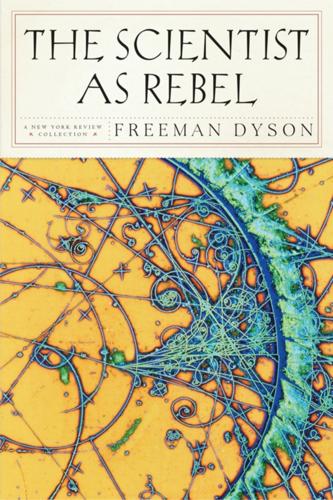
The Scientist as Rebel
by
Freeman Dyson
Published 1 Jan 2006
But in history as Crick experienced it, the two helixes were not equal. The double helix became the driving force of a new science, while the triple helix remained a footnote of interest only to specialists. Crick asks the question, how the different fates of the two helixes are to be explained. He answers the question by saying that human and social influences cannot explain the difference, that only the transcendent beauty of the double-helix structure and its genetic function can explain the difference. Nature herself, and not the scientist, decided what was important. In the history of the double helix, transcendence was real. Crick gives himself the credit for choosing an important problem to work on, but, he says, only Nature herself could tell how transcendentally important it would turn out to be.
…
In the 1930s he mastered the art of mapping the structure of large molecules by means of X-rays. He understood that this art would be the key to the understanding of the physical basis of life. His pioneering work led directly to the discovery of the double helix in 1953. Rosalind Franklin, who took the crucial X-ray pictures of DNA that showed the helical structure, was working in Bernal’s laboratory in London. In the 1968 foreword to his book, Bernal speaks of the double helix as “the greatest and most comprehensive idea in all science.” As a result of this discovery, we understand the basic principles by which living cells organize and reproduce themselves.
…
He has recently published his personal narrative of the microbiological revolution that he helped to bring about, with a title borrowed from Keats, What Mad Pursuit. One of the most illuminating passages in his account compares two discoveries in which he was involved. One was the discovery of the double-helix structure of DNA, the other was the discovery of the triple-helix structure of the collagen molecule. Both molecules are biologically important, DNA being the carrier of genetic information, collagen being the protein that holds human bodies together. The two discoveries involved similar scientific techniques and aroused similar competitive passions in the scientists racing to be the first to find the structure.

The Cancer Chronicles: Unlocking Medicine's Deepest Mystery
by
George Johnson
Published 26 Aug 2013
…A curious law of nature … Contemplating the odds CHAPTER 2 Nancy’s Story Food pyramidology … Pascal’s wager … Folates, antioxidants, and Finnish smokers … Fruits, vegetables, and giant steaks … Carcinogenic estrogen … The real risks of cigarettes … Emanations from the earth … Cancer clusters … A worrisome lump … Nancy’s cancer CHAPTER 3 The Consolations of Anthropology In the boneyards of Kenya … Face-to-face with Kanam man…Palaeo-Oncology…Hippocrates and the crabs … The wild beast of cancer … Metastasis in a Scythian king … Skeletons and mummies … Visions of an ancient paradise … Counting up the dead CHAPTER 4 Invasion of the Body Snatchers “Large and beautifully pellucid cells”…Morbid juices … Seeds and soil … The mysteries of metastasis … A horrifying precision … The ebb and flow of lymph … The surgeon’s diagnosis … Weeds from outer space CHAPTER 5 Information Sickness Man-made mutations … Funny-looking chromosomes…“A new kind of cell”…Matter that comes alive … The Radium Girls … Coal tar and tumors … Viral invaders … Oncogenes and tumor suppressors … Cellular suicide … Intimations of immortality … A conspiracy of cells CHAPTER 6 “How Heart Cells Embrace Their Fate” Embryos and tumors … Snail, slug, and twist … Sonic hedgehog … the Pokémon gene … Cyclopean sheep … Holoprosencephaly … 1 + 1 = 3 … Prayers of an agnostic … An endless day at the hospital CHAPTER 7 Where Cancer Really Comes From The surprising aftermath of Love Canal … What “environment” really means…“The Causes of Cancer”…An environmental turncoat … The carcinogens in coffee … Mitogenesis and mutagenesis … Making sense of the cancer statistics … A maverick presidential report CHAPTER 8 “Adriamycin and Posole for Christmas Eve” Cancer cells and magnets … The penicillin of cancer … A rare kind of malignancy … Disheartening statistics…“The Median Isn’t the Message”…Flying farolitos … A visit to MD Anderson … Rothko’s brooding chapel CHAPTER 9 Deeper into the Cancer Cell A physics of cancer … Epigenetic software … The stem cell conundrum … An enormous meeting in Orlando … Espresso and angiogenesis … The news from Oz.…Communing with the microbiome … Beyond the double helix … Dancing at the Cancer Ball CHAPTER 10 The Metabolic Mess Chimney sweeps and nuns … A “mysterious sympathy”…The case of the missing carcinogens … The rise and fall of vegetables … A mammoth investigation … The insulin-obesity connection…“Wounds that do not heal”…A hundred pounds of sugar … Skewing the energy equation CHAPTER 11 Gambling with Radiation Flunking the radon test … A ubiquitous carcinogen … Down in the uranium mines … Tourism at Chernobyl … Hiroshima and Nagasaki … Exhuming Curie’s grave … A pocketful of radium … Robot oncologists … Relay for Life CHAPTER 12 The Immortal Demon A flight to Boston … Stand Up to Cancer … A tale of two cousins … The return of the hedgehog … Where weird drug names come from … Waiting for super trastuzumab … Orphaned cancers … Biological game theory … Contagious cancer CHAPTER 13 Beware the Echthroi On Microwave Mountain … Cell phones and brain waves … Is cancer here “on purpose”?
…
The signal becomes noise or is silenced altogether. That kind of clarity would come decades later with the discoveries of Oswald Avery in 1944, Alfred Hershey and Martha Chase in 1952, and a year later when James Watson and Francis Crick cobbled together from cardboard, sheet metal, and wire their model of the double helix. For now Muller’s contribution was to show that whatever genes were made of and however they worked, you didn’t have to wait for mutations to occur. They could be produced at will by exposing the flies to x-rays. Most often the mutations sterilized the flies or killed them. That, he speculated, might explain why the rays were so effective at destroying rapidly dividing cancer cells—a therapy that had come into use almost as soon as x-rays were first produced in the laboratory of Wilhelm Röntgen in 1895.
…
If a cell is damaged and dividing too quickly, external sensors will pick up warning signals from crowded neighbors. Internal sensors will detect chemical imbalances or broken DNA. With an emergency declared, p53 will step in and slow down the clock so that DNA repair can take place. Proofreading enzymes scan the genome. If one strand of DNA’s double helix has been corrupted, the other strand can be used as a template to guide repair. Damaged sections can be excised, a replacement synthesized and put into place. If DNA repair is broken and other measures cannot save a cell that is mutating beyond control, p53 initiates programmed cell death, or apoptosis.
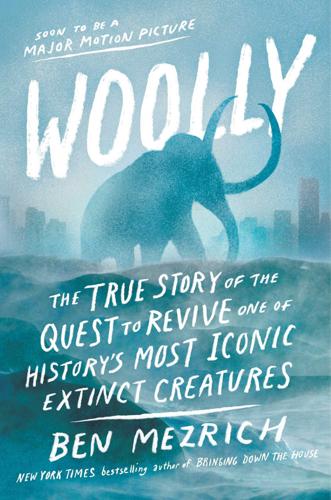
Woolly: The True Story of the Quest to Revive History's Most Iconic Extinct Creature
by
Ben Mezrich
Published 3 Jul 2017
By the end of his second year, his teachers recognized that he was different, and, eventually, they gave him keys to the various labs, so he could conduct his independent projects on his own. At Andover, he first discovered the world of genetics. He was fascinated by the fact that every living cell had within it a genomic code—a double helix of DNA made up of bases of chemical molecules attached together like rungs on a ladder. And that ladder comprised coding for everything, from eye color to the length of fingers and toes. At the time, the study of genetics was in its infancy, and it was the dirty stepchild of the biological field.
…
It was just sexy enough to get him the post, but what he truly wanted to work on was sequencing—coming up with ways to read genetic material fast, better, and cheaper. At the time, the art of reading genomes was just being developed, although James D. Watson and Francis Crick had discovered and defined the double helix structure of DNA as far back as 1953. It was now well known that genetic material is formed by billions of organic molecules called nucleotides (the basic units of nucleic acid that make up DNA and RNA). These are arranged in sequences that create the genome, which is carried by every living cell in every living organism, and in which all traits are coded.
…
With high school students, he started with the basics. Every cell in every living creature contained a copy of the creature’s genome—the double strands of DNA, made up of billions of base pairs of molecules, that coded for every trait or characteristic that made the creature what it was. Those double strands, known as the double helix, the discovery made by James Watson, Francis Crick, and Rosalind Franklin in the fifties, were connected in pairs of chemical bases: the chemical adenine paired with thymine (A-T) and the chemical cytosine paired with guanine (C-G). Simple bacteria had developed a natural system to protect their own genomes—their double strands of DNA—from attacks by viruses.

As the Future Catches You: How Genomics & Other Forces Are Changing Your Work, Health & Wealth
by
Juan Enriquez
Published 15 Feb 2001
Things are moving too fast … And they are too passionate about what they do … To spend a lot of time giving speeches and interviews. But if you go into the bowels of Harvard Medical School … And are able to find the genetics department inside the Warren Alpert Building … (A significant test of intelligence in and of itself … Start by finding the staircase inspired by the double helix … and go past the bathrooms marked XX and XY …) There you can find a small den where George Church hangs out, surrounded by computers. He seems like a large teddy bear … Often hiding his extraordinary brain behind a quiet grin, a beard, and a self-effacing manner. This is ground zero for a wonderful commune of engineers, physicists, molecular biologists, and physicians …3 And some of the world’s smartest graduate students … Who are trying to make sense of the 100 terabytes of data that come out of gene labs yearly … A task equivalent to trying to sort and use a million new encyclopedias … every year.4 You can’t build enough “wet” labs (labs full of beakers, cells, chemicals, refrigerators) to process and investigate all the opportunities this scale of data generates.
…
The article concludes with one of the great understatements in the history of science: “It has not escaped our notice that the specific pairing we have postulated immediately suggests a possible copying mechanism for the genetic material.” You can read the original paper: http://biocrs.biomed.brown.edu/Books/Chapters/Ch%208/DH-Paper.html. You might also want to look at Watson’s opinionated, short, and controversial The Double Helix (New York: Atheneum, 1968). 9. Time set up a fun page that profiles their picks for the top 100 scientists: www. time.com/time/time100/scientist/index.html. 10. And when you want to translate gene code into proteins, you have to be even more careful. Careless translations bring many pitfalls.
…
The International Human Genome Sequencing Consortium also matched this extraordinary achievement with a different version of the genome published the same week: see Nature 409 (2001) … Got a lot of time on your hands and want to play Where’s Waldo? Take a look at the hundreds of photographs that form the double helix on the cover of Nature and find the one of Watson and Crick. 12. Reported in The New York Times based on data from Dr. Mani Subramanian from Celera. Chart does not include 5.1 percent miscellaneous genes. 13. The experiments occurred during 1998 and 1999 but were not reported until February 2001 out of fear that rogue states might use the data to create a vaccine-resistant smallpox.
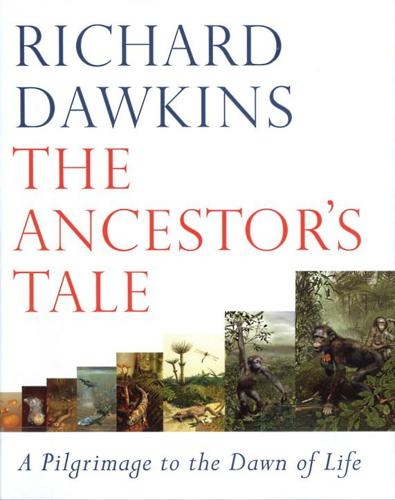
The Ancestor's Tale: A Pilgrimage to the Dawn of Evolution
by
Richard Dawkins
Published 1 Jan 2004
RNA has some of the virtues of DNA as a replicator and some of the virtues of protein as a versatile shaper of enzymes. The four letters of RNA are sufficiently similar to the four letters of DNA that either set can serve as a template for the other. On the other hand, RNA does not easily form a long double helix, which means that it is somewhat inferior to DNA as a replicator. This is partly because the double helix system lends itself to proof-correction. When the DNA double helix splits and each single helix immediately serves as a template for its complement, errors can instantly be spotted, and corrected. Each daughter chain remains attached to its 'parent', and comparison between the two permits instant error detection.
…
Unlike DNA and RNA, whose component elements have specific pairing rules (the 'Watson-Crick pairing rules' discovered by those two inspired young men), amino acids have no such rules. DNA, by contrast, is a splendid replicator but a lousy candidate for the enzyme role in life. This is because, unlike proteins with their near infinite variety of three-dimensional shapes, DNA has only one shape, the famous double helix itself. The double helix is ideally suited to replication because the two sides of the stairway peel easily away from one another, each being then exposed as a template for new letters to join, following the Watson-Crick pairing rules. It is not much good for anything else. RNA has some of the virtues of DNA as a replicator and some of the virtues of protein as a versatile shaper of enzymes.
…
RNA, lacking this kind of proofreading, has mutation rates that are thousands of times greater than DNA. This means that only simple organisms with small genomes, such as some viruses, can use RNA as their primary replicator. Free to tie itself in knots. Computer graphic of transfer RNA, paired with itself to make a miniature double helix. But the lack of a double helix structure has its upside as well as its downside. Because the RNA chain doesn't spend all its time paired with its complementary chain but breaks away from the complement as soon as it is formed, it is free to tie itself in knots like a protein. Just as the protein does it by virtue of the chemical affinities of amino acids for other amino acids in different parts of the same chain, RNA does it using the ordinary Watson-Crick base-pairing rules, the same ones as are used to make copies of RNA.

A Devil's Chaplain: Selected Writings
by
Richard Dawkins
Published 1 Jan 2004
These are not hypotheses awaiting falsification; not temporary approximations to an ever-elusive truth; not local truths that might be denied in another culture. And the same can safely be said of many scientific truths, even where we can’t see them ‘with our own eyes’. It is forever true that DNA is a double helix, true that if you and a chimpanzee (or an octopus or a kangaroo) trace your ancestors back far enough you will eventually hit a shared ancestor. To a pedant, these are still hypotheses which might be falsified tomorrow. But they never will be. Strictly, the truth that there were no human beings in the Jurassic Period is still a conjecture, which could be refuted at any time by the discovery of a single fossil, authentically dated by a battery of radiometric methods.
…
There is no grand design of buckyballs, quartz crystals, diamonds or anything else. This principle of self-assembly runs right through living structure, too. DNA itself (the genetic molecule, the molecule at the centre of all life) can be regarded as a long, spiral crystal in which one half of the double helix self-assembles on a template provided by the other. Viruses self-assemble like elaborately complex crystal-clusters. The head of the T4 bacteriophage (a virus that infects bacteria) actually looks like a single crystal. Go into any museum and look at the collection of minerals. Even go into a New Age shop and look at the crystals on display, along with all the other apparatus of mumbo-jumbo and kitsch con-trickery.
…
A male shares X chromosome genes with his maternal, but not his paternal, uncle. 2 This distinction was also used in ‘Darwin Triumphant’ (p. 104). 2.5 Son of Moore’s Law70 Great achievers who have gone far sometimes amuse themselves by then going too far. Peter Medawar knew what he was doing when he wrote, in his review of James D. Watson’s The Double Helix, It is simply not worth arguing with anyone so obtuse as not to realize that this complex of discoveries [molecular genetics] is the greatest achievement of science in the twentieth century. Medawar, like the author of the book he was reviewing, could justify his arrogance in spades, but you don’t have to be obtuse to dissent from his opinion.
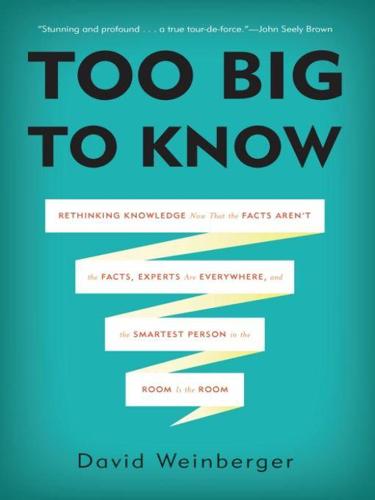
Too Big to Know: Rethinking Knowledge Now That the Facts Aren't the Facts, Experts Are Everywhere, and the Smartest Person in the Room Is the Room
by
David Weinberger
Published 14 Jul 2011
Johannes Kepler examined the star charts carefully constructed by his boss, Tycho Brahe, until he realized in 1605 that if the planets orbit the Sun in ellipses rather than perfect circles, it all makes simple sense. Three hundred fifty years later, James Watson and Francis Crick stared at x-rays of DNA until they realized that if the molecule were a double helix, the data about the distances among its atoms made simple sense. With these discoveries, the data went from being confoundingly random to revealing an order that we understand: Oh, the orbits are elliptical! Oh, the molecule is a double helix! With the new database-based science, there is often no moment when the complex becomes simple enough for us to understand it. The model does not reduce to an equation that lets us then throw away the model.
…
Rather, it turns out that the questions science asks, the facts it takes as relevant, and the explanations it gives all occur within an overarching scientific “paradigm” such as Aristotelian, Newtonian, or Einsteinian physics. Simple truths appear—and are relevant—only within complex, historical systems of thought, institutions, and equipment. • In 1968, James Watson published The Double Helix, an account of his and Francis Crick’s discovery of the structure of DNA. This highly readable account scandalized many because it revealed that scientists are governed by personal ambition as well as by a desire to find the truth. Many accounts since then confirmed that there is a psychology and sociology of science.
…
See Science at Creative Commons Crick, Francis Crisis of knowledge CrisisCommons.org Crowds Crowdsourcing information amateur scientists British Parliamentarians’ use of expertise and leadership effectiveness Netflix contest open-notebook science Culture, information overload and Cybercascades Cyberchiefs: Autonomy and Authority in Online Tribes (O’Neil) Darnton, Robert DARPA (Defense Advanced Research Projects Agency) Darwin, Charles amateur scientists’ contributions barnacle studies Hunch.com and insight and leap of thought long-form thinking science and publishing Data accuracy of published data crowdsourcing scientific and medical information data commons evaluating metadata information and overaccumulation of scientific data scientific knowledge Data.gov Data-information-knowledge-wisdom (DIKW) hierarchy Davis, John Debian Decision-making advantages of networked corporate and government networked decision-making Debian community Dickover’s social solutions facing reality Wikipedia policy Defaults Democracy echo chambers hiding knowledge and increasing group polarization reason, truth, and knowledge Denney, Reuel Deolalikar, Vinay Derrida, Jacques Descartes, René Dialogue, exploring diversity through Dickens, Charles Dickover, Noel Diderot, Denis The Difference (Page) Discourses Diversity appropriate scoping decreasing intelligence echo chambers forking moderating negative effects of of expertise race and gender respectful conversations over DNA Dr. Strangelove, Or How I Learned to Stop Worrying and Love the Bomb (film) Doctorow, Cory Dogger Bank Incident The Double Helix (Watson) Double-entry bookkeeping Dublin Core standard Dwarf planets eBird.org E-books Echo chambers Edge.org Ehrlich, Paul Einstein@Home Eliot, T.S. Embodied thought Emerson, Ralph Waldo Enders, John Engadget Environmental niche modeling Environmental Protection Agency (EPA) Eureqa computer program Evolutionary science Experiments, scientific method and Expert Labs Expertise Challenger investigation crowdsourcing diversity in networking knowledge networks outperforming individuals professionalization of scaling knowledge and networking sub-networks Extremism: group polarization Exxon Valdez oil disaster Facebook Fact-based knowledge as foundation of knowledge British backlash against British chimney sweep reform Darwin’s work on barnacles Hunch.com international dispute settlement See also Data Fact-finding missions Facts Linked Data standard Malthusian theory of population growth networked Failed science Fear, information overload and Federal Advisory Committees (FACs) Federal Highway Administration Feminism Filters information overload as filter failure knowledge management FoldIt Food, extending shelf life of Foodies Ford Motors Forking Forscher, Bernard K.
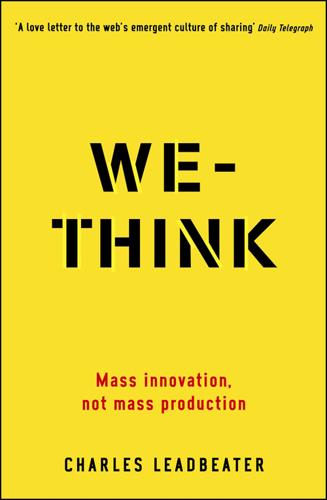
We-Think: Mass Innovation, Not Mass Production
by
Charles Leadbeater
Published 9 Dec 2010
Commerce has often been built on shared foundations. This is especially so when the commons are not finite resources like woods and land, but knowledge and ideas.25 Bodies of ancient music are part of a cultural commons. Einstein’s theory of relativity is part of the commons, along with Watson and Crick’s description of the double helix of DNA. Language is a kind of commons. Dictionary publishers, broadcasters and teachers may attempt to claim authority over language but their right to do so is frequently contested. A language is not owned by anyone. The English language, which has developed by absorbing so many foreign influences, now provides a global common resource for business, science and culture.26 English has an estimated 380 million core speakers.
…
Scientific collaborations like the one behind the unravelling of the C. elegans genome are a powerful working model for We-Think culture which the web is helping to spread. When Sydney Brenner set out to unravel the worm’s genome in 1965 – just eight years after Francis Crick and James Watson had uncovered the double-helix structure of DNA – little was known about how genes work. Brenner set out to find how the worm’s genes directed the organism’s growth, with only a small team of novice researchers and some crude tools: the scientists lifted worms into petri dishes with sharpened toothpicks. It was as if someone had seen the Wright brothers’ first flight and decided to start work on a jumbo jet.1 Brenner’s Laboratory of Molecular Biology provided the community’s core.
…
Diversity counts for little unless the different ideas that are floating around can be brought together to cross-pollinate. A community that is diverse but Balkanised will not be creative. People with different ideas must find a way to connect and communicate with one another. When they do, and in the right way, the results can be explosive. James Watson and Francis Crick unravelled the double-helix structure of DNA because they found a way to combine their very different outlooks. Crick’s training spanned physics, biology and chemistry. Watson had trained as a zoologist but had become fascinated by DNA after studying viruses. They combined their ideas through constant, intense conversation of a kind of which their rivals were incapable.
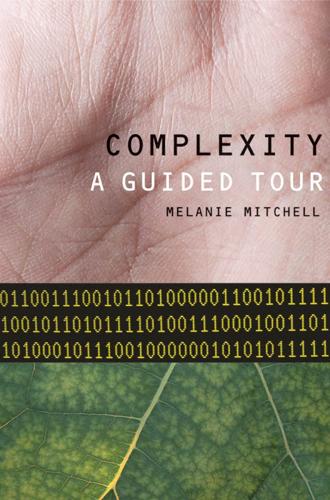
Complexity: A Guided Tour
by
Melanie Mitchell
Published 31 Mar 2009
From a single strand of the DNA, an enzyme (an active protein) called RNA polymerase unwinds a small part of the DNA from its double helix. This enzyme then uses one of the DNA strands to create a messenger RNA (or mRNA) molecule that is a letter-for-letter copy of the section of DNA. Actually, it is an anticopy: in every place where the gene has C, the mRNA has G, and in every place where the gene has A, the mRNA has U (its version of T). The original can be reconstructed from the anticopy. FIGURE 6.1. Illustration of the double helix structure of DNA. (From the National Human Genome Research Institute, Talking Glossary of Genetic Terms [http://www.genome.gov/glossary.cfm.])
…
How does DNA create a near-exact copy of itself during cell division (mitosis)? And how does the variation, on which natural selection works, come about at the DNA level? These questions were all answered, at least in part, within the next ten years. The biggest break came when, in 1953, James Watson and Francis Crick figured out that the structure of DNA is a double helix. In the early 1960s, the combined work of several scientists succeeded in breaking the genetic code—how the parts of DNA encode the amino acids that make up proteins. A gene—a concept that had been around since Mendel without any understanding of its molecular substrate—could now be defined as a substring of DNA that codes for a particular protein.
…
Due to chemical affinities, A always pairs with T, and C always pairs with G. Sequences are usually written with one line of letters on the top, and the paired letters (base pairs) on the bottom, for example, TCCGATT … AGGCTAA … In a DNA molecule, these double strands weave around one another in a double helix (figure 6.1). Subsequences of DNA form genes. Roughly, each gene codes for a particular protein. It does that by coding for each of the amino acids that make up the protein. The way amino acids are coded is called the genetic code. The code is the same for almost every organism on Earth. Each amino acid corresponds to a triple of nucleotide bases.

The Evolution of Everything: How New Ideas Emerge
by
Matt Ridley
The discovery of the double helix in 1953 remains plagued to this day by accusations that too much credit went to the first two people to solve the structure, and not to those who did some of the hard work that led to the insight. As Francis Crick pondered of his partner in the elucidation of the double helix, James Watson: ‘If Jim had been killed by a tennis ball, I am reasonably sure I would not have solved the structure alone, but who would?’ There were plenty of candidates: Maurice Wilkins, Rosalind Franklin, Raymond Gosling, Linus Pauling, Sven Furberg, and others. The double helix and the genetic code would not have remained hidden for long.
…
The artificial synthesis in 1828 of urea, a substance produced hitherto exclusively by living creatures, was one such blow, which largely destroyed the idea that chemistry was going to find the vital principle. Vitalists fell back on physics, and later quantum physics, where they suggested that mysterious peculiarities might still exist. But that too was blown away by the discovery of the structure of DNA. In a way you could argue that the double helix did confirm that there is something peculiar and special about living tissue – namely, that it contains digital information capable of both replicating itself and instructing the synthesis of machinery for harnessing energy. The secret of life, unexpectedly, turned out to be an infinitely combinatorial message written in digital form in three-letter words in a four-letter alphabet.
…
Rutgers University Press. On simultaneous invention, Wagner, A. 2014. Arrival of the Fittest. Current Books; Kelly, Kevin 2010. What Technology Wants. Penguin (Viking); and Armstrong, Sue 2014. The Gene that Cracked the Cancer Code. Bloomsbury Sigma p53. On the inevitability of the discovery of the double helix, Ridley, Matt 2006. Francis Crick. HarperCollins. On the four-factor formula, Spencer Weart cited in Kelly, Kevin 2010. What Technology Wants. Penguin (Viking). On Moore’s Law used to predict Pixar’s moment, Smith, Alvy Ray 2013. How Pixar used Moore’s Law to predict the future. Wired 17 April 2013.
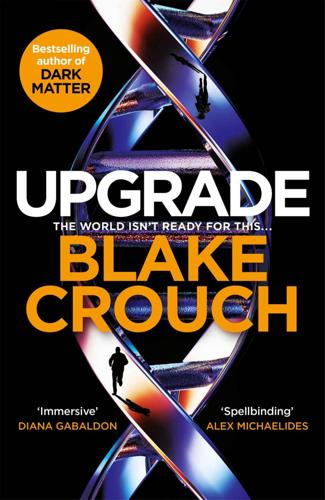
Upgrade
by
Blake Crouch
Published 6 Jul 2022
A necklace hung from the neck, draping over the white vinyl seat. I leaned in to see the pendant hanging from it. It was a platinum double helix—the structure of DNA. I see wrapping paper scattered around the tree. I’m opening my new Lego set. Max is lying on the couch, already weary from the early stages of the illness that will take his life next year. Kara is trying out her new tablet, and there’s the warm, sweet smell of the scones Mom made every Christmas morning baking in the oven. I hear Mom say, “Oh, Haz, it’s beautiful,” and I watch her lifting a necklace with a double helix pendant out of a small, burgundy box. “I had it custom-made by a jeweler in Philadelphia,” my father says.
…
In the flesh, he was less impressive—five and a half feet in his artificially distressed Saint Laurent sneakers with a designer hoodie hiding most of his face. He was sitting at the end of the bar with a book and a bottle of Krug. I commandeered the stool beside him and set my badge between us. It bore the insignia of a bald eagle whose wings enveloped the double helix of a DNA molecule. For a long moment, nothing happened. I wasn’t even sure he’d seen it gleaming under the hanging globe lights, but then he turned his head and looked at me. I flashed a smile. He closed his book. If he was nervous, he didn’t show it. Just stared at me through Scandinavian blue eyes.
…
My genome, for better or worse, had the information encoded to self-regulate, combat disease, and deal with toxins, environmental threats, and glitches on the fly, again, with the primary goal of survival of the species. The same gene edits and insertions that were improving my acuity, and possibly even my longevity, might also upend the entire, fragile balance of my genome. And my life. But that wasn’t even the most existentially terrifying thought. When Watson, Crick, and Franklin discovered DNA’s double helix structure in the early 1950s, it changed how scientists thought of species delineation. In 1980, Niles Eldredge and Joel Cracraft suggested that, under the phylogenetic definition, animal species could have DNA that differed by just two percent and be categorized as separate species. What if two percent of my genome had been changed?
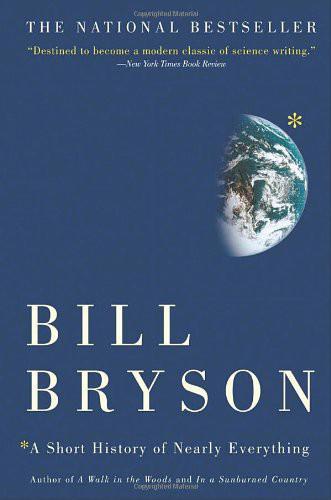
A Short History of Nearly Everything
by
Bill Bryson
Published 5 May 2003
Maddox, Rosalind Franklin, p. 327. 14 “not to give Avery a Nobel Prize.” White, Rivals, p. 251. 15 “a member of a highly popular radio program called The Quiz Kids . . .” Judson, The Eighth Day of Creation, p. 46. 16 “without my learning any chemistry . . .” Watson, The Double Helix, p. 28. 17 “the results of which were obtained ‘fortuitously' . . .” Jardine, Ingenious Pursuits, p. 356. 18 “In a severely unflattering portrait . . .” Watson, The Double Helix, p. 26. 19 “in the summer of 1952 she posted a mock notice . . .” White, Rivals, p. 257; and Maddox, p. 185. 20 “apparently without her knowledge or consent.” PBS website, “A Science Odyssey,” undated. 21 “Years later Watson conceded. . .”
…
Their assumption was that if you could determine the shape of a DNA molecule you would be able to see—correctly, as it turned out—how it did what it did. They hoped to achieve this, it would appear, by doing as little work as possible beyond thinking, and no more of that than was absolutely necessary. As Watson cheerfully (if a touch disingenuously) remarked in his autobiographical book The Double Helix, “It was my hope that the gene might be solved without my learning any chemistry.” They weren't actually assigned to work on DNA, and at one point were ordered to stop it. Watson was ostensibly mastering the art of crystallography; Crick was supposed to be completing a thesis on the X-ray diffraction of large molecules.
…
The New Zealand–born Wilkins was a retiring figure, almost to the point of invisibility. A 1998 PBS documentary on the discovery of the structure of DNA—a feat for which he shared the 1962 Nobel Prize with Crick and Watson—managed to overlook him entirely. The most enigmatic character of all was Franklin. In a severely unflattering portrait, Watson in The Double Helix depicted Franklin as a woman who was unreasonable, secretive, chronically uncooperative, and—this seemed especially to irritate him—almost willfully unsexy. He allowed that she “was not unattractive and might have been quite stunning had she taken even a mild interest in clothes,” but in this she disappointed all expectations.
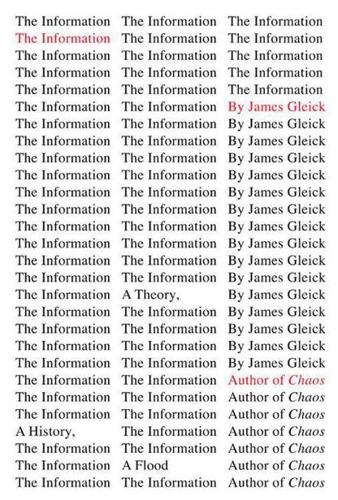
The Information: A History, a Theory, a Flood
by
James Gleick
Published 1 Mar 2011
Technology Review (July–August 2001): 64–71. Wang, Hao. “Some Facts About Kurt Gödel.” Journal of Symbolic Logic 46 (1981): 653–59. Watson, David L. “Biological Organization.” Quarterly Review of Biology 6, no. 2 (1931): 143–66. Watson, James D. The Double Helix. New York: Atheneum, 1968. ———. Genes, Girls, and Gamow: After the Double Helix. New York: Knopf, 2002. ———. Molecular Models of Life. Oxford: Oxford University Press, 2003. Watson, James D., and Francis Crick. “A Structure for Deoxyribose Nucleic Acid.” Nature 171 (1953): 737. ———. “Genetical Implications of the Structure of Deoxyribonucleic Acid.”
…
But they knew a great deal about the subunits. Each nucleotide contained a “base,” and there were just four different bases, designated as A, C, G, and T. They came in strictly predictable proportions. They must be the letters of the code. The rest was trial and error, fired by imagination. What they discovered became an icon: the double helix, heralded on magazine covers, emulated in sculpture. DNA is formed of two long sequences of bases, like ciphers coded in a four-letter alphabet, each sequence complementary to the other, coiled together. Unzipped, each strand may serve as a template for replication. (Was it Schrödinger’s “aperiodic crystal”?
…
The Tie Club recognized that the problem was not just information storage but information transfer. DNA serves two different functions. First, it preserves information. It does this by copying itself, from generation to generation, spanning eons—a Library of Alexandria that keeps its data safe by copying itself billions of times. Notwithstanding the beautiful double helix, this information store is essentially one-dimensional: a string of elements arrayed in a line. In human DNA, the nucleotide units number more than a billion, and this detailed gigabit message must be conserved perfectly, or almost perfectly. Second, however, DNA also sends that information outward for use in the making of the organism.
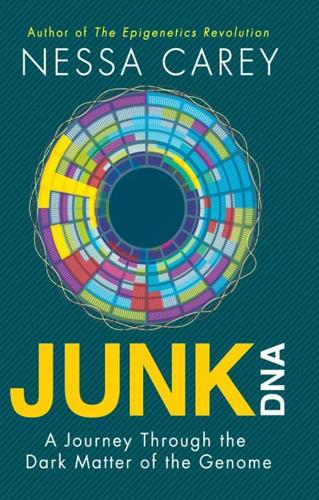
Junk DNA: A Journey Through the Dark Matter of the Genome
by
Nessa Carey
Published 5 Mar 2015
If the DNA sequence at the centromere isn’t very conserved, and the critical factor is the placement of the CENP-A protein, how does the cell ‘know’ where the centromere should be on each chromosome? Why is it always near the middle of chromosome 1, but near the end of chromosome 14? To understand this, we have to develop a more sophisticated image of the DNA in our cells. The DNA double helix is an iconic image, probably the defining image in biology. But it doesn’t really represent what DNA is like. DNA is a very long spindly molecule. If you stretched out the DNA from one human cell it would reach for two metres, assuming you joined up the material from all the chromosomes. But this DNA has to fit into the nucleus of a cell, and the nucleus has a diameter of just one hundredth of a millimetre.
…
It remains a little beacon of expression in the chromosomal darkness of the inactive X.10 Left to right, right to left So we have here a situation where a piece of ‘junk’ DNA – one that doesn’t code for protein – is absolutely essential for the function of half the human race. Scientists have recently discovered that this process of X inactivation requires at least one other piece of junk DNA. Confusingly, this is encoded in exactly the same place on the X chromosome as Xist. DNA, as we know, is composed of two strands (the iconic double helix). The machinery that copies DNA to form RNA always ‘reads’ DNA in one direction, which we could call the beginning and end of a specific sequence. But the two strands of DNA run in opposite directions to each other, a little like one of those funicular railways we find at older seaside and mountain resorts.
…
Instead, patterns are often maintained or created as a consequence of the histone modification combinations that are already present on the genome.10,11 This also seems to hold for the opposite effect, where active regions remain active. Long non-coding RNAs have been reported to be expressed from regions where protein-coding genes are switched on. These long non-coding RNAs stay moored to the genome region where they are produced, possibly by forming a third strand to accompany the double helix of DNA. These long non-coding RNAs bind to the enzymes that place methyl modifications on DNA and stop them doing their job. This keeps the genes in that region in an active state.12 If you’re inactive, you stay inactive Xist, which is critical for switching off expression from one of the X chromosomes in a female cell, was one of the first functional long non-coding RNAs to be identified.

The End of Illness
by
David B. Agus
Published 15 Oct 2012
This code is strung together into twenty-three “volumes of information” called chromosomes. We each possess two sets of each chromosome, with one set inherited from each parent. Chromosomes are composed of strands of DNA, which in turn are made up of tens of thousands of genes. DNA’s well-known double-helix structure is connected by rungs of approximately 3 billion base pairs, represented by four chemical bases, or nucleotides, known most commonly by the letters A (adenine), G (guanine), C (cytosine), and T (thymine). These nucleotides are key structural elements for the genes that individually or in combination determine everything from a person’s hair color to their predisposition for Parkinson’s disease.
…
These nucleotides are key structural elements for the genes that individually or in combination determine everything from a person’s hair color to their predisposition for Parkinson’s disease. After thirteen years of work, the project was declared complete two years ahead of schedule in 2003, coinciding with the fiftieth anniversary of Francis Crick and James Watson’s Nobel Prize–winning discovery of the DNA double helix. Certain sequences of these building blocks make up genes, just like certain sequences of letters create words. Now the race is on to decipher the meaning encoded by these 20,000 to 25,000 genes, which are essentially the molecular remote controls to our body’s functionality. Genes are what determine many aspects of yourself, such as whether you have blue or brown eyes and the likelihood that you will suffer from obesity or Alzheimer’s disease.
…
By the beginning of the twentieth century, we still didn’t have a clue as to exactly what was responsible for all these developing laws of inheritance. Mendel’s work wasn’t published until 1866 and went unnoticed and unappreciated until the turn of the century. It would take nearly another century from Mendel’s publication for science to dig deeper, when James Watson and Francis Crick proposed the double helix, or spiral staircase, structure of the DNA molecule in 1953. In essence, Watson and Crick officially discovered DNA, changing the textbooks forever now that we had an image of what “the secret to life” actually looked like. Such a feat has an almost religious significance in biology. Suddenly, we had a seemingly tangible thing to help explain what makes us tick and how we are made at the molecular level.
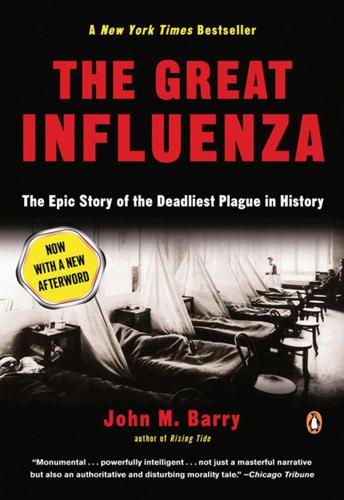
The Great Influenza: The Story of the Deadliest Pandemic in History
by
John M. Barry
Published 9 Feb 2004
“little influence on thought”: Gunther Stent, Introduction, The Double Helix: A Norton Critical Edition by James Watson (1980), xiv. “obviously of fundamental importance”: Nobelstiftelsen, Nobel, the Man, and his Prizes (1962), 281. “Avery showed”: James Watson, The Double Helix: A Norton Critical Edition, See 12, 13, 18. “Avery gave us”: Horace Judson, Eighth Day of Creation: The Makers of the Revolution in Biology (1979), 94. “we were very attentive”: Ibid., 59. “nonsense to say that we were not aware”: Ibid., 62–63. “dark ages of DNA”: Watson, Double Helix, 219. “opening…the field of molecular biology”: Dubos, Professor, Institute and DNA, 156.
…
The official history of the organization that gives the prize states, “Those results were obviously of fundamental importance, but the Nobel Committee found it desirable to wait until more became known….” Others were determined to make more known. James Watson, with Francis Crick the codiscoverer of the structure of DNA, wrote in his classic The Double Helix that “there was general acceptance that genes were special types of protein molecules” until “Avery showed that hereditary traits could be transmitted from one bacterial cell to another by purified DNA molecules…. A very’s experiments strongly suggested that future experiments would show that all genes were composed of DNA….
…
When the Cheering Stopped: The Last Years of Woodrow Wilson. New York: Morrow, 1964. Starr, Paul. The Social Transformation of American Medicine. New York: Basic Books, 1982. Steele, Richard W. Free Speech in the Good War. New York: St. Martin’s Press, 1999. Stent, Gunther. Introduction to The Double Helix: A Norton Critical Edition, by James Watson, edited by Gunther Stent. New York: Norton, 1980. Sternberg, Martha. George Sternberg: A Biography. Chicago: American Medical Association, 1925. Thompson, E. Symes. Influenza. London: Percival & Co., 1890. Thomson, David, and Robert Thomson. Annals of the Pickett-Thomson Research Laboratory, vols. 9 and 10, Influenza.
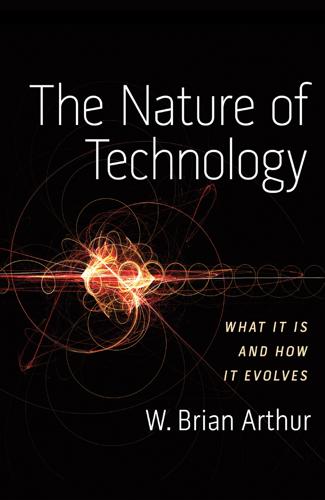
The Nature of Technology
by
W. Brian Arthur
Published 6 Aug 2009
Every step involved had been done already” But Mullis’s “easy” solution was to “amplify DNA by the repeated reciprocal extension of two primers hybridized to the separate strands of a particular DNA sequence.” In lay terms this means finding short stretches of DNA (primers) that flag the beginning and end of the DNA stretch to be copied, and separating the DNA double helix into two separate strands. Once the primers are added, the two strands can build from these (using an enzyme called polymerase) and pick up complementary components to form two new double helixes. Repeating this process again and again multiplies the new double helix copies from 2 to 4 to 8 to 16… indefinitely. This was something easy at that time only to a practitioner with considerable experience of functionalities in working with DNA—something easy to Mullis.

Protocol: how control exists after decentralization
by
Alexander R. Galloway
Published 1 Apr 2004
So, in 1953, when Watson and Crick discovered DNA (perhaps not anticipating its subsequent ascendance to the supreme definition of life itself fifty years later), they prove not simply that life is an informatic object (that much had been clear for decades with the Bertillon system of criminal phrenology, the quantification of human movement by Muybridge, and so on) but rather that life is an aesthetic object; it is a double helix, an elegant, hyper-Platonic form that rises like a ladder into the heights of aesthetic purity. Life was no longer a “pair of ragged claws / Scuttling across the floors of silent seas” (Eliot), it was a code borne from pure mathematics, an object of aesthetic beauty, a double helix! This historical moment—when life is defined no longer as essence, but as code—is the moment when life becomes a medium.97 95. Sanford Kwinter, “Introduction: War in Peace,” in Branden Hookway, Pandemonium: The Rise of Predatory Locales in the Postwar Period (Princeton: Princeton Architectural Press, 1999), pp. 9–10, emphasis mine. 96.
…
See Society, disciplinary Discipline and Punish (Foucault), 21, 31 Discourse, in Marx, 91 Discourse Networks, 1800/1900 (Kittler), 18, 22 Dispositif, 25 Distributed Denial of Service (DDoS), 214 Distribution and control, 47 as diagram, 197 and management, 110, 243 network (see Network, distributed) Dividual (Deleuze), 86 DNA, 26, 111 computer, 112 Documenta X, 187 Doll Yoko. See da Rimini, Francesca Domain Name System (DNS), 5, 8–10, 12, 47, 49–50, 141, 143, 218 Dominguez, Ricardo, 175, 214 Double helix, 111 Dreyfus, Hubert, 17, 102 Dr-K, 171 Drucker, Peter, 17 Druckrey, Timothy, 19, 211–212 Drummond, Bill, 227n32 DVD, 126, 172 Dyer-Witheford, Nick, 33 Ebay, 233–238 Edison, Thomas, 126 Eisenstein, Sergei, 89–90, 102 Electronic Disturbance Theater (EDT), 175, 214, 217, 234 Empire, 158 Empire (Hardt and Negri), 24–26, 209n1 Engelbart, Douglas, 106n84 Entropy, 103–105 Enzensberger, Hans Magnus, 16, 18, 56–58, 209 Ethernet, 127 Etoy, 9–10, 219–232, 234 eToys, 229, 232 Eugenics, 85n13 Expanded Cinema (Youngblood), 210n7 Experiments in Art and Technology (EAT), 210n7 Exploits, 167–168, 186.
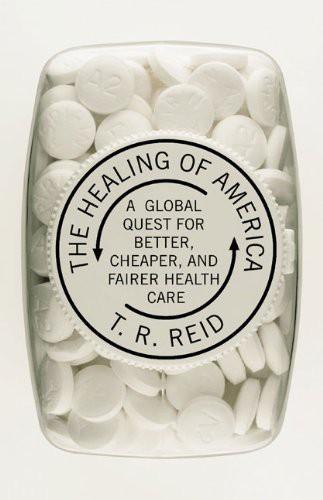
The Healing of America: A Global Quest for Better, Cheaper, and Fairer Health Care
by
T. R. Reid
Published 15 Aug 2009
Public health officials frequently point to two key discoveries, both announced in 1953, that crystallize the difference:• In February, at the Cavendish Laboratory of Cambridge University, the American biologist James Watson and the British physicist Francis Crick figured out the double-helix structure of deoxyribonucleic acid, DNA. That discovery demonstrated how DNA carries and passes on each human being’s hereditary information. “We have found the secret of life,” Crick said. This wildly celebrated biological advance led to the Nobel Prize, a No.1 best seller (Watson’s memoir, The Double Helix), and the science of genomics, which may someday cure chronic diseases and spawn a new world of individualized drugs designed to save people who have a genetic disposition for a lethal illness
…
Declaration of Independence Democratic Progressive Party,Taiwanese Denmark dental care depression dhami Dhanwanthari (Hindu god of healing) diabetes diet Disability-Adjusted Life Expectancy (DALE) disability-adjusted life year (DALY) DNA doctors, see providers, health care Dominica doshas Double Helix,The (Watson) Douglas,Thomas Clement drinking drugs and prescriptions in Out-of-Pocket system price of education Egypt Eisenhower, Dwight D. EKG elections, U.S. electroacupuncture elektronischen Gesundheitskarte (German smart card) Emergency Hospital Service Emergency Medical Treatment and Active Labor Act (EMTALA; 1986) emergency room emphysema Epstein, Richard Escuela Latinoamericana de Ciencias Médicas European Union Evans, Robert exercise eyeglasses false teeth Family Endowment Society fast food Ferlic, Donald Finland Fleming, Alexander Fleming, Kevin C.
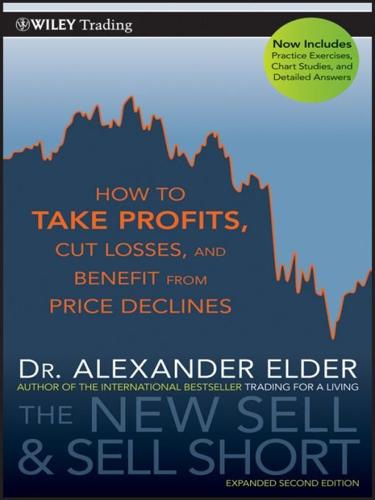
The New Sell and Sell Short: How to Take Profits, Cut Losses, and Benefit From Price Declines
by
Alexander Elder
Published 1 Jan 2008
Covered Writing Question 108—The Demands of Naked Writing Question 109—Brokers Against Traders Question 110—Forex Market Question 111—Learning to Become a Better Trader Question 112—Trading Signals of the Force Index Question 113—False Breakouts and Divergences Question 114—Shorting and Covering Signals Question 115—Shorting Tactics GRADING YOUR ANSWERS PART FOUR - LESSONS OF THE BEAR MARKET CHAPTER 9 - BEARS MAKE MONEY THE BEAR WAS BEGINNING TO STIR IN ITS CAVE THE SENTIMENT INDICATORS ARE EARLY THE TOP OF THE BULL MARKET BEARISH DIVERGENCES AT THE 2007 TOP THE BUBBLE POPS: MGM SHORTING A HIGH-FLYER A BEAR MARKET IS A DESTROYER OF VALUE SWINGING IN AND OUT OF A MAJOR DOWNTREND TRADING IN A DOWNCHANNEL PREPARED FOR A SURPRISE “BULL MARKETS HAVE NO RESISTANCE AND BEAR MARKETS HAVE NO SUPPORT” FOR WHOM THE BELL TOLLS OR THE HOUND BARKS TWICE MR. BUFFETT BUYS TOO SOON MAY I POUR SOME GASOLINE ON YOUR FIRE? KEEP SHORTING ON THE WAY DOWN CHAPTER 10 - GROPING FOR A BOTTOM THIS STOCK MARKET IS NOT GOING DOWN TO ZERO A “DOUBLE HELIX” GIVES A BUY SIGNAL JUST IN TIME FOR THE PARTY MY FAVORITE MAJOR BOTTOM SIGNAL SELLING A BULL EVERY BULL STUMBLES A SCREAMING SHORT CONCLUSION REFERENCES Acknowledgments ABOUT THE AUTHOR WILEY TRADING SERIES Founded in 1807, John Wiley & Sons is the oldest independent publishing company in the United States.
…
This index declined to minus 5,854—a zone that had been reached before at bear market bottoms. This reading alone does not tell us whether this is the absolute bear market bottom or just an intermediate low prior to a bear market rally. Of course, the massive bullish divergence between the bottoms 1, 2, and 3 indicated that the first option was more likely. A “DOUBLE HELIX” GIVES A BUY SIGNAL The message of this chart was unmistakable (Figure 10.2). It told traders not to panic. It signaled to cover shorts and get busy drawing our shopping lists. Whenever you look at a market using different timeframes, technical trading signals seldom emerge at the same time.
…
The daily chart of NH-NL finally caught the weekly’s tune in April, when the number of New Highs (the green line) rose above that of New Lows (the red line). Because the daily NH-NL is very sensitive, I tend to wait until its second bullish crossover before accepting it as a confirmed buy signal. Stephen Morris, a Spiker in Idaho, jokingly called this “Double helix” or “double Alex.” JUST IN TIME FOR THE PARTY These three charts of Deckers Outdoors (DECK) (Figures 10.3-Figures 10.5), along with several intraday charts omitted for the reasons of space, came recently from Steve Alcorn, a member of SpikeTrade, who wrote: “I’ve attached my diary from my very first trade, which was on March 10, 2009, the first day of the big upmove.
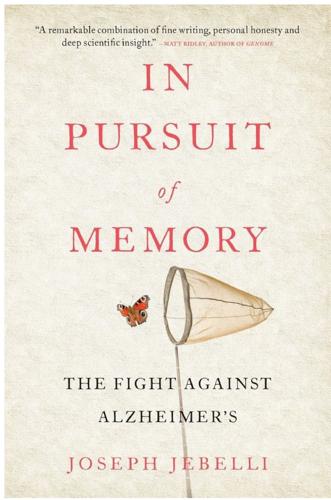
In Pursuit of Memory: The Fight Against Alzheimer's
by
Joseph Jebelli
Published 30 Oct 2017
Scanning the wreckage further, the microscopists soon landed on the odd tangles of material that appeared to choke the cells from the inside. And almost immediately it was clear these were a different kind of adversary. They twisted and coiled around themselves in a strikingly ordered manner, forming curious helices much like the DNA double helix discovered by James Watson and Francis Crick only one decade earlier. ‘If you want to understand function,’ Crick famously said, ‘study structure.’ In that vein Kidd and Terry began contemplating the atomic architecture of the plaques and tangles, comparing it with what was already known about how organic molecules behave.
…
At that time, however, genes were thought to be entities that only gave rise to basic aspects of human biology such as height, build and eye colour. They certainly weren’t believed to have much (if anything) to do with the intricate vagaries of the mind. In any case, genes were still inaccessible molecules and so physicians were more interested in the chemical basis of disease. But by the 1980s the DNA double helix had come and gone and gene sequencing technology was well on its way. George Glenner, a molecular pathologist at the US National Institute on Aging, seized upon Heston’s results. Quiet and reserved, formal and aloof, with wavy silver hair and an unassuming gaze, Glenner didn’t know much about the brain when he began working on Alzheimer’s in 1983.
…
L., Seok, J., Xu, W., Mindrinos, M. N.,… Davis, R. W., ‘Mice are not men’, Proceedings of the National Academy of Sciences of the United States of America, 112 (4), 2015, E345 Watkins, C. C., and Treisman, G. J., ‘Cognitive impairment in patients with AIDS–prevalence and severity’, HIV AIDS, 7, 2015, 35–47 Watson, J., The Double Helix, Weidenfeld & Nicolson, 2011 Weingarten, M. D., Lockwood, A. H., Hwo, S. Y., Kirschner, M. W., ‘A protein factor essential for microtubule assembly’, Proceedings of the National Academy of Sciences, 72 (5), 1975, 1858–62 Weissman, I. L., ‘The road ended up at stem cells’, Immunological Reviews, 185, 2002, 159–74 White, L., Petrovitch, H., Ross, G.
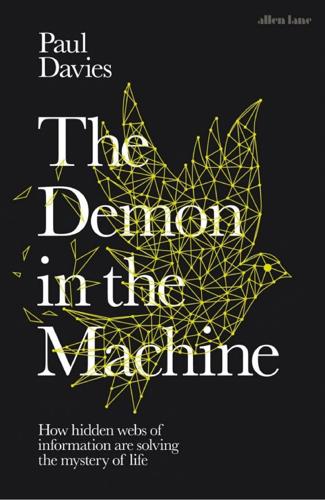
The Demon in the Machine: How Hidden Webs of Information Are Finally Solving the Mystery of Life
by
Paul Davies
Published 31 Jan 2019
The common thread running through the story of life on Earth – in this case, literally – is a long molecule called DNA, discovered in 1869 by the Swiss chemist Friedrich Miescher. Derived from the Latin word moles, the term ‘molecule’ came into vogue in eighteenth-century France to mean ‘extremely small mass’. Yet DNA is anything but small. Every cell in your body contains about two metres of it – it’s a giant among molecules. Etched into its famous double-helix structure is the instruction manual for life. The basic recipe is the same for all known life; we share 98 per cent of our genes with chimpanzees, 85 per cent with mice, 60 per cent with chickens and more than half with many bacteria. Box 2: Life’s basic machinery The informational basis of all life on Earth is the universal genetic code.
…
TUNNELLING Stuart Lindsay, a colleague of mine at ASU, is a real-life quantum biologist. The focus of his research is the investigation of how electrons flow through organic molecules, especially the As, Cs, Gs and Ts of DNA fame. The method they have perfected in his lab is to unzip the DNA double helix into single strands and suck one of them, spaghetti-like, through a tiny hole – a ‘nanopore’ – in a plate. Positioned across the hole is a pair of miniature electrodes. As each ‘letter’ transits the hole, electrons go through it, creating a tiny current. Happily, it turns out that the strength and characteristics of the current differs discernibly for each letter, so Lindsay’s set-up can be used as a high-speed sequencing device.
…
One of the greatest outstanding questions of science is how this unique arrangement came about in the first place. How did life begin? Because living matter has both a hardware and a software aspect – chemistry and information – the problem of origins is doubly difficult. In a curious historical coincidence, just three weeks after Crick and Watson’s famous paper on the double-helix structure of DNA appeared in Nature, the 15 May 1953 edition of Science carried an article by a little-known chemist named Stanley Miller. Entitled ‘A production of amino acids under possible primitive Earth conditions’, it was subsequently hailed as a trailblazer for attempts to re-create life in the laboratory.2 Miller put a mixture of common gases and some water in a flask and sparked electricity through it for a week, producing a brown sludge.

River Out of Eden: A Darwinian View of Life
by
Richard Dawkins
Published 28 Feb 1995
Genes, on the other hand, can selfcopy for ten million generations and scarcely degrade at all. Darwinism works only because-apart from discrete mutations, which natural selection either weeds out or preservesthe copying process is perfect. Only a digital genetic system is capable of sustaining Darwinism over eons of geological time. Nineteen fifty-three, the year of the double helix, will come to be seen not only as the end of mystical and obscurantist views of life; Darwinians will see it as the year their subject went finally digital. The river of pure digital information. majestically flowing through geological time and splitting into three billion branches, is a powerful image.
…
and Ann Druyan, Shadows of Forgotten Ancestors (New York: Random House, 1992). Tinbergen, Nike, The Herring Gull's World (New York: Harper & Row, 1960). , Curious Naturalists (London: Penguin, 1974). Trivers, Robert, Social Evolution (Menlo Park, Calif.: BenjaminCummings, 1985). Watson, James D., The Double Helix: A Personal Account of the Discovery of the Structure of DNA (New York: Athenewn, 1968). Weiner, Jonathan, The Beak of the Finch: A Story of Evolution in Our Time (New York: Knopf, 1994). Wickler. Wolfgang, Mimicry in Plants and Animals, R. D. Martin, trans. (New York: McGraw-Hill, 1968). Williams, George C., Natural Selection: Domains, Levels, and Challenges (New York: Oxford University Press, 1992).

The Ones We've Been Waiting For: How a New Generation of Leaders Will Transform America
by
Charlotte Alter
Published 18 Feb 2020
KENNEDY, CAPETOWN, SOUTH AFRICA, JUNE 6, 1966 CONTENTS TITLE PAGE COPYRIGHT DEDICATION EPIGRAPH INTRODUCTION AUTHOR’S NOTE THE ONES PART ONE CHAPTER 1 One Sunny Tuesday CHAPTER 2 Harry Potter and the Spawn of the Boomers CHAPTER 3 Getting Into College, Getting Out of Debt CHAPTER 4 The Last Dinosaurs CHAPTER 5 This Is the War That Never Ends PART TWO CHAPTER 6 The Rocket Ship CHAPTER 7 The Crash CHAPTER 8 Fix the System CHAPTER 9 Fuck the System CHAPTER 10 The Locals CHAPTER 11 The Young Grand Old Party PART THREE CHAPTER 12 House of Glass, 2016 CHAPTER 13 The Pilgrimage of Alexandria Ocasio-Cortez CHAPTER 14 “Senator, We Run Ads” CHAPTER 15 Millennial Red CHAPTER 16 The Pink Wave CHAPTER 17 Defend, Distance, Defect, or Defeat CHAPTER 18 Ladies of the House CHAPTER 19 The Double Helix EPILOGUE ACKNOWLEDGMENTS NOTE ON SOURCES NOTES INDEX ABOUT THE AUTHOR INTRODUCTION Love ’em or hate ’em, this much is true: one day soon, millennials will rule America. This is neither wish nor warning but a fact, rooted in the physics of time and the biology of human cells.
…
Within a month of his swearing in, Max Rose drew a Republican challenger who launched her campaign with an attack on “self-described socialist Alexandria Ocasio-Cortez.” It was clear that the Republicans wouldn’t be running against their actual Democratic opponents—they’d be running against AOC. CHAPTER 19 The Double Helix In early 2017, Pete and Chasten Buttigieg adopted a brown-and-white rescue beagle. Pete named him Truman, because Harry Truman had once said, “If you want a friend in Washington, get a dog.” “But you live in South Bend,” I reminded him, shortly after Truman came to live in their stately white house with columns and a portico.
…
They wouldn’t like to admit it, but their goals were largely aligned: universal health care, a massive government investment in addressing climate change, a twenty-first-century social safety net, and a reformed democracy. The skirmishes between the Obama pragmatists and the Bernie activists—the ones who wanted to fix the system and the ones who wanted to fight it—would be about the scope and implementation of those goals. The two unlikely young stars were like twin strands of DNA, a double helix that contained the blueprint for the Democratic Party’s future. And that future, regardless of the outcome in 2020, has already arrived. EPILOGUE It was a Wednesday morning in November and a heartless sun was shining. It greeted kids in the morning as they sat down to breakfast and learned who had won the 2016 presidential election.
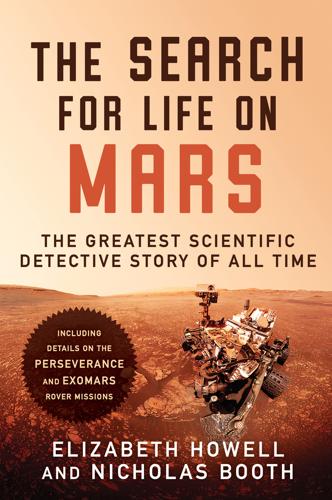
The Search for Life on Mars
by
Elizabeth Howell
Published 14 Apr 2020
That could, for example, involve the joining together of the amino acids that form the first strands of an RNA molecule. RNA, ribonucleic acid, is a precursor to the “double helix” of its deoxyribonucleic form, DNA. The creation of RNA would have been by trial and error over extended periods of time. Ribonucleic acid has a number of nitrogenous “bases,” which contain amino acids in differing combinations that are slightly different from those used by DNA. The double helix represents the next step up, as it were, in biological evolution. Nevertheless, if a small piece of RNA was synthesized from the various amino acids just a few bases long, that would be the start of something much more significant.
…
The planned mission—if the warranty holds—is seven months (218 sols), and “all that time should be nirvana for all our sample collection.” * * * The European rover has been named after Rosalind Franklin, a chemist and crystallographer who was overlooked in the credit for having the critical insight into identifying the double helix, the elusive yet crucial component of DNA that passes on genetic instructions. Finally, Franklin will take her rightful place in the pantheon of explorers who have made the search for life on Mars possible. Though smaller than Perseverance, the Rosalind Franklin rover has any number of innovations of which its builders are inordinately proud.
…
See deoxyribonucleic acid Damon, Matt, 155 dating techniques, 23, 127, 186, 266, 281, 282, 362n, decomposition biological, 239 chemical, 73, 234 thermal 244 Deep Blue (IBM), 155 Deep Space Network, 44, 90, 209, 325n, 326n Dejah Thoris, Princess of Helium, 144 DeGeneres, Ellen, 143 deoxyribonucleic acid (DNA), 259, 269, 274, 299, 301, 302, 303, 305, 334n, 340n derivatization agent, 73, 74, 82, 308 desorption 293, 296, 307, 308, 309, 359n detector Bayer Pattern Filter, 138 Dynamic Albedo of Neutrons (DAN), 71 Radiation Assessment Detector (RAD), 323n Mars Organic Molecule Analyser (MOMA), 295 of water, 71 deuterium, 188, 330n Devil’s Gate Dam, 87 dichloromethane, 221, 222, 341n Dickeson, Zach, 196 disordered carbon, 269 diurnalcycle, 41, 157 DLR. See German Aerospace Center dolomite, 293 double helix, 274, 299 Downey, Robert Jr., 43 drainage pattern, 171, 174, 175 drogue, 272 Dry Valleys, 6, 7, 216, 218, Plate 2 dunes, 61, 106, 107, 125, 129, 135, 140, 192, Plate 3. See also barchan duracrust, 40 Durham University, 227 dust, 105, 106, 107, 130, 132, 138, 197, 211, 236, 258, 264, 287, 303, 319n, 323n deposition, 13, 14, 15, 18, 19, 63, 75, 128, 161, 184, 190, 277, 289 devils, 27, 34, 136 global storms 1971, xi, 96, 103, 325n 2018, 14, 30, 66, 81, 131, 335n, 348n dynamic albedo of neutrons (DAN), 71 dynamo field, 29, 46, 54, 55 EDL (Entry Descent Landing) sequence, 57, 58, 137, 254, 261, 250, 360n EDL Comm 160 EETA7901.
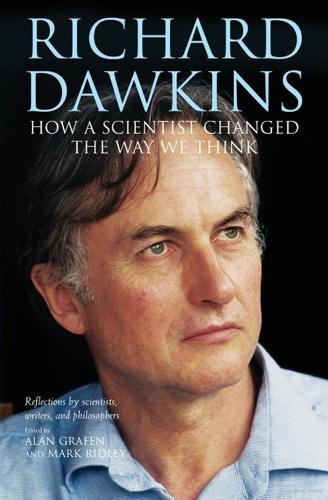
Richard Dawkins: How a Scientist Changed the Way We Think
by
Alan Grafen; Mark Ridley
Published 1 Jan 2006
The continued debate between gene-selectionists and group-selectionists identifies an ambiguity in the meaning of the word ‘gene’, even when this is defined as a rarely-recombining stretch of DNA. A gene could refer to the group of atoms that is organized into a particular DNA sequence—each time the double helix replicates, the gene is replaced by two new genes—or it could refer to the abstract sequence that remains the same gene no matter how many times the sequence is replicated. We might call these concepts the material gene and the informational gene. Dawkins refers to something like the informational gene when he describes the selfish gene as ‘all replicas of a particular bit of DNA’ but I believe that he neither wanted nor intended this definition.
…
When these ‘outward’ forms of a meme are perceived, they elicit changes in a nervous system that constitute the meme’s ‘cryptic’ form. The material basis of the cryptic form is probably unique to each nervous system colonized by the meme. Memetic replication, then, has nothing like the elegant simplicity of the double helix. If the material form of memes is problematic, might it be more appropriate to define memes purely in terms of information? But what are the memes in our evolving concepts of the gene? These concepts have been reformulated and recombined with other ideas at each step in the chain of transmission.
…
Non-fiction publishers had been given plenty of warning that science was a rich vein to mine, evolutionary theory in particular. In 1961 the screen writer Robert Ardrey’s African Genesis popularized the killer ape theory. Konrad Lorenz followed with On Aggression in 1963 and Desmond Morris with The Naked Ape in 1967. The latter would sell more than ten million copies. The great success of Jim Watson’s The Double Helix (1968), Jacques Monod’s Chance and Necessity (1970) and Jacob Bronowski’s The Ascent of Man (z973) reinforced the view that science could generate a huge best-seller almost every year. In this context, The Selfish Gene was merely the 1976 incarnation of a regular phenomenon. But it stood out in two ways.
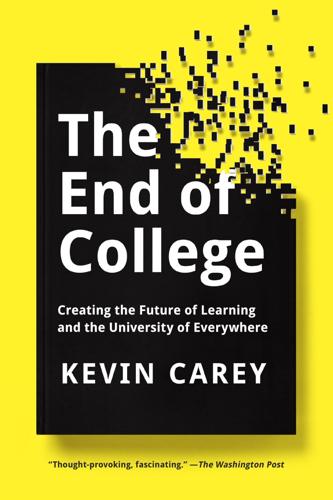
The End of College: Creating the Future of Learning and the University of Everywhere
by
Kevin Carey
Published 3 Mar 2015
I settled into a seat in the back row, flipped up the desk, and pulled out my study materials. After two months of watching Lander lecture, my class notebook was almost full. We had begun with the building blocks of biochemistry before proceeding on a long voyage of intellectual discovery, through Mendelian genetics, Crick and Watson’s double helix, and the modern age of biotechnology. Lander used a storyteller’s flair for drama as he worked through complex explanations of biochemistry, genetic mutation, and RNA transcription. When his tales reached a point of crucial discovery (often involving a Nobel Prize awarded to one of his MIT colleagues), you could see sparks of enthusiasm in his eyes—even from the last row.
…
I got it wrong the first couple of times, went back to my notes, watched a portion of the lecture again, and finally nailed down the underlying principles of molecular bonding in my mind. Later in the course, we learned how the amino acids in DNA molecules fit together, and how Linus Pauling raced with Crick and Watson to discover the double helix, along with the intricate dance of transcription and translation, mismatch detection and repair. The p-sets in this part of the course used another computer program, called the “Integrative Genome Viewer,” which allowed me to see what happens when mutations alter single base pairs in a DNA sequence that can run hundreds of millions of pairs long, resulting in a new set of instructions for protein creation and sometimes disastrous consequences for the organism in question.
…
C., 96 Clark, Jim, 129 Clinton, Bill, 177 Cognitive tutoring, 103, 105, 138, 179, 210 Cold War, 45, 54, 78, 79, 123, 167 Columbia University, 23, 56, 91, 157, 208, 250 admission to, 161 failed online course effort of, see Fathom.com Great Books courses at, 32, 44 liberal arts curriculum at, 49, 197 Comcast, 146 Community colleges, 55, 58–61, 77, 140–41, 237 bachelor’s degree programs added to, 64 enrollment in, 224 graduation rates from, 8–9 online courses offered by, 114 status anxiety of students at, 164 teaching in, 253 Computer science, 113, 125, 147, 158, 197, 218, 229 at Carnegie Mellon University, 71, 72, 79, 101, 105, 110, 153, 209–10, 216 at Massachusetts Institute of Technology, 11, 52, 148, 153 at Stanford University, 146, 153, 156, 233 Congress, U.S., 51, 56 Cornell University, 48, 204 Corporation for Public Broadcasting, 208 Council of Advisors on Science and Technology, 2 Course Hero, 133 Coursera, 153–57, 159, 170–72, 204, 223, 225, 231 Craig, Douglas B., 95 Craigslist, 132, 145 Credentials, academic, 6, 22, 46, 61, 182, 191–95, 200, 248 accreditation and, 117–18 admissions process and, 212 digital, 6, 186, 191–93, 199, 204, 218–19, 231, 234, 240 (see also Badges) labor market and, 185–86, 195, 197, 201, 246 personal recommendations and, 217 time-based, 48, 194, 209, 216 See also specific degrees Credit hours, 48, 194, 209, 237 Crick, Francis, 3, 70 Dark Ages, 17 Dartmouth College, 23, 79, 101, 147, 204 Davidson College, 243 Defense Department, U.S., 125, 148 Democratic Party, 42 Demosthenes, 25 Deoxyribonucleic acid (DNA), 2, 37, 70, 221 Dev Bootcamp, 139–41 Dickens, Charles, 17 Digital Equipment Corporation, 168 DiMaggio, Paul, 50, 117 Disney-Pixar, 208 DK Eyewitness Travel Guide: USA, 164 DNA, 2, 37, 70, 221 Doctorates, see PhDs Doerr, John, 153 Double helix, 3 Downes, Stephen, 150 Downton Abbey (television series), 217 Drucker, Peter, 107 Duke University, 140, 161 Dunster, Henry, 22, 197–99 Eaton, Nathaniel, 198 eBay, 145 Edison, Thomas, 96 Education, U.S. Department of, 9, 36, 56, 99, 157, 252 edX, 11, 143, 163, 170–72, 176–78, 214, 223, 231 certificates of course completion through, 203, 219, 233 controversy at Harvard over, 180 cost of course development for, 228 expansion of consortium of, 204, 244 forums moderated by teaching assistants on, 88 Lander’s lectures and course materials posted on, see Introduction to Biology—The Secret of Life (7.00x) process of signing up for classes on, 13 Eight-Year Study, The, 90 Einstein, Albert, 45 Elective system, 30–31, 47, 49, 54, 146, 197, 226 laissez-faire approach of, 76, 241 Eliot, Charles William, 29–32, 47, 49, 54, 65, 76, 138, 185, 239 Elite private institutions, 53–55, 134–36, 229, 241, 253 admissions process of, 161, 195, 212–13, 215, 245 high schools, 90, 195 international, 143 online sharing of resources by, 170 status competition among, 165 See also specific universities Emergence of the American University, The (Veysey), 34 Engelbart, Douglas, 122–26, 156 Engels, Friedrich, 45 Enlightenment, 26 Equifax, 200 Ericsson, K.
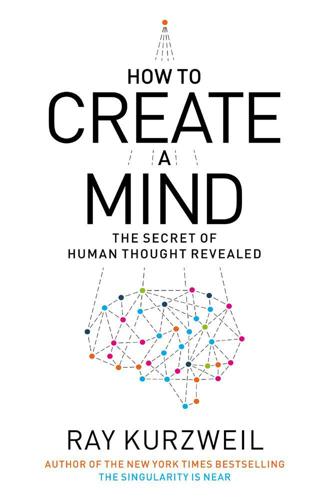
How to Create a Mind: The Secret of Human Thought Revealed
by
Ray Kurzweil
Published 13 Nov 2012
The communists considered it to be fascist propaganda, and his sudden, unexpected death has been attributed to the secret police of the Soviet Union.4 In 1953, nearly a century after the publication of Darwin’s seminal book, American biologist James D. Watson (born in 1928) and English biologist Francis Crick (1916–2004) provided the first accurate characterization of the structure of DNA, describing it as a double helix of two long twisting molecules.5 It is worth pointing out that their finding was based on what is now known as “photo 51,” taken by their colleague Rosalind Franklin using X-ray crystallography, which was the first representation that showed the double helix. Given the insights derived from Franklin’s image, there have been suggestions that she should have shared in Watson and Crick’s Nobel Prize.6 Rosalind Franklin took the critical picture of DNA (using X-ray crystallography) that enabled Watson and Crick to accurately describe the structure of DNA for the first time.
…
Soyfer, “The Consequences of Political Dictatorship for Russian Science,” Nature Reviews Genetics 2, no. 9 (2001): 723–29, doi:10.1038/35088598; PMID 11533721. 5. J. D. Watson and F. H. C. Crick, “A Structure for Deoxyribose Nucleic Acid,” Nature 171 (1953): 737–38, http://www.nature.com/nature/dna50/watsoncrick.pdf and “Double Helix: 50 Years of DNA,” Nature archive, http://www.nature.com/nature/dna50/archive.xhtml. 6. Franklin died in 1958 and the Nobel Prize for the discovery of DNA was awarded in 1962. There is controversy as to whether or not she would have shared in that prize had she been alive in 1962. 7. Albert Einstein, “On the Electrodynamics of Moving Bodies” (1905).
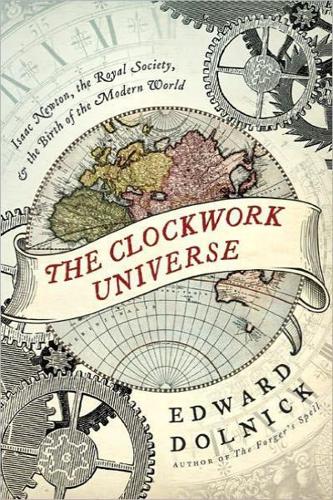
The Clockwork Universe: Saac Newto, Royal Society, and the Birth of the Modern WorldI
by
Edward Dolnick
Published 8 Feb 2011
“No one,” he boasted, “ever produced a first work more deserving of admiration, more auspicious and, as far as its subject is concerned, more worthy.” In the decades to come Kepler would make colossal discoveries, but his pride in his elaborate geometric model never faded. Centuries later the biologist James Watson would proclaim his double helix model of DNA “too pretty not to be true.” Kepler had felt the same joy and the same certainty, but eventually the data left him no choice but to acknowledge that he had gone wrong, again. His perfect theory was only a fantasy, but it proved enormously fruitful even so. For one thing, Mystery of the Universe transformed Kepler’s career.
…
It made all the difference in the world. Chapter Forty-Four Battle’s End From its earliest days, science has been a dueling ground. Disputes are guaranteed, because good ideas are “in the air,” not dreamed up out of nowhere. Nearly every breakthrough—the telescope, calculus, the theory of evolution, the telephone, the double helix—has multiple parents, all with serious claims. But ownership is all, and scientists turn purple with rage at the thought that someone has won praise for stolen insights. The greats battle as fiercely as the mediocre. Galileo wrote furiously of rivals who claimed that they, not he, had been first to see sunspots.
…
(Each angle of a hexagon is 120 degrees, for instance, so three or more hexagons cannot meet at one vertex.) 153 If you needed dice: Marcus du Sautoy, Symmetry (New York: Harper, 2008), p. 5. 154 He burst into tears: Caspar, Kepler, p. 63. 154 “Now I no longer regretted”: Koestler, The Sleepwalkers, p. 251. 155 “For a long time I wanted”: Owen Gingerich, “Johannes Kepler and the New Astronomy,” available at http://adsabs.harvard.edu/full/1972QJRAS..13..346G. 155 He happily devoted: Koestler, The Sleepwalkers, p. 269. 155 “No one,” he boasted: Caspar, Kepler, p. 71. 155 “too pretty not to be true”: James Watson, The Double Helix (New York: Touchstone, 2001), p. 204. 156 “Never in history”: Gingerich, “Johannes Kepler and the New Astronomy,” p. 350. CHAPTER 26. WALRUS WITH A GOLDEN NOSE 157 “Would that God deliver me”: Rossi, The Birth of Modern Science, p. 70. 158 “the heavenly motions are nothing but”: Koestler, The Sleepwalkers, p. 392. 158fn Not by the human ear: Rattansi, “Newton and the Wisdom of the Ancients,” p. 189. 158fn The first person to refer: Curtis Wilson, “Kepler’s Laws, So-Called,” HAD News (newsletter of the Historical Astronomy Division of the American Astronomical Society), no. 31, May 1994. 158 “My brain gets tired”: Giorgio de Santillana, The Crime of Galileo, p. 106fn. 159 In his student days: Ferguson, Tycho and Kepler, pp. 31–32. 160 had cost a ton of gold: Gingerich, “Johannes Kepler and the New Astronomy,” p. 350. 160 “any single instrument cost more”: Koestler, The Sleepwalkers, p. 278. 160 “I was in possession”: Ibid., p. 345.

Falter: Has the Human Game Begun to Play Itself Out?
by
Bill McKibben
Published 15 Apr 2019
But before we figure out how likely all this is, and before we figure out if it’s a good idea, let’s look at one particular real-world example of these fast-growing new powers. It will give us a better sense of how far we can go and still stay ourselves. 14 In 1953, Francis Crick and James Watson discovered the double-helix nature of DNA, which was a remarkable achievement, but it didn’t change the world overnight. Some highlights on the genetic time line since: 1974: The first genetically modified animal is produced (a mouse). 1996: Some Scottish blokes clone a sheep and name it Dolly. 1999: An artist named Eduardo Kac sticks some jellyfish DNA in a rabbit and makes her glow a phosphorescent green when exposed to black light.
…
You could also call it heritable genetic modification. “Now, for the first time ever,” says Doudna, we possess the power to “direct the evolution of our own species. This is unprecedented in the history of life on earth. It is beyond our comprehension.”12 Ever since Watson and Crick discovered the double helix, ethicists have debated the possibility of designing babies, but it’s always been a somewhat remote and academic debate, because no one thought it could actually be done anytime soon. Then, CRISPR. In April 2015, researchers at Sun Yat-Sen University, in Taiwan, announced that they had used the technique to edit the genomes of nonviable human embryos, modifying the gene that produces thalassemia, a blood disorder.
…
If we don’t limit the ability of parents to push and harass and love their children in a particular direction, why would we limit their ability to accomplish the same thing more efficiently with genetic engineering? It would make Ayn Rand mad as hell to suggest that parents shouldn’t be able to do this if they want. Here’s James Watson, discoverer of the double helix, who describes himself as a libertarian: “I don’t believe we can let the government start dictating the decisions people make about what sort of families they’ll have.”3 But, in fact, both mate selection and parental pressure come with strong limits built in. You can spend a great deal of time looking for the spouse you think will provide your child with the best possible genes, but in the end all you can do is create a set of possibilities, just change the odds some.

Science...For Her!
by
Megan Amram
Published 4 Nov 2014
And we all know what to do with mouthfuls, right, ladies? That’s right—SWALLOW!!) to transmit traits. For example, my mom is, like, totally amazing and, through DNA, I totally inherited all the best parts of her. FIG. 1.14 When a cell starts to replicate, the DNA strand (which is made of two strands curled around each other in a shape called a double helix) unzips. And if that DNA strand gains weight over the winter, maybe it will never be able to rezip again! That always happens to me over the holidays! I mean, there’s cookies, eggnog, Communion wafers—how am I not going to gain weight? Body of Christ? More like Body of Carb-st! (NOTE: I am a Jew, but I often attend Catholic Mass services to closet-eat, since none of my liberal Jew gal pals will ever catch me.
…
W., 76 C Caitlin, xvii calculators, 151 Camila, xii cancer, 23, 123 quiz for, 124–26 Candice, xviii Candy, viii capital punishment, 23 carbohydrates, 32–33 carbon, 50 carbon dioxide, 52 Carla, ix Carlita, x Carly, viii Carol, xix Caroline, xii Carolyn, xv Carrie, viii cars, 105 Carson, Rachel, x, 172 Cassandra, xvii Catherine, xii Celine, xvii cells, 12, 14 centripetal force, 70 cervix, 136 Charlotte A., x Charlotte M., x Charlotte T., x Chelsea, xvii chemistry, 31–61, 63, 190 of cooking, 32–35 childbirth, 23 children, 10–11 Chloe, viii Chris, xiii Christina, ix Christine, xv Christmas trees, 97–99 chromosomes, 18 Chunky Love, ix Claire, xii Claire-Marie, ix Clara, ix Class, 24 Claudia, xi climate change, 103 coal, 102 coma, 23 computers, 151 confabulating, 101 Cookies, ix cooking, 32–35 Cori, Carl Ferdinand, 174 Cori, Gerty, 174 Courtney, xiv covalent bonds, 55 cover letter, girlfriend, 134–35 cover-ups, 79, 89 Craigslist, 154 Cris, ix Cristy, ix crocus, 100 Crystal, ix Crystal Glass, ix Curie, Irene, 170 Curie, Marie, 60, 170, 173, 174 Curie, Pierre, 174 Cynthia, xv D daisy, 100 Dana, xvii Dani, xix Daniella, xviii Danielle, xiv dark matter, 72 Darwin, Charles, 26 dating, 154–59 online sites for, 154–56 Davida, viii Dawn, xv Day-Lewis, Daniel, 15 death, 20–23, 50, 51 Debbie, xv Deen, Paula, 33–35, 89 dendrology, 91–99 Denise, xviii depression, 128 Dereka, xii Deschanel, Zooey, 80 Devil Wears Prada, The (Weisberger), 119 diagnosis, 126 diamonds, 45, 102 Diana, xvii Diaz, Cameron, 15 disease, 123–26 displacement, 65 DNA, 17–18, 138 Donica, xix Donna, xvi double helix, 17 Drew, xiii driving, women and, 65–68 drugs, 90, 131–32 E Earth, 147, 150 age of, 147 earth sciences, 87–114 Eat, Pray, Love (Gilbert), 119 E. coli, 130 economics, 159–61 Edna, xvi eggs, 2–3, 18 freezing of, 157 egg whites, 34 Einstein, Albert, 75 electronic music, 162 electrons, 55 elements, 46–49, 57 Eliana, viii Elizabeth, xi Ella, ix Ellen, viii Ellie, xiii e-mail, 151 Emily, xi Emma, xi employment, 174–75 Erica, xiv Erin, xiv Eryn, xviii Esther, viii ethanol, 39 eukaryotes, 14 Eve, 28 Evelyn, x evolution, 26–28 vs. religion, 27–28 expiration dates, 130 extinction, 26 extraterrestrial life, 150 Ezri, xv F face mash, 19 Faith, xi fallopian tubes, 136 Family, 24 fats, 33 female orgasms, 107 fertilization, 3 Fifty Shades Freed (James), 119 Fifty Shades of Grey (James), 119 final exam, 190–91 floriculture, 100–101 flowers, study of, 100–101 Fluffy, xix Food and Drug Administration (FDA), 131 food poisoning, 130 formaldehyde, 45 4-vinylguaiacol, 44 Francesca, xi Franklin, Rosalind, 138 fruit salad, 34 G G., ix Gabriella, x Galileo Galilei, 75 gamma radiation emissions, 57 garden burgers, 34 gas, 56 gay-ball warming, 103 genes, 17 Genesis 4:1, 119 genetics, 16–19 Genus, 24 Getgo, ix Giana, xi Gina, xviii “gin and Drano,” 37 girlfriend cover letter, 134–35 Girls’ Guide to Fishing and Hunting, The (Bank), 119 global warming, 103–6 contributing to, 105 fashion staples for, 106 glycogen, conversion of, 174 Golda, xix Gone Girl (Flynn), 119 Goodall, Jane, 170, 173 Goodnight Moon (Brown), 111 Grace, x Gregoria, xviii gravity, 147 H H.P.T., xix Hailey, x hairspray, 105 Hamm, xi Hannah, x Harissa, xix Harper, x Heather, xiii Heidi, viii Hemings, Sally, 72 He’s Just Not That into You (Behrendt), 119 Holly, xvii homosexuality, 77 hoodies, 79 Hooke, Robert, 12 Hoover, J.

Lifespan: Why We Age—and Why We Don't Have To
by
David A. Sinclair
and
Matthew D. Laplante
Published 9 Sep 2019
Yet by some estimates, that genetic dark matter accounts for as much as 69 percent of the total genome,1 and even within the regions generally regarded as “coding,” some scientists believe, up to 10 percent has yet to be decoded, including regions that impact aging.2 In the relatively short time that has come and gone since 2003, we have come to find out that within the famous double helix, there were sequences that were not just unmapped but essential to our lives. Indeed, many thousands of sequences had gone undetected because the original algorithms to detect genes were written to disregard any gene less than 300 base pairs long. In fact, genes can be as short as 21 base pairs, and today we’re discovering hundreds of them all over the genome.
…
DISPOSABLE SOMA: A hypothesis proposed by Tom Kirkwood to explain aging. Species evolve to grow and multiply quickly or build a long-lasting body, but not both; limited resources in the wild don’t allow for both. DNA: Abbreviation of deoxyribonucleic acid, the molecule that encodes the information needed for a cell to function or a virus to replicate. Forms a double-helix shape that resembles a twisted ladder, similar to a zipper. Bases, abbreviated as A, C, T, and G, are found on each side of the ladder, or strand, which run in opposite directions. The bases have an attraction for each other, making A stick to T and C stick to G. The sequence of these letters is called the genetic code.
…
Adult stem cells replenish the body as it becomes damaged over time. STRAND: A string of connected nucleotides; can be DNA or RNA. Two strands of DNA can zip together when complementary; bases match up to form base pairs. DNA typically exists in this double-stranded form, which takes the shape of a twisted ladder or double helix. RNA is typically composed of just a single strand, though it can fold up into complex shapes. SURVIVAL CIRCUIT: An ancient control system in cells that may have evolved to shift energy away from growth and reproduction toward cellular repair during times of adversity. After response to adversity, the system may not fully reset, which, over time, leads to a disruption of the epigenome and loss of cell identity leading to aging (see Antagonistic Pleiotropy).
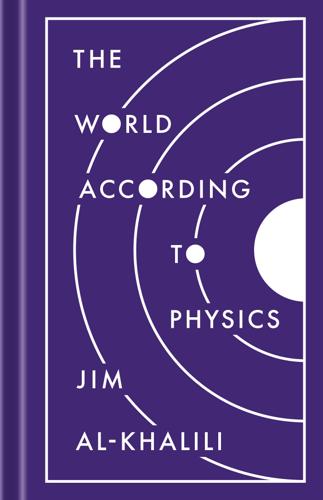
The World According to Physics
by
Jim Al-Khalili
Published 10 Mar 2020
In writing this, I can imagine my colleagues in chemistry and biology rolling their eyes with exasperation at this typical physicist’s sense of self-importance. On the other hand, it is true that many of the early advances in molecular biology and genetics in the twentieth century were made by physicists, such as Leo Szilard, Max Delbrück, and Francis Crick. Crick, in particular, who discovered (with James Watson and Rosalind Franklin) the double helix structure of DNA, was hugely influenced by yet another physicist, Erwin Schrödinger, whose remarkable 1944 book, What is Life?, is still relevant today. On the applied side, physicists have been key to the development of many of the techniques that are used to probe living matter, from X-ray diffraction to MRI scanners.
…
INDEX absolute zero, 102 Adams, Douglas, 5 AdS/CFT (anti–de Sitter/conformal theory correspondence; gauge/ gravity duality), 232–33 alpha particles, 101–2 Anderson, Carl, 103–4 Anderson, Philip, 47 Andromeda galaxy, 98 antigravity, 212–13 antimatter, 7, 13, 103–5 antiquarks, 96n1, 176n2 Anu (Sumerian god), 1 Archimedes, 16, 25 Aristotle, 16, 45, 57–58, 74, 77 artificial intelligence (AI), 161, 235, 240, 250, 255, 256–57 atomic clocks, 39 atomism, 16–17, 45 atoms, 15; composition of, 224; types of, 16–17 axions, 200 Banks, Joseph, 108 Bell, John, 126–27 beta radioactivity, 94, 96 Big Bang, 7, 32, 34, 98–101, 103, 150; cosmology model of, 179; in eternal inflation theory, 216; verification of, 269–70 binary data, 251 binary pulsars, 226 biology, 21, 111, 161, 236, 242–44 biomass, 151 biophysics, 242 bits, 251 black holes, 195, 221, 223, 233; entropy of, 279; evaporation of, 215, 220; formation of, 106; gravitational pull from, 72; Hawking radiation emitted from, 24, 220 block universe model, 68–69, 70–71, 79–81 Bohm, David, 136 Bohr, Niels, 122–23, 124, 125, 132 Boltzmann, Ludwig, 46 Born’s rule, 124 Bose-Einstein condensates, 226 bosons, 6–7, 13, 25, 93, 96–97, 181 Broglie, Louis de, 136 bubble universes, 217–18 Bullet Cluster, 197 butterfly effect, 157–58, 160 carbon, 106 celestial mechanics, 55 CERN (European Organization for Nuclear Research), 174, 228 chaos, 21, 160–61 chemistry, 21, 91, 236, 241–42, 256; quantum theory and, 9, 117, 173, 246 Classical Physics, 111–12 climate, 151, 240, 271, 272–73 cloud technology, 255 COBE satellite, 199 cognitive dissonance, 272 cold dark matter, 179, 200 colour charge, 95–96, 175–76 comets, 18 complexity, 21 complex systems, 161 computer science, 241, 246, 250–58 concordance model, 179 condensed matter, 232, 233, 236 confirmation bias, 272, 277 conformal cyclic cosmology, 215–16 conservation, laws of, 41 consistent histories interpretation, 127 conspiracy theories, 271–72 constrained minimal supersymmetry, 231 Copenhagen interpretation, xiii, 123, 125, 127, 128 Copernican (heliocentric) model, 4, 26–27, 126 Copernicus, Nicolaus, 27 Cosmic Background Explorer (Explorer 66), 199n2 cosmic inflation, 208–19, 276 cosmic microwave background (CMB), 34, 101, 197, 198–99 cosmological constant, 203 cosmology, 12 creation myths, 1 Crick, Francis, 243 CT (computed tomography), 246 curved spacetime, 64n2, 78, 82, 187, 234; dark matter and, 196; gravitational field linked to 72–73, 163, 170; inflation and, 209 dark energy, 7, 9, 193, 202–5, 210, 226, 276 dark matter, 7, 9, 42, 105–6, 179, 193–201, 231, 276 de Broglie–Bohm theory, 137 decoherence, 133, 135 Delbrück, Max, 243 Democritus, 16, 44–45 Descartes, René, 55, 57–58, 59–60, 74, 77 determinism, 155–58 diffraction, 114 Dirac, Paul, 13, 14, 103, 171–72 Dirac notation, 124 disorder, 21 DNA, 243, 249 Doppler effect, 63 double helix, 243 doubt, in scientific inquiry, 266–67, 274 dwarf galaxies, 197 dynamical collapse interpretation, 127 economics, 161 Einstein, Albert, xiv, 124, 222–23, 280; field equations of, 82, 129; light quanta hypothesized by, 112–13; Newtonian theory replaced by, 8, 36, 61; nonlocality and entanglement mistrusted by, 131–32; as philosophical realist, 130; photoelectric effect explained by, 29–30; thought experiments by, 56.

Structures: Or Why Things Don't Fall Down
by
J. E. Gordon
Published 1 Jan 1978
The lilies of the field toil not, neither do they calculate, but they are probably excellent structures, and indeed Nature is generally a better engineer than man. For one thing she has more patience and, for another, her way of going about the design process is quite different. In living creatures the broad general arrangement or lay-out of the parts is controlled during growth by the R N A-DNA mechanism – the famous ‘double helix’ of Wilkins, Crick and Watson.* However, in each individual plant or animal, once the general arrangement has been achieved, there is a good deal of latitude about the structural details. Not only the thickness, but also the composition of each load-carrying component is determined, to a considerable extent, by the use which is actually made of it and by the forces which it has to resist during life.† Thus the proportions of a living structure tend to become optimized with regard to its strength.
…
However, one would think that stress concentrations must be of significance in orthopaedic surgery, especially when the surgeon fits a stiff metal prosthesis to a relatively flexible bone. NOTE. In Inglis’s formula (p. 67) L is the length of a crack proceeding inwards from the surface, i.e. half the length of an internal crack. * * * *See, for instance, The Double Helix, by James D. Watson, Weidenfeld & Nicolson, 1968. †The process also works in reverse; the bones of astronauts lose calcium and become weaker after a period of weightlessness in space. * Almost the only woman to have gained distinction in elasticity, Mademoiselle Sophie Germain (1776-1831), was French.
…
If this happens, then the flames will penetrate down the crack and destroy the case. This naturally results in a sensational explosion as another Polaris bites the dust. Round about 1950, it occurred to some of us that it would be advantageous to make the rocket case, not from a metal tube, but in the form of a cylindrical vessel, wound from a double helix of strong glass fibres, bonded together with a resin adhesive. If the fibre angles are calculated correctly, it is possible so to arrange things that the change of diameter of the tube under pressure is small. It is true that, in such a situation, the tube will elongate more than it otherwise would, like Mile Vionnet’s waists, but, for various reasons, a longitudinal extension is less damaging to the propellant.
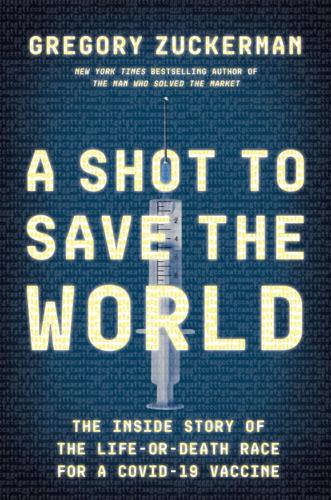
A Shot to Save the World: The Inside Story of the Life-Or-Death Race for a COVID-19 Vaccine
by
Gregory Zuckerman
Published 25 Oct 2021
Suspicious of his fellow passengers, Smith kept a watchful eye on his surroundings, barely sleeping the whole trip. “It was a long two days,” he says. Smith arrived to a campus abuzz over remarkable advances in molecular biology and genetic engineering. He and his classmates listened to lectures by Francis Crick and James Watson, who had been the first to describe the double-helix structure of DNA molecules. They also studied a hand-stapled preprint version of Watson’s Molecular Biology of the Gene and read from James Crow’s Genetic Notes, books that would revolutionize the field of genetics. Smith was hooked. “I discovered how complex biological systems are, how interrelated everything is,” he says.
…
They appreciated that Bancel was honest about their work and thrived in the pressure-packed atmosphere. Science is a combative field; harsh criticisms are commonplace; even physical confrontations occur. Some fights, such as the time a furious Rosalind Franklin came from behind a lab bench at Cambridge University to charge at a cowering James D. Watson, just before they unveiled DNA’s double-helix structure, are legendary.3 Bancel expected a lot from himself. Staffers could see that he genuinely believed Moderna had a unique chance to improve the way patients received medicines and that he worried about squandering an enormous opportunity, a concern many of them shared. He impressed these staffers with his focus on the future.
…
Stéphane Bancel, “The Other Side Speaker Series w/ Stéphane Bancel,” interview by Jodi Goldstein, Harvard Innovation Labs, April 19, 2016, YouTube video, https://www.youtube.com/watch?v=-P53wVGfvjw. 2. Damian Garde, “Ego, Ambition, and Turmoil: Inside One of Biotech’s Most Secretive Startups,” STAT News, September 13, 2016, https://www.statnews.com/2016/09/13/moderna-therapeutics-biotech-mrna. 3. James D. Watson, The Double Helix: A Personal Account of the Discovery of the Structure of DNA (New York: Simon & Schuster, 2001). 4. Catherine Elton, “Does Moderna Therapeutics Have the NEXT Next Big Thing?,” Boston Magazine, February 26, 2013, https://www.bostonmagazine.com/health/2013/02/26/moderna-therapeutics-new-medical-technology/3/. 5.
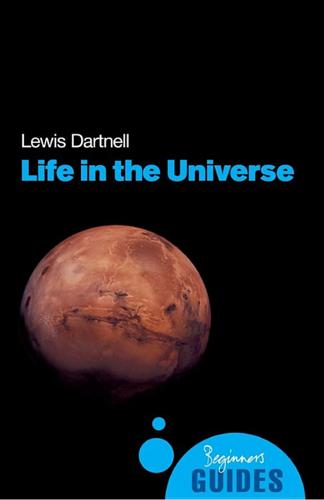
Life in the Universe: A Beginner's Guide
by
Lewis Dartnell
Published 1 Mar 2007
Both are composed of three parts: a sugar, a phosphate group which binds the sugars into a strand and the base. It is relatively easy to change the bases within a DNA strand; experiments have been performed to systematically substitute lab-made bases – changing the letters of the genetic alphabet. The structure of the DNA is not overly distorted, it still forms a double helix, despite the bonding between the base rungs being different. The reason why alien DNA probably would not use these non-standard alternatives is that they are less likely to be formed by the prebiotic processes thought to occur in interstellar gas clouds or on primordial planets. Most experiments into alternatives focus on RNA, as is it thought to pre-date DNA in the evolution of life.
…
The bonding between the base pairs was woefully inadequate; not only was it very weak but the bases were much less particular about which they paired with – A would happily bond with G, rather than only withT. The larger sugar units are probably just too bulky and interfere with close bonding. The results from four-carbon sugars were much more exciting. The polymer TNA, made using the sugar threose, allows base pairing of a similar stability and accuracy to RNA and forms into a perfect double helix. TNA can even cross-pair with RNA and DNA, something that was impossible for most of the other alternatives. This has raised a lot of interest, due to the simpler nature of TNA, based as it is on a four-carbon sugar. Such a sugar would form more easily in prebiotic reactions and so TNA is much more likely to have arisen on the early Earth.

Ageless: The New Science of Getting Older Without Getting Old
by
Andrew Steele
Published 24 Dec 2020
They’re very similar to the 2013 hallmarks (I’ve added two to the list, and grouped two together, meaning I’ve got one more hallmark overall), and follow the same rules: they increase with age, aggravating them worsens health and ameliorating them improves it. Let’s take a tour of them, starting with life’s most fundamental molecule. 1. Trouble in the double helix: DNA damage and mutations Inside most cells of your body lie two metres of DNA, an instruction manual of six billion molecular letters – A, T, C and G, known as bases – which contains all the information needed to build you. Incredibly, in spite of its two-metre length, it’s squeezed into a nucleus just a few millionths of a metre across. DNA’s double-helix shape is the most famous molecular structure in the world. It adorns everything from biology textbooks to company logos, serving as a visual shorthand for ‘science’.
…
DOI: 10.1159/000342197 ageless.link/ugcyxw or on the website of de Grey’s SENS Research Foundation: Intro to SENS research (SENS Research Foundation) ageless.link/owtoc3 or in his 2008 book Aubrey de Grey and Michael Rae, Ending Aging: The Rejuvenation Breakthroughs That Could Reverse Human Aging in Our Lifetime (St Martin’s Griffin, 2008) ageless.link/yvitd6 … the Hallmarks of Aging … López-Otín et al., 2013 ageless.link/m3gh76 1. Trouble in the double helix: DNA damage and mutations A good review of the evidence for DNA damage and mutations mattering in ageing can be found in Alex A. Freitas and João Pedro de Magalhães, ‘A review and appraisal of the DNA damage theory of ageing’, Mutat. Res. 728, 12–22 (2011). DOI: 10.1016/j.mrrev.2011.05.001 ageless.link/epodzw … 100,000 assaults on its genetic code every day George A.
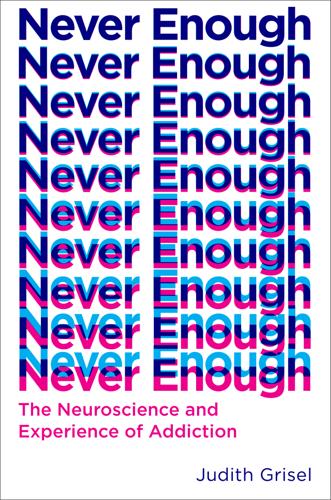
Never Enough: The Neuroscience and Experience of Addiction
by
Judith Grisel
Published 15 Feb 2019
Epigenetics Open-mindedness and humility are necessary attributes of any good scientist, and as Carl Sagan noted, “in science it often happens that scientists say, ‘my position is mistaken,’ and then they…actually change their minds.”1 It took cloning our genome, yet still mostly failing to link genes to addictive behavior, for us to appreciate how overly simplistic our view of the hereditary units had been. We assumed that breaking the genetic code would result in a fairly straightforward path to prevention and treatment, but in fact very little has been explained, let alone cured. Part of this may be due to the fact that we inherit more than a sequence of DNA from our ancestors: the double helix of spiraling nucleotides carries another set of instructions that are also passed down. This code consists of epigenetic—literally, on top of DNA—modifications that regulate the activity of the DNA and constitute a cellular memory of our ancestors’ experiences. We now realize that epigenetic modifications overlaying the sequence of nucleotides, along with other indications of experience in the form of things like micro RNAs (which block RNA, the messenger that carries instructions from DNA), can have a big influence on which genes are translated into proteins, and when.
…
For example, Rachel Yehuda and her colleagues have data suggesting that children of Holocaust survivors might carry epigenetic modifications from their parents that make them primed for stress.2 Others have demonstrated that progeny from families enduring famine inherit a tendency toward metabolic thriftiness that predisposes them toward obesity.3 As if, to err on the safe side, our DNA were prepared to help some of us carry a little extra cushion. We’re beginning to scratch the surface on how inherited modifications to the DNA double helix contribute to complex traits like addiction, and data are accumulating to suggest that risk factors may be passed along epigenetically. When potential parents smoke marijuana, for instance, epigenetic changes could be priming subsequent generations for addiction. Conducting longitudinal studies in humans to identify such transgenerational impacts presents challenges, obviously.
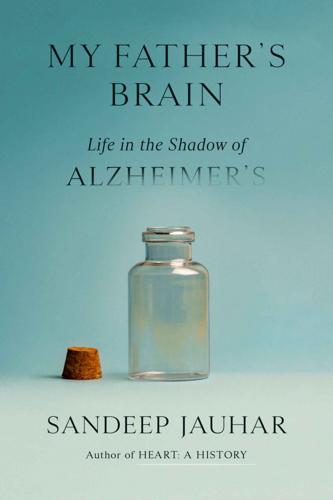
My Father's Brain: Life in the Shadow of Alzheimer's
by
Sandeep Jauhar
Published 11 Apr 2023
On the walls were random mementos of old travels: a Tibetan plate, a Swiss clock, all reproductions, distant memories. My father stopped short when he saw me. “Sit down,” he said, pointing to the dining table. “Dad, I don’t have much—” “Sit down,” he cried. On the table lay my father’s laptop and a copy of James Watson’s The Double Helix that I had presented to him the previous weekend— on my own birthday, no less. He had written the words “I received this precious gift from Sandeep!” on the cover, but otherwise the book appeared untouched. I sat down on a high-backed chair still covered, more than a year later, with plastic wrap.
…
.; anosognosia in; brain atrophy in; cardiovascular risk factors and; care for, see dementia care; classification system for; correlation of brain damage to; fear of; frontotemporal; genetics in; hallucinations or delusions in; historical views on; lowering risk of; mixed-type; passivity in; perseverative behaviors in; prevalence of; research on; social isolation and; syphilis and; types of; urinary infections in; vascular; wandering and; see also Alzheimer’s disease Dementia (Swinton) dementia care; caregivers; costs of; day programs; at Hogeweyk; in Japan; medications; reality orientation; reminiscence therapy; validation therapy Depakote Descartes, René De Sica, Vittorio Deter, Auguste Deter, Carl diet Dilantin doctor-patient relationship “double effect” doctrine Double Helix, The (Watson) Edge, Kenneth and Winifred Egypt emotions Enlightenment Esquirol, Jean-É tienne Dominique Essay Concerning Human Understanding, An (Locke) euthanasia Exelon exercise explicit or declarative memory family caregivers family life fear Food and Drug Administration Forgetting, The (Shenk) France frontal lobes Galen Gandhi, Indira Garner, Penny genetics Gordon, Marc government support Greeks, ancient Green Revolution Grü nthal, Ernst Gulliver’s Travels (Swift) Gupta, Adarsh Harvard Aging Brain Study Harwinder (caregiver) Hayworth, Rita health care system heart heart disease; risk factors for Hebb, Donald herpes Hicksville, Long Island; author’s parents’ move to; House of Dosas in Hindustan Times hippocampus Hofstra University Hogeweyk, The hospice care; for author’s father Hospice Care Network of New York hospitalization costs House of Dosas Hume, David hypercognitive world hypothalamus identity and personhood; malignant social psychology and immune system implicit or procedural memory India; “brain drain” out of; Green Revolution in; Jauhar family’s move to America from; Jauhar Foundation for Social Upliftment and infections inflammation insurance intellectual disability intelligence James, Oliver James, William Japan Jauhar, Pia (daughter) Jauhar, Prem (father): bereavement group and; blood pressure of; brain atrophy in; brain surgery of; character of; cleaning lady and; CT scan of; day program for; on death; death of; delusions of; dementia information collected by; diagnoses of; documents and mementos of; driving of; early life of; early signs of dementia in; end-of-life care wishes of; falls of; Fargo home of; finances and money management of; garden of; Harwinder and; hospice care for; independent living and; IV for; marriage of; medications for; mini-mental state examination of; morphine for; mother of; move to America; move to Hicksville, Long Island; MRI scan of; neighbor’s email about; as news junkie; nursing home or assisted-living facility for; photographs of ; progression of dementia in; retirement of; retirement party of; scholarships set up by; scientific career of; self-awareness diminished in; short-term memory loss in; sister of; social isolation of; subdural hematoma of; supermarkets and; video camera and; wandering compulsion in; wife’s caregivers and; wife’s death and; wife’s funeral, cremation, and ashes and Jauhar, Raj (mother); caregivers of; cleaning lady of; death of; death of, husband’s responses to; end-of-life care wishes of; Fargo home of; finances of; funeral, cremation, and ashes of; husband’s early memory problems and; independent living and; marriage of; move to America; move to Hicksville, Long Island; neighbor’s email about; Parkinson’s disease of; photographs of; supermarkets and Jauhar, Rajiv (brother); father’s end-of-life care and; mother’s death, funeral, and ashes and Jauhar, Sandeep: childhood of; grandparents of; medical career of; sister of, see Suneeta Jauhar, Sonia (wife) Jauhar, Vandana (wife of Rajiv) Jauhar Foundation for Social Upliftment Jewish Community Center Journal of Neurology, Neurosurgery and Psychiatry Journal of the American Medical Association Jyotish, Prem Katzman, Robert King Lear (Shakespeare) Kitwood, Tom Klonopin Knight Alzheimer’s Disease Research Center “knowing that” vs.
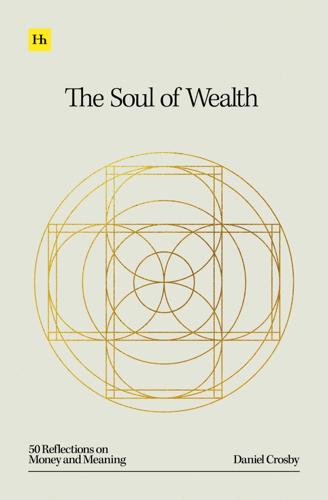
The Soul of Wealth
by
Daniel Crosby
Published 19 Sep 2024
Bestselling author Morgan Housel cites several examples in his piece, “Paying Attention”: Sherlock Holmes says in the book, The Study of Scarlet: I consider that a man’s brain originally is like a little empty attic, and you have to stock it with such furniture as you choose. A fool takes in all the lumber of every sort that he comes across, so that the knowledge which might be useful to him gets crowded out, or at best is jumbled up with a lot of other things so that he has a difficulty in laying his hands. Says Housel, “Francis Crick, who discovered the double helix structure of DNA, was once asked what it takes to win the Nobel Prize. He responded: ‘Oh it’s very simple. My secret had been I know what to ignore.’” And author John Barry writes: “Einstein reportedly once said that his major scientific talent was his ability to look at an enormous number of experiments and journal articles, select the very few that were both correct and important, ignore the rest, and build a theory on the right ones.”
…
Listen to Women British chemist and crystallographer Rosalind Franklin was a young scientist in the 1950s. Her work was partly devoted to producing high-quality X-ray images of DNA fibers. Franklin’s most famous image, the iconic Photograph 51, together with her other breakthroughs, provided compelling evidence of DNA’s double helix structure. Franklin’s X-ray diffraction experiments and the findings she drew from them were both utilized and then marginalized by her male colleagues. James Watson and Francis Crick—without the permission of Franklin, but relying on her efforts—constructed their own model of DNA’s three-dimensional molecular arrangement.
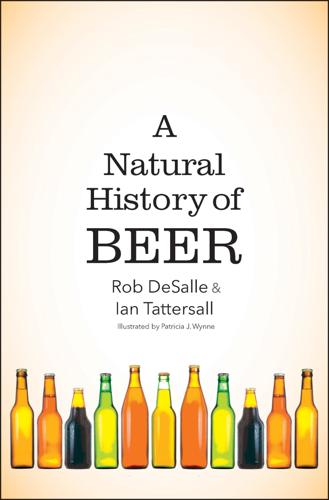
A Natural History of Beer
by
Rob DeSalle
Published 14 Jun 2019
Diagram of a short stretch of double helical DNA. There are four bases or nucleotides on each of the two strands of the double helix. The base pairing of the nucleotides (A with T, and G with C) is also shown. The left strand runs top to bottom from 5prime to 3prime, and the right strand runs top to bottom from 3prime to 5prime. Imagine two complementary strands of DNA, twenty bases in length. They will stick tightly to one another, and coil around each other in a double helix; and it is the order of the bases along them that will determine each individual molecule’s function. DNA works in pretty much the same way as our western alphabet, except that the “words” are only three letters long, and of course there are only four letters with which to work.

12 Bytes: How We Got Here. Where We Might Go Next
by
Jeanette Winterson
Published 15 Mar 2021
James Watson, part of the team who discovered the double helix, and who won the Nobel Prize in 1962 for doing so, stated in 2007 that African races were not as intelligent as white races. ‘There’s a difference between Blacks and whites on IQ tests. I would say the difference is genetic.’ Watson also had this to say about women: ‘People say it would be terrible if we made all girls pretty. I think it would be great.’ ‘We’, I suppose, means men. But this is the man who repeatedly under-represented the work of Rosalind Franklin, the genius crystallographer whose famous Photo 51 determined the defraction pattern of the double helix. It seems to have bothered Watson, according to his autobiography, that she didn’t wear make-up or care about her clothes
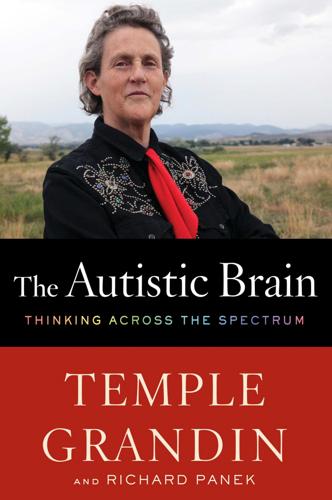
The Autistic Brain: Thinking Across the Spectrum
by
Temple Grandin
and
Richard Panek
Published 15 Feb 2013
I saw peer-reviewed research articles about it in Science and Nature. Junk DNA is not a nickname, even though it may sound like one; it is an actual scientific term. It’s called junk DNA because, unlike the sequences of DNA that code for proteins, these sequences didn’t seem to have any purpose. That idea was ridiculous to me. The double helix had always reminded me of a computer program, and you would never write code that had a lot of unnecessary stuff. The “junk” had to serve a purpose. It had to be something like the gene’s operating system. If you go into your computer and find a lot of weird files, you might wonder what they’re for, but you wouldn’t conclude that they served no purpose.
…
The Human Genome Project told us what the genome was. Encode has begun to tell us what it does. But what really interested me was the article’s explanation of how the genome does what it does. In order to appreciate its significance, you first have to understand what DNA looks like. We’ve all seen the popular image of the double helix: that corkscrew of seemingly endless combinations of A (adenine), C (cytosine), G (guanine), and T (thymine) bases. But that Tinker Toy model represents a strand of DNA that’s stretched out. A strand of DNA completely unfurled would be about ten feet long. But it’s not unfurled. Instead, DNA is so tightly coiled that it fits inside the microscopic cell nucleus.

Fully Automated Luxury Communism
by
Aaron Bastani
Published 10 Jun 2019
By the middle of the twentieth century our knowledge of the field was so impressive that humans grasped how they might be able to accelerate a process seen throughout nature – evolution – inside a laboratory. While DNA was understood to be responsible for heredity from 1952, and Crick and Watson’s double helix model was formulated the following year, the first genetically-engineered animals weren’t produced until the early 1970s. That breakthrough was arguably as profound as the transistor, the integrated circuit and even Watt’s steam engine. Within just a few short decades theoretical science had become applied technology.
…
Bradford, 64–5 dementia, 143 Dementia Tax, 142 democratic people, 187 Deutsche Bank, 103, 105 Deutscher, Isaac, 243 Diamandis, Peter, 129, 135, 136 diesel vehicles, 105 digitisation, 40 Discorsi (Machiavelli), 95 disruptions. See also specific disruptions energy and, 94–6 food, surplus and, 159–60 d.light, 109 DNA, 144, 147, 150, 151, 241–2 double helix model, 149 Doug, 7–8 Drucker, Peter, 51, 59–60, 79, 85, 232 dwarf planets, 130 E. coli, 148n Earth BioGenome Project, 146 East Coast Main Line, 203–4 economic globalisation, 197–8 economies relocalisation of, 207–8 worker-owned, 207–8, 211–12, 219 egg whites, cellular agriculture and, 177–9 Ehrlich, Paul, 167 The Population Bomb, 166 Eisenhower, Dwight, 136n, 137 elderly care, 92 electoral politics, 195 electoralism, society and, 194–6 elite technocracy, 185–8 Elysium (film), 154–8 Encyclopaedia Britannica, 235 Endless West, 180 Endogenous Technological Change (Romer), 63 ‘The End of History’ (Fukuyama), 15–17 The End of History and the Last Man (Fukuyama), 16 energy consumption of, 99–100 cost of storage technologies for, 105 disruption and, 94–6 free, 99–101 future of, 105–6 insulation of, 113–15 minimising consumption of, 220 post-scarcity in, 94–116 renewable (See renewable energy) solar, 101–5 wind, 111–13 energy transition, politics of, 218 Engels, Friedrich The Communist Manifesto, 51–2 England, 114.
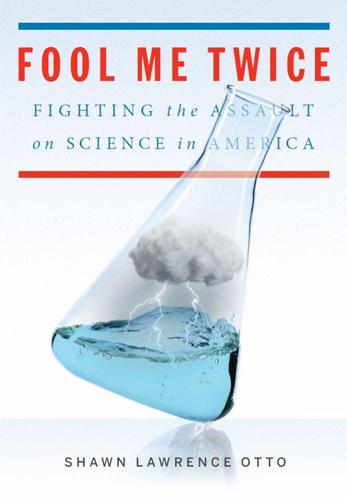
Fool Me Twice: Fighting the Assault on Science in America
by
Shawn Lawrence Otto
Published 10 Oct 2011
The “inquisition tyrannies” of the church’s crackdown in response to Galileo had “dampened the glory of Italian wits; that nothing had been there written, now these many years, but flattery and fustian.”10 By the end of the seventeenth century, as Anglican clergy in London were preaching Newton’s science, Italian scientists were standing trial in Naples for stating “that there had been men before Adam composed of atoms equal to those of other animals.”11 THE DNA OF WESTERN THOUGHT Each arm of this double helix of Western Christianity—Roman Catholicism and the emerging Protestantism—embodied the two distinctly different worldviews of the authoritarian and the antiauthori-tarian: that rules and methods were either proscribed from on high or built up by individuals in consensus. These two views had always been present, but they were greatly amplified in 1517, when Martin Luther posted his Ninety-Five Theses* challenging church authorities to debate principles that seemed defensible only by virtue of the church’s authority over its subjects.
…
After the war, the feeling that our ability with science had outstripped our moral and ethical development as a society, perhaps as a species, was not limited to physicists, but rather was spread across the sciences. The Austrian Jewish biochemist Erwin Chargaff immigrated to the United States to escape the Nazis in 1935. His work would lead to James Watson and Francis Crick’s discovery of the double-helix structure of DNA. Chargaff’s autobiography described his changed feelings about science. The double horror of two Japanese city names [Hiroshima and Nagasaki] grew for me into another kind of double horror: an estranging awareness of what the United States was capable of, the country that five years before had given me its citizenship; a nauseating terror at the direction the natural sciences were going.
…
Hubble’s revolutionary discovery of the expansion of the universe also extended from ideas that were talked about for years. The redshift was first noted by American astronomer Vesto Slipher in 1912—nearly two decades before Hubble’s discovery. Galileo’s revolution was an extension of Copernicus’s writings of some seventy years before, which were widely discussed. The discovery of the double-helix structure of DNA was revolutionary, but it too was an extension, building on the work of biochemist Erwin Chargaff. It is true that science does not proceed linearly; it proceeds more like a pack of dogs sniffing out a fox, but that is because of its trial-and-error, observational approach that adopts whatever new tools become available, applies metaphor, builds on the latest recorded knowledge (“the literature,” as scientists call it), and makes and tests bold predictions to better see the reality of the thing instead of our prejudices or assumptions or beliefs or opinions or hopes and dreams.
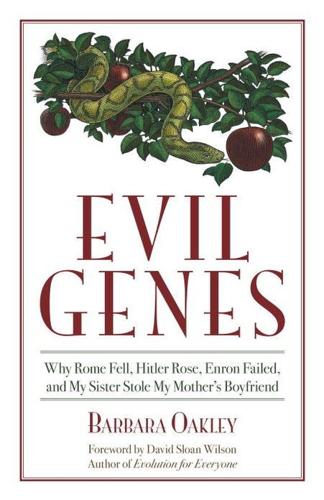
Evil Genes: Why Rome Fell, Hitler Rose, Enron Failed, and My Sister Stole My Mother's Boyfriend
by
Barbara Oakley Phd
Published 20 Oct 2008
But because DNA is extraordinarily slender—thousands of times thinner than a hair—all forty-six human chromosomes are easily wadded up like a molecular-sized ball of string inside the cell's nucleus. Fig. 3.1. The 46 human chromosomes DNA molecules are not only long and skinny but also very simple in structure. The famous DNA “double helix” consists of two parallel (but twisted) chains of molecular building blocks called nucleotides. There are only four kinds of nucleotides, and what makes the four different from one another are parts of the nucleotides called bases—adenine, guanine, thymine, and cytosine. The four DNA bases are almost always abbreviated A, G, T, and C.
…
Judith Rich Harris, author of The Nurture Assumption, gave me gentle impetus at the beginning of this project—for her graciousness I am utterly grateful. I could not have written this book if she had not “broken trail.” At Prometheus Books, Julia DeGraf's copy-editing skills are remarkable, and deeply appreciated. Grace Zilsberger's cover design is inspired (those who look closely might spot the DNA double-helix on the snake's back). Chris Kramer, Jill Maxick, Rich Snyder, Gretchen Kurtz, Mark Hall, Marcia Rogers, Bruce Carle, and Lynn Pasquale round out the crew of consummate Prometheus professionals who I've been fortunate indeed to work with. No question—Prometheus president Jonathan Kurtz runs a taut ship.
…
Slotten, The Heretic in Darwin's Court: The Life of Alfred Russel Wallace (New York: Columbia University Press, 2004), p. 159. 11. Brackman, Delicate Arrangement, p. 34. 12. Michael Shermer, In Darwin's Shadow: The Life and Science of Alfred Russel Wallace: A Biographical Study on the Psychology of History (New York: Oxford University Press, 2002). 13. James D. Watson, The Double Helix: A Personal Account of the Discovery of the Structure of DNA (New York: Penguin, 1970). Watson's appalling mischaracterization of Rosalind Franklin is well described in Brenda Maddox, Rosalind Franklin: The Dark Lady of DNA (New York: HarperPerennial, 2003). 14. Shreeve, Genome War, p. 85. 15.

The Age of Spiritual Machines: When Computers Exceed Human Intelligence
by
Ray Kurzweil
Published 31 Dec 1998
It has been prolific, designing millions of species of breathtaking diversity and ingenuity And that’s just here on Earth. The software programs have been all written down, recorded as digital data in the chemical structure of an ingenious molecule called deoxyribonucleic acid, or DNA. DNA was first described by J. D. Watson and E H. C. Crick in 1953 as a double helix consisting of a twisting pair of strands of polynucleotides with two bits of information encoded at each ledge of a spiral staircase, encoded by the choice of nucleotides.1 This master “read only” memory controls the vast machinery of life. Supported by a twisting sugar-phosphate backbone, the DNA molecule consists of between several dozen and several million rungs, each of which is coded with one nucleotide letter drawn from a four-letter alphabet of base pairs (adenine-thymine, thymine-adenine, cytosine-guanine, and guanine-cytosine).
…
Watson and Francis H. C. Crick.Watson and Crick wrote “The Molecular Structure of Nucleic Acid: A Structure for Deoxyribose Nucleic Acid” published in the April 25, 1953 issue of Nature. For more information on the race by various research groups to discover the molecular structure of DNA, read Watson’s book, The Double Helix (New York: Atheneum Publishers, 1968). 2 Translation starts by unwinding a region of DNA to expose its code. A strand of messenger RNA (mRNA) is created by copying the exposed DNA base-pair codes. The appropriately named messenger RNA records a copy of a portion of the DNA letter sequence and travels out of the nucleus into the cell body There the mRNA encounters a ribosome molecule, which reads the letters encoded in the mRNA molecules and then, using another set of molecules called transfer RNA (tRNA), actually builds protein chains one amino acid at a time.
…
The Cybernetic Imagination in Science Fiction. Cambridge, MA: MIT Press, 1980. Watanabe, Satoshi. Pattern Recognition: Human and Mechanical. New York: John Wiley and Sons, 1985. Waterman, D. A. and E Hayes-Roth, eds. Pattern-Directed Inference Systems. Out of print. Watson, J. B. Behaviorism. New York: Norton, 1925. Watson, J. D. The Double Helix. New York: Atheneum, 1968. Watt, Roger. Understanding Vision. London: Academic Press, 1991. Webber, Bonnie Lynn and Nils J. Nilsson, eds. Readings in Artificial Intelligence. Los Altos, CA: Morgan Kaufmann, 1981. Weinberg, Steven. Dreams of a Final Theory. New York: Pantheon Books, 1992. _________.
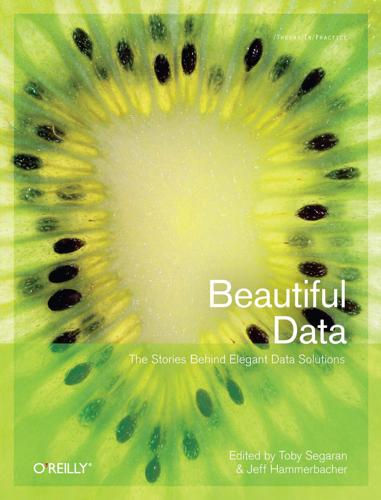
Beautiful Data: The Stories Behind Elegant Data Solutions
by
Toby Segaran
and
Jeff Hammerbacher
Published 1 Jul 2009
Like all humans, you are diploid, with two copies of each chromosome, one from your father and one from your mother. Added to these are the sex chromosomes, two X chromosomes for a female, or an X and a Y chromosome for a male. The primary components of these genetic data stores are two strands of DNA, intertwined in the charismatic double helix, as seen in Figure 15-1. F I G U R E 1 5 - 1 . A short section of DNA, rendered in POV-Ray from PDB file 1BNA, doi: 10.2210/pdb1bna/pdb. (See Color Plate 51.) Each strand of DNA is made up of a chain of bases. There are four bases in DNA—Adenine, Guanine, Cytosine, Thymine (or A, G, C, and T)—and it is in this quaternary system that the database is encoded.
…
For additional reliability, you might mirror one hard drive on another in a RAID1 array. With two hard drives that should be identical, if one goes wrong it can be replaced with another and the data put back. The cell contains its own machinery to detect and repair DNA damage. Recall that the DNA molecule exists as a double helix, with each base on one strand complementary to the matching base on the other. If damage is done to one strand, it can be repaired by using the other as a template (the RAID1 approach). Other mechanisms exist to repair more extensive damage. 246 CHAPTER FIFTEEN Download at Boykma.Com If the damage cannot be repaired, then the tumor suppressor genes kick in, preventing cell division, and ultimately initiating programmed cell death, and hopefully the cell can be replaced (the SMART approach).
…
Watson and Crick noticed this in the now famous understatement in their paper revealing this structure of DNA: “It has not escaped our notice that the specific pairing we have postulated immediately suggests a possible copying mechanism for the genetic material.” Each DNA strand is a template for the other, so to make copies of a double helix, the cell can separate the two and build up a new strand on each template using each base’s complement. When a cell divides to make two new cells, this is exactly what happens (see Figure 15-3). New strand New strand DNA replication G C T A F I G U R E 1 5 - 3 . DNA replication proceeds by using the original two strands (white) as templates for two new strands (black), resulting in two new double-stranded molecules (image from http://genome.gov/glossary.cfm).
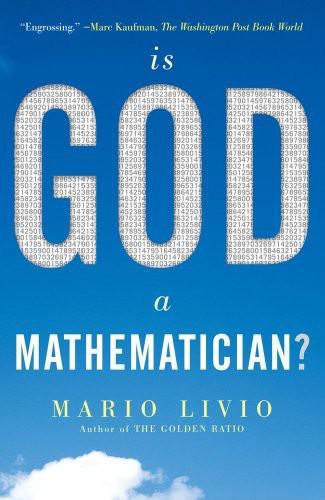
Is God a Mathematician?
by
Mario Livio
Published 6 Jan 2009
It consists of two very long strands that are intertwined and twisted around each other millions of times to form a double helix. Along the two backbones, which can be thought of as the sides of a ladder, sugar and phosphate molecules alternate. The “rungs” of the ladder consist of pairs of bases connected by hydrogen bonds in a prescribed fashion (adenine bonds only with thymine, and cytosine only with guanine; figure 58). When a cell divides, the first step is replication of DNA, so that daughter cells can receive copies. Similarly, in the process of transcription (in which genetic information from DNA is copied to RNA), a section of the DNA double helix is uncoiled and only one DNA strand serves as a template.
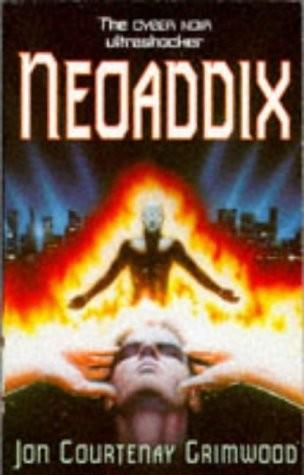
NeoAddix
by
Jon Courtenay Grimwood
Published 16 Jan 1997
While Maxine slept, tonight’s news was happening closer to home, down on the banks of the River Seine, where time froze and then stopped for Parisian tramp Louis Lepan as steel fingernails reached for his throat. For once the dim starlight was not washed out by the glare of Coca Cola’s revolving hologram, nor by the neon cross & double helix of the Church Geneticist. Communard terrorists had blown up the Rue Jacob substation, leaving darkness. The Prince smiled, an old man’s grin. He at least welcomed that night’s power cut… Spearing quickly through krycoid cartilage, the Prince’s fingers closed on the gnarled, stick-like column of the tramp’s upper spine and snapped it like a twig.
…
Johnnie knew that, because he’d had time to watched it happen before the surgery’s wall-mounted flat screen Toshiba exploded in the heat, showing him with shards of crystal polycarbon. Once free of the slab, he’d grabbed a blue scrub suit to cover his frozen body and decided to get out of there, fast. The fire fighters weren’t a problem, they parted respectfully enough when they spotted the cross and double helix on his borrowed scrub suit, hustling him out to the safety of the open courtyard. Johnnie was actually safely out through the main gate into the teeming crowd outside when the first police hover screamed towards him along Rashid Street, loudspeaker blaring. As the crowd around him thinned like wind-blown smoke, Johnnie found himself briefly outlined in the halogen beam of a police searchlight and tumbled sideways on instinct, rolling safely back inside the courtyard as a slug of recycled rubber whistled over his head.
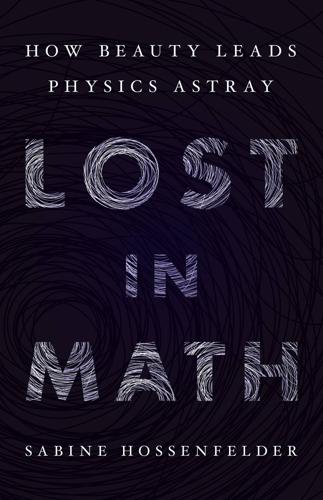
Lost in Math: How Beauty Leads Physics Astray
by
Sabine Hossenfelder
Published 11 Jun 2018
But our brains didn’t develop to serve science; they developed to serve us. And what served us well during evolution does not always serve us well in science. Math Piled on Top of Math Physicists aren’t the only scientists who chase after beauty. James Watson, for example, recalls that Rosalind Franklin was convinced that DNA was structured as a double helix because it was “too pretty not to be true.”3 Biologists preferentially study pretty animals.4 And the mathematician David Orrell has argued that climate scientists favor elegant models to the detriment of accuracy.5 But chasing after beauty isn’t a theory of everything. If there isn’t a cognitive bias for trying to kill too many birds with one stone, there should be one, and I’ll try not to fall for it.
…
PBS. www.pbs.org/wgbh/nova/blogs /physics/2015/04/physics-needs-philosophy/. Chapter 10: Knowledge Is Power 1. Hooper D. 2008. Nature’s blueprint. New York: Harper Collins, p. 5. 2. Rutjens BT, Heine SJ. 2016. “The immoral landscape? Scientists are associated with violations of morality.” PLoS ONE 11(4):e0152798. 3. Watson JD. 2001. The double helix: a personal account of the discovery of the structure of DNA. New York: Touchstone, p. 210. 4. Fleming PA, Bateman PW. 2016. “The good, the bad, and the ugly: which Australian terrestrial mammal species attract most research?” Mammal Rev. 46(4):241–254. 5. “I would venture that the main reason why these statistical time-series techniques have not been incorporated for use in official climate forecasts is related to aesthetics—a topic which I doubt comes up much at meetings of the IPCC.”
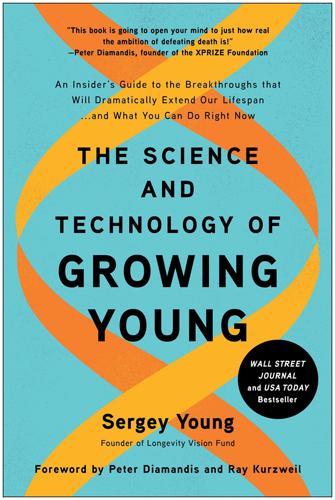
The Science and Technology of Growing Young: An Insider's Guide to the Breakthroughs That Will Dramatically Extend Our Lifespan . . . And What You Can Do Right Now
by
Sergey Young
Published 23 Aug 2021
Despite the thousands of supplement companies that continue to preach the youthful benefits of antioxidants, the idea that they can stop cell damage has largely been discredited. THE “ENDS” OF AGING: The discovery of another component of aging—telomeres—won Australian scientist Elizabeth Blackburn a Nobel Prize in 2009. See, whenever a cell divides, the famous DNA double helix unzips itself into two single strands, each of which is replicated to complete two full new sets. This unzipping and recomposing business takes place inside of you about two trillion times every day. But to err is human, even on a cellular level. Mutations happen. Too many mutations result in loss of function, disease, and death.
…
An entire book could be written about these hallmarks, but for our purposes it is only important to know that each of the hallmarks meets three essential criteria set by López-Otín’s research team: they present themselves during normal aging; they speed up aging when researchers experimentally aggravate them; and blocking them in some way tends to slow down aging and/or increase lifespan. In a very simplified form, the lucky characteristics that made the cut were as follows: 1.Genomic instability: You probably learned in high school that the genes in your body (your genome) are made of strands of DNA—that double-helix-shaped material that serves as the “master plan” for all of your characteristics and functions. You may also remember that DNA copies itself during cell division and that mutations sometimes occur due to natural error or exposure to radiation or other toxic influences from inside or outside of the body.

Red Plenty
by
Francis Spufford
Published 1 Jan 2007
The goo floats in, and finds inside the nucleus a double helix which has been unzipped into two separate strands, each of which is going to grow back into a complete copy of the genome. Of all the random blobs of goo in the random rainstorm, here comes the blob that suckers onto Chromosome 11 in the position to create the always-on version of ras, just as the unzipped halves of Chromosome 11 are waving loose. It’s too late for the editorial enzyme: there’s nothing to correct the mutant C against. Along the strand instead travels a polymerase, a construction enzyme, steadily building out the other half of a new double helix. And when it reaches the C, it obligingly supplies a new counterpart for the other side which is a match, which is a perfect opposite.
…
But it’s the switch that has been altered by having C where G used to be in this mutant version of ras. C instead of G at this one particular point jams the ras gene at ‘on’ – throws the lever for unstoppable growth, and then breaks the lever. But it’s all right. This copy of ras may be corrupted, but the cell has a failsafe mechanism built into the shape of the DNA molecules. The helix is a double helix. On the other side of the double corkscrew there runs another strand of Gs, Ts, Cs and As which carries all the information of the genome, only in reverse, like the negative of a photograph or the mould a jelly was turned out of; and the cell, which is used to operating in an environment of small chemical accidents, operates a handy editorial enzyme that moves up and down the chromosomes checking that the two strands remain perfect opposites.
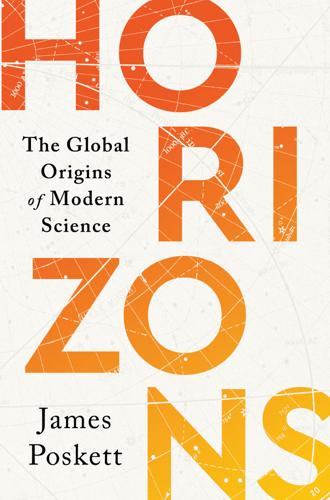
Horizons: The Global Origins of Modern Science
by
James Poskett
Published 22 Mar 2022
‘I honestly believe that we are on the threshold of a new era in the study of . . . genetics,’ wrote James Neel in 1957, echoing a widely held sentiment that the development of nuclear technologies, including atomic weapons, had brought about an unparalleled advance in the biological sciences.9 It is tempting to think that the history of modern genetics, based on molecular biology, began with the discovery of the structure of DNA. This is how the story is often told. Whilst the existence of DNA had been known since the late nineteenth century, it was only in 1953 that Francis Crick and James Watson, working together at the University of Cambridge, finally identified the famous ‘double helix’ structure of the molecule. Crick and Watson achieved this by examining X-ray photographs of DNA taken by Maurice Wilkins and Rosalind Franklin at Imperial College, London. This was a major breakthrough, one that helped scientists better understand how genetic inheritance works. Since the early twentieth century, scientists had known that chromosomes, which are made up of long strands of DNA, carry genetic information.
…
In order to understand the history of modern genetics, we therefore need to look to the global conflict which defined the second half of the twentieth century – that is, the Cold War.11 Modern genetics was central to the process of state formation during the Cold War, not just in Europe and the United States, but right across Asia, the Middle East, and Latin America. This again is something that is often missed when focusing solely on the discovery of the structure of DNA. After all, most governments were not particularly interested in the structure of DNA – whether it was a double helix or not had no particular bearing on the future of the state. However, governments around the world were interested in the practical benefits offered by recent advances in genetics, particularly when it came to human health and food security. For many states, the most immediate concern following the Second World War was how to feed the nation.
…
, 232–3, Beatty, ‘Genetics in the Atomic Age’, 287–93, Lisa Onaga, ‘Measuring the Particular: The Meanings of Low-Dose Radiation Experiments in Post-1954 Japan’, Positions: Asia Critique 26 (2018), Aya Homei, ‘Fallout from Bikini: The Explosion of Japanese Medicine’, Endeavour 31 (2007), and Kaori Iida, ‘Peaceful Atoms in Japan: Radioisotopes as Shared Technical and Sociopolitical Resources for the Atomic Bomb Casualty Commission and the Japanese Scientific Community in the 1950s’, Studies in History and Philosophy of Science Part C: Studies in History and Philosophy of Biological and Biomedical Sciences 80 (2020). 8Lindee, Suffering Made Real, 59–60, Iida, ‘Peaceful Atoms in Japan’, 2, and Onaga, ‘Measuring the Particular’, 271. 9Beatty, ‘Genetics in the Atomic Age’, 312, and ‘The Fourth Geneva Conference’, IAEA Bulletin 13 (1971): 2–18. 10James Watson, The Double Helix: A Personal Account of the Discovery of the Structure of DNA (London: Weidenfeld & Nicolson, 1968), Soraya de Chadarevian, Designs for Life: Molecular Biology after World War II (Cambridge: Cambridge University Press, 2002), and Francis Crick, ‘On Protein Synthesis’, Symposia of the Society for Experimental Biology 12 (1958): 161. 11Susan Lindee, ‘Scaling Up: Human Genetics as a Cold War Network’, Studies in History and Philosophy of Science Part C: Studies in History and Philosophy of Biological and Biomedical Sciences 47 (2014), and Susan Lindee, ‘Human Genetics after the Bomb: Archives, Clinics, Proving Grounds and Board Rooms’, Studies in History and Philosophy of Science Part C: Studies in History and Philosophy of Biological and Biomedical Sciences 55 (2016). 12Robin Pistorius, Scientists, Plants and Politics: A History of the Plant Genetic Resources Movement (Rome: International Plant Genetic Resources Institute, 1997), 55–7, Helen Curry, ‘From Working Collections to the World Germplasm Project: Agricultural Modernization and Genetic Conservation at the Rockefeller Foundation’, History and Philosophy of the Life Sciences 39 (2017), John Perkins, Geopolitics and the Green Revolution: Wheat, Genes, and the Cold War (Oxford: Oxford University Press, 1997), R.
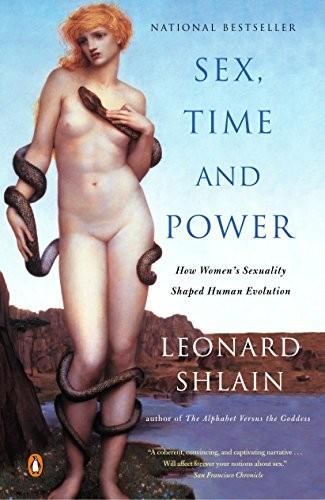
Sex, Time, and Power: How Women's Sexuality Shaped Human Evolution
by
Leonard Shlain
Published 2 Aug 2004
Cultural institutions such as religion, governments, and educational systems undergoing the same realignment will also prosper. In 1953, James Watson and Francis Crick won the Nobel Prize for discovering that the molecular configuration of DNA was a double helix. Life, they demonstrated, derives from the intertwining of one strand of DNA from the father and one from the mother. The double helix instantly became the modern symbol of the combination of the anima and animus. But the ancients had already intuited this truth. Watson and Crick confirmed that, at its most fundamental level, life’s most compelling icon is Hermes’ caduceus, the quintessential symbol of the hermaphrodite.
…
Aborigines, 302, 383n abortion, 31 abstract thinking, 263 Aché tribe, 112 adolescence, see menarche; puberty adolescent subfertility, 138 African Eve, 6–7, 11–12, 76, 80, 118, 336, 364 afterbirth, 29, 29n afterlife, 277–78, 375n Ahlquist, Jon, 371n AIDS epidemic, 236–37, 273 Aiello, Leslie, 41n, 242–43, 243n Alexander, Richard, 48 altruism, 242 American Journal of Obstetrics and Gynecology, 79 American Psychiatric Association, 232 Amini, Fari, 321, 331 amino acids, 123–24, 127, 128, 133, 262, 364 ancestor worship, 279 anemia, ix–x, xn, 43, 133, 152, 152n, 363 effects of, 26 hookworm infection and, 35 menstruation and, 35 vegetarian diet and, 41 vitamin C and, 132 Angier, Natalie, 88 anima-animus duality, 209–25, 210, 257 as cultural behavior, 216–17 double helix and, 258 homosexuality and, 232–35, 243 hormones and, 211–12 male-female relationship and, 217–19, 222–25 in nonhumans, 214–15 rarity of rape and, 220–22 as sexual strategy, 217–20 small talk and, 222–23 testosterone and, 211–12, 215 Antigone (Sophocles), 255 anxiety, 281 death and, 264, 266–67 superstition and, 276–77 Aquatic Ape Theory, 104, 194n Aquinas, Saint Thomas, 339 Ardrey, Robert, 103 Aristophanes, 224, 225, 321 Aristotle, 244, 339 art, 362, 368 Creative Explosion in, 269, 269n, 287, 300, 383n and fear of death, 272, 275, 286 homosexuality and, 243–44 Madonna theme in, 384n reductionism and, 263 ascorbic acid, see vitamin C Asperger syndrome, 233–34, 234n Atwood, Margaret, 205 auditory constancy, 196–97 Augustine, Saint, 339, 375n Australia, species extinction in, 251n Australopithecus afarensis, 107–8 autism, 233–34 Bacon, Francis, 339 Baker, Josephine, 254 Baker, Robin, 72, 304n balanitis, 89 baldness, 242, 246, 248–53 brain and, 250–51 barter, 285–86, 285n Batak tribe, 302 Batten, Mary, 117, 289 beauty, 353, 356 Beauvoir, Simone de, 341 Becker, Ernest, 265, 266–67 Bellis, Mark, 72, 304n Bellow, Saul, 335 Benedek, Therese, 153 Benshoof, L., 51 Bernard, Claude, 149 Bettelheim, Bruno, 143n Bickerton, Derek, 191, 363 Biogenetic Law, 270, 299 bipedalism, 58, 197 childbirth and, 4–5, 8n evolution of, 3–4 hunting and, 103–4, 107, 251–52 lunar cycles and, 175–76 male genitalia and, 221 menstruation and, 175–76 orgasm and, 71–72 Pole Ax Theory of Orgasm and, 71–72 Sentinel Behavior Theory of, 251–52 birth control, 363 birth defects, 312 bisexuality, 233, 236 Blackfoot Indians, 96 Blood, Bread, and Roses (Grahn), 58 bloodletting practice, 342n–43n Blood Relations (Knight), 55, 111–12 Bloom, Paul, 190 Boas, Franz, 179 Bodger, Joan, 80–81 bonobos (Pan paniscus), 16n, 17n, 46, 50, 52n, 53, 105, 128n, 135 Bororo tribe, 112 Bowlby, John, 15 brain, xn, xi, 41, 170, 228, 336 baldness and, 250–51 Broca’s area of, 195, 195n cholesterol in, 126–28 evolution of enlarged, 4, 12, 19 Executive Function of, 145, 145n, 150 and exercise of free will, 19 iron and development of, 26 language and, 196–97 of left-handed persons, 247 lipoproteins in, 125, 125n metabolic demands of, 13 myelination of, 143–46 structure of, 144–45 triune, 143–44 breast-feeding, 29–30, 32, 342 “love hormone” and, 82 orgasm and, 82 Bribri Indians, 64 bride-barter, 313–17, 313n culture and, 314–16 women as commodity in, 314 women’s power and, 317–19 Briffault, Robert, 180 Broca’s area, 195, 195n Brooks, Mel, 281 Brown, Norman O., 303–4 Brownmiller, Susan, 220 Bruner, Ann, 128n Buddha, 340, 375n Buddhism, 361, 375n Burley, Nancy, 49 Butler, Samuel, 167 caduceus, 255, 258 calendars, 378n–80n Calvin, John, 339 Calvin, William, 190–91 Camus, Albert, 282–83 Canetti, Elias, 316n cannibalism, 36 Cannon, Walter, 157 carbohydrates, 122 carbon dioxide, 195n “Carmina” (Horace), 284 Carroll, Lewis, xiiin, 73 Cassatt, Mary, 254 Cather, Willa, 254 cause-and-effect logic, 263 Cavilla-Sforza, Luigi Luca, 371n cellulite, 355n cervix, 61, 61, 73, 156 chelation, process of, 40 childbirth, 12 bipedalism and, 4–5 as bottleneck in human evolution, 5–8 G spot and pain of, 79–80 iron depletion in, 27–28, 28n orgasm in, 75, 80–81 childhood, prolonged, 5, 8n chimpanzees (Pan troglodytes), xi, 29, 41, 46, 49, 50, 53, 111n, 128n, 135, 152n, 275n, 276, 353 awareness of death in, 265–66, 265n genes of, 7, 11 grooming in, 213 homosexuality in, 230 hunting by, 101, 105 language capacity of, 189–90 laughter in, 281n mating competition and, 159–60 mating patterns in, 356, 356n menopause in, 87 menstruation in, 138 orgasm in, 70 self-awareness in, 169 chlorophyll, 39–40 cholesterol: in brain, 126–28 male sex drive and, 127 sex hormones and, 126–27 Chomsky, Noam, 190 Christiansen, Morton, 191 chromosomes, 24 X, 228, 244 Y, 228, 371n Chukchi tribe, 301–2 circadian rhythms, 171–73 circumcision, 88–94, 94n, 374n fertility and, 92–93 and function of foreskin, 90 health benefits of, 89–91 male sexuality and, 92–93 orgasm and, 92–93 religion and, 374n–76n Civilization and Its Discontents (Freud), xi Cleopatra, Queen of Egypt, 376n clitoris, 79, 228 Coleridge, Samuel Taylor, 258 collagen, 135 color-blindness, 241, 244–45, 253, 253n Columbus, Christopher, 89 Comfort, Alex, 45 commerce, 316 commitment, 328–29 complete blood count (CBC), vii–viii, xi Confucius, 340 Congo tribe, 180 Congreve, William, 203 Conkey, Margaret, 269n Constitution, U.S., 316n Coolidge Effect, 75 Corballis, Michael, 191 Cortés, Hernán, 280 cortisol, 230 cosmetics, 351, 352–54 Cosmides, Leda, 17n, 190 courtship, 324–25, 327 Crack in the Teacup, The (Bodger), 80–81 Crawford, Michael, 40, 125, 125n, 252 Creative Explosion: death and, 269, 271 language and, 300–301, 300n mutation and, 383n synchronous development of, 301 Crick, Francis, 258 Cro-Magnons, 290, 290n, 383n daddy-at-home theory of, 48 infanticide and, 49–51 jealousy and, 51–52 many fathers theory of, 49 cryptic ovulation (cont.)

QI: The Second Book of General Ignorance
by
Lloyd, John
and
Mitchinson, John
Published 7 Oct 2010
So, a staircase that twisted the other way would only be useful when defending against another Kerr (not impossible given their bloodthirsty reputation). The Chateau de Chambord in the Loire Valley has a double-helix staircase: two staircases which wind around each other so that people going up don’t bump into people coming down – and the cliff-top fortifications at Dover have a triple-helix staircase (known as the ‘Grand Shaft’) designed to get three columns of troops down to harbour level simultaneously. The most famous of all double helixes is the molecule called deoxyribonucleic acid, better known as DNA. Francis Crick and James Watson first described its structure in 1953, although they were inspired by an X-ray photograph of DNA taken by Rosalind Franklin (1920–58), who almost beat them to it.
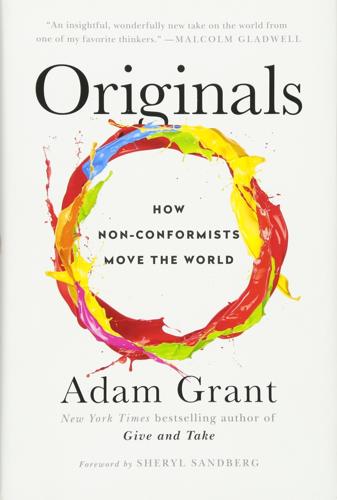
Originals: How Non-Conformists Move the World
by
Adam Grant
Published 2 Feb 2016
And in technology startups that have raised venture capital funding, the average founder is thirty-eight. In the arts and sciences, Chicago economist David Galenson shows that although we’re quick to remember the young geniuses who peak early, there are plenty of old masters who soar much later. In medicine, for every James Watson, who helped to discover the double helix structure of DNA at age twenty-five, there is a Roger Sperry, who identified different specializations between the right and left hemispheres of the brain at age forty-nine. In film, for every Orson Welles, whose masterpiece Citizen Kane was his very first feature film at age twenty-five, there is an Alfred Hitchcock, who made his three most popular films three decades into his career, at ages fifty-nine (Vertigo), sixty (North by Northwest), and sixty-one (Psycho).
…
Among the old masters forty-five and above, 92 percent did experimental work. These fundamental differences between conceptual and experimental innovators explain why some originals peak early and others bloom late. Conceptual innovation can be done quickly, because it doesn’t require years of methodical investigation. When Watson and Crick discovered the double helix structure of DNA, they didn’t need to wait for data to amass. They had built a three-dimensional theoretical model and examined X-ray images provided by Rosalind Franklin. In addition, conceptual breakthroughs tend to occur early, because it is easiest to come up with a strikingly original insight when we approach a problem with a fresh perspective.
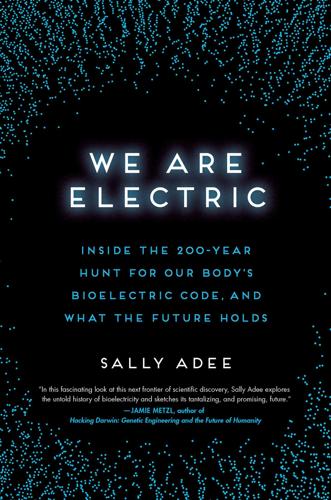
We Are Electric: Inside the 200-Year Hunt for Our Body's Bioelectric Code, and What the Future Holds
by
Sally Adee
Published 27 Feb 2023
But the spike in interest was short-lived. Just when animal electricity should have taken the spotlight once more, a cloud passed over the sun. No sooner had Hodgkin and Huxley revealed the elusive mechanism of the nerve impulse, than two other young researchers stole the show with a discovery deemed far more monumental: the double helix. In 1953, James Watson and Francis Crick—and Rosalind Franklin—unveiled their discovery of DNA. “There are only molecules. Everything else is sociology,” Watson pronounced,10 and the importance of bioelectricity was sidelined by a “bigger” discovery once again, just as it had been after Galvani.
…
Langman and Burr’s findings were poorly understood, and like most bioelectrical phenomena outside neuroscience, were ignored. And then, of course, four short years later, studies of electrical signals in biology became moot with James Watson and Francis Crick’s announcement that they had discovered the double helix structure of DNA. Oncology began to reorganize itself around genes. Not long after DNA was determined to be the sole arbiter of inheritance, it became canon that anything that damaged DNA and caused mutations in it may also cause cancer. In the 1970s and 1980s, a vigorous search for the abnormal genes ensued.10 It was not a good time to go against the grain of science.
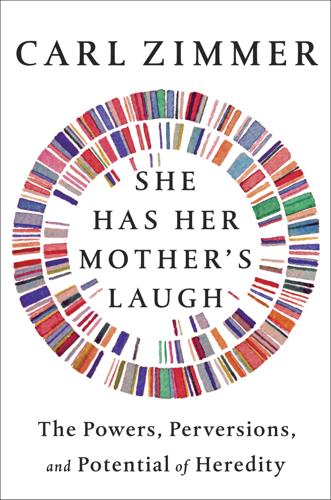
She Has Her Mother's Laugh
by
Carl Zimmer
Published 29 May 2018
Franklin died of cancer five years later, while Crick, Watson, and Wilkins went on to share the Nobel prize in 1962. In his 1968 book, The Double Helix, Watson would cruelly caricature Franklin as a belligerent, badly dressed woman who couldn’t appreciate what was in her pictures. That bitter fallout is a shame, because these scientists had together discovered something of exceptional beauty. They had found a molecular structure that could make heredity possible. DNA, they discovered, is a pair of strands twisted into a double helix. Between the strands, a series of compounds called bases bonded to each other. Over the next thirty years, scientists worked out how this structure allowed DNA to carry genes.
…
To find out about my own inheritance, I took my genome to the place where the study of human heredity had gotten off to such a dubious start: Cold Spring Harbor. * * * — One sunny late-winter day, I drove down Bungtown Road, along the southern edge of the Long Island Sound, and then climbed a high hill to reach the lab. I parked my car and used a map to navigate my way past a bell tower. The tower housed a staircase in the shape of a DNA double helix. The letters of the four bases, a, c, g, and t, were engraved high on its four walls. I shuffled down broad steps to a cluster of research buildings. Inside one of them I found the office of a young scientist named Adam Siepel. He welcomed me in and had me sit at a table below a giant monitor bolted to a wall.
…
See also feeblemindedness Crick, Francis, 124–25 CRISPR/Cas system and Drosophila research, 550–54 early research on, 488–91 and ethical issues of scientific advances, 542 and genetic vs. nongenetic heredity, 474 and human genome editing, 495–97, 523–34, 560–61 impact on human gene pool, 537–40, 565 and microbial immune systems, 143–44 and mosquito control research, 557–58, 570–74 and plant domestication, 493–94 Crohn’s disease, 535, 538 Cro-Magnons, 236–37 Crumbling Genome (Kondrashov), 540 cultural history and inheritance and environmental impact of humans, 570–71 human cumulative culture, 460, 463, 465–66, 468–69, 562–65, 567 and imitation, 445–51, 463–65 and intelligence research, 292 and learning, 454–59, 459–66 and memes, 452–54 and non-genetic inheritance, 471–80 Cushing, Harvey, 274 cystic fibrosis, 503, 535 Danbury, Lewis, 104 Dar-Nimrod, Ilan, 317–18 Darnovsky, Marcy, 528 Darwin, Charles and epigenetics, 435, 442 and Galton’s plant breeding experiments, 260 and modern concept of heredity, 6, 43–56, 58–62, 426 and recessive traits, 473 research on bud sports, 349 and Weismann’s germ line research, 328, 409 Das Erbe (film), 94–95 Davenport, Charles, 79–81, 84–85, 93, 99, 100, 200–202, 234–35, 499 Davenport, Gertrude, 80, 201–2 Davidson, Ronald, 338 Dawkins, Richard, 452–53 Day, Troy, 474–78 Dean, Lewis, 459–60 Deary, Ian, 293–96, 302–3 Delbrück, Max, 551 DeLong, Robert, 307–8 De morbis hereditariis—On Hereditary Diseases (Mercado), 24, 27 dengue fever, 1, 555 Denisovans, 247–49, 465 Desai, Michael, 149–50 Desai, Rajendra, 385 d’Este, Isabella, 254 devil face tumor disease, 392–400 de Vries, Hugo, 29–31, 60–62, 64, 79, 125–26, 424, 426 diabetes, 211, 216–17, 250–51, 273, 276, 278 Dias, Brian, 428–30, 434, 437 Díaz de Games, Gutierre, 18 Dictionary of Races or Peoples (Thomas), 211 Dinka people, 229–30 Dishley Grange, 33–35 DNA (deoxyribonucleic acid) and bacterial restriction enzymes, 487–88 and beneficial mutations, 149 and carbon-14 dating, 346 and causes of PKU, 129 and chimerism, 380–84, 388, 391, 393, 396–98 and CRISPR research, 488–91, 538–40, 566 and cumulative culture, 465 and Dawkins’s meme concept, 452 and diagnosis of hereditary diseases, 133 and discovery of genes, 123–26 and effects of meiosis on heredity, 150–52 and embryonic development, 333 and epigenetics, 430–31, 433, 436–41 and ethical issues of scientific advances, 542 and family genealogies, 160 fingerprinting, 381 and gene drives, 155, 572–73 and gene therapy, 509, 512 and genetic engineering, 507–8 and genetic screening, 503–5 and genetic testing and counseling, 3–4, 6–7 and genetic vs. nongenetic heredity, 472, 475, 479 and genome sequencing, 182–85 and height research, 251, 273, 275–77, 284 and human ancestral lines, 175–81, 186–93, 197, 216–20 and human genome editing, 495–97 and human germ line engineering, 523–28, 530–31 and human/Neanderthal interbreeding, 240–49 and intelligence research, 300, 301–4, 311, 317, 319 and interbreeding of human populations, 231–34, 240 and light organs, 406 and lyonization, 338–39 and mechanism of heredity, 427 and meiosis, 145–47, 151–53 and Mendel’s Law, 473 and microbial immune systems, 323 and microbiomes, 409, 412 and mosaicism, 353–55, 357–60, 363–64, 366–67, 369 and mosquito control research, 555–60 and Muller’s Germinal Choice, 502 and mutagenic chain reaction, 552, 554 and Nazi racism, 497–98 of Neanderthals, 238–40 and neuronal cells, 343 and ooplasm transfers, 514–15 origins of DNA-based life, 138–42 and paleogenetics, 225–28 and the Peloria plant, 424–25 and plant domestication, 494 and preimplantation genetic diagnosis, 535–37 and radiation damage, 333 and RFMix, 222–24 and selective breeding, 484–85 and skin color, 230–31 and spread of genetic variations, 207, 209 of Taita thrushes, 214–15 and totipotent cells, 341–42 and twin studies, 266–67 and in vitro gametogenesis, 547–49 See also mitochondria and mitochondrial DNA DNA Land database, 186–87 Dobzhansky, Theodosius, 204–7 A Domestic Treatise on the Diseases of Horses and Dogs (Blaine), 395 Donnelly, Peter, 215 dopamine, 301 The Double Helix (Crick, Watson, and Wilkins), 125 Doudna, Jennifer, 488–90, 496–97, 523–27, 530, 561 Douglass, Frederick, 166, 197–98, 267 Down syndrome, 1–2, 386 Drake, Francis, 255 Drosophila research, 97–98, 147, 149, 153–54, 204–10, 550–55, 557 DSCF5 gene, 244 Du Bois, W. E. B., 202–4 Duchenne muscular dystrophy, 340 Dunlap, Knight, 100–101 Dunn, Rob, 412 Dunsford, Ivor, 377, 379 Dutton, Warren, 51 Dwarf Alberta spruce, 348–49 dwarfism, 118, 253–54, 272, 278, 306 dystrophin, 340 Eanes de Azurara, Gomes, 20 East, Edward, 205–6 East Wind: West Wind (Buck), 111 E. coli, 140 ecological inheritance, 562–63, 565 Edge, Michael, 213 Edison, Thomas, 30 Edwards, Robert, 504–5, 509 “The Effects of Race Intermingling” (Davenport), 202 Egan, Michael, 301–2 Egeland, Borgny, 115–17 Egeland, Liv, 115 eggs, 419–20, 513–20, 527–28.
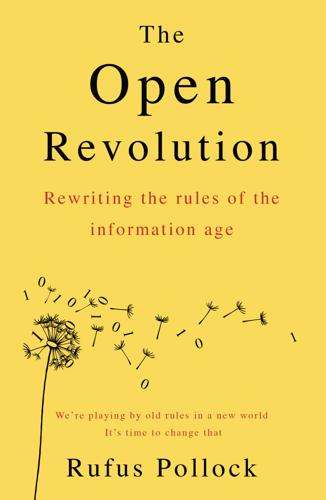
The Open Revolution: New Rules for a New World
by
Rufus Pollock
Published 29 May 2018
But today we do: he meant that he and his colleague James Watson, had discovered the structure of DNA, the substance within the cells of all animals, including humans, that carries the genetic code. This is the coding for every cell in our body, determining everything from the colour of our hair to the functioning of our kidneys. Watson and Crick had shown that it takes the form of two long sequences of four bases or “letters” – A, C, G, T – woven together in a double helix. (The sequence of 3 billion bases is so long that if you scaled up DNA to the width of a cotton thread, it would extend for nearly 200km.) Within this sequence there are much shorter strings of letters that form the recipe for each protein, and these substrings are called “genes”. Within the DNA sequence, there are millions of genes, separated by chunks of “junk” DNA – junk because it does not do anything (or, at least, we don’t yet know what it does).
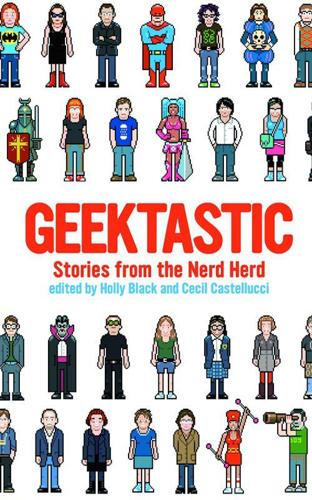
Geektastic: Stories From the Nerd Herd
by
Holly Black
and
Cecil Castellucci
Published 1 Aug 2009
Until I did the unthinkable. I buzzed in for a science question. Which Nobel prize winner later went on to write The Double Helix and Avoid Boring People? I realized immediately it wasn’t Saul Bellow or Kenzaburo Oe. As the judge said, “Do you have an answer?” the phrase TheDoubleHelix hit in my head. “Crick!” I exclaimed. The judge looked at me for a moment, then down at his card. “That is incorrect. Clearwater, which Nobel prize winner later went on to write The Double Helix and Avoid Boring People?” It was not the lit girl who buzzed in. “James D. Watson,” one of the math boys answered snottily, the D sent as a particular fuck you to me.
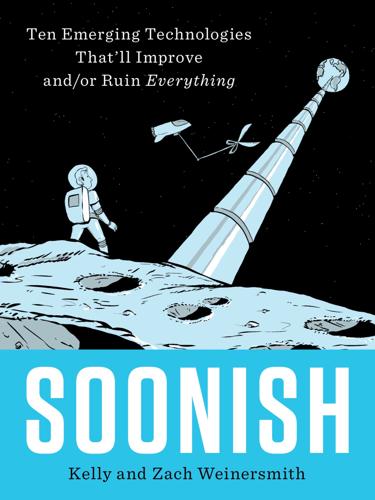
Soonish: Ten Emerging Technologies That'll Improve And/or Ruin Everything
by
Kelly Weinersmith
and
Zach Weinersmith
Published 16 Oct 2017
DNA In all multicellular organisms (like mushrooms and humans), cells have a distinct inner portion called a nucleus. Inside the nucleus are really long molecules called DNA. You can think of DNA as an especially lengthy rope ladder that twists around and around in a corkscrew shape. This is the famous “double helix.” The “rungs” of the ladder are made of two small molecules (one from each side) that fit into each other, hand in glove. Well, maybe we should say hand in glove or foot in shoe, since there are two ways these pairings happen. These small molecules are called bases, and they come in four types, abbreviated T, A, C, and G.
…
.: NASA, 1976. history.nasa.gov/SP-4012v1.pdf. Vasudevan, T. M., van Rij, A. M., Nukada, H., and Taylor, P. K. “Skin Wrinkling for the Assessment of Sympathetic Function in the Limbs.” Australian and New Zealand Journal of Surgery 70, no. 1 (2000):57–59. Venter, J. C. Life at the Speed of Light: From the Double Helix to the Dawn of Digital Life. New York: Penguin Books, 2014b. ———. What—Me Worry?, 200–07. In What Should We Be Worried About?: Real Scenarios That Keep Scientists Up at Night, edited by J. Brockman. New York: Harper Perennial, 2014a. Vrije Universiteit Science. “Robot Baby Project by Prof.dr.
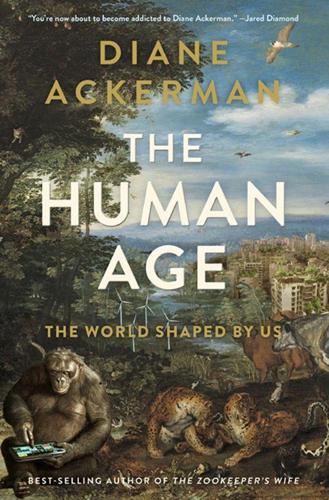
The Human Age: The World Shaped by Us
by
Diane Ackerman
Published 9 Sep 2014
In the meantime, as a fail-safe treasury, the vault houses millions of specimens of over four thousand different species. The second doomsday effort lives on the campus of Nottingham University, in the Frozen Ark, which stores the DNA of 48,000 individuals from 5,438 different animal species. It’s Noah’s Ark moored in Robin Hood’s backyard, and its logo is a blue sketch of an ark sailing on a double helix of ocean waves. FOR LOVE OF A SNAIL Bryan loved snails, though not all snails equally. He was especially fascinated by one turban-shaped gastropod in the genus Partula. Among partulas, he had a thing for the species Partula mooreana. Just like Darwin’s finches, drifting colonies of partulas on tiny islands became cut off from their neighbors and rapidly diversified to a surprising degree in color, size, and shell motifs.
…
But I like knowing that the farther back one traces any lineage the narrower the path grows, to the haunt of just a few shaggy ancestors, with luck on their side, little gizmos in their cells, and a future storied with impulses and choices that will ultimately define them. The noble goal of the Human Genome Project is to use such knowledge to find new ways to understand, treat, and cure illness. In that sense, it’s a group portrait of us as a species, realized at last, a mere fifty years after Crick, Watson, and Franklin decoded the double-helix design of DNA. The only thing more unlikely than DNA itself, nature’s blueprint for building a human being, is our ability to decode it. Thus far, it’s our greatest voyage of discovery, and we’re still scouting its spiral coves. IN NORRBOTTEN, THE northernmost province of Sweden, the reindeer outnumber humans, and shimmery green veils of northern lights spiral up from the horizon like enchanted scarves.
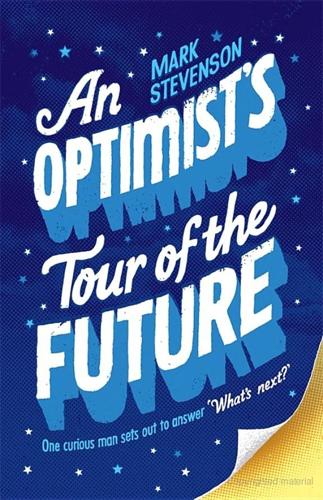
An Optimist's Tour of the Future
by
Mark Stevenson
Published 4 Dec 2010
If you add two long poles of sugar and salt for each line of molecular lovers to anchor themselves to (and so stand firm in their embraces) and give the whole shebang a twist, you’ll end up with something that looks like a spiralling ladder, its rungs made of adenine molecules holding on to thymine molecules and guanine molecules holding on to cytosine molecules, like billions of trapeze artists frozen in mid-clasp. There you are, then. The famous ‘double helix.’ The most famous molecule in the world. A cell’s individual hard drive. The code of life. A constantly referred-to book of recipes found in nearly every single cell that, amazingly, includes instructions to make everything in every cell. Your genome, encoded in the fêted and misunderstood ‘Deoxyribonucleic acid’ – the bane of unwitting criminals who leave it behind at crime scenes, the premise for Jurassic Park.
…
INDEX 23andMe 274, 297–9 42 100, 273 2001: A Space Odyssey 76, 102, 133 A Abengoa Solar 193 activated carbon 216–17 adenine 37–9, 46 aerosols 168–70 af Ekenstam, Robin 103, 104 Africa 252, 253, 302 Age of Spiritual Machines, The (Kurzweil) 274–5 agriculture 221–40, 253 Agüera y Arcas, Blaise 163 AInimals 92, 94, 96, 102–4, 105 algae 187, 210–12 Algenol Biofuels 187, 189 alleles 45, 48 Allen 83, 84 Amundsen, Roald 178 Anderson, Chris 291–5 Andrews, Lori 27 Angier, Natalie 47 Annas, George 27 Ansari X Prize for Spaceflight 135 Aquaflow Bionomic Corporation 208, 210–12 Arcadia 237–8 Arcadia (Stoppard) 281 Archer, David 177 Archon X Prize 50, 51 Aristotle 97 ARPANET 152 Art of War, The (Sun Tzu) 40–1, 51–2 artificial intelligence 73–107 Artificial Intelligence: AI 75 Asimov, Isaac 76–7 augmented reality 162–4 Augustine Commission 136 Australia climate change scepticism 168, 171 farming 221–40 Internet 157 mousepox virus 63–4 autocatalysis 270 B Bacillus subtilis 100, 273 Bacon, Francis 96–8, 99 bacteria 56–7, 61, 302 Bedau, Mark 66, 280 Bedford, James 15 Berners-Lee, Mike 169–70 Berners-Lee, Tim 154, 159 ‘Better World Shopper’ 163 Bezos, Jeff 141 BigDog 84 Bigelow, Robert 137 Billen, Abigail 31 Binney, Don 218 biochar 208–10, 212–20 biofuels 56–7, 61, 186–9, 210–12 biomass 209–10 bionics 14, 29, 301 biotechnology 35–70 bioterrorism 63–6, 68 BioTime 53–4 Birchall, Martin 20 bird flu 69–70 black carbon 169–70 Black Phantom 212–14, 219, 299, 301 Blackburn, Elizabeth 18 Blackstone Ranch 234 Blackwell, Paul 213 Blasco, Maria 18, 19 Blayney 235–7 Blenheim 210–12 blood transfusion 33 Blue Brain 90, 91 Blue Origin 141 Blundell, James 33 Bonaparte, Napoleon 146 Bongard, Josh 95 Boree Creek 237–8 Borman, Frank 135 Boston Dynamics 74–5 Bostrom, Nick 13, 17, 18, 22–31, 62, 65, 66 carbon-chauvinism 102 existential risk 63 and Kurzweil 267, 269 Bourke, Joanna 149 Brand, Stewart 108–9, 128, 270, 276 Branson, Richard 135, 141 Breazeal, Cynthia 76–82, 84–6, 90–2, 94, 101–2, 269, 277–8 Bréon, François-Marie 169 Brin, Sergey 273–4, 297 Broad Institute 40 Broecker, Wallace 173, 174, 177–86 Brooks, Rodney 76, 82, 83–4, 89, 103, 104, 105 Brown, John Seely 156, 282–3, 284–91, 292, 304 Buck, Vicki 207–8, 210–20, 288, 299 Burke, James 160, 161, 162 Burma 157 C C-3PO 76, 83, 102 cadmium 195, 196 California NanoSystems Institute 118 cancer 19, 40–1, 46–7 Candide (Voltaire) 218 carbon cycle 209 carbon dioxide (CO2) 57, 167–8, 170–1, 175–7, 186, 302 and agriculture 228–31, 233–5 biochar 209–10 biofuels 187–9 industrial uses 183–4 carbon nanotubes 110–11 carbon neutrality 243–4, 245 carbon scrubbers 179–85, 259–60, 299 Carbonscape 208, 212–20, 299, 301 carrying capacity 128–9 Castillo, Claudia 19–20, 33 Çatağay, Tolga 273 Catholic Church 106 Cave, Nick 304 Celera Genomics 36 Celsias 208 Cerf, Vint 151–64, 187, 245, 268, 283, 284, 299 Chappe, Abraham 146 Chappe, Claude 146 Chappe, René 146 charcoal 208–10, 212–20 chess 82, 83, 86 China 157, 200 Chomsky, Noam 303 chromosomes 44, 45–6 Chu, John 155 Chui, Alex 15 Church, George biofuels 57, 211 bioterrorism 63, 65–6 genome engineering 52, 56, 60–3, 64, 70, 105, 186–7, 203 genome sequencing 50–1 human genome project 35 human machines 89 IVF 106 and Lackner, Klaus 189 licensing 66–7 Personal Genome Project 36–7, 39, 41–50, 273, 299, 300, 301 Ćirković, Milan 65 cities 250, 252–3 Claramunt, Xavier 137 climate change 143, 164, 167–72, 174–7, 208 and agriculture 228–31, 233–5 Maldives 241–9, 256–62 Northwest Passage 178 Clinton, Bill 35–6 clouds 169 Cobar 231–5 Collins, Mike 135 Collins, Paul 192 Columbia University Medical Center 31 Columbus, Christopher 303 Comer, Gary 177, 178 Commercial Spaceflight Federation 138 Complete Genomics 51 Connections 160 Consortium for Polynucleotide Synthesis 68 Copenhagen Accord 256 Cornell University 93–6, 98–101, 210 couchsurfing.org 158 Coughlan, Anna 221–2, 239–40 Coughlan, Michael 221–2, 239–40 ‘Couldn’t Be Done’ (Tim Finn) 208 Crichton, Michael 122 cryonics 15–16 Cuba 157 cytosine 37–9, 46 D dance 155 De Cari, Gioia 262 de Grey, Aubrey 14, 16, 17–18, 21, 34 ‘Death Clock’ 12–13 deductive reason 97 Deep Blue 82–3 del Cardayré, Stephen 61 Desertec Industrial Initiative 193 Deutsche Bank 193 diatoms 117–18 diesel 56–7 Dijkstra, Edsger 82 DNA (Deoxyribonucleic acid) 38–9, 40, 297–8 naked 46 nanotechnology 113, 119–20 Parkinson’s disease 273–4 Door into Summer (Heinlein) 142 double helix 38 double pendulum 98–9 Dragon 136 Drexler, Eric 109–17, 125, 127–30, 286, 287, 299, 300 critics 123–4 Grey Goo 121–3 and Kurzweil 268, 269 E E. coli 56–7, 61, 64 E85 cars 188 EasyJet 20 education 284–5, 288 Egypt 157 Ehrenreich, Barbara 303 Eigler, Donald 113, 125 Einhorn, Thomas 31 Einstein, Albert 140 Eisenberger, Peter 184 electricity 285–6 Eliza 86–7 Ember, Carol 147 enhancement 26–9 Endy, Drew 66 energy 191–2, 193–5, 202, 204 fossil fuels 168, 191–2, 193, 302 solar 190–1, 192–3, 195–205, 206, 274, 295, 302 Engines of Creation (Drexler) 109, 110–11, 115, 121, 122, 123, 127–8, 300 Enlightenment 267 Enriquez, Juan 33, 278–82, 293 Eros (Asteroid) 134 Estep, Preston 16 ethanol 187 Ethiopia 199, 200 Etiwanda Station 231–5 Eureqa 101 evolution 70, 105, 279–80, 281–2 existential risk 63 Exxon Mobil 56 EZ-Rocket 142 F Falcon 9 136 farming 221–40, 253 Feynman, Richard 112, 113 Finn, Tim 208 Flannery, Tim 215 flu 64–5, 69–70 Følling’s disease 44, 58 foot-and-mouth disease 68–9 forests 253–4 Forster, E.
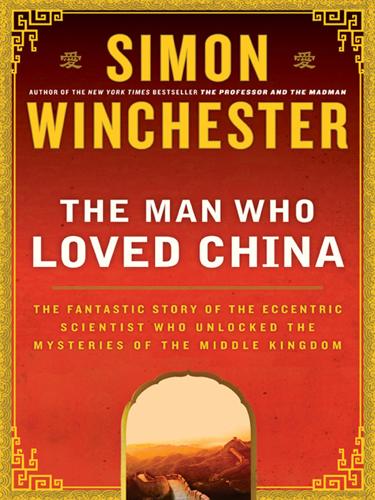
The Man Who Loved China: The Fantastic Story of the Eccentric Scientist Who Unlocked the Mysteries of the Middle Kingdom
by
Simon Winchester
Published 1 Jan 2008
The older portraits under which members of the college dine are of ruffled, velvet-clad divines; Needham is among the more recent, and above him in his eastern getup are stained-glass windows depicting, not people, but the actual achievements made by other Caians—a colored-glass Venn diagram, and a delicately rendered double helix of DNA, conceptualized by Rosalind Franklin, James Watson, and Caius College’s Francis Crick. Needham’s retirement from the mastership came in 1976, and with it came the beginnings of a slow and steady downward spiral. For the first time Needham was beginning to realize—and, moreover, to admit—that he might not manage to cover the entirety of Chinese science within the limits of his lifetime.
…
G., 53, 54, 57, 164 Cullen, Christopher, 251 Cultural Revolution (1966–1976), 231, 234, 235 names given to children during, 40n.7 Czechoslovakia, “Prague Spring” in (1968), 231 Dadu River, 85, 186 Daily Worker (Britain), 57 Daoism, 191, 192 Daquan River, 129 Darwinism, 13, 14 Deng Xiaoping (Chinese Communist leader), 237 Diamond Sutra, 101–2, 131, 138–39 Dictionary of National Biography (DNB), 230n.51 Diebold, John, 248, 249 dinosaur fossil Lufengosaurus, 156 DNA (deoxyribonucleic acid), double helix model of, 240 Dong Zhongshu, 168 Driberg, Tom, 233 Dujiangyan irrigation project, 108, 109 Dunhuang oasis and caves, 101, 102, 105, 128–32, 134–39 East Asian History of Science trust, 243–44 Eden, Anthony, 56 Eggleston, Frederick, 87 elements, five Chinese, 168 Elers, Peter, 233 Ellis, Havelock, 32 Emblica officinalis, 155 encyclopedia, imperial Chinese, 176–77 English Gymnosophist Society, 22 Epidemic Prevention Bureau, Lanzhou, China, 122 erotic texts, Chinese Daoist, 192 explorations, Chinese seagoing, 186, 194 extraterritoriality as legal concept, 72n.14 Far Eastern Survey, 228 Far East War Council, 54 Fessel, Klaus, 196 Fire-Drake Manual, The 199 Fisher, Ronald, 179–80 fishing reel, Chinese, 186 Fitch, James, 196 Foot, Dingle, 32 foot-binding practice in China, 119–20 Forster, E.
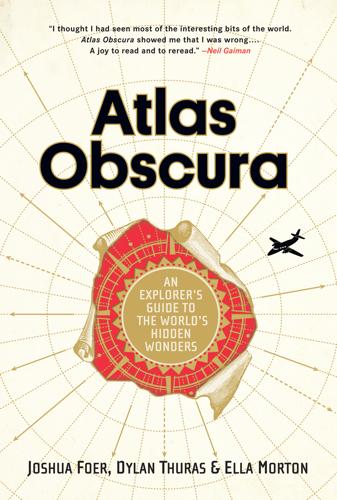
Atlas Obscura: An Explorer's Guide to the World's Hidden Wonders
by
Joshua Foer
,
Dylan Thuras
and
Ella Morton
Published 19 Sep 2016
The bridge is on the grounds of a 19th-century estate about 30 minutes west of Glasgow. 55.942506 4.521874 Garden of Cosmic Speculation HOLYWOOD, DUMFRIES AND GALLOWAY Among the daffodils and daisies of the Garden of Cosmic Speculation are black holes, Fibonacci sequences, fractals, and DNA double helixes. Architectural theorist Charles Jencks and his late wife, Maggie Keswick, designed the 30-acre garden for their own property. Its aesthetic is guided by the fundamentals of modern physics, reflecting the shapes and patterns of the unfolding universe. Begun in 1988, the garden took almost 20 years to build, during which time Keswick succumbed to cancer.
…
Begun in 1988, the garden took almost 20 years to build, during which time Keswick succumbed to cancer. Jencks continued the project in her memory, occasionally altering designs in response to shifts and breakthroughs in scientific knowledge. (The Human Genome Project inspired the DNA Garden section, with its plant-threaded double helix.) Holywood, 5 miles (8 km) north of Dumfries. The garden is open to the public one day a year, during the first week of May. Managed by the Scotland’s Gardens Scheme, the yearly event helps raise money for Maggie’s Centers, a cancer foundation named after Jencks’s late wife. 55.129780 3.665830 Within these gardens are the keys to life and the universe.
…
When the nuns went looking for the benevolent stranger to pay him and thank him, he had disappeared. They concluded that the miracle staircase was built by St. Joseph himself. The fact that there are 33 steps—equaling the number of years Jesus lived—only adds to the legend. The spiral stairs are structurally sound but a little bouncy owing to their springlike double helix shape. They have been closed to public foot traffic since the 1970s, but if you book your wedding in the chapel you can stand on them to get your photo taken. 207 Old Santa Fe Trail, Santa Fe. 35.685387 105.937637 The spiral staircase is said to have been constructed with the help of divine intervention.
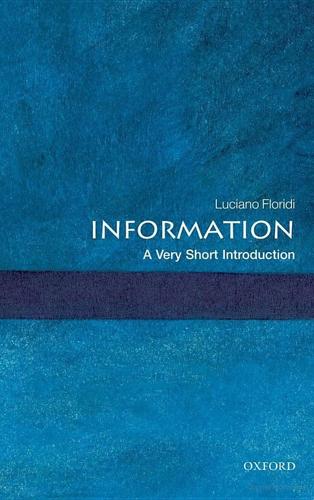
Information: A Very Short Introduction
by
Luciano Floridi
Published 25 Feb 2010
, the physics Nobel laureate Erwin Schrodinger (1887-1961) outlined the idea of how genetic information might be stored. He explicitly drew a comparison with the Morse alphabet. In 1953, James Watson (born 1928) and Francis Crick (1916-2004) published their molecular model for the structure of DNA, the famous double helix, one of the icons of contemporary science. Crick explicitly acknowledged his intellectual debt to Schrodinger's model. In 1962, Watson, Crick, and Maurice Wilkins (1916-2004) were jointly awarded the Nobel Prize for Physiology or Medicine `for their discoveries concerning the molecular structure of nucleic acids and its significance for information transfer in living material'.

This Is How You Lose the Time War
by
Amal El-Mohtar
and
Max Gladstone
Published 15 Jul 2019
Suppose we reached across the burn of threads and tangles, cut through the braid’s knots—suppose that we defected, not to each other’s sides, but to each other? We’re the best there is at what we do. Shall we do something we’ve never done? Shall we prick and twist and play the braid until it yields us a place downthread, bend the fork of our Shifts into a double helix around our base pair? Shall we build a bridge between our Shifts and hold it—a space in which to be neighbours, to keep dogs, share tea? It’ll be a long, slow game. They’ll hunt us fiercer than they ever hunted each other—but somehow I don’t think you’ll mind. I’ve bought you five minutes to bust out.
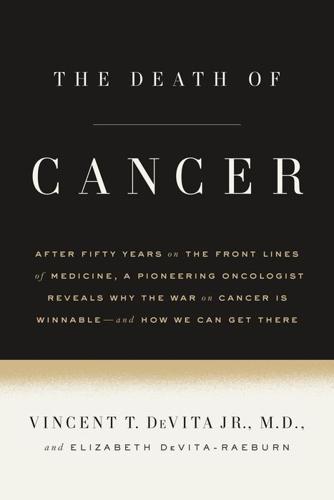
The Death of Cancer: After Fifty Years on the Front Lines of Medicine, a Pioneering Oncologist Reveals Why the War on Cancer Is Winnable--And How We Can Get There
by
Vincent T. Devita, Jr., M. D.
and
Elizabeth Devita-Raeburn
Published 3 Nov 2015
I want to lift the scrim that separates the public from those who study this disease and the individuals and institutions that treat it. What you will see behind the scenes is not always flattering. The process of science is inextricable from human nature. As James Watson wisely said, in the preface to his autobiographical book about discovering the structure of DNA, The Double Helix, “Science seldom proceeds in the straightforward logical manner imagined by outsiders. Instead, its steps forward (and sometimes backward) are often very human events in which personalities and cultural traditions play major roles.” It’s true. It will always be true. Watson’s book illustrates it in the search for the structure of DNA.
…
And he didn’t just express his concern; he coolly and justifiably destroyed the logic that was presented. The program was stopped, and the director was perpetually terrified of him thereafter. You didn’t present garbage to Schmidt and expect it to go unnoticed. He exuded confidence and was fearless in dealing with unruly, arrogant board members. Jim Watson, of double helix fame, had been appointed to the NCAB because he was a brilliant scientist. But he also hated the concept of the war on cancer and was purposefully rude at board meetings to show his contempt. The board chair couldn’t control him. Watson was, after all, a Nobel laureate. He liked to lean back and put his feet up on the table and read The New York Times, lowering the paper only to interject a derogatory comment here and there.
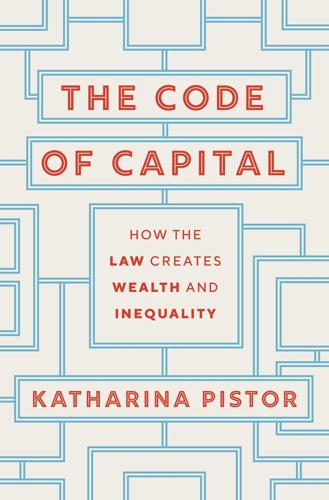
The Code of Capital: How the Law Creates Wealth and Inequality
by
Katharina Pistor
Published 27 May 2019
By 1944, scientists had discovered that DNA (deoxyribonucleic acid) was the carrier for genetic information, and in 1953, James Watson and Francis Crick published a paper in which they depicted the double helix structure of the DNA.1 Their work marked a major breakthrough that revolutionized our understanding of biology, inheritance, and evolution and earned the two scientists, together with Maurice Wilkins, the Nobel Prize in Medicine in 1962. Genetic research has made huge strides ever since. Fifty years after the publication of the double helix, the Human Genome Project completed a map of the entire gene sequence for homo sapiens, giving us “the ability, for the first time, to read nature’s complete genetic blueprint for building a human being.”2 The race to convert this knowledge into wealth-producing assets did not wait until the full sequence was known.
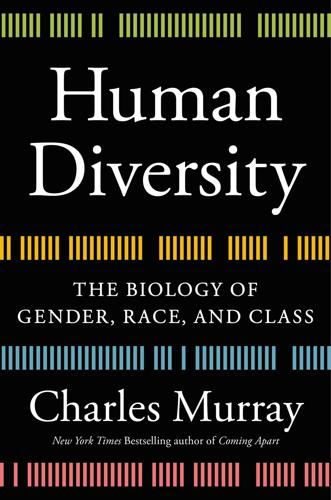
Human Diversity: The Biology of Gender, Race, and Class
by
Charles Murray
Published 28 Jan 2020
Third Interlude: Genetic Terms You Need to Know to Read the Rest of the Book I cannot discuss any of the propositions of Part II without using technical terms regarding genetics. Hence it’s time for another interlude, a refresher course in this area of biology. Genome. A genome consists of two strands of DNA (deoxyribonucleic acid), intertwined in the famous double helix and found in the nucleus of almost every cell of every organism. In humans, each strand of DNA consists of a string of more than three billion occurrences of one of four chemicals: adenine, thymine, guanine, and cytosine, usually referred to by their first letters, A, T, G, or C. Each occurrence in each strand is lightly linked by hydrogen bonds to a corresponding occurrence in the other strand.
…
From Darwin’s Insights to the Modern Synthesis The word genetics wasn’t even coined until 1905, soon after Gregor Mendel’s pioneering work was rediscovered after having been ignored for almost half a century. The first half of the twentieth century saw a series of landmark discoveries about the biology of genetic transmission, led by Thomas Hunt Morgan in the early decades and culminating in the discovery of the double-helix structure of DNA by James Watson and Francis Crick in 1953.17 From the beginning, scientists were aware of the potential importance of genetics for explaining how evolution worked at the molecular level. One of the earliest theoretical findings was genetics’ equivalent to Newton’s first law of motion: identification of the circumstances under which the frequencies of alleles at a given site would remain stable.18 Discovered independently by Godfrey Hardy and Wilhelm Weinberg, who both published in 1908, it became known as the Hardy-Weinberg equilibrium.
…
Rather than having a set genetic blueprint, epigenetics demonstrates that although our genes themselves are fixed, our genetic expression, much of which is heritable, is also interconnected with a wide range of environmental factors.60 With rare exceptions, the mainstream media’s reporting on the science behind epigenetics bears little resemblance to what’s actually been discovered. The Basics Your personal double helix of DNA resides in the nucleus of a cell. The rest of the cell contains the proteins that enable it to perform its particular function, whether it be a cell in a biceps or the brain. For a cell to do that, somehow the small number of relevant genes in the DNA producing those proteins for that cell type must be identified and their information transcribed.
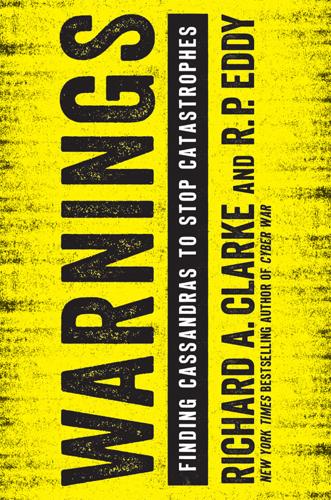
Warnings
by
Richard A. Clarke
Published 10 Apr 2017
“My dad loved books, and he loved reading about science,” she told us when we sat down in her office at UC Berkeley, where she is a professor of biology and manages a huge laboratory. “He would buy books and throw them on my bed. Early on, I was probably in about sixth grade or so, one of them was The Double Helix. I remember reading it and being just stunned that scientists could devise experiments to figure out something like the structure of DNA. It was just mind-blowing to me as a kid.”1 From then on, it wasn’t enough to just observe nature. “I wanted to know the chemicals that were in there; what’s the difference in the DNA that made, for example, one mushroom different from another?”
…
She later completed her Ph.D. at Harvard under Jack Szostak, who went on to share the 2009 Nobel Prize for his work in genetics. There Doudna developed a fascination for RNA, the close relative to its more famous genetic cousin, DNA. DNA, as is taught in any high school biology class, is the molecule that carries the hereditary information of all living organisms. Its famous double-helix structure looks like a long spiral staircase, twisting around itself, the steps holding the encoded information in what are called base pairs. The order of those base pairs is what’s important; it’s a blueprint for our design, regulating the creation and functions of all our cells and making life as we know it possible.

The Future of Technology
by
Tom Standage
Published 31 Aug 2005
This page intentionally left blank 8 CLIMBING THE HELICAL STAIRCASE THE FUTURE OF TECHNOLOGY Climbing the helical staircase Biotechnology has its troubles, but in the long term it may change the world t has not escaped our notice that the specific pairing we have postulated immediately suggests a possible copying mechanism for the genetic material.” With these ironic words, James Watson and Francis Crick began a biological revolution. Their paper on the structure of dna, published in Nature in April 1953, described the nowfamous double helix. It showed that the strands of the helix complement each other. It inferred, correctly, that either strand of the helix could thus act as a template for the other, allowing the molecule to replicate itself. And it suggested that because the four types of nucleotide sub-unit of which each strand is composed can be arranged in any order, a single strand could act as a message tape telling a cell which proteins to make, and therefore what job to do.
…
The pattern that emerges will, with enough maths (nowadays done by computer), tell you how the atoms in the crystal are arranged. This works with any crystal, not just one made of protein. Indeed, it was the photographs taken by Rosalind Franklin of the x-ray patterns produced by dna crystals that gave James Watson and Francis Crick the clue they needed to understand that dna is a double helix. x-ray crystallography has already generated several drugs. Viracept, devised by Agouron (now part of Pfizer) and Agenerase, developed by Vertex of Cambridge, Massachusetts, are anti-aids drugs that inhibit a protein called hiv-protease. Relenza, devised by Biota Holdings, of Melbourne, Australia, gums up an influenza protein.

Red Mars
by
Kim Stanley Robinson
Published 23 Oct 1992
“Well, no, we separated the cable from Clarke, is what we did. But the effect is the same. That cable is on its way down.” The group cheered again, somewhat more weakly. Steve explained to the travelers over the noise, “The cable itself was pretty much impervious, it’s graphite whisker with a diamond sponge-mesh gel double-helixed into it, and they’ve got smart pebble defense stations every hundred kilometers, and security on the cars that was intense. So Arkady suggested we work on Clarke itself. See, the cable goes right through the rock to the factories in the interior, and the actual end of it was physically as well as magnetically bonded to the rock of the asteroid.
…
But as the montage continued the images had been slowed down and processed in every way possible, and one of these processed images was the final clip, an ultra-slow motion shot in which one could see details that would have been impossible to spot live. And so they could see that as the line had crossed the sky, the burning graphite had stripped away first, leaving an incandescent double helix of diamond, flowing majestically out of a sunset sky. All a gravestone, of course, the people on it already dead at that point, burned away; but it was hard to think of them when the image was so utterly strange and beautiful, a vision of some kind of fantasy DNA, DNA from a macroworld made of pure light, plowing into our universe to germinate a barren planet. . . .
…
Slowly the sunlight moved down the tumultuous stalks, until they were all burnished by the new morning sun. Then the lofty line of yellow and pink mushroom clouds drifted across a sky that was a delicate shade of indigo pastel: it looked like a Maxfield Parrish nightmare, too strange and beautiful a sight to believe. Nadia thought of the cable’s last moment, that image of the incandescent double helix of diamonds. How was it that destruction could be so beautiful? Was there something in the scale of it? Was there some shadow in people, lusting for it? Or was it just a coincidental combination of the elements, the final proof that beauty has no moral dimension? She stared and stared at the image, focused all her will on it; but she could not make it make sense.
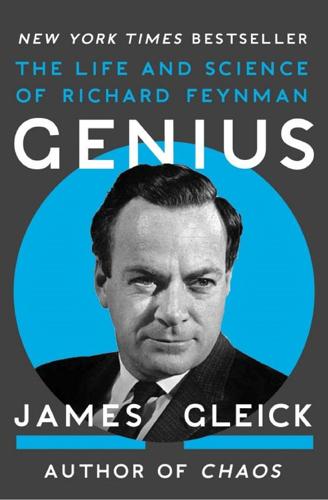
Genius: The Life and Science of Richard Feynman
by
James Gleick
Published 1 Jan 1992
When Goodstein came down to breakfast at the faculty club, he found Feynman already there, talking with someone who Goodstein gradually realized was the codiscoverer of DNA, James Watson. Watson gave Feynman a manuscript tentatively titled Honest Jim. It was a tame memoir by later standards, but when it was published—under a different title, The Double Helix—it caused an enormous popular stir. With a candor that shocked many of Watson’s colleagues, it portrayed the ambition, the competitiveness, the blunders, the miscommunications, and the raw excitement of real scientists. Feynman read it in his room at the Chicago faculty club, skipping the cocktail party in his honor, and found himself moved.
…
Manual of Tuberculosis for Nurses and Public Health Workers. Second edition. Edinburgh: E. & S. Livingstone. Von Neumann, John. 1955. Mathematical Foundations of Quantum Mechanics. Princeton: Princeton University Press. Waksman, Selman A. 1964. The Conquest of Tuberculosis. Berkeley: University of California Press. Watson, James D. 1968. The Double Helix. New York: Atheneum. Weart, Spencer R. 1988. Nuclear Fear: A History of Images. Cambridge, Mass.: Harvard University Press. Weaver, Jefferson Hane, ed. 1987. The World of Physics. 3 volumes. New York: Simon and Schuster. Weinberg, Steven. 1977a. “The Search for Unity: Notes for a History of Quantum Field Theory.”
…
S., 236 beta decay, 272, 309, 330–39 Bethe, Hans, 53, 176–78, 216, 233, 255–59, 287, 386 background, 166–67, 289 consulting, 223 at Cornell, 204–5, 226–28, 269–70, 277, 278, 293–94 and Dyson, 235, 238–39, 266–67 and Feynman, 165–66, 169, 184, 212, 241, 249, 262, 296 as genius, 322 Lamb shift calculation, 239–40, 251–52 at Los Alamos, 165–69, 171, 173, 180, 198, 202–3 mental arithmetic, 14–15, 175–77 Nobel Prize, 377 nuclear physics, 80, 167 physical intuition, 166–67, 305 prewar research, 138 renormalization, 239–40, 252 Schwinger and, 216 Bethe, Henry, 241 Bethe, Rose, 202, 289 Bethe-Feynman formula, 6, 168 Bhagavad Gita, 155 Bhopal chemical disaster, 416 bikini, 339 bird watching, 28–29, 308, 388 Birge, Raymond T., 85, 184, 204 Bjorken, James D., 393–94 black hole, 93, 353 Blake, William, 318 Block, Martin, 333, 335 Bohr, Aage, 258 Bohr, Niels, 5, 10, 15, 41, 130, 243–44, 279–80, 292 atomic model, 38, 71–72, 99, 242 complementarity, 40, 54, 247 criticism of Feynman, 8, 226, 258 as genius, 322 liquid-drop model, 95, 139 at Los Alamos, 8, 257 Nobel Prize, 376 at Pocono, 5, 8, 255–58 Wheeler and, 93–95 Bondi, Hermann, 125–26 bootstrap model, 369–70 Boscovich, Ruggiero, 39 Boyle, Robert, 38–39 Braun, Wernher von, 414 Brazil appeal to Americans, 278 Feynman in, 278, 282–87, 337, 341 physics in, 278, 283–84 Brewster’s Law, 283 Bridgman, Percy, 101 Broglie, Louis de, 73 Bronk, Detlev W., 383–84 Brookhaven National Laboratory for Nuclear Research, 53, 209 Cahn, Judah, 219–21 calculating, mental, 9–10, 33–36, 175–78, 328–29 calculating machines, 83, 124, 138, 176, 179–82, 355 California Institute of Technology, 281–82 Atheneum, 388 cafeteria, 12, 388 cosmic ray research, 81, 253 Einstein at, 281 Engineering and Science, 355–56 Feynman at, 277–78, 282–83, 293–94, 311, 338, 340–41, 349, 357–63, 379, 398, 404, 406–7, 412, 435, 437 Gell-Mann at, 311, 338, 340–41, 407 genetics, 349–51 government financing, 386, 406 growth of, 277, 281–82 Kellogg Radiation Laboratory, 282 liquid helium experiments, 302 nuclear physics, 281 physics colloquium, 404 physics teaching, 12, 277, 295, 357–63, 404–405 Physics X, 12, 398, 417 women at, 412 California, University of, at Berkeley, 53, 85, 130, 136, 141, 143, 163, 166, 184, 204, 209, 210, 216, 255–56 Cambridge University, 53, 159, 166, 236, 238, 315, 317 Case, Kenneth, 270–72, 282 Catskill Mountains (New York), 28 causality, 7, 40, 54, 70–72, 109, 112, 243, 365–66, 371 Cedarhurst (New York), 20–21, 23, 26, 45, 151 Centro Brasileiro de Pesquisas Fisicas, 278, 283–84 “Century of Progress” (1933 World’s Fair), 40–42 CERN (European Center for Nuclear Research), 381, 383 Challenger (space shuttle), 11, 145, 415–28 background, 425 investigating commission, 416–17 launch, 415–16 O-rings, 418–23, 427–28 risk assessment, 427–28 Chandrasekhar, Subrahmanyan, 316 chaos, 119, 182, 360, 430–31, 435–36 Character of Physical Law, 13, 364–71 Chaucer, 235 chemistry, 38–39, 67, 79, 86–90, 99, 264 quantum, 40, 87 Chicago, University of, 10, 41, 141, 146, 157–58, 161, 164, 282, 309, 386 honorary degree offer, 384 recruiting of Feynman, 294 Christian Century, 207 Citizen Kane (Welles), 236 City College of New York, 48, 215 clouds, 22, 80–81, 154 Cobb, Ty, 327 Cohn, David L., 192 n Coleman, Sidney, 10 n, 323–24, 389, 405 color (light), 130, 131, 321, 357, 362 color (particle property), 229, 387, 390, 402–3, 432 Columbia Grammar and Preparatory School (New York), 307, 309 Columbia University, 49, 144, 180, 252, 267, 309, 334, 337, 384 Rabi at, 53, 91, 232, 234 Schwinger at, 215–16 Commerce, Department of, United States, 296 complementarity, 40, 54 Compton, Karl, 55, 94, 138 computing, 6, 175–82, 329, 348, 354–55, 435 analog, 137 ENIAC, 182 Condon, Edward, 54–55 consciousness, 68–69, 123–24, 243, 321, 431 continental drift, 321 Cook, Richard, 423–24 Coolidge, Albert Sprague, 85 Cooper, Leon, 303 Copyright Office, United States, 328 Coriolis force, 37 Cornell University, 3, 53, 123 Bethe at, 53, 80, 166, 225–27, 238, 277 Dyson at, 7, 238–39 Feynman at, 10, 204, 214–22, 225–27, 263, 277–78, 286, 288, 293–94, 365 postwar growth, 210–12, 221 women at, 212 cosmic rays, 81–82, 98, 114, 168, 215, 253, 304, 332 cosmology, 112–14, 123–26, 293, 353–54 Crease, Robert, 433–34 n Crick, Francis, 349, 351, 382 current algebra, 328, 338, 393 Cutler, Monarch, 82–83 Cvitanović, Predrag, 279–80 n cyclotron, 95–96, 107–8, 136, 160, 210–11, 305–6 Daghlian, Harry, 196 Darwin, Charles, 207 Dawes, Rufus C, 41 Day, Edmund Ezra, 210 Delbrück, Max, 293, 340, 349 Depression, 41, 46, 53, 55, 77, 281, 308 Descartes, René, 58–59, 67–68 diffusion, 79, 80, 171–75, 182, 249 and entropy, 119 in uranium separation, 139–40, 144 DiMaggio, Joe, 328 Dirac, Paul Adrien Maurice antimatter, 122, 253 at Cambridge, 53–54, 166, 236 Feynman and, 7, 184, 226, 228–29, 437 as genius, 43–44, 322 history of quantum mechanics, 72–73 Lagrangian in quantum mechanics, 128–29, 131–32, 226 parity and, 334 at Pocono, 5, 7, 255–58 The Principles of Quantum Mechanics, 56, 76, 99–100, 260 religion and, 58 renormalization and, 347–49 Schwinger and, 48–49 Slater and, 53–54 Dirac equation, 5, 73, 229–30, 234, 261–62, 336–38 discovery, 284, 313–14, 321 individual vs. multiple, 329 myths of, 279, 315, 380 DNA, 14, 293, 349–351, 355, 386 Dr. Strangelove (Kubrick), 156 Don Juan, 319 Double Helix, The (Watson), 386 DuBridge, Lee, 295, 415 Duff, William, 313 Dyson, Freeman J., 298 background, 235–38 at Cornell, 235, 238 Feynman and, 3–4, 7, 240–41, 244, 249–51, 262–66, 273, 323, 368, 424 genius and, 317, 320–21, 323, 328 Nobel Prize, 377–78 Oppenheimer and, 269–70 quantum electrodynamics, 239–40, 252, 259, 263, 266–72, 274, 279–80, 307, 309, 348, 367 Schwinger and, 261, 266–68, 271 Dyson, George, 235, 267 Dyson, Mildred, 235–36 Dyson graph, 269, 273 earthquake science, 281–82 Eastman, George, 55 Eddington, Arthur, 52, 75, 109, 433 Edgerton, Harold, 77 Edison, Thomas Alva, 40–44, 54–55, 319–20, 329 Einstein, Albert, 5, 9–10, 45, 54, 56, 70, 112, 120, 123, 129, 209, 244, 264, 281, 324, 386, 433–34 atomic bomb, 136 Bohr and, 40 brain, 311–12 ether, 18, 101–2 Feynman and, 98, 115, 117, 118–19, 257 legend, 41–44, 311–13, 320–22, 326 Nobel Prize, 375–77 photoelectric effect, 71, 377 on Princeton, 97 on quantum mechanics, 40, 45, 215, 243, 347 relativity, 42–43, 71, 72, 255, 329, 351–52, 365, 368, 375, 429–30 religion and, 58, 372 retirement, 118–19 Einstein Award, 295–96, 343, 378–79 Eisenhower, Dwight D., 296, 297, 340 electric light, 319, 329 electricity, 320 electron, 4, 5, 33, 71–73, 79, 86, 114, 122–23, 127, 231–32, 283, 306 -electron interaction, 48–49, 273 -neutron interaction, 270–71 -photon interaction, 241–42, 246 -positron interaction, 253–54 -proton interaction, 391–95 in beta decay, 335–37 magnetic moment, 251–52 reality of, 375 self-energy, 99–102, 109–12, 239–40, 251–52, 256, 273–75, 380 in solids, 88–90, 349 spin, 229–31, 239 two-slit experiment, 247–48, 250, 366 electron microscope, 38, 355 electroweak theory, 431 Encyclopaedia Britannica, 25, 38, 49, 286, 354–55 energy, 31, 38–39 conservation of, 60, 88, 139, 330, 360–61 force vs., 87–89, 226 gravity waves and, 352 infinite, 49, 99, 253 kinetic and potential, 60–61, 121 mass and, 4, 42 negative, 122, 253 quantum mechanics and, 71–72, 74, 127 textbooks and, 398 Engineering and Science, 355–56 ENIAC, 182 entropy, 355, 362–63, 435 Erhard, Werner, 405–6 Esalen Institute, 407 est Foundation, 405 ether, 18, 42, 48, 101 Ethical Culture School (New York), 24, 159 Euclid, 34, 41, 121 evolution, 31–32, 208, 332 exclusion principle, 6–7, 255, 258 explanation, 357, 364–75 Explorer satellites, 415–16 Far Rockaway (New York), 20–24, 45–49, 64, 98, 126, 191, 409 Temple Israel, 219, 296 Far Rockaway High School, 30–36, 60–61, 302 Young People’s Socialist League, 296 Faraday, Michael, 101 Faulkner, William, 380 Faust (Goethe), 52, 66, 208, 236 Federal Bureau of Investigation, 296–97 Fermat, Pierre de, 57–58, 61, 250 Fermat’s last theorem, 267 Fermi, Enrico, 305, 309 calculating ability, 175 death, 294 Feynman and, 282–83 as genius, 322 “lightness of approach,” 166–67 nuclear reactor, 146, 157, 161 nuclear research, 79, 95, 173 at Pocono, 5, 255–57 Schwinger and, 216 at Trinity, 155, 203 Fermi-Dirac statistics, 399 Fermi interaction, see weak interaction Feynman, Anne (paternal grandmother), 24 Feynman, Arline Greenbaum (first wife), 45–46, 64–65, 67, 69, 91, 116–17, 146, 184–88, 206, 212–14, 221–22, 264, 287, 289, 290, 343, 409–10 illness, 117, 126–27, 134–35, 149–51, 159–60, 170, 191–96, 200–202 marriage, 149–51 Feynman, Carl (son), 346, 378, 396–98, 405, 409, 435 Feynman, Gweneth Howarth (third wife), 340–47, 353, 378, 401–2, 405, 408, 426, 438 Feynman, Henry Phillips (brother), 25–26, 46, 221 Feynman, Joan (sister), 16, 19, 26–27, 30, 40–42, 46, 64, 135, 194–95, 202, 220–21, 335–36, 438 Feynman, Louis (paternal grandfather), 24 Feynman, Lucille (née Phillips, mother), 15, 19, 23, 24–26, 27–28, 32, 40–42, 46, 115, 149–51, 156, 159, 169, 182–83, 201, 213–14, 220–21, 263, 293, 346, 378–79, 397 Feynman, Mary Louise (second wife), see Bell, Mary Louise Feynman, Melville (father), 22, 24–26, 27–31, 40–42, 46, 68, 91, 126, 133, 149–51, 169, 176, 186, 214, 219–22, 242, 379, 388, 410 Feynman, Michelle (daughter), 346, 396–98, 401, 408, 437 Feynman, Richard Phillips “aggressive dopiness,” 405 ambition, 34, 170, 265–66 atomic bomb and, 3, 6, 11, 15, 140, 153–205, 213, 216, 218, 224–25, 263–64, 417 awards, 295–96, 343, 375–86 beaches and, 21–22, 283–87, 339, 401 beauty and, 13, 373, 435 birth, 25 books, 11–13 The Character of Physical Law, 13, 364–71 The Feynman Lectures on Physics, 12, 21–22, 37–38, 145, 357–64, 407, 435–36 Photon-Hadron Interactions, 395 QED: The Strange Theory of Light and Matter, 13 Quantum Electrodynamics, 12 Surely You’re Joking, Mr.
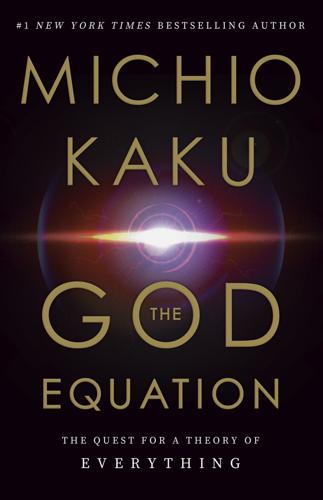
The God Equation: The Quest for a Theory of Everything
by
Michio Kaku
Published 5 Apr 2021
Like a child playing with Tinkertoys or Legos, one could then build up, atom for atom, chains of these atoms stuck together to reproduce the actual structure of a complex molecule. Watson and Crick realized that the DNA molecule was one of the main constituents of the nucleus of a cell, so that was a likely target. By analyzing the crucial X-ray photos taken by Rosalind Franklin, they were able to conclude that the structure of the DNA molecule was a double helix. In one of the most important papers published in the twentieth century, Watson and Crick were able to use quantum mechanics to decode the entire structure of the DNA molecule. It was a masterpiece. They demonstrated conclusively that the fundamental process of living things—reproduction—could be duplicated at the molecular level.
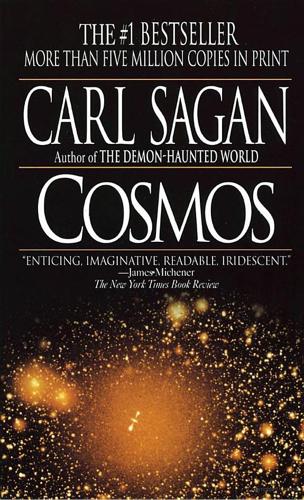
Cosmos
by
Carl Sagan
Published 1 Jan 1980
These are the best that four billion years of evolution could produce, containing the full complement of information on how to make a cell, a tree or a human work. The amount of information in human DNA, if written out in ordinary language, would occupy a hundred thick volumes. What is more, the DNA molecules know how to make, with only very rare exceptions, identical copies of themselves. They know extraordinarily much. DNA is a double helix, the two intertwined strands resembling a “spiral” staircase. It is the sequence or ordering of the nucleotides along either of the constituent strands that is the language of life. During reproduction, the helices separate, assisted by a special unwinding protein, each synthesizing an identical copy of the other from nucleotide building blocks floating about nearby in the viscous liquid of the cell nucleus.
…
For example, one whale enzyme, identical to one you have in every cell of your body, is called hexokinase, the first of more than two dozen enzyme-mediated steps required to convert a molecule of sugar obtained from the plankton in the whale’s diet into a little energy—perhaps a contribution to a single low-frequency note in the music of the whale. The information stored in the DNA double helix of a whale or a human or any other beast or vegetable on Earth is written in a language of four letters—the four different kinds of nucleotides, the molecular components that make up DNA. How many bits of information are contained in the hereditary material of various life forms? How many yes/no answers to the various biological questions are written in the language of life?
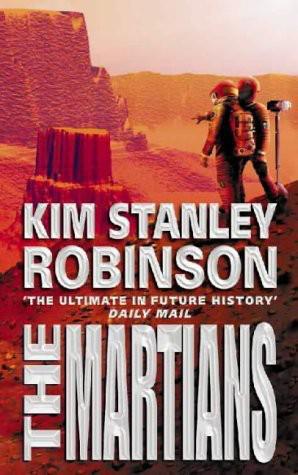
Martians
by
Kim Stanley Robinson
Published 6 Jul 1999
But it didn't, and that poor boy wandered the world as lonely as old Coyote himself. And he didn't have Maya—or he did, but for him she replaced Hiroko, not Jackie. Not motherless but partnerless. I felt for him. You see couples who have grown together like two old trees making one plant, trunks intertwined like the double helix itself, and you think, Yes that's the way it's supposed to be. It wouldn't be so lonely then. But there you are. You can't make partners by wanting them. So it's back to friends, and loneliness. And so I watched Nirgal live his lives like a second self cast loose on the wind. We all live the same stories.
…
Back inside to recover the list and check off mowing. Then he rushes to his desk ready to write. Immense concentration brought to bear instantaneously, or at least as soon as another cup of black mud hits the bloodstream. The first word for the day comes quickly: “The” Of course it might not be the right word. He considers it. Time passes in a double helix of eternal no-time, in the blessing that cannot be spoken. He revises, rewrites, restructures. The phrase grows, shrinks, grows, shrinks, changes color. He tries it as free verse, sestina, mathematical equation, glossolalia. Finally he returns to the original formulation, complexifying it with an added nuance: “The End” It says what needs to be said; and it's twice as many words as his usual daily output.
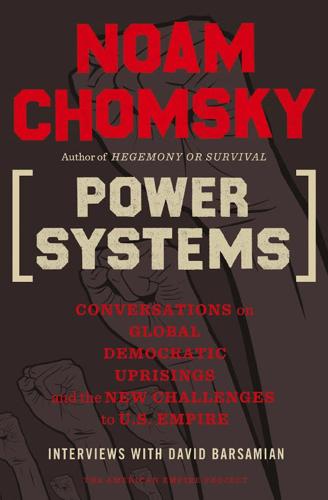
Power Systems: Conversations on Global Democratic Uprisings and the New Challenges to U.S. Empire
by
Noam Chomsky
and
David Barsamian
Published 1 Nov 2012
He says science education is increasingly being designed with the effect of killing any interest in science. If you are in college, maybe you have to memorize a bunch of enzymes or something. If you are in elementary school, you memorize the periodic table. When you study the discovery of DNA, you’re just taught what scientists already discovered. You memorize the fact that DNA is a double helix. Science is being taught in a way that kills any joy in science, gives you no sense of what discovery is. It’s the opposite of Weisskopf’s view that it matters what you discover, not what you cover. Alberts gives some nice examples of alternatives that do work. In one kindergarten class, each kid was given a dish with a mixture of pebbles, shells, and seeds, and asked, “How do we know if something is a seed?”
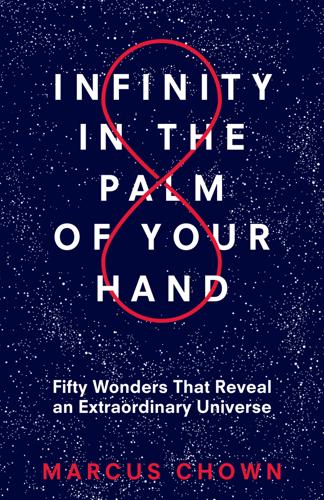
Infinity in the Palm of Your Hand: Fifty Wonders That Reveal an Extraordinary Universe
by
Marcus Chown
Published 22 Apr 2019
Instead, in a bewilderingly complex way, genes are switched on and off by other genes and by concentrations of chemicals in the environment. It means that the human genome reads differently at different times in the development of an embryo—in effect making it appear like more than one set of 24,000 genes. 3. Adenine (A), guanine (G), cytosine (C), and thymine (T) are molecules known as “bases.” They form the backbone of the “double-helix” of the giant DNA molecule. Each group of three are the bases codes for a different amino acid—for instance, TGG codes for Tryptophan. Amino acids are the Lego building blocks of proteins. 4. The Medusa and the Snail by Lewis Thomas (Penguin, 1995). 2. Catch Me if You Can 1. Dr Tatiana’s Sex Advice to all Creation by Olivia Judson (Vintage, 2003). 2.

On the Future: Prospects for Humanity
by
Martin J. Rees
Published 14 Oct 2018
Our perspective has been transformed by great unifying ideas. The concept of continental drift (plate tectonics) helps us to fit together a whole raft of geological and ecological patterns across the globe. Darwin’s insight—evolution via natural selection—reveals the overarching unity of the entire web of life on this planet. And the double helix of DNA reveals the universal basis for heredity. There are patterns in nature. There are even patterns in how we humans behave—in how cities grow, how epidemics spread, and how technologies like computer chips develop. The more we understand the world, the less bewildering it becomes and the more we’re able to change it.

The Singularity Is Near: When Humans Transcend Biology
by
Ray Kurzweil
Published 14 Jul 2005
See chapter 2, note 57. 6. The original reports of Crick and Watson, which still make compelling reading today, may be found in James A. Peters, ed., Classic Papers in Genetics (Englewood Cliffs, N.J.: Prentice-Hall, 1959). An exciting account of the successes and failures that led to the double helix is given in J. D. Watson, The Double Helix: A Personal Account of the Discovery of the Structure of DNA (New York: Atheneum, 1968). Nature.com has a collection of Crick's papers available online at http://www.nature.com/nature/focus/crick/index.html. 7. Morislav Radman and Richard Wagner, "The High Fidelity of DNA Duplication," Scientific American 259.2 (August 1988): 40–46. 8.
…
Life's Computer In the very early stages of evolution information was encoded in the structures of increasingly complex organic molecules based on carbon. After billions of years biology evolved its own computer for storing and manipulating digital data based on the DNA molecule. The chemical structure of the DNA molecule was first described by J. D. Watson and F. H. C. Crick in 1953 as a double helix consisting of a pair of strands of polynucleotides.6 We finished transcribing the genetic code at the beginning of this century. We are now beginning to understand the detailed chemistry of the communication and control processes by which DNA commands reproduction through such other complex molecules and cellular structures as messenger RNA (mRNA), transfer RNA (tRNA), and ribosomes.
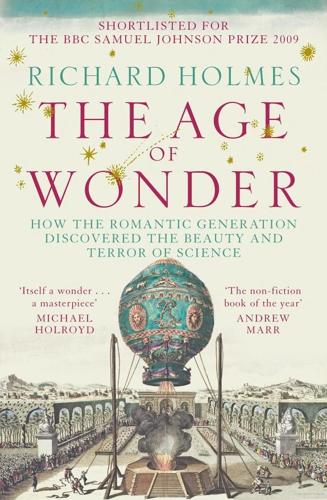
The Age of Wonder
by
Richard Holmes
Published 15 Jan 2008
Something similar had arisen during the controversy over the John Harrison chronometers. The whole question of ‘scientific priority’ has become a major preoccupation in modern science. See for example the race over the structure of DNA between Crick and Watson at Cambridge, and Rosalind Franklin at Imperial College, as described in James Watson’s classic The Double Helix (1968) and Brenda Maddox’s biography Rosalind Franklin: The Dark Lady of DNA (2002). Carl Djerassi’s play Oxygen (2001) beautifully dramatises an earlier eighteenth-century priority dispute between Priestley, Scheele and Lavoisier. 9 Sorcerer and Apprentice 1 Sir Joseph Banks had been getting older and more infirm, and he hated it.
…
A later edition of the poem was superbly illustrated with William Blake’s watercolour engravings, a consolation for those terrified by the new cosmology. Bibliography The Bigger Picture (In chronological order of publication) Thomas Kuhn, The Structure of Scientific Revolutions, Chicago UP, 1962-70 Albert Bettex, The Discovery of Nature (with 482 illustrations), Thames & Hudson, 1965 James D. Watson, The Double Helix: A Personal Account of the Discovery of the Structure of DNA, 1968/2001 Arthur Koestler, The Act of Creation, Danube edition, 1969 Jacob Bronowski, The Ascent of Man, 1973 Adrian Desmond and James Moore, Darwin, Penguin, 1992 Lewis Wolpert, The Unnatural Nature of Science, Faber, 1992 James Gleick, Richard Feynman and Modern Physics, Pantheon Books, 1992 Michael J.
…
.): The Poetics of Scientific Biography, 94n sodium: Davy discovers, 297-8 Soho Square, London: Banks’s house in, 54, 58, 381 Sokoto, West Africa, 230 Solander, Daniel: on Endeavour voyage, 1, 4, 9-10, 13-14, 23, 38n, 39; Banks nurses during illness, 40; advises Harriet Blosset to break with Banks, 42; celebrity on return from voyage, 42-3; journal appropriated, 44; helps Banks with publication of journal, 46; activities in London, 49; meets Omai, 50; in Parry portrait with Omai, 51; on Banks’s parting from Sarah Wells, 55; death, 56, 396 solar system: Herschel’s view of, 122 Somerset, Charlotte, Duchess of, 384 Somerset, Edward Adolphus, 11th Duke of, 393 Somerville, Mary, 179, 407, 447, 452, 454, 458; On the Connexion of the Physical Sciences, 394, 458, 459 Somerville, William, 447 Sotheby, William, 452 soul: concept of, 309, 311, 314, 316 South Africa: John Herschel sets up observatory in, 462-5 South America: Humboldt in, 406 Southey, Edith, 263 Southey, Robert: poems inspired by Bryan Edwards, 212; and Pantisocracy, 252, 259; edits Annual Anthology, 259, 269, 275; experiments with nitrous oxide, 263-5; describes Valley of the Rocks, 266; on difference between scientific and artistic temperaments, 274; believes Davy abandoning poetry, 275, 320; Davy corresponds with, 293; Davy climbs Helvellyn with, 295; Anna Beddoes requests to write biography of husband, 302; quotes Wordsworth’s ‘The Tables Turned’, 320; Davy introduces Jane to, 340; Thalaba the Destroyer, 232, 275 Southey, Thomas, 264 Spain: ship reaches Tahiti, 3 spectography, 440n Sporcken, General A.F. von, 70 Spöring, Herman, 10, 14, 40 Sprat, Mrs and Mrs (of Slough), 188, 195 Spufford, Francis: Cultural Babbage (with Jenny Uglow), 438n Staël, Anne Louise Germaine Necker, Baronne de: Corinne, 338 Stansfield, Dorothy, 303n steam power: development, 382 Steffens, Henrick, 315 Steiner, George, 429n, 469n Stephenson, George: accuses Davy of plagiarising safety lamp, 371-5 Stock, John: Memoir on Beddoes, 302 Stowe, Misses (sisters), 182, 188 Strangelove, Dr (fictional figure), 465n Stukeley, William, xviiin, 456 Styria, 377 Success colliery, Newbottles, 361 Sumatra, 214 sun, the: Herschel believes inhabited, 199, 391; Herschel on effects on political revolutions, 204 Sun Fire Office (Guildhall), 376 surgery: without anaesthetic, 283, 305-6 Sussex, Prince Augustus Frederick, Duke of, 436-7 Sydney Cove see Botany Bay Tabourai (Tahitian interpreter), 6 Tahiti (Otaheite): Banks visits, xxi, 1-7, 10, 13-14; thieving, 4-6, 16, 24, 27-8; Cook’s security measures, 15-16; sexual practices, 17-18, 25-6, 37, 42, 44, 46n; venereal disease in, 18; language, 19; trading, 19-20; grief practices, 22-3; surfing, 24-5; ceremonies and customs, 26-7, 32, 37-8; violations in, 27-8; differences and disharmony in, 28-9; food and cooking, 28; Cook and Banks circumnavigate, 29-32; evidence of cannibalism, 30; native structures, 31-2; tattooing, 32-3; Endeavour leaves, 35; Banks’s written accounts of, 36-7, 45; infanticide, 37-8; Parkinson’s published account of, 45; Omai returns to, 52, 54; as legend, 54; traditional ways destroyed, 59n Tambora volcano (Indonesia): erupts (1815), 383 Tarróa, Tahitian king, 212 Tasmania: exploration, 10 Tayeto (Tupia’s son), 40 Taylor, William, 275 telescopes: Herschel constructs, 60-1, 77, 83-5, 94; refractor type, 77-8; reflector type, 78; Herschel constructs forty-foot Newtonian form model, 163, 176-7, 181-2; forty-foot instrument put into operation, 190-1; management and maintenance problems, 191; forty-foot instrument dismantled, 465-6 Telescopium Herschelii (The Telescope; constellation), 409 Tennyson, Alfred, 1st Baron: In Memoriam, 451n; ‘The Kraken’, 384; ‘Timbucto’, 227-9 Terapo (Tahitian woman), 22 Thelwall, John, 307, 316 Thénard, Louis-Jacques, 297 Thompson, Benjamin see Rumford, Count Thompson, John, 40 Thomson, James: The Seasons, 171, 172n, 243; ‘To the Memory of Sir Isaac Newton’, 440n Thornton, Dr Robert, 11, 41-2 Thrale, Susannah, 114 Ticknor, George, 359-60 Tierra del Fuego, 13, 15 Timbuctoo, 212, 215-16, 218, 220, 225, 227 Times, The: on Mungo Park’s return, 220; attacks Davy for accepting Prix Napoléon, 353; obituary of William Herschel, 408; on deaths of leading scientists, 435; reports on meetings of British Association, 447, 453 Tissandier, Gaston: Histoire des Ballons et Aeronauts Célèbres, 156 Tobin, James, 257, 431 Tobin, John, 431 Tonkin, John, 238-9, 241-4, 250, 253, 285 Tooke, John Horne, 307 Town and Country Magazine, 49 Trinity College, Dublin, 304 True Briton (journal), 220 Tuareg tribesmen, 227-8 Tupia (Tahitian priest), 34, 40 Turner, Joseph Mallord William: cloud paintings, 160 Uglow, Jenny: Cultural Babbage (with Francis Spufford), 438n; The Lunar Men, 246n ultraviolet light, 329 Underwood, Thomas, 272 universe (celestial system): Herschel’s views on, 11-12, 122-4, 204, 208-10 Uranus: Herschel discovers, 96-106, 207; name, 97 & n, 102n, 103; international acceptance of, 101; earlier sightings and recordings, 102; as symbol of Romantic science, 106 utilitarianism, 435 Venice, 380 Venus, Transit of (1768), 5, 10, 21-2, 91 Versailles: balloon ascents at, 126, 135 Vestiges of the Natural History of Creation (anon.), 451 Vesuvius: Davy visits, 356, 358, 378, 381 Victoria, Queen: takes chloroform during childbirth, 284 Vineyard Nurseries, Hammersmith, 11 Vitalism (Life Force), xix, 307, 309-18, 321-3, 325, 327, 354, 356, 421, 428, 431 Volta, Alessandro, 173, 295, 314, 355 voltaic batteries, 245, 273-4, 286, 295, 297, 299, 317, 328-9 Voltaire, François Marie Arouet: in Haydon painting, 319; Candide, 68; Letters on the English Nation, xviiin; Micromégas, 426 Voyager (spacecraft), 190 Wagner, Richard: Tristan and Isolde (opera), 242 Wakefield, Priscilla, 179 Wakley, Thomas, 336 Walker, William: Eminent Men of Science Living in 1807-8 (painting), 303 Waller, Edmund, 424 Wallis, Captain Samuel, 3, 17 Walls End colliery, Northumberland, 361-2, 368-9 Walmer Castle, Kent, 200 Walpole, Horace, 135-8, 140, 338 Walton, Izaak, 276; The Compleat Angler, 339 Wansey (musician), 265 Waterton, Charles, 232, 382; Wanderings in South America, 382 Watson, James: The Double Helix, 373n Watson, Sir William, 60-1, 101 Watson, Sir William, junior: friendship with Herschel, 60-2, 92-3, 98, 100-1, 108-9, 135, 164, 166, 178, 180; and Herschel’s marriage to Mary Pitt, 185-6; and philosophical significance of astronomy, 203 Watt, Gregory: friendship with Davy, 150, 263-4, 266, 275, 362; death, 293-4 Watt, James: recommends Beddoes to Banks, 235; son stays with Davy’s mother, 250; Beddoes seeks financial support from, 251; encourages Beddoes to recruit Davy, 252; Davy visits, 256; in Davy’s nitrous oxide experiments, 263; designs portable gas chamber, 269; letter from Banks on Beddoes’s project, 281 weather forecasting, 160n Webb, T.H., 87 Wedgwood, Thomas, 263, 281 Wedgwood family, 256 Wells, Dr Horace, 283 Wells, Sarah, 49, 53-6, 384 Whewell, William: and John Herschel, 387; supports Wollaston for presidency of Royal Society, 397; and John Herschel’s Study of Natural Philosophy, 441; and formation of British Association, 446-7, 449; and Bridgewater Treatises, 452; reviews Mary Somerville, 459; befriends Charles Darwin, 460; On the Plurality of Worlds, 209 White, Gilbert, 12, 48, 136, 146, 249n Whitehaven Collieries, 369 Wilberforce, William, 386 Wilson, Frances: The Ballad of Dorothy Wordsworth, 187n Windham, William, 140 Wiverou (Tahitian chief), 30 Wollaston, William Hyde, 369, 374, 397-9, 401-2, 417, 436, 438-9 Wollstonecraft, Mary: published by Johnson, 106, 271; earnings, 179; Godwin writes Memoir of, 267; Davy supports, 304 women: earnings and professional status, 179-80; Davy advocates scientific knowledge for education of, 304; and third British Association meeting, 447, 452; membership of British Association, 459 wonder: nature of, xx Woodford, Revd James, 136 Wooster, David: Paula Trevelyan, 460n Wordsworth, Dora (William’s daughter), 203n Wordsworth, Dorothy, 186n, 203n, 249n Wordsworth, John (William’s son), 203n Wordsworth, Mary (née Hutchinson), 186n Wordsworth, William: on Newton, xvi-xvii, 320, 469n; published by Johnson, 106, 271; marriage to Mary Hutchinson, 186n; regional roots, 236; Coleridge visits in Lake District, 267; influence on Davy’s poetry, 276; Davy visits in Lake District, 295; at Haydon’s ‘Immortal Dinner’, 318; in Haydon painting, 319; quarrel with Coleridge, 340; honoured with dinner, 348; on Davy’s decline, 414; John Davy acts as doctor to, 433; effect of poetry on John Stuart Mill, 441; Coleridge on poetry of, 449; Lyrical Ballads (with Coleridge), 254, 275, 291; On Church and State, 449; Peter Bell, 162; The Prelude, 232, 320, 431, 469n; ‘The Tables Turned’, 320; ‘Tintern Abbey’, 316 Wright, Joseph (of Derby): paintings, xix; influenced by Priestley, 246 Wright, Thomas, 77; Original Theory or New Hypothesis of the Universe, 91 Wynn, William, 265 Yansong, West Africa, 230 York, Edward, Duke of (George III’s brother), 75, 177 Young, Edward: Night Thoughts, 92 & n Young, Thomas, 436 Zoffany, Johann, 8, 47 ALSO BY RICHARD HOLMES One for Sorrow (poems) Shelley: The Pursuit Shelley on Love (editor) Gautier: My Fantoms (translations) Nerval: The Chimeras (with Peter Jay) Mary Wollstonecraft and William Godwin: A Short Residence in Sweden and Memoirs (editor, Penguin Classics) De Feministe en de Filosoof Dr Johnson & Mr Savage Coleridge: Early Visions Coleridge: Darker Reflections Coleridge: Selected Poems (editor, Penguin Classics) Footsteps: Adventures of a Romantic Biographer Sidetracks: Explorations of a Romantic Biographer Insights: The Romantic Poets and their Circle Classic Biographies (series editor) Copyright HarperPress An imprint of HarperCollinsPublishers 77-85 Fulham Palace Road, Hammersmith, London W6 8JB www.harpercollins.co.uk Published by HarperPress in 2008 Copyright © Richard Holmes 2008 FIRST EDITION The author asserts the moral right to be identified as the author of this work A catalogue record for this book is available from the British Library EPub Edition © SEPTEMBER 2009 ISBN: 978-0-007-34988-3 All rights reserved under International and Pan-American Copyright Conventions.
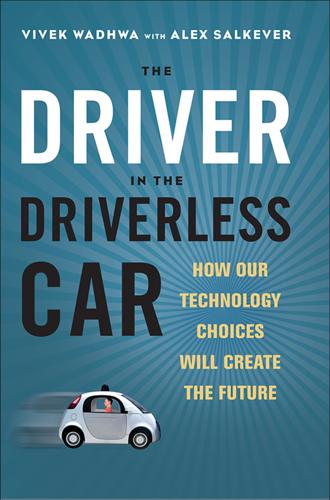
The Driver in the Driverless Car: How Our Technology Choices Will Create the Future
by
Vivek Wadhwa
and
Alex Salkever
Published 2 Apr 2017
Christened Mycoplasma mycoides JCVI-syn1.0, also known as “Synthia,” the slow-growing, harmless bacterium was made of a synthetic genome with 1,077,947 DNA base pairs. To make Synthia, Venter’s team inserted a synthetic genome into a cell containing no DNA. The technology that Venter used to “write” the genes of this new organism is the equivalent of a laser printer that can “print” DNA. DNA has a fairly simple structure, with a double helix containing linked chains of nucleic acids. Already there are a number of DNA print providers, such as Thermo Fisher Scientific and GeneArt, that will sell DNA synthesis and assembly operations as a service. Current pricing is by the number of amino-acid base pairs—the chemical components of a gene—that are to be assembled.
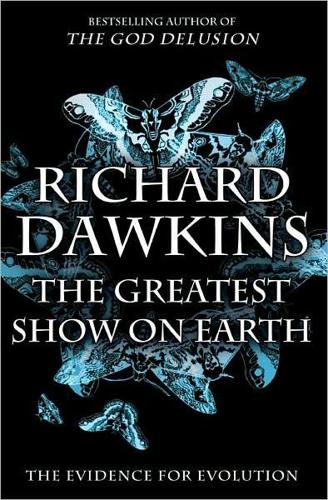
The Greatest Show on Earth: The Evidence for Evolution
by
Richard Dawkins
Published 21 Sep 2009
If you gradually heat DNA, there comes a point – somewhere around 85°C – when the bonding between the two strands of the double helix breaks, and the two helices separate. You can think of 85°C, or whatever the temperature turns out to be, as a ‘melting point’. If you let it cool again, each single helix spontaneously joins up again with another single helix, or fragment of single helix, wherever it finds one with which it can pair, using the ordinary base-pairing rules of the double helix. You might think that this would always be the partner from which it lately separated, and with which, of course, it is perfectly matched.
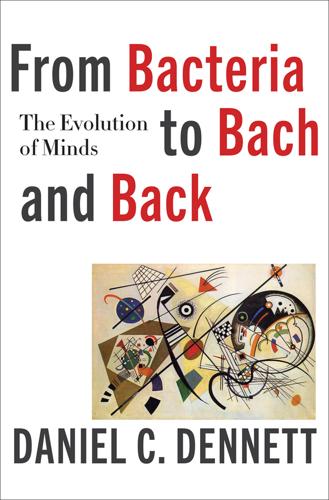
From Bacteria to Bach and Back: The Evolution of Minds
by
Daniel C. Dennett
Published 7 Feb 2017
In other words, cognitive scientists today are roughly in the position that evolutionary theorists and geneticists were in before the analysis of the structure of DNA: they knew that information about phenotypic features—shapes of bodily parts, behaviors, and the like—was somehow being transmitted down through the generations (via “genes,” whatever they were), but they didn’t have the ACGT code of the double helix to provide them with a Shannon measure of how much information could be passed from parent to offspring as genetic inheritance. Some thinkers, perhaps inspired by DNA, think that there must be an encoding in the nervous system like the DNA code, but I have never seen a persuasive argument for this, and as we will soon see, there are reasons for skepticism.
…
After decades of research and development, speech-recognition software is finally almost as competent as a five-year-old child at extracting the phonemes of casual speech from the acoustic maelstrom that arrives at an ear or a microphone. The digitization of phonemes has a profound implication: words play a role in cultural evolution that is similar to the role of DNA in genetic evolution, but, unlike the physically identical ladder rungs in the double helix made of Adenine, Cytosine, Guanine, and Thymine, words are not physically identical replicators; they are “identical” only at the user-illusion level of the manifest image. Words, one might say, are a kind of virtual DNA, a largely digitized medium that exists only in the manifest image. Millions of acorns and apples are broadcast into the world by oak trees and apple trees “in hopes of” starting new descendants.
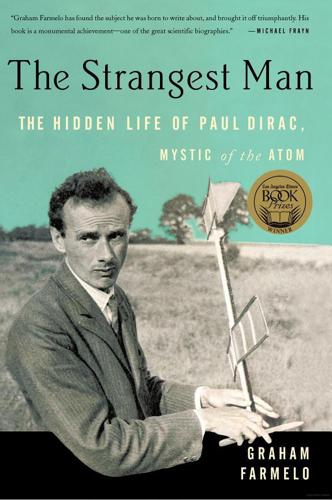
The Strangest Man: The Hidden Life of Paul Dirac, Mystic of the Atom
by
Graham Farmelo
Published 24 Aug 2009
The directorship of the Cavendish passed to the crystallographer Sir Lawrence Bragg, who steered the laboratory away from studies of the innermost structure of matter, partly because it could no longer keep up with the competition from the United States. With Rutherford’s passing, the Cavendish had seen the last of its glory days as a place where experimenters probed atoms with the finest possible probes, though Bragg steered the laboratory’s agenda into productive territory, culminating in Watson and Crick’s discovery of the double-helix structure of DNA in 1953. By the end of 1937, Dirac was bereft of the company of experimenters with similar interests in physics, and some of his most valued colleagues among the Cambridge theoreticians were in decline. Following a debilitating stroke, Fowler’s health was failing, and, by early 1939, he had ‘faded out’, as he told Eddington.43 In the sometimes gory seminars in the mathematics department, Eddington was timorous and unable to defend himself against pillory by his younger colleagues.
…
.: University of Chicago Press. Walters, B. (1970) How to Talk with Practically Anybody About Practically Anything, New York: Doubleday & Co., Inc. Warwick, A. (2003) Masters of Theory: Cambridge and the Rise of Mathematical Physics, Chicago, Ill.: University of Chicago Press. Watson, J. D. (1980) The Double Helix, ed. G. S. Stent, New York: W. W. Norton & Co. Wattenberg, A. (1984) ‘December 2, 1942: The Event and the People’, in R. G. Sachs (ed.), The Nuclear Chain Reaction: Forty Years Later, Chicago, Ill.: University of Chicago Press, pp. 43–53. Weart, S. and Weiss Szilard, G. (eds) (1978) Leo Szilard: His Version of the Facts, Cambridge, Mass.: MIT Press.
…
D. ceremony 1 lack of employment 1, 2, 3, 4 chauffeurs her father to and from work 1 forced to sell her car 1 family radio 2 and her parents’ marriage crisis 1 degree studies 1, 2, 3, 4, 5 goes to Lourdes with her father 1 supports her parents 1 moves to London to become a secretary 1, 2 in Budapest 1, 2 possible reason for her parents’ failed marriage 1, 2n11 marries Joe Teszler 1 lives in Amsterdam 1 birth of son 1 in the Second World War 1, 2, 3 stays in Cambridge 1 her suffering in Budapest 1 birth of daughter 1 relationship with Manci 1, 2 in Alicante 1 stroke 1 Dirac, Charente, France 1 Dirac, Charles (PD’s father) 1, 2, 3, 4 birth (in Monthey, Switzerland) 1 childhood 1 education 1 in London 1 teaches at Merchant Venturers’ Secondary School 1, 2, 3, 4, 5 settles in Bristol 1, 2 appearance 1, 2, 3, 4, 5 personality 1, 2, 3, 4, 5 meets Florence Holten 1, 2 and religion 1, 2, 3, 4, 5 marries Flo 1, 2 insistence on his children speaking French 1, 2, 3, 4, 5 champions Esperanto in Bristol 1 relationship with PD 1, 2, 3, 4, 5, 6, 7 careful with money 1, 2, 3, 4, 5, 6 work ethic 1, 2, 3, 4 effects of his rigorous educational regime at home 1 tyranny of 1, 2, 3, 4, 5 his favourite child 1, 2, 3 forces Felix to study engineering instead of medicine 1, 2 deceptions by 1, 2 acquires British nationality 1, 2 efforts to send PD to Cambridge 1, 2, 3 helps PD financially 1, 2, 3, 4 interest in PD’s career 1, 2, 3, 4 family radio 1 deeply affected by the death of Felix 1, 2, 3, 4, 5 death of his mother 1 attends PD’s Ph.D. ceremony 1 letters to his ‘only son’ 115, 1 vegetarianism 1, 2 PD continues to feel intimidated by 1 and PD’s FRS election 1, 2 retirement 1, 2 infidelity 1, 2, 3 marriage crisis 1, 2, 3, 4 loses his grip on his family 1 continues to teach from home 1, 2 plans to visit Geneva 1 rediscovery of his childhood Catholicism 1 visits Geneva with Betty 1 Flo attacks in the Swedish press 1 tries to understand PD’s work 1, 2 goes to Lourdes 1 ill with pleurisy 1 serial tax evader 1 PD blames him for Felix’s suicide 1 ‘loathed’ by PD 1, 2n45 death and funeral 1 his estate 1 gravestone 1 Dirac, Felix (PD’s brother) 1, 2 birth 1 names 1n16 appearance 1, 2, 3, 4, 5, 6n32 education 1, 2, 3, 4, 5, 6, 7, 8, 34, 9 childhood in Bristol 1, 2, 3, 4, 5 bullied by his father 1, 2 personality 1, 2, 3 rift with PD 1, 2, 3, 4, 5, 6 forced to study engineering instead of medicine 1 student apprenticeship in Rugby 1, 2 based near Wolverhampton 1, 2 a draughtsman 1 Buddhism and astrology 1 acquires a girlfriend 1 settles in Birmingham 1 volunteers for the Ambulance Corps 1 leaves his job at a machine-testing laboratory 1 personality 1, 2, 3 suicide 1, 2, 3, 4, 5, 6, 7, 8, 9n7 the family’s response to his death 1, 2, 3, 4, 5, 6 memorial service and inquest 1 gravestone 1 Dirac, Florence (née Holten; PD’s mother) 1, 2, 3, 4 first meets Charles 1, 2 appearance 1, 2 personality 1, 2, 3 absent-minded 1, 2 and religion 1 correspondence with Charles 1, 2 marries Charles 1 birth of Felix 1 birth of Paul 1 poem about PD 1, 2n49 Paul as her favourite child 1, 2 and Charles’s deception 1 correspondence with PD 1, 2, 3, 4, 5, 6, 7, 8, 9n29 fears competition for PD’s affections 1, 2, 3, 4, 5 asks PD for money 1, 2, 3 and the death of Felix 1 poetry 1, 2, 3n16, 4n34, 5n49, 6n15, 7n49 interest in politics 1, 2 attends PD’s Ph.D. ceremony 1 worried about PD’s emaciated appearance 1 evening classes 1, 2, 3, 4n17 admits her unhappiness 1, 2, 3 housework, dislike of 1, 2 PD pays for a diamond ring 1, 2 PD’s visits home 1, 2 visits PD in Cambridge 1 and PD’s visits to Russia 1, 2 opposes the idea of a woman prime minister 1 fussing over PD 1 and PD’s FRS election 1 dreads Charles’s retirement 1 the charade of her marriage 1, 2 affinity with the sea 1, 2; see also Richard Holten (her father) marriage crisis 1, 2, 3, 4 Mediterranean cruises 1, 2, 3 at PD’s Nobel Prize ceremony 1, 2 at Bohr’s party in Copenhagen 1, 2 and Charles’s pleurisy 1 meets Manci 1 disputes with Manci 1, 2 in the Second World War 1, 2, 3, 4, 5 death and funeral 1 Dirac, Gabriel (PD’s step-son) 1, 2, 3, 4, 5, 6, 7, 8, 9, 10, 11, 12, 13n26 Dirac, Gisela 1 Dirac, Judy (PD’s step-daughter) 1, 2, 3, 4, 5, 6, 7, 8, 9, 10, 11, 12 Dirac, Louis (PD’s paternal grandfather) 1, 2n10 Dirac, Margit (Manci; née Wigner; PD’s wife) 1, 2, 3, 4 meets PD 1 personality 1, 2, 3, 4, 5, 6, 7, 8, 9, 10 and PD’s talk of his unhappy childhood 1, 2 on her first marriage and divorce 1, 2 and religion 1, 2, 3 a keen follower of the arts 1, 2, 3 pursuit of PD 1, 2 PD visits her in Budapest 1, 2 Isabel Whitehead’s assessment 1 PD’s proposal of marriage 1 marriage and honeymoon 1 relationship with Betty 1, 2, 3, 4, 5, 6 ‘Wigner’s sister’ appellation 1, 2n17 settles in Cambridge 1 in the Soviet Union 1 pregnancies 1, 2, 3, 4n10 as an alien in wartime England 1 and air raids on Cambridge 1 Flo helps with housework 1 orders Judy out of the house 1 and the Nazi concentration camps 1 complains about the exodus from Cambridge 1 scorns Heisenberg 1 in Princeton 1 and politics 1, 2 marriage under strain 1, 2, 3 a better wife than mother 1 and disappearance of Judy 1, 2 worsening arthritis 1, 2 and PD’s decision to move to Florida State University 1 at Florida State 1, 2, 3 Jewish and occasionally anti-Semitic 1, 2n16 as a hostess 1, 2 fraught relationship with Halpern 1, 2, 3 PD’s death and funeral 1 lively and active for ten years after PD’s death 1 letter from Hillary Rodham Clinton 1 death 1 Dirac, Mary (PD’s daughter; later Colleraine, then Tilley) 1, 2, 3, 4, 5, 6, 7, 8 birth 1 childhood 1, 2, 3 personality 1 education 1 emigration to the USA 1, 2 Dirac, Monica (PD’s daughter) 1, 2 birth 1 childhood 1, 2, 3, 4 personality 1 at PD’s commemoration 1 Dirac, Paul Adrien Maurice LIFE STORY birth (8 August 1902) 1 appearance and dress sense 1, 2, 3, 4, 5, 6, 7, 8, 9, 10, 11, 12, 13, 14, 15, 16, 17, 18, 19, 20, 21, 22, 23, 24, 25, 26, 27, 28n32 digestive problems 1, 2, 3, 4, 5 foresees the existence of the positron 1, 2, 3, 4, 5, 6 childhood in Bristol 1, 2, 3, 4, 5, 6, 7 relationship with his father 1, 2, 3, 4, 5, 6, 7, 8, 9, 10, 11, 12, 13, 14, 15, 16, 17, 18, 19, 20, 21, 22, 23, 24, 25, 26 nicknamed ‘Tiny’ 10, 1 school education 1, 2, 3 visits Switzerland 1, 2 Bristol accent 1, 2, 3, 4, 5n36 and technical drawing 1, 2, 3, 4, 5, 6n44 handwriting 1, 2, 3 his mother’s favourite 1, 2 rift with Felix 1, 2, 3, 4, 5, 6 engineering degree 1, 2, 3, 4, 5, 6, 7, 8, 9, 10 public impact of relativity theory 1 trainee engineer in Rugby 1, 2 applied maths degree studies 1 and projective geometry 1, 2, 3, 4, 5, 6, 7 wins scholarships to St John’s College, Cambridge 1 supervision by Fowler 1, 2, 3, 4, 5, 6, 7, 8 Charles helps him financially 1 arrives at Cambridge 1 manner at the dinner table 1, 2 attends Eddington’s lectures 1 Blackett and Kapitza become his closest friends 1 and Soviet ideology 1, 2, 3 and his mother’s possessiveness 1 first academic papers 1, 2 Felix’s death 1, 2, 3, 4, 5, 6 first great epiphany 1 first paper on quantum mechanics 1, 2 Ph.D. thesis 1 combines logic and intuition 1, 2 as ‘the strangest man’ (Bohr) 1 successful period in Copenhagen 1, 2, 3 in Göttingen 1, 2, 3 friendship with Oppenheimer 1, 2, 3, 4, 5, 6, 7, 8 his visits home 1, 2, 3, 4 elected Fellow of St John’s College 1 his rooms in college 1 makes his most famous contribution to science 1 relationship with Isabel Whitehead 1 first visit to Russia 1 reductionism 1 first visit to US 1, 2 elected Fellow of the Royal Society 1, 2n10 buys his first car 1 represented in a special version of Faust 1, 2 Lucasian Chair 1, 2, 3, 4 Wittgenstein, opinion of 1 and moral philosophy 1 works with Kapitza in his laboratory 1, 2 last meeting with Ehrenfest 1 Nobel Prize for physics 1, 2, 3n20 first public comment on social and economic affairs 1 smitten with Rho Gamow 1, 2 first meets Manci 1 campaign for Kapitza’s release 1, 2, 3, 4 sends the Gamows a baby alligator 1, 2n43 guardian of Kapitza’s sons 1, 2 graduate supervisor 1 proposes to Manci 1 marriage and honeymoon 1 first love letter 1 wants his own children 1, 2n23 refuses Princeton’s job offer 1, 2n50 Scott lecture 1 offered war work 1 Baker Medal 1 and the death of his mother 1 refused a visa for the Soviet Union 1, 2n46 declines honours 1, 2 refused a US visa 1, 2 visits India 1 jaundice 1, 2n37 marriage under strain 1, 2 marginalised in Cambridge 1, 2, 3 emigration to US 1, 2, 3 Scientific American article (1963) 1, 2n10 Horizon interview (1965) 1, 2n11 quarks, likes concept of 1 decision to move to Florida State University 1 routine at Florida State 1 busts and paintings of PD 1 accepts the Order of Merit 1 visits CERN 1 flies on Concorde 1 sees his life as a failure 1 surgery on tubercular kidney 1 death (20 October 1984) 1, 2n17 funeral 1, 2n19 commemoration in Westminster Abbey 1 centenary of his birth 1, 2 possible autism 1 names 1n16 memorial stone 490n27 PERSONALITY – aloofness 1, 2, 3 – confident 1, 2, 3, 4, 5, 6 – defensiveness 1, 2 – determination 1, 2, 3, 4, 5, 6 – diffidence 1, 2 – equability 1 – frugality 1 – inhibition 1 – lack of social sensitivity 1, 2, 3, 4, 5, 6, 7, 8, 9 – literal-mindedness 1, 2, 3, 4, 5n44 – modesty 1, 2, 3, 4, 5 – narrow-mindedness 1 – objectivity 1 – obsession with taking long walks 1, 2, 3, 4, 5, 6, 7, 8, 9, 10, 11, 12, 13, 14, 15, 16, 17n28, 18n46 – otherworldiness 1, 2, 3, 4 – passivity 1 – physical ineptitude 1, 2 – private enthusiasms 1, 2 – reticence 1, 2, 3, 4, 5, 6, 7, 8 – rigid pattern of activities 1, 2, 3, 4, 5, 6, 7, 8 – self-centredness 1, 2, 3 – shyness 1, 2, 3 – stubborness 1, 2, 3 – taciturnity 1, 2, 3, 4, 5 – top-down thinker 1, 2, 3 – verbal economy 1, 2, 3, 4, 5, 6, 7, 8, 9, 10, 11, 12, 13, 14, 15, 16 – work ethic 1, 2, 3, 4, 5 INTERESTS, APTITUDES AND OPINIONS – beauty, mathematical, fascination with 1, 2, 3, 4, 5, 6, 7, 8, 9, 10, 11, 12, 13, 14, 15, 16, 17 – board games and mathematical puzzles, enjoyment of 1, 2, 3, 4, 5, 6, 7, 8, 9n6 – driver, skills as a 1, 2, 3, 4, 5, 6 – fondness for Mickey Mouse films 1, 2, 3, 4n5 – food, tastes and appetite 1, 2, 3, 4, 5, 6, 7, 8, 9, 10, 11, 12, 13, 14n6, – gardening 1, 2, 3, 4, 5, 6, 7n33 – Hamiltonian approach to mechanics, strong belief in 1, 2, 3, 4, 5, 6, 7, 8 – jokes, appreciation of 1, 2, 3, 4, 5, 6, 7n10 – lecturer, skills as a 1, 2, 3, 4, 5, 6, 7, 8, 9, 10, 11, 12, 13, 14, 15, 16n11 – mountain-climbing 1, 2, 3, 4 – philosophy, opinion of 1, 2, 3, 4, 5, 6, 7, 8 – relativity, fascination with 1, 2, 3, 4, 5, 6, 7, 8, 9, 10, 11, 12, 13 – religion, opinions about 1, 2, 3, 4, 5, 6, 7, 8, 9n45, – renormalisation, distaste for and dislike of 1, 2, 3, 4, 5, 6, 7, 8, 9 – swimming 1, 2, 3 – team games and teams, aversion to participation in 1, 2, 3 – technology of space flight, interest in 1, 2, 3 – top-down thinking 1, 2, 3 – tree-climbing 1, 2, 3n17 CONTRIBUTIONS TO PHYSICS AND MATHEMATICS – action principle in quantum mechanics 1, 2, 3, 4 – antimatter, foresees, see also positron and antiproton 1, 2, 3, 4, 5 – anti-electron predicts, see positron – anti-proton, predicts 1 – blackbody radiation spectrum derived 1 – bra and ket notation 1 – classical theories of the electron 1, 2 – cosmology, thoughts on 1, 2, 3, 4 – density matrix 1 – delta function 1, 2n20 – Dirac equation 1, 2, 3, 4, 5, 6, 7, 8, 9, 10, 11, 12, 13, 14, 15, 16, 17 n30, – Dirac sea 1, 2 – dispersion theory 1 – ether, post-Einstein view of 1 – Fermi-Dirac statistics 1, 2, 3 – general relativity, Hamiltonian formulation of 1, 2, 3 – gravity, weakening of – postulates, see also large numbers hypothesis 1 – high-spin theory 1 – hole theory 1, 2, 3, 4, 5, 6, 7, 8, 9, 10, 11, 12, 13, 14, 15, 16, 17, 18, 19, 20, 21n7 – indefinite metric 1 – jet-stream method of isotope separation 1, 2, 3, 4, 5, 6 – Kapitza-Dirac effect 1, 2, 3, 4, 5n27 – large numbers hypothesis 1, 2, 3, 4, 5n13 – magnetic monopole 1, 2, 3, 4, 5, 6, 7, 8n5, 9n48 – many-times formulation of quantum electrodynamics by PD, Fock and Podolsky 1, 2n25 – neutron diffusion in matter, theory of 1, 2 – non-commutation in quantum mechanics 1, 2, 3, 4, 5, 6n11 – parity violation, foresees possibility of 1 – philosophy of physical science 1, 2, 3 – Poisson bracket in quantum mechanics 1 – positron, prediction of 1, 2, 3, 4, 5, 6, 7, 8, 9, 10, 11, 12, 13n34 – principle of mathematical beauty 1, 2 – quantum electrodynamics 1, 2, 3, 4, 5, 6, 7, 8, 9, 10, 11, 12, 13, 14, 15, 16, 17, 18, 19, 20, 21n25 – quantum field theory, co-discovery see quantum electrodynamics 1 – quantum mechanics of heavy atoms 1 – quantum mechanics, later contributions 1, 2, 3 – Schrödinger equation (time dependent), independent discovery by PD 1 – sphere, quantum-relativistic treatment of 1, 2 – spinors 1 – string concept in quantum electrodynamics 1, 2 – transformation theory 1 – vacuum polarisation 1 – virtual states 1 THE ARTS, TASTE AND APPRECIATION OF – art (visual) 1, 2, 3, 4, – cinema 1, 2, 3 – comics and comic characters 1, 2, 3, 4, 5, 6, 7, 8, 9, 10n6, 11n5 – music 1, 2, 3, 4, 5, 6, 7n15 – novels 1, 2, 3, 4, 5, 6, 7, 8 – poetry 1, 2, 3 – radio and television, appreciation of 1, 2, 3, 4, 5, 6, 7, 8, 9, 10, 11, 12, 13, 14, 15 – theatre and opera 1, 2, 3, 4, 5, 6 BOOKS – General Theory of Relativity 1 – Principles of Quantum Mechanics 1, 2, 3, 4, 5, 6, 7, 8, 9, 10n49 Dirac, unofficial unit of frequency of speech 1 Dirac, Walla (PD’s paternal grandmother) 1, 2, 3, 4, 5n16 ‘Dirac stories’ 120, 1, 2, 3 DNA, double-helix structure of 1 Dneproges hydroelectric power station 1 Dobb, Maurice 1 Dostoevsky, Fyodor: Crime and Punishment 1 Douglas’ Works, Kingswood 1n16 Dublin 1 Dublin conference (1942) 1 Durango, Colorado 1 Duranty, Walter 1 Dutton, S. T.: Social Phases of Education in the School and the Home 1 Dyson, Freeman 1, 2, 3, 4, 5, 6n31, 7n11, 8n6, 9n13, 10n45 Eddington, Sir Arthur 1, 2, 3, 4, 5, 6, 7, 8, 9, 10, 11, 12 mathematician and astronomer 1, 2 understanding of relativity theory 1 solar-eclipse experiments 1, 2, 3, 4 on Einstein’s E = mc2 equation 1 introduces PD to relativity 1 appearance 1 personality 1, 2 mathematical approach to science 1 and Rutherford 1 congratulates PD on his Ph.D. thesis 1 and the splitting of the atom 1 media savvy 1 pilloried by his younger colleagues 1 and nuclear energy 1, 2n60 disagreement with PD 1 Dublin conference (1942) 1 death 1 The Mathematical Theory of Relativity 1n20 The Nature of the Physical World 1 Space, Time and Gravitation 1 Edward VII, King 1 Ehrenfest, Paul 1, 2, 3, 4, 5, 6, 7, 8, 9 Ehrenhaft, Felix 1n48 Einstein, Albert 1, 2, 3, 4, 5, 6, 7, 8, 9, 10, 11, 12, 13, 14, 15, 16, 17, 18n20 personality 1 most successful spurt of creativity 1 appearance 1, 2 studies Mill’s System of Logic 1 E = mc2 equation 1, 2, 3, 4, 5 and Planck’s blackbody radiation spectrum formula 1 and solar eclipse results 1 light quanta idea 1 and Bohr 1 and Heisenberg’s theory of 1925 1 suspicious of the new quantum mechanics 1, 2 top-down approach to physics 1 on PD 1, 2 stimulated emission process and the laser 1 attacks Heisenberg’s uncertainty principle 1 differs from PD in his approach to science 1 praises PD’s textbook 1 at the 1930 Solvay Conference 1 despises Hitler 1 Nazis’ view of his ‘Jewish physics’ 1 and the photon 1 and the splitting of the atom 1 flees from Germany to the USA 1, 2 at Princeton 1, 2, 3, 4 and Kapitza’s detention 1, 2 dislike of quantum electrodynamics 1 treats Heisenberg with contempt 1 Hoover’s campaign against 1 suggests the existence of a positive electron 1 in search of generalisations 1 death 1 centenary of his birth 1, 2 ‘Electron and General Relativity’ 1n34 see also relativity Eisenhower, Dwight D. 1 electrical charge 1, 2 electromagnetic interaction 1 electromagnetism 1 laws of 1, 2 Maxwell’s theory 1, 2, 3, 4, 5, 6 PD’s magnetic monopole theory 1 electron-positron pairs 1, 2 electrons bare 1, 2 behaving as discrete particles 1 Cavendish annual dinner, toast to 1 describing behaviour of a single, isolated electron 1 diffraction by light 1, 2 Dirac equation 1, 2, 3 discovered by J.
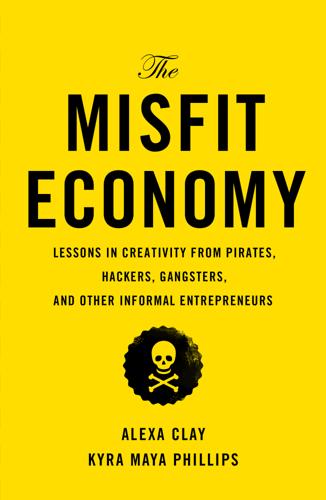
The Misfit Economy: Lessons in Creativity From Pirates, Hackers, Gangsters and Other Informal Entrepreneurs
by
Alexa Clay
and
Kyra Maya Phillips
Published 23 Jun 2015
But part of learning to innovate is recognizing that other people sometimes have better ideas, and that what we think are “our” thoughts are not our ideas at all but ours to witness. How often have you had what you were certain was an original thought or concept only to discover that others had it, too, either prior or simultaneously? The discovery of the double-helix structure of DNA is one example—James Watson and Francis Crick are known to have been working on the problem at the University of Cambridge while Rosalind Franklin and Maurice Wilkins at the University of London did the same.10 The theory of evolution, while largely accredited to Charles Darwin, was independently conceived by British biologist Alfred Russel Wallace.

Navel Gazing: True Tales of Bodies, Mostly Mine (But Also My Mom's, Which I Know Sounds Weird)
by
Michael Ian Black
Published 5 Jan 2016
I’m not sure what I expect to find inside, but I assume there will be an assortment of science gizmos including: a hypodermic needle, a high-speed centrifuge, a DNA sequencer, safety goggles, and a tabletop laser. Not so. The box contains exactly one (1) plastic spittoon and one (1) mail-in envelope. I shake out the box, but that’s it. Hm. Shouldn’t the process for untangling my personal double helix be a bit more Star Treky than filling a plastic cup with spit? It takes ten minutes of effortful expectorating to fill the cup. When I finish, I hold it up to the light, the way schoolkids do conducting experiments on pond water. Somewhere in that watery goop is my fate. I seal up the envelope and mail it off to the future.
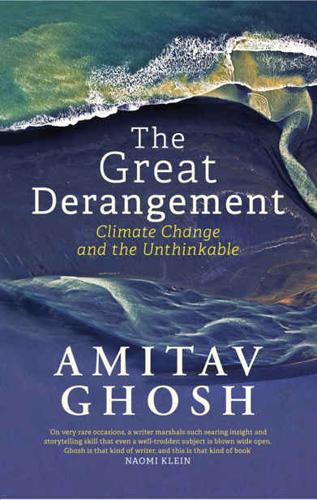
The Great Derangement: Climate Change and the Unthinkable
by
Amitav Ghosh
Published 16 Jan 2018
There could be no better vehicle for this expressivism than the Internet, which makes various means of self-expression instantly available through social media. And as tweets and posts and clips circle the globe, they generate their mirror images of counter-expression in a dynamic that quickly becomes a double helix of negation. As far back as the 1960s Guy Debord argued in his seminal book The Society of the Spectacle: ‘The whole life of those societies in which modern conditions of production prevail presents itself as an immense accumulation of spectacles. All that was once directly lived has become mere representation.’

Player One
by
Douglas Coupland
Published 30 Jun 2011
Proteinic Inevitability The tendency for life-forming molecules to aggregate and create life the first moment they possibly can. So dedicated are they to this cause, recent research suggests that in the beginning stages of life on earth, small molecules acted as “molecular midwives,” assisting in the formation of life-creating polymers and appropriate selection of base pairs for the DNA double helix. Pseudoalienation The inability of humans to create genuinely alienating situations. Anything made by humans is a de facto expression of humanity. Technology cannot be alienating because humans created it. Genuinely alien technologies can be created only by aliens. Technically, a situation one might describe as alienating is, in fact, “humanating.”
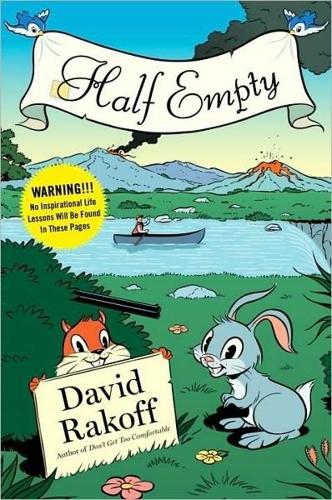
Half Empty
by
David Rakoff
Published 20 Sep 2010
When Dad presses his button, for example, the room adjusts itself to his various preprogrammed preferences: lighting, shades up or shades down, music playing, even the images that are displayed in the many digital picture frames all around. For Brian, who is an architect, the photos switch to things structural: an ink drawing of the Leaning Tower of Pisa, a view of London with Norman Foster’s Gherkin office tower visible, as well as the double-helix ramps in his dome for the Reichstag in Berlin. Atkins is an incredibly friendly guy who, while having enjoyed the experience of working on the Dream Home, hardly seems like a Kool-Aid drinker. He is pleased when I can identify a wall mural as being in the style of Maxfield Parrish, and downright thrilled when we enter the home for the first time and he has us turn left, because most people turn right, and I say “Paco Underwood,” referring to the retail anthropologist who observed this phenomenon (something I only know from reading Malcolm Gladwell).
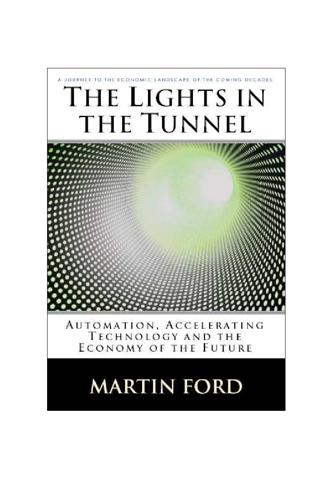
The Lights in the Tunnel
by
Martin Ford
Published 28 May 2011
This may seem like pure fantasy until we learn that nanotechnology is already here and has been operating since long before human beings walked the earth.* It is all around us and even inside us. All living things, at the most basic level, operate under the direction of molecular machines. We know that our genetic recipe is encoded in the double helix-shaped DNA molecules in the nucleus of our cells. But how does that recipe get translated into an incomprehensibly complex organism like a human being? *[ I am referring here to truly advanced nanotechnology or “molecular machines.” A number of techniques and processes which are currently in use are referred to as “nanotechnology,” but these really represent the leading edge of traditional materials science.
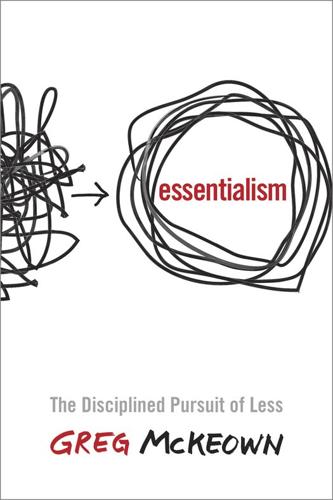
Essentialism: The Disciplined Pursuit of Less
by
Greg McKeown
Published 14 Apr 2014
Given that, it should hardly be surprising that key breakthroughs in thinking have taken place in times of play. Hallowell writes: “Columbus was at play when it dawned on him that the world was round. Newton was at play in his mind when he saw the apple tree and suddenly conceived of the force of gravity. Watson and Crick were playing with possible shapes of the DNA molecule when they stumbled upon the double helix. Shakespeare played with iambic pentameter his whole life. Mozart barely lived a waking moment when he was not at play. Einstein’s thought experiments are brilliant examples of the mind invited to play.”9 Of Work and Play Some innovative companies are finally waking up to the essential value of play.
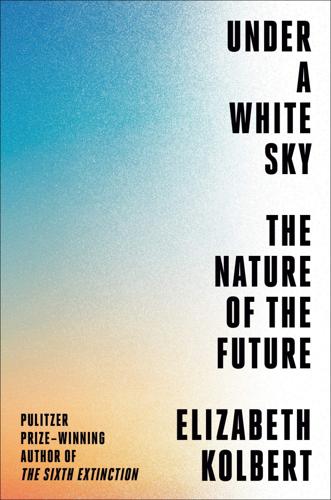
Under a White Sky: The Nature of the Future
by
Elizabeth Kolbert
Published 15 Mar 2021
The Odin’s offerings range from a “Biohack the Planet” shot glass, which costs three bucks, to a “genetic engineering home lab kit,” which runs $1,849 and includes a centrifuge, a polymerase chain-reaction machine, and an electrophoresis gel box. I opted for something in between: the “bacterial CRISPR and fluorescent yeast combo kit,” which set me back $209. It came in a cardboard box decorated with the company’s logo, a twisting tree circled by a double helix. The tree, I believe, is supposed to represent Yggdrasil, whose trunk, in Norse mythology, rises through the center of the cosmos. Inside the box, I found an assortment of lab tools—pipette tips, petri dishes, disposable gloves—as well as several vials containing E. coli and all I’d need to rearrange its genome.
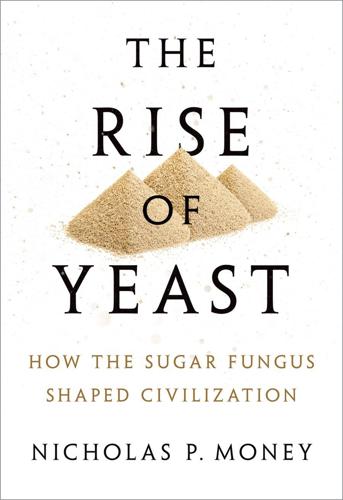
The Rise of Yeast: How the Sugar Fungus Shaped Civilisation
by
Nicholas P. Money
Published 22 Feb 2018
Investigators often refer to a 3 percent difference in the order of As, Ts, Gs, and Cs in particular DNA sequences, called internal transcribed spacers (ITSs), as an indication that they are dealing with separate species. Mycologists recognize that there are lots of limitations to this adoption of a magic percentage, and yeast researchers are particularly rigorous in using multiple criteria to distinguish between species.28 The assortment of tests includes separating, or “melting,” the two strands of the DNA double helix from different yeast cultures and measuring how well they recombine. This is called DNA hybridization: efficient binding indicates genetic kinship, and loose mergers occur in d issimilar matchups. Nutritional requirements tested in culture experiments are another source of information for identifying species.29 Molecular genetic technology has changed the science of yeast ecology as much as it has affected yeast taxonomy.
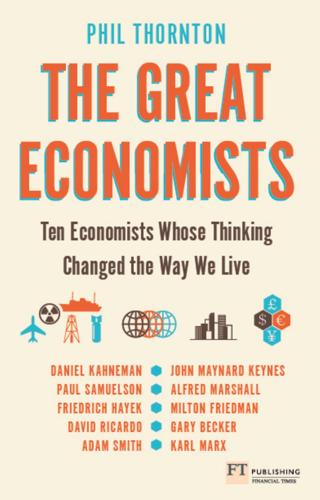
The Great Economists Ten Economists whose thinking changed the way we live-FT Publishing International (2014)
by
Phil Thornton
Published 7 May 2014
Sir Isaac Newton, British mathematician and physicist (1642–1727) All intellectual disciplines require great thinkers, writers, experimenters and cogitators who seem single-handedly to advance knowledge and understanding within their particular subject area. Of course the process of intellectual development is often a collaborative process. This can mean a number of individually brilliant people working together on a significant project, such as James Watson, Francis Crick, Maurice Wilkins and Rosalind Franklin who discovered the double helix structure of DNA. It may also signify the process whereby thinkers in one era build on their predecessors, as Newton acknowledged in the quotation at the top of this page. But ultimately it needs a big brain to move knowledge onto the next stage. As with all professions and academic disciplines, economics has produced its own fair share of key thinkers whose work has stood the test of time and whose individual contributions are both recognised by the generation of leading economists and immortalised by popular folklore as being the giants on whose shoulders other have stood – and still stand.

Turing's Cathedral
by
George Dyson
Published 6 Mar 2012
“The distinction between an evolution experiment performed by numbers in a computer or by nucleotides in a chemical laboratory is a rather subtle one,” he observed. Information theorists, including Claude Shannon with his 1940 PhD thesis on “An Algebra for Theoretical Genetics” (which was followed by a year at IAS), had already built a framework into which the double helix neatly fit.13 “Genes are probably much like viruses and phages, except that all the evidence concerning them is indirect, and that we can neither isolate them nor multiply them at will,” von Neumann had written to Norbert Wiener in November 1946, suggesting that one way to find out how nature makes its copies would simply be to look.
…
“J.B., H.H.G.!” refers to Julian Bigelow and Herman H. Goldstine—who rarely agreed on anything, so this may be a reference to early discussions of the powers of arrays of communicating cells, before disagreement about how to implement this in practice intervened. “Double line trick, etc.” is evocative of the double-helix replication of DNA, and “Degeneration (?)” probably refers to how any enduring system of self-reproduction must depend on error-correcting codes in translating from one generation to the next. “Ulam!” probably refers to Ulam’s interest in the powers of Turing-complete cellular automata, now evidenced by many of the computational processes surrounding us today.
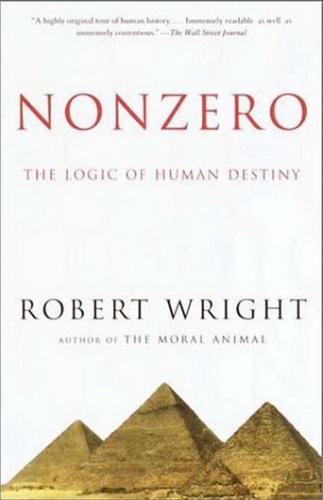
The Moral Animal: Evolutionary Psychology and Everyday Life
by
Robert Wright
Published 1 Jan 1994
Maybe the most amazing meme comes from a dolphin named Tinkerbell. She swims along on a sinuous path, releasing a string of little bubbles, and then, by brushing the bubbles with her dorsal fin, joins them together into a corkscrew pattern—or, as described by researchers, a “helix.” It isn’t a double helix, but the symbolism is fitting enough. For memes—once a species has ascended the co-evolutionary escalator, at least—are true to the spirit of genes. Cultural evolution, like biological evolution, carries life to higher and higher levels of organization. And it does it the same way biological evolution does it: zero-sum dynamics intensify non-zero-sum dynamics; competition between entities encourages integration within them.
…
Waldman, Marilyn R. (1989) “The Islamic World,” in Encyclopaedia Britannica, 15th ed., vol. 22. Waldrop, M. Mitchell (1992) Complexity. Simon and Schuster. Waters, Malcolm (1995) Globalization. Routledge. Watson, Adam (1992) The Evolution of International Society. Routledge. Watson, James (1969) The Double Helix. Mentor. Watson, Patty Jo (1995) “Explaining the Transition to Agriculture,” in Price and Gebauer, eds. (1995). Weber, Max (1961) General Economic History. Collier Books. Weinberg, Steven (1979) The First Three Minutes. Bantam. Wenke, Robert J. (1981) “Explaining the Evolution of Cultural Complexity: A Review.”

Troublemakers: Silicon Valley's Coming of Age
by
Leslie Berlin
Published 7 Nov 2017
Within the company, he knew how to wheedle, badger and cajole the scientific staff, armed with “just enough [science] to be annoying,” as one Genentech researcher put it. Genentech’s scientists hardly lacked motivation, however. Dave Goeddel, who headed the successful push to be the first to make human insulin, liked to say, “You either came in first or you might as well be last.” He designed a T-shirt adorned with the Harley-Davidson logo, a DNA double-helix, and the phrase “Clone or Die.” The road show blur left Swanson “wrung out like a wet dishrag,” in his own description. At day’s end, some of the others repaired to the hotel bar or lobby to sink into the plush seats and enjoy a cigar. But not Swanson. For him, the trip was about much more than bankers and investors and balance sheets.
…
In the Office of Technology Licensing’s first eighteen months, when only five inventions had been licensed, Reimers reported that “three petitions for title in inventions to sponsors (HEW twice and NSF) were first denied but were eventually granted after much effort including meetings in Washington, D.C. with agency officials”; Licensing Program Progress Report, July 20, 1970, SUOTL. 17. Cohen in “Campus to Commerce: Trailblazers of Technology Transfer,” https://www.youtube.com/watch?v=HA6SYaQ6ZZw. 18. Reimers, ROHO interview. 19. Double Helix Medals Dinner, https://www.youtube.com/watch?v=wTuy4_e9O08. 20. Genentech GenenLab notebook at http://blog.zymergi.com/2013/01/origins-biotech-genentech.html. 21. Boyer’s lab learned that EcoR1 could be used in recombinant DNA after reading Janet E. Mertz and Ronald W. Davis, “Cleavage of DNA by RI Restriction Endonuclease Generates Cohesive Ends,” Proceedings of the National Academy of Sciences, November 1972: 3370–4.
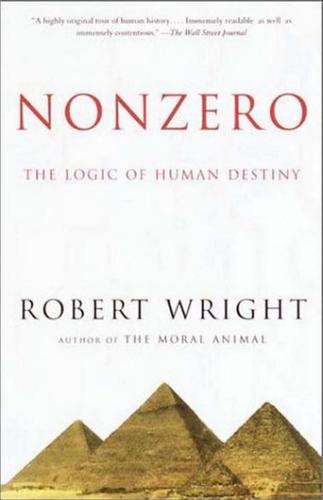
Nonzero: The Logic of Human Destiny
by
Robert Wright
Published 28 Dec 2010
Maybe the most amazing meme comes from a dolphin named Tinkerbell. She swims along on a sinuous path, releasing a string of little bubbles, and then, by brushing the bubbles with her dorsal fin, joins them together into a corkscrew pattern—or, as described by researchers, a “helix.” It isn’t a double helix, but the symbolism is fitting enough. For memes—once a species has ascended the co-evolutionary escalator, at least—are true to the spirit of genes. Cultural evolution, like biological evolution, carries life to higher and higher levels of organization. And it does it the same way biological evolution does it: zero-sum dynamics intensify non-zero-sum dynamics; competition between entities encourages integration within them.
…
Waldman, Marilyn R. (1989) “The Islamic World,” in Encyclopaedia Britannica, 15th ed., vol. 22. Waldrop, M. Mitchell (1992) Complexity. Simon and Schuster. Waters, Malcolm (1995) Globalization. Routledge. Watson, Adam (1992) The Evolution of International Society. Routledge. Watson, James (1969) The Double Helix. Mentor. Watson, Patty Jo (1995) “Explaining the Transition to Agriculture,” in Price and Gebauer, eds. (1995). Weber, Max (1961) General Economic History. Collier Books. Weinberg, Steven (1979) The First Three Minutes. Bantam. Wenke, Robert J. (1981) “Explaining the Evolution of Cultural Complexity: A Review.”
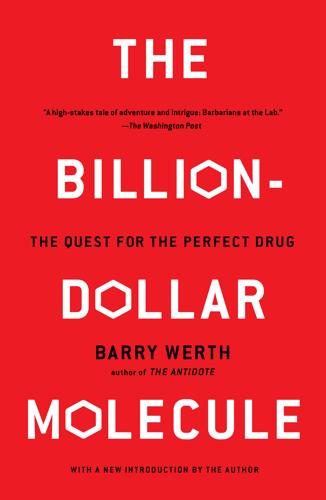
The Billion-Dollar Molecule
by
Barry Werth
Of all the myriad implications of Moore’s acceptance, the most compelling was Vertex’s sudden and immediate validation. Most small companies and many large ones go for years without publishing in Science or in Nature, which, in particular, has been both arbiter and house organ to the great scientific revolutions of the past one hundred years. When Watson and Crick discovered the double helix of DNA, they announced it in a 700-word letter to Nature. It was thus exceptional that Vertex, in its first publication, should stake its flag at such a tier, especially after getting the normally impervious Nature editors to bend one of their cardinal rules. It was fully the kind of aggressive, gate-crashing role that Boger had forecast for Vertex from the start, and now, having been achieved, it was like a rush of hormone to the system.
…
Inside the Drug Industry. Barcelona: Prous Science Publishers. Stein, W. H., and S. Moore. 1961. The Chemical Structure of Proteins. Scientific American 205, February, 81-92. Thomas, L. 1974. The Lives of a Cell: Notes of a Biology Watcher. New York: The Viking Press. Watson, J. D. 1968. The Double Helix. New York: W. W. Norton and Co. Weinberg, R. A. 1985. The Molecules of Life. Scientific American, October. • • • A great advantage in writing about science is that all work is painstakingly catalogued. When confusion reigned, I relied for clarification on the scientific literature. The following publications, either cited or referred to in the non-Starzl portions of the text, were of particular assistance: Bierer, B.

Puzzling People: The Labyrinth of the Psychopath
by
Thomas Sheridan
Published 1 Mar 2011
They are the ultimate expression of the overall evolutionary process. They are the ‘Missing Link’. Without psychopathic dictators we would not have freedom fighters. Without psychopathic relationships we would not cherish the ones who really care for us. Compassion, empathy and kindness is as much a part of the evolutionary process as the DNA double helix. Mythology is as important as the microscope. Everything counts in order to construct your road map to a safe and secure future where no psychological predators will lie in wait ready to pounce around the next corner. Taking care of oneself first and foremost is not being selfish, unpatriotic or uncaring.
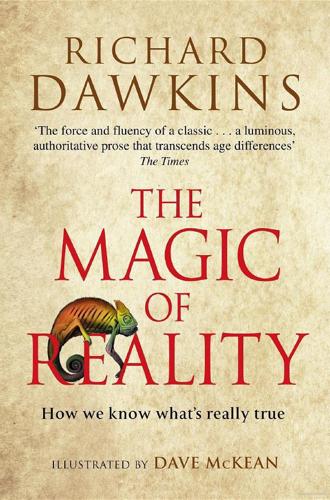
The Magic of Reality: How We Know What's Really True
by
Richard Dawkins
Published 3 Oct 2011
Once again, they made their discoveries by imagining models and testing them. In their case, they literally built metal and cardboard models of what DNA might look like, and they calculated what certain measurements ought to be if those models were correct. The predictions of one model, the so-called double helix model, exactly fitted the measurements made by Rosalind Franklin and Maurice Wilkins, using special instruments involving X-rays beamed into crystals of purified DNA. Watson and Crick also immediately realized that their model of the structure of DNA would produce exactly the kind of results seen by Gregor Mendel in his monastery garden.

Inequality and the 1%
by
Danny Dorling
Published 6 Oct 2014
These are what psychologists call ‘individualistic traits’, rather than the norm of being more pro-social, with positive, helpful and friendly attitudes to other people, not grandiose or conceited. Steve Jones, emeritus professor of genetics at University College London, puts the case against the favoured few succinctly. In chastising Dominic Cummings, he noted: ‘For geneticists, the more we learn about DNA, the more important the environment appears. The lesson from the double helix is that we need more and better teachers, rather than wringing our hands about the unkindness of fate. A few lessons about elementary biology might be a good place to start.’58 We now worry about the extinction of rare species, and the loss of their genes, and see apparent genetic variation within our species as more and more important (see the illustration below).
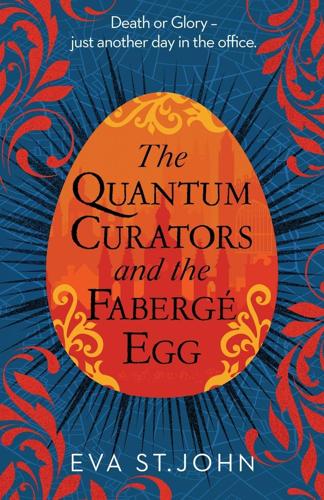
The Quantum Curators and the Fabergé Egg: A Fast Paced Portal Adventure
by
Eva St. John
Published 23 May 2020
‘It became a habit during school after that, to shout that we were doing things in honour of those women.’ Charlie smiled nostalgically, then said, ‘Do you know, I had totally forgotten that. One time he led a rugby charge, shouting “For Eleanor and Aquitaine”.’ ‘So, who is Franklin?’ ‘Rosalind Franklin. She was instrumental in discovering the double helix in DNA, but it was two male colleagues, Crick and Watson, that got the Nobel Prize.’ ‘And what does the clue mean? Why is she hungry?’ ‘It’s the chronogram. Its nickname is Rosalind!’ We were now stood by the railings outside of Kings College, and Julius was pointing across the road to some weird-arsed clock that I had seen a few days ago.
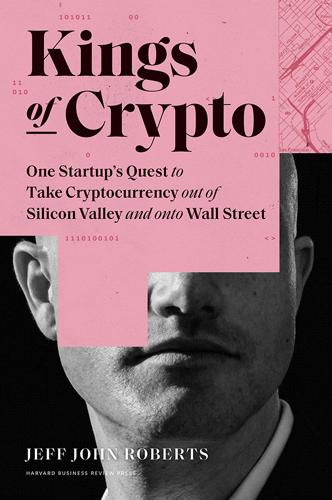
Kings of Crypto: One Startup's Quest to Take Cryptocurrency Out of Silicon Valley and Onto Wall Street
by
Jeff John Roberts
Published 15 Dec 2020
In works like Collaborative Circles and Powers of Two, researchers have shown how genius is rarely solitary: John Lennon and Paul McCartney relied on each other to compose timeless Beatles hits; Pablo Picasso and Georges Braque used their brushes side by side to create Cubism; biologists James Watson and Francis Crick worked intensely together to discover the double helix and DNA. Tech is no different. Apple is famously associated with Steve Jobs, but, in its early days, the computer company wouldn’t have gotten off the ground without the other Steve—Jobs’s partner and programming virtuoso Steve Wozniak. The same is true with Google. The Stanford graduate supervisor of Larry Page and Sergey Brin has remarked on the near total mind-meld of the search engine founders.
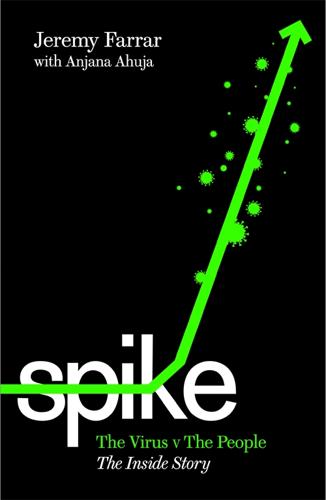
Spike: The Virus vs The People - The Inside Story
by
Jeremy Farrar
and
Anjana Ahuja
Published 15 Jan 2021
Controlling an epidemic usually means bringing R to below 1, which represents a shrinking epidemic, whereas an R above 1 means the epidemic is spreading. RECOVERY Trial Randomised Evaluation of COVID-19 Therapy Trial RNA Ribonucleic acid, a molecule similar to DNA but simpler, having only a single strand rather than the double strand structure of DNA (famously, a double helix). Rather than DNA, some viruses are made from RNA, such as SARS-CoV-2 and Ebola. SAGE Scientific Advisory Group for Emergencies SARS SARS stands for ‘severe acute respiratory syndrome’, a serious disease caused by the coronavirus SARS-CoV-1. SARS-CoV-1 The coronavirus that causes SARS. It is closely related to SARS-CoV-2.
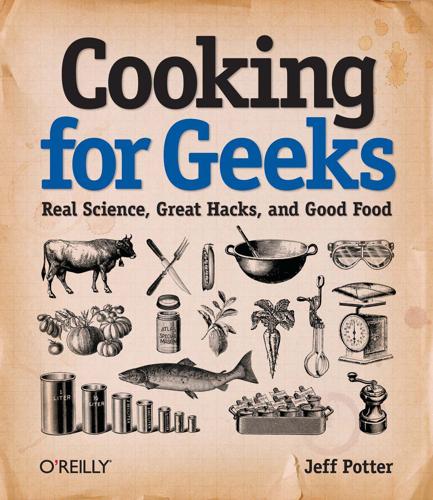
Cooking for Geeks
by
Jeff Potter
Published 2 Aug 2010
Agar has a slight taste, though, so it works best with strongly flavored dishes. Origin and chemistry. Derived from seaweed. Like carrageenan, agar is a seaweed-derived polysaccharide used to thicken foods and create gels. When heated above 185°F / 85°C, the galactose in agar melts, and upon cooling below 90–104°F / 32–40°C it forms a double-helix structure. (The exact gelling temperature depends on the concentration of agar.) During gelling, the endpoints of the double helices are able to bond to each other. Agar has a large hysteresis; that is, the temperature at which it converts back to a gel is much lower than the temperature at which that gel melts back to a liquid, which means that you can warm the set gel up to a moderately warm temperature and have it remain solid.
…
Agar has a large hysteresis; that is, the temperature at which it converts back to a gel is much lower than the temperature at which that gel melts back to a liquid, which means that you can warm the set gel up to a moderately warm temperature and have it remain solid. For more information on the chemistry of agar, see http://www.cybercolloids.net/library/agar/properties.php. Agar at the molecular level. When heated, the molecule relaxes into a relatively straight molecule (upper left) that upon cooling forms a double helix with another agar molecule (center). The ends of these double helices can bond with other agar double helices (upper right), forming a 3D mesh (left). Technical notes Gelling temperature 90–104°F / 32–40°C Melting temperature 185°F / 85°C Hysteresis 140°F / 60°C Gel Type Brittle Syneresis Yes Concentrations 0.5%–2% Synergisms Works well with sucrose Notes Tannic acid inhibits gel formation (tannic acid is what causes overbrewed tea to taste bad; berries also contain tannins) Thermoreversible Yes Chocolate Panna Cotta Agar can be used to provide firmness, as this example shows.

Adaptive Markets: Financial Evolution at the Speed of Thought
by
Andrew W. Lo
Published 3 Apr 2017
We’ve seen how individuals within a species with more useful genetic traits for their environment are reproductively more successful than individuals with slightly less useful traits, but where do these different traits in a species come from? The answer to this riddle is mutation. Watson and Crick’s famous discovery of the double-helix structure of DNA showed not only how DNA could carry information, but also how it could act as its own template when copying itself. The process of genetic replication is very accurate. However, because of the physical structure of DNA and the laws of thermodynamics, it’s not quite perfect. As a result, entirely new variations in genetic traits occur naturally in an organism’s genome from time to time.
…
The private sector also pours tens of billions of dollars each year into biomedicine, but the nature of that funding is quite different. Investors demand a rate of return on their capital and won’t fund basic science, since there’s no way to extract a financial return on new knowledge unless it’s patentable or otherwise commercial. Much of basic science, like Watson and Crick’s discovery of the double helix structure of DNA, or the sequencing of the human genome, isn’t patentable, but is enormously valuable in contributing to a multitude of applications that are patentable. As a result, private sector investment in biomedicine waxes and wanes, depending on the perceived risks and rewards of the companies seeking funding.
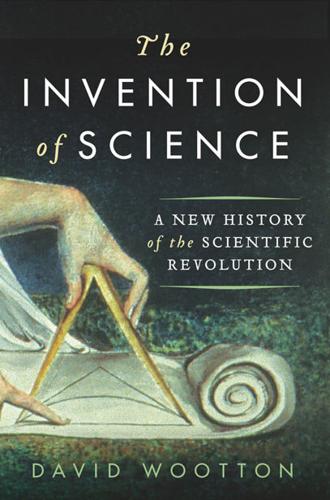
The Invention of Science: A New History of the Scientific Revolution
by
David Wootton
Published 7 Dec 2015
This was the assumption underlying a message that was broadcast into space by the Arecibo radio telescope in 1974. The message consisted of the numbers one through to ten, the atomic numbers of hydrogen, carbon, nitrogen, oxygen and phosphorus, the formulas for the sugars and bases in the nucleotides of DNA, the number of nucleotides in DNA, the double helix structure of DNA, a figure of a human being and its height, the population of Earth, a diagram of our solar system, and an image of the Arecibo telescope with its diameter. The assumption was that any extraterrestrial intelligence capable of receiving the message would recognize the maths and the science and quickly make sense of the Earth-specific information.
…
‘The Meaning of “Discovery” in the Fifteenth and Sixteenth Centuries’. American Historical Review 68 (1962): 1–21. Waters, David W. ‘Nautical Astronomy and the Problem of Longitude’. In The Uses of Science in the Age of Newton. Ed. JG Burke. Berkeley: University of California Press, 1983: 143–69. Watson, James D. The Double Helix: A Personal Account of the Discovery of the Structure of DNA. London: Weidenfeld & Nicolson, 1968. Weber, Eugen. Peasants into Frenchmen: The Modernization of Rural France 1870–1914. Stanford: Stanford University Press, 1976. Weber, Max. The Vocation Lectures. Ed. TB Strong and DS Owen. Trans.
…
O’Gorman argues that Waldseemüller’s invenio should be translated as ‘conceive’, not ‘discover’, which is to ignore the fact that Waldseemüller is working from a Latin text of Vespucci in which invenio is already a translation of discooperio (O’Gorman, The Invention of America (1961), 123 and n. 117). 8. See, for example, Wolper, ‘The Rhetoric of Gunpowder’ (1970). 9. Watson, The Double Helix (1968), 197. 10. On the discovery of discovery: Fleming (ed.), The Invention of Discovery (2011); and Margolis, It Started with Copernicus (2002), Ch. 3 – neither explores the new terminology. On curiosity: Huff, Intellectual Curiosity and the Scientific Revolution (2011); Harrison, ‘Curiosity, Forbidden Knowledge’ (2001); Ball, Curiosity (2012); Daston, ‘Curiosity in Early Modern Science’ (1995); and Daston & Park, Wonders and the Order of Nature (1998), 303–28.

Whiplash: How to Survive Our Faster Future
by
Joi Ito
and
Jeff Howe
Published 6 Dec 2016
The European researchers, who call themselves Team Bettencourt after the Paris institution where the project is based, have reprogrammed the phage to do something beneficial. The phage inserts a protein that has been instructed to home in on the genetic mutation that makes the M. tuberculosis strain immune to antibiotics. The protein snips the strands of double helix that bookend the offending sequence, as easily as one of us might delete this sentence after writing it. With this small tweak to the DNA of M. tuberculosis—its source code—the bacterium is again susceptible to a standard drug regime. The Bettencourt group has also demonstrated how they could make a special tissue that can diagnose the disease on the spot, a great advantage in those regions worst affected by tuberculosis outbreaks.

When the Air Hits Your Brain: Tales From Neurosurgery
by
Frank Vertosick
Published 1 Jan 1996
—EMILY DICKINSON Introduction Neurosurgery is an arrogant occupation. Astronomers study the stars but never touch them. Particle physicists see God in the vapor trails of their great atom-smashers, but cannot see the particles themselves, cannot reach into protons and feel the quarks with their fingers. Molecular biologists sing the praises of the double helix, but the gene is forever an abstraction, invisible to the naked eye. These scientists must be content with the shadow nature casts upon their instruments and photographic emulsions. But not the neurosurgeon, for whom the greatest mystery of creation resides in a few pounds of greasy flesh and blood.
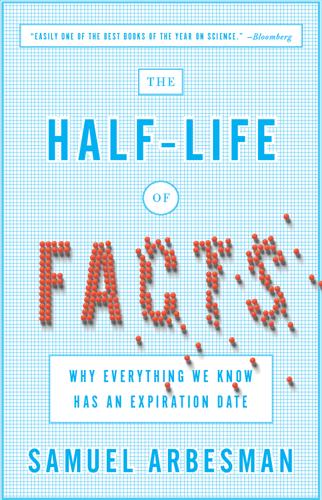
The Half-Life of Facts: Why Everything We Know Has an Expiration Date
by
Samuel Arbesman
Published 31 Aug 2012
When it comes to copying DNA—those strands of information that code for proteins and so much more—there are a few advantages over simply hand copying a document. DNA’s language is made up of four letters, or bases, which come in complementary pairs: A always goes with T, and G always goes with C. When DNA is copied, its double helix is unzipped, and the letters of each helix—one side of the zipper—can be easily paired with their complementary letters. This results in two new double helices—closed zippers—both of which have properly paired letters, because the complementary letters act as a simple way to prevent errors. Nonetheless, when DNA is replicated, it’s sometimes done imperfectly.

Explore Everything
by
Bradley Garrett
Published 7 Oct 2013
.* It’s clear from the reactions of authorities we encountered through our explorations that the ‘problem’ with what explorers do is not that it is illegal but that, in capitalist terms, it’s pointless and therefore highly suspect, or that it embarrasses the forces of security, order and control. However, while neoliberal agents may be confused or frustrated by urban exploration, it is much more a celebration than a condemnation of capital and spectacle. It’s an anti-spectacle that runs alongside the main act, weaving a double helix. Perhaps in the United States people are more understanding of someone having the gall to play by their own rules. Capital investment is the catalyst both for sensibly sterile spaces of economic production and for spatial fluidity (some would say forced mobility), as well as leftover, forgotten and (often unintentionally) disused spaces.

To Be a Machine: Adventures Among Cyborgs, Utopians, Hackers, and the Futurists Solving the Modest Problem of Death
by
Mark O'Connell
Published 28 Feb 2017
And Tim: given that his whole deal was radical self-transformation, Tim looked very much like a guy who’d worked out an aesthetic for himself at sixteen and basically butched it out since the late 1990s. He wore a black flat cap, a Grindhouse T-shirt, chunky skater shoes, and green cargo shorts that exposed a tattoo on his right calf depicting a cartoon punk (Mohawk, Dead Kennedys shirt) holding a gun to his own head. Another large tattoo, on the pale underside of his left arm, depicted a DNA double helix surrounded by a circular cog. This pictorial representation of Tim’s mechanistic view of Homo sapiens—a grinding of the human code—was, literally, underscored by an impressively lurid scar, gnarled and thick-grained as bark. This was the result of a device called Circadia he’d had implanted for three months of last year; it took various biometric measurements from his body and uploaded them via Bluetooth to his phone, and thereby to the Internet, at five-second intervals—adjusting for good measure the thermostat of his house’s central heating in accordance with his body temperature.

We're Going to Need More Wine: Stories That Are Funny, Complicated, and True
by
Gabrielle Union
Published 16 Oct 2017
When you as a player wear someone else’s jersey number it means one of two things: You are paying tribute to a significant other who plays, or you are honoring a player who died. Now, my number was 21, so I made up this scenario in my head about who #22 could be. My teenage levels of narcissism and drama wrapped in a crazy double helix of denial. I decided Jason had a friend who died. Jason was so sensitive, paying homage to this person via a sweatband. RIP #22, I hardly knew you. During the game, a few of his friends came over to me, led by a female friend of his with a severe case of a Valley Girl accent. “Soooo, are you and Jason going to prom?”

Asymmetry
by
Lisa Halliday
Published 6 Feb 2018
Where he was from, one might even say: Better an infertile man than a fertile woman. In fact, said the father, I always thought she was a boy. It was a mistake from the beginning. She looks like a boy. She acts like a boy. Her life would be so much easier if she were a boy. He’s a boy. There’s no cure for CAH. It’s a genetic condition whereby the double helix inherits two copies of a faulty gene, one copy from each parent. Usually, the gene is recessive to a dominant counterpart. But if both parents are carriers, there’s a 25 percent chance their child will inherit both faulty genes and express the condition. This leaves a 50 percent chance the child will inherit only one faulty gene (and become another carrier), and a 25 percent chance the child will inherit only normal genes, and be unaffected.
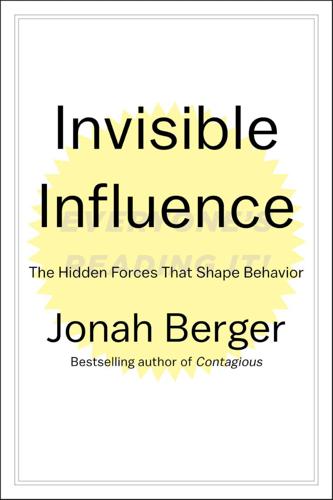
Invisible Influence: The Hidden Forces that Shape Behavior
by
Jonah Berger
Published 13 Jun 2016
And all driven by the power of nonconscious influence. INVISIBLE INFLUENCE This book is about the simple, subtle, and often surprising ways that others affect our behavior. When people think of science, they tend to think about physics or chemistry. Test tubes and microscopes and molecules twisting together to form a double helix. Laboratories with people in white coats and blackboards filled with chicken-scratch equations that look like a Martian took up calligraphy. Ideas you have to be . . . well, a rocket scientist to understand. But science doesn’t just happen in fancy labs. It’s happening all around us, each and every day.
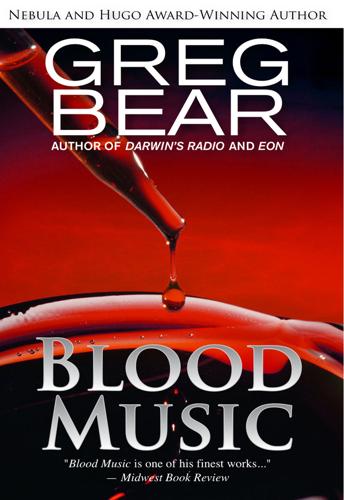
Blood Music
by
Greg Bear
Published 19 May 2014
The surf could be heard from four blocks away, a dull rumble topped with hiss. Vergil sat before his computer, heel of one hand resting against the edge of the keyboard, finger poised. On the VDT was a twisting, evolving molecule of DNA surrounded by a haze of protein. Flickering separations of the double helix’s phosphate-sugar backbones indicated high-speed intrusions by enzymes, spreading the molecule for transcription. Labeled columns of numbers marched along the bottom of the screen. He watched them without paying much attention. He would have to talk with somebody soon—somebody besides his mother, and certainly besides Candice.
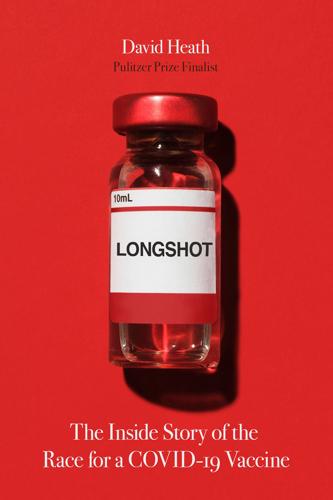
Longshot
by
David Heath
Published 18 Jan 2022
A vaccine for HPV relied on a protein found on the virus’s outer shell.72 But even protein-based vaccines didn’t eliminate the possibility of vaccines making a disease worse. That was a dilemma Barney Graham would toil away at for most of his career. CHAPTER 3 The Underrated Scientist In the world of science, DNA is a superstar. From the discovery of the double helix to cracking the code to CRISPR, deoxyribonucleic acid has been at the center of some of the greatest biological discoveries. Scientists cannot go wrong devoting their careers to understanding the blueprint of life. While we all know that DNA determines the color of our eyes, our hair, and our skin, medical researchers still believe that—despite setbacks—manipulating genes will one day enable us to cure many diseases.
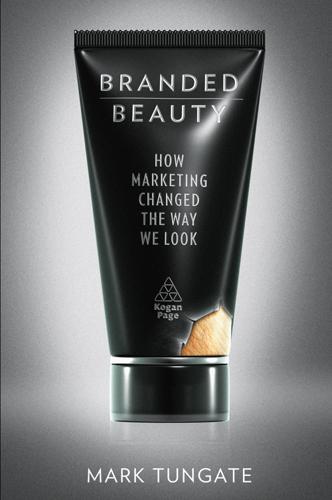
Branded Beauty
by
Mark Tungate
Published 11 Feb 2012
WHERE SCIENCE MEETS STATUS The desire to blind consumers with science has led to the equivalent of an arms race in the industry, as each brand attempts to outdo the other with its latest find. They patent their findings and boast about these patents in their advertising claims: for example, Estée Lauder signals ‘20 patents worldwide’ and ‘25 years of DNA research’, emphasized by a golden double helix, for its Advanced Night Repair cream. Since 1991, Chanel has run the Centre de recherches et d’investigations épidermiques et sensorielles (epidermal and sensory research and investigation centre) (CERIES), which grants a €40,000 annual award for ground-breaking research into skincare. One of Chanel’s weapons in the skincare wars is Xavier Ormancey, the brand’s director of active ingredient research.
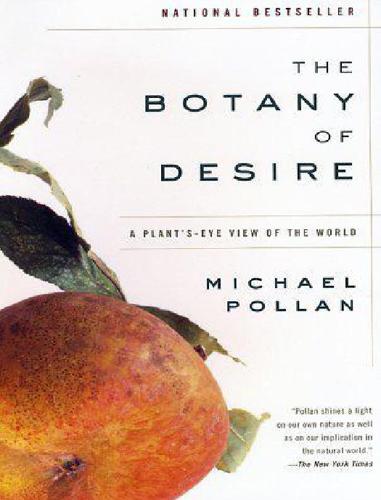
The botany of desire: a plant's-eye view of the world
by
Michael Pollan
Published 27 May 2002
The gene gun is a strangely high-low piece of technology, but the main thing you need to know about it is that the gun here is not a metaphor: a .22 shell is used to fire stainless-steel projectiles dipped in a DNA solution at a stem or leaf of the target plant. If all goes well, some of the DNA will pierce the wall of some of the cells’ nuclei and elbow its way into the double helix: a bully breaking into a line dance. If the new DNA happens to land in the right place—and no one yet knows what, or where, that place is—the plant grown from that cell will express the new gene. That’s it? That’s it. Apart from its slightly more debonair means of entry, the agrobacterium works in much the same way.
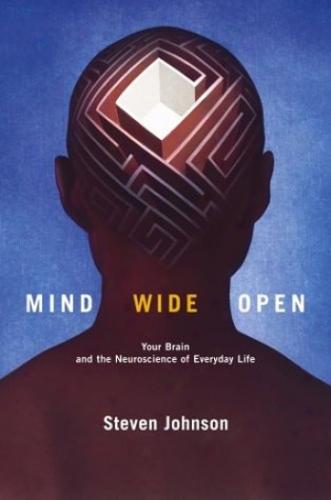
Mind Wide Open: Your Brain and the Neuroscience of Everyday Life
by
Steven Johnson
Published 2 Jan 1999
Clearly the cultural environment of the civil service was affecting the stress levels of its members, and changing their brain chemistry accordingly. More status, less cortisol; less status, more cortisol. Such hormone levels would appear on one of our imagined neurotransmitter profiles, but they wouldn’t necessarily suggest some fate sealed in the double helix before birth. In fact, they might well point to an imbalance outside the individual body, in society itself. The drugs flowing through our bodies and our brains can tell us a great deal about ourselves, but not just the biological selves we were born with. They are also symptoms of a wider world outside the brain, a world that the brain’s inner chemistry reflects.
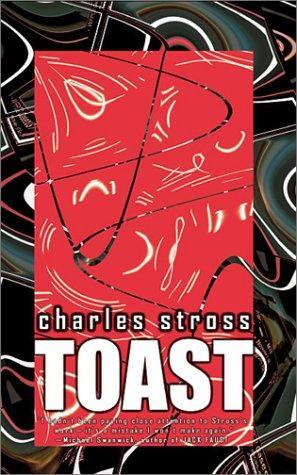
Toast
by
Stross, Charles
Published 1 Jan 2002
Sadly, Kotcha the Albanian proved to be unreliable. He returned to his homeland and was immediately spirited away to the Soviet Union, taking his work on ultracentrifugation with him. We cannot estimate the extent of his contribution to the Bolshevik bomb program at this time. Meanwhile, work continues apace. The discovery of the Double Helix has given a tremendous boost to the Botanical Committee, who are now making extensive use of the Boddington’s Mark One Computer that now occupies the cellar of our former premises in Greek Street. When not employed preparing the accounts for the Boddington’s Beverage Corporation, the computer is used to assist the X-ray crystallographic analysis of the enzymes responsible for the production of the alkaloid constituents of Coffee.
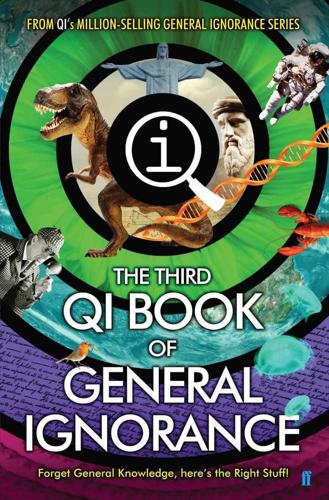
QI: The Third Book of General Ignorance (Qi: Book of General Ignorance)
by
John Lloyd
and
John Mitchinson
Published 28 Sep 2015
He couldn’t believe a single molecule could account for all the variation seen within species. It was more than 60 years before anyone proved DNA communicated genetic information, and 25 more before Crick and Watson won the 1962 Nobel Prize in Physiology or Medicine for identifying the shape of its molecule. They discovered DNA is double-helix-shaped, like two interlocking spiral staircases. Rosalind Franklin, who produced the first images of DNA, was supposedly snubbed by the Nobel Prize Committee when they awarded the prize to Crick and Watson in 1962. In fact, Franklin died of cancer in 1958 and was ineligible for the prize, which is never given posthumously.
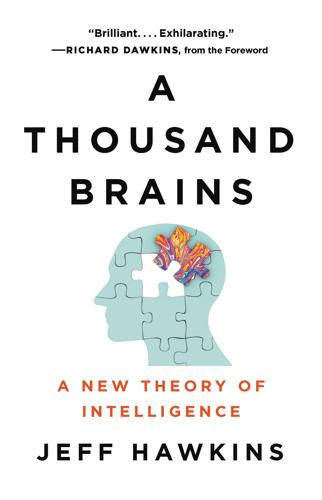
A Thousand Brains: A New Theory of Intelligence
by
Jeff Hawkins
Published 15 Nov 2021
A reference frame for a coffee cup corresponds to a physical object that we can touch and see. However, reference frames can also be used to organize knowledge of things we can’t directly sense. Think of all the things you know that you haven’t directly experienced. For example, if you have studied genetics, then you know about DNA molecules. You can visualize their double-helix shape, you know how they encode sequences of amino acids using the ATCG code of nucleotides, and you know how DNA molecules replicate by unzipping. Of course, nobody has ever directly seen or touched a DNA molecule. We can’t because they are too small. To organize our knowledge of DNA molecules, we make pictures as if we could see them and models as if we could touch them.

Fallen Idols: Twelve Statues That Made History
by
Alex von Tunzelmann
Published 7 Jul 2021
There are some delightful modern statues – and sculptors who approach the form with wit and ingenuity. The Monument to the Laboratory Mouse in Novosibirsk, Russia, honours those mice that have (involuntarily) contributed to scientific research, with a bronze figure of one in spectacles knitting a DNA double helix. The statue of Charles La Trobe at La Trobe University, Melbourne, is upside down, balanced on its head with its plinth in the air – because the sculptor thought universities should turn ideas on their heads. One of the few political statues that Londoners treat with genuine affection is the ‘Allies’ sculpture of Winston Churchill and Franklin Delano Roosevelt on a public bench in New Bond Street.
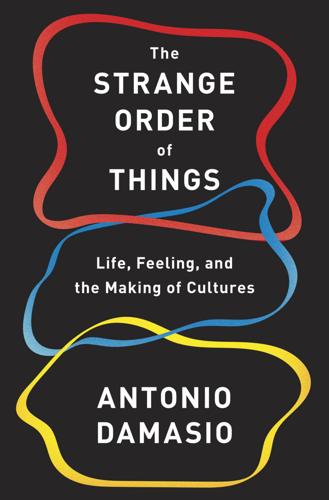
The Strange Order of Things: The Biological Roots of Culture
by
Antonio Damasio
Published 6 Feb 2018
At first blush, in the wake of the discovery of the structure of DNA, the elucidation of the role of RNA, and the breaking of the genetic code, it must have appeared that life had to come from the genetic material, but that idea was up against a major difficulty: the likelihood of such complex molecules assembling themselves spontaneously as the first step in the construction of life was low to nil.6 The puzzlement and equivocation were perfectly understandable. The 1953 discovery (by Francis Crick and James Watson and Rosalind Franklin) of the double-helix structure of DNA was and remains one of the peak moments of the history of science and deservedly influenced the formulations of life that followed. DNA was inevitably seen as the molecule of life and, by extension, the molecule of its beginning. But how could a molecule so complex put itself together spontaneously in the primordial soup?

The New Rules of War: Victory in the Age of Durable Disorder
by
Sean McFate
Published 22 Jan 2019
Federal Election Commission reversed decades of understanding by deeming corporate political contributions the same thing as individuals’ free speech. However, no reasonable person would agree that a corporation, with its vast resources and single-minded agenda, is remotely the same thing as an individual person. Corporations are not people. But the double helix of corporations and politicos forms the DNA of America’s power structure. Deep states exist, and their naked power will become more apparent as states fade. Their unmasking will prove dangerous, as the protestors of the Arab Spring discovered. When a deep state is threatened, it does not go gentle into that good night.
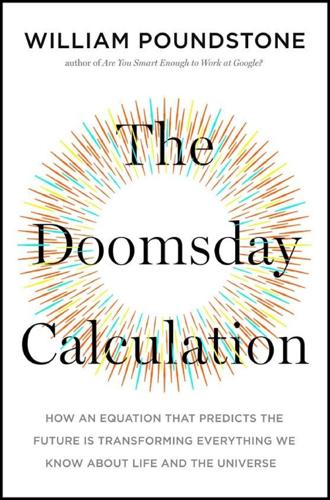
The Doomsday Calculation: How an Equation That Predicts the Future Is Transforming Everything We Know About Life and the Universe
by
William Poundstone
Published 3 Jun 2019
Nick Bostrom painted this word picture: life on Earth is a single data point, and the Fermi paradox is the question mark over it. The Princess in the Tower In 1971 Byurakan, Armenia, hosted a conference on extraterrestrial life that is remembered for a confrontation between celebrity astronomer Carl Sagan and biochemist Francis Crick, codiscoverer of the double helix. Their dispute was over a simple question: How likely had it been for intelligent life to arise on Earth? The absence of evidence for ETs had only made Sagan’s heart grow fonder. He was building a career as a cheerleader for the existence of extraterrestrial life. Sagan’s position was that the Earth is a typical planet, as far as we can tell.
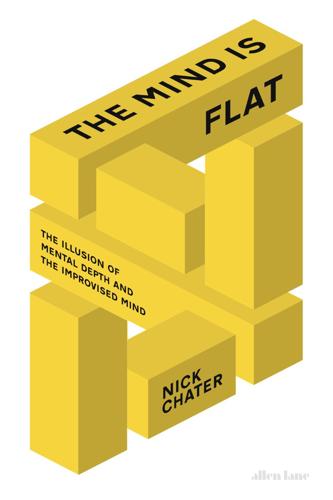
The Mind Is Flat: The Illusion of Mental Depth and the Improvised Mind
by
Nick Chater
Published 28 Mar 2018
From a broader perspective, perhaps this should not surprise us. The entire history of science has been a tale of one astonishing shock after another: that the Earth goes around the sun; that the chemical elements of which it was composed were expelled from dying stars; that matter can turn into energy; that life is encoded in a double helix of chemicals; and that our distant ancestors were single-celled organisms. The very idea that thought is the product of a whirr of electrical and chemical activity across a hundred billion nerve cells is remarkable enough. Indeed, in this book I will argue that almost everything we think we know about the operation of our own minds – our intuitive introspections, justifications and explanations – needs to be abandoned wholesale.

Conflicted: How Productive Disagreements Lead to Better Outcomes
by
Ian Leslie
Published 23 Feb 2021
If he would have some idea I didn’t like, and I would say so, this would shake his thinking.’ Crick believed it was important to be ‘perfectly candid, one might almost say rude, to the person you’re working with’. The enemy of true collaboration, he said, is ‘politeness’. In 1953, Crick and Watson jointly published their Nobel Prizewinning paper proposing a double-helix structure of DNA, a discovery now regarded as one of the greatest of the twentieth century. ‘We had evolved unstated but fruitful methods of collaboration,’ wrote Crick later, ‘something quite missing in the London group. If either of us suggested a new idea, the other, while taking it seriously, would attempt to demolish it in a candid but non-hostile manner.
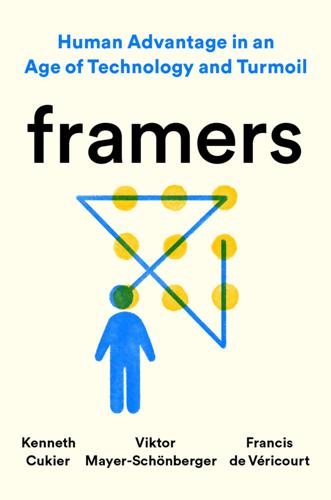
Framers: Human Advantage in an Age of Technology and Turmoil
by
Kenneth Cukier
,
Viktor Mayer-Schönberger
and
Francis de Véricourt
Published 10 May 2021
On being open-minded and curious: A good resource is David Epstein, Range: Why Generalists Triumph in a Specialized World (New York: Riverhead, 2019). On Rousseau’s social contract: Jean-Jacques Rousseau, The Social Contract, trans. Maurice Cranston (Harmondsworth, UK: Penguin, 1968). On the discovery of DNA’s structure: James Watson, The Double Helix: A Personal Account of the Discovery of the Structure of DNA (New York: Athenaeum, 1968). See also: “The Answer,” Linus Pauling and the Race for DNA, Oregon State University Libraries, accessed November 10, 2015, http://scarc.library.oregonstate.edu/coll/pauling/dna/narrative/page30.html. Lise Meitner and Otto Hahn: Ruth Lewin Sime, Lise Meitner: A Life in Physics (Berkeley: University of California Press, 1996).
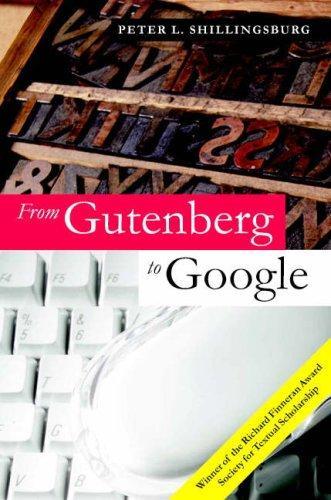
From Gutenberg to Google: electronic representations of literary texts
by
Peter L. Shillingsburg
Published 15 Jan 2006
I choose the problematic word ‘‘aesthetics’’ in part to honor the bold use of it made by my colleague, a modernist and Yeats editor, David Holdeman in a paper titled ‘‘The Editor as Artist.’’ His choice struck a chord with me that is worth plucking again.8 Aesthetics and beauty have not been fashionable words for use with science or scholarship, though I still remember the shock of recognition that I felt when reading in James Watson’s Double Helix that he knew he had the right model for DNA because it was beautiful. Aesthetics has many definitions, but among them are the notions that what may seem to be multifarious may also be seen as unity, that the chaotic can have harmony, that the complex may have coherence, that the intricate can have pattern, that the disparate may have commonality.
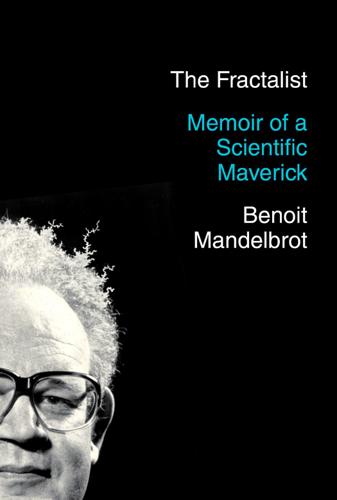
The Fractalist
by
Benoit Mandelbrot
Published 30 Oct 2012
Then and there, despite the reservations and declared hostility of several well-established guilds, Delbrück was orchestrating the birth of a new way of being a biologist. At Caltech at that time, the word “biophysics” was forbidden. But soon their work would become “molecular biology.” And in 1952 this field would come to be known universally, in response to the discovery of that icon of natural geometry—the double helix of DNA. Eventually, molecular biology merged with biochemistry, and genomics took it to an industrial stage. Today’s practitioners complain of it being viewed as a mature field. But in 1949, nothing was further removed from the slow-moving maturity of fluid mechanics. A high Prussian aristocrat—a Junker—Delbrück had to leave Germany because he would not swear allegiance to Hitler.
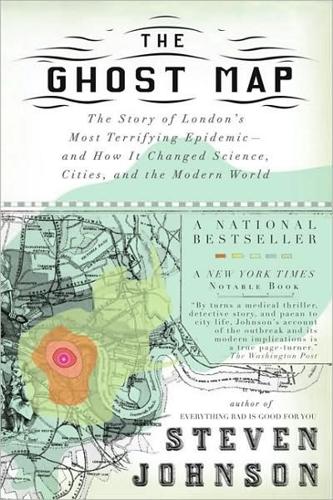
The Ghost Map: A Street, an Epidemic and the Hidden Power of Urban Networks.
by
Steven Johnson
Published 18 Oct 2006
But at a certain point—perhaps ten years from now, perhaps fifty—the window may well close, and the threat may subside, just as other, more specific, biological threats have subsided in the past: polio, smallpox, chicken pox. If this scenario comes to pass, the pandemic threat will ultimately be defeated by a different kind of map—not maps of lives and deaths on a city street, or bird flu outbreaks, but maps of nucleotides wrapped in a double helix. Our ability to analyze the genetic composition of any life-form has made astonishing progress over the past ten years, but in many ways we are at the very beginning of the genomic revolution. We have already seen amazing advances in our understanding of the way genes build organisms, but the application of that understanding—particularly in the realm of medicine—is only starting to bear fruit.
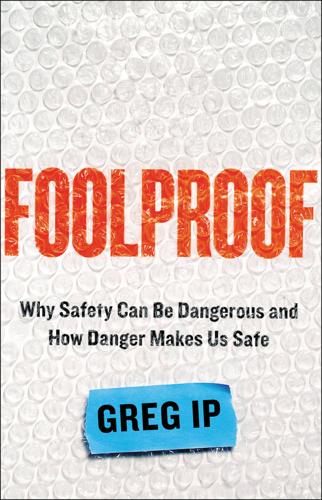
Foolproof: Why Safety Can Be Dangerous and How Danger Makes Us Safe
by
Greg Ip
Published 12 Oct 2015
In 1945 Fleming warned that resistant strains would become much more prevalent if penicillin became available in a pill, allowing patients to self-medicate rather than receive the drug intravenously in a hospital. Though Fleming was right about the possibility of resistance, he underestimated its potency. Fleming assumed that resistance would develop through natural selection. Suppose a strain of bacteria contained a mutation on its chromosome—the “double helix” of DNA that acts as a blueprint for the entire organism—that made it resistant to penicillin. Treating the patient with penicillin would kill off all the microbes except the resistant strain, enabling it to thrive and spread. Imagine a change in climate that kills all of a species of rabbit except some with unusually thick fur; the thick-furred species would thereafter become dominant because it was better adapted to this new climate.
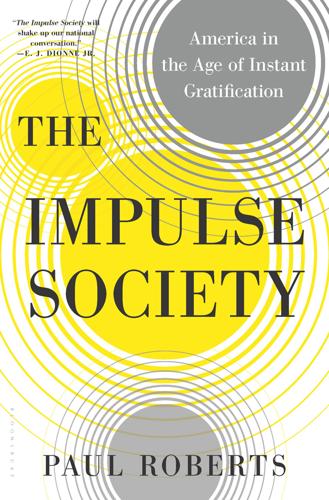
The Impulse Society: America in the Age of Instant Gratification
by
Paul Roberts
Published 1 Sep 2014
Shareholder returns (that is, share price appreciation plus dividends)‡ for the five hundred companies on the Standard & Poor’s 500 were more than twice the level of the 1960s and nearly as high as the boom times of the 1950s.6 With each quarterly report, the shareholder revolution and the logic of efficient markets were looking more and more righteous—so much so that many firms granted senior managers steadily larger blocks of company stock in order to “incentivize” them to create even more value. By then, rapid increases in computing power had unleashed the Internet and the surge in technology stocks. For many experts, the dot-com boom was final confirmation of a new economic order, a double helix of digital power and market efficiency that, in theory, was capable of generating even more wealth than the postwar economy. America was back on top. What was becoming clear, however, was that this massive new prosperity wasn’t anywhere near as broadly shared as its postwar predecessor had been—and this was hardly accidental.
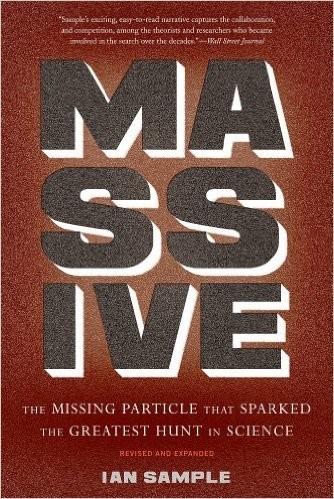
Massive: The Missing Particle That Sparked the Greatest Hunt in Science
by
Ian Sample
Published 1 Jan 2010
The two kinds are chemically identical, but mirror images of one another. In nature, for reasons unknown, sugar molecules only come in the right-handed variety, the only kind that bacteria will eat. If the bacteria encounter left-handed sugar, they leave it alone. They don’t know how to use it. Handedness is literally built into our genes. The double helix of our DNA is right-handed, as are the amino acids that make it up. The origin of this handedness in nature is one of the most baffling puzzles in biology. In 1984, Stephen Mason, a chemist at King’s College London, found what might be the answer. Particles such as electrons and quarks have a property called “spin” that can be left- or right-handed.

Bricks & Mortals: Ten Great Buildings and the People They Made
by
Tom Wilkinson
Published 21 Jul 2014
This advertised the collective spirit of the group, which rejected the existing feudal structure of the profession, in which teams of anonymous office juniors laboured to create projects which would be signed off by a big-name architect, a situation that persists today. In the straitened circumstances of the Depression there were not many opportunities for such a radical group, but they made their mark in 1934 with the unlikeliest of commissions, a penguin pool at London Zoo. The famous double-helix ramp, made possible by the engineering expertise of Ove Arup – who was to collaborate with Tecton and Lubetkin for many years – was an early iteration of one of Lubetkin’s central ideas, the social condenser. Originated by the constructivists, the social condenser was a building that brought people together in new relationships, making new ways of life possible.
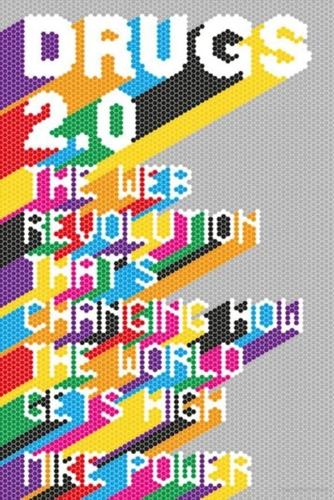
Drugs 2.0: The Web Revolution That's Changing How the World Gets High
by
Mike Power
Published 1 May 2013
LSD remained legal for more than twenty years after its creation, since its users tended to be psychiatrists, scientists and, in the main, other serious-minded researchers. LSD’s early users included James D. Watson and Francis Crick, who cracked the fundamental secret of life in March 1953 when they imagined the double helix form of DNA while under the influence of a small dose of the drug, have shaped society in ways unimaginable before its appearance. Once it escaped the psychiatry ward and other medical institutions in the 1940s and 1950s, LSD was the first compound to enable mass drug use in the West during the 1960s.
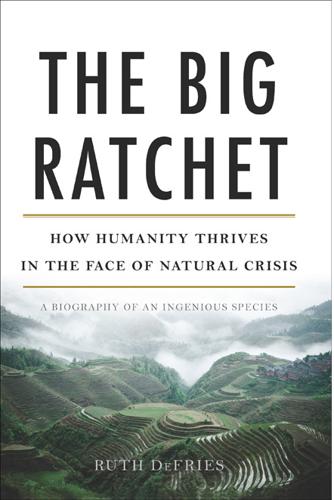
The Big Ratchet: How Humanity Thrives in the Face of Natural Crisis
by
Ruth Defries
Published 8 Sep 2014
The Green Revolution took genetic twists of nature to new heights, with skyrocketing yields in the developing world that even outstripped the explosive growth in population of the past century. The next pivot is playing out in contemporary times. What Mendel’s experiments did for hybrids, the Nobel Prize–winning 1953 discovery of the double-helix DNA molecule by James Watson, Francis Crick, Maurice Wilkins, and Rosalind Franklin, did for a new frontier for manipulating genes. DNA holds the blueprint for all traits, the code for all life. Breeding plants not by how they look to the eye but by the composition of their DNA, and splicing genes from one species to another, is a far cry from the forager who picked a wild tomato.
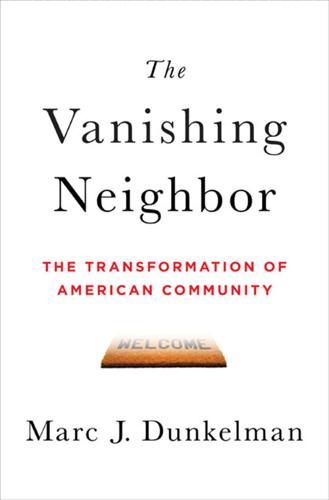
The Vanishing Neighbor: The Transformation of American Community
by
Marc J. Dunkelman
Published 3 Aug 2014
While their counterparts were boring down more heavily into their respective fields of expertise, Watson and Crick were batting different concepts back and forth across a wider range of subjects. They pondered how the individual nucleic acids bonded. How were they sequenced? Slowly, by splicing the information available to them—much of it garnered from evidence published by their competition—their conversations led them to decipher the code: genes were structured in a double helix, a biological language now known as DNA. Watson and Crick’s triumph illustrates the underlying foundation of creative thinking. Trapped in their own intellectual stovepipes, the world’s leading biochemists, physical chemists, and biophysicists had been unable to fit the individual pieces of evidence together into a comprehensible whole.
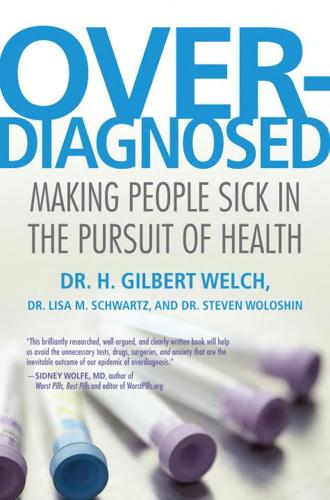
Overdiagnosed: Making People Sick in the Pursuit of Health
by
H. Gilbert Welch
,
Lisa M. Schwartz
and
Steven Woloshin
Published 18 Jan 2011
In college, I was fascinated to learn how the selective pressures exerted by one very common infectious disease (malaria) actually favored the persistence of particular genetic diseases in human populations (sickle cell disease, glucose-6-phosphate dehydrogenase deficiency). And in medical school, I was intrigued by the mechanics of DNA: how the double helix is replicated, how it gets transcribed into RNA to make proteins, how it gets recombined so we can pass on some of our mothers and some of our fathers to our children, and how it can get usurped by other life forms (viruses) so that our cells work for them.1 Genetics is a wonderful mix of mathematics, evolutionary biology, and biochemistry.

This Is Your Country on Drugs: The Secret History of Getting High in America
by
Ryan Grim
Published 7 Jul 2009
According to Gilmore, the maverick surfer/chemist Kary Mullis, a well-known LSD enthusiast, told him that acid helped him develop the polymerase chain reaction, a crucial breakthrough for biochemistry. The advance won him the Nobel Prize in 1993. And according to reporter Alun Reese, Francis Crick, who discovered DNA along with James Watson, told friends that he first saw the double-helix structure while tripping on LSD. It’s no secret that Crick took acid; he also publicly advocated the legalization of marijuana. Reese, who reported the story for a British wire service after Crick’s death, said that when he spoke with Crick about what he’d heard from the scientist’s friends, he “listened with rapt, amused attention” and “gave no intimation of surprise.
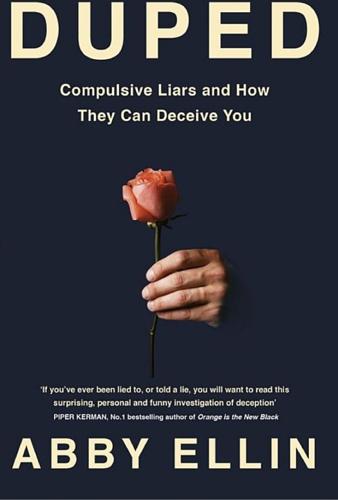
Duped: Double Lives, False Identities, and the Con Man I Almost Married
by
Abby Ellin
Published 15 Jan 2019
“Think about how much of what we know has to be accepted on faith rather than through independent observation,” said Vikram Jaswal, an associate professor of psychology at the University of Virginia. “This is particularly clear in science: How many of us can actually demonstrate that the earth is round or that the structure of DNA is a double helix? So our receptiveness to information other people provide, even some things that on the face of it seem outlandish, can serve us well.”8 Taking this pragmatic line of thinking further, there are evolutionary explanations for why we trust. We’re wired to believe that people are inherently good, primarily because society couldn’t function without that default.

Everything's Trash, but It's Okay
by
Phoebe Robinson
Published 15 Oct 2018
Peep the stats: (1) I’m alive, which means I’ve had enough experience dealing with the good, the bad, and the ugly to know what sucks and what doesn’t, (2) I’ve watched one and a half seasons of Friday Night Lights, so I understand what it takes to lead and assess a situation in mere seconds: wear khakis, always be hot like Kyle Chandler is, and have some hella emotional music cued up when saying something poignant, and (3) sometimes when I give friends advice, I end it with, “but IDK tho,” so that way if my advice Hindenburgs their lives, I can point to the “but IDK tho” clause so they can’t cuss me out completely. You know the saying “Those who can’t do, teach?” Well, in my case, there’s the following saying: “Those who identify trash can do so because the double helixes of their DNA are made out of the plastic rings that keep together a six-pack of Fanta.” My résumé may be a tad iffy; however, I don’t need a PhD to properly analyze the moments that make up our lives. For example, having to do a number two after showering? Trash. Finding an outlet in a store while running errands so you can charge your phone for ten minutes?
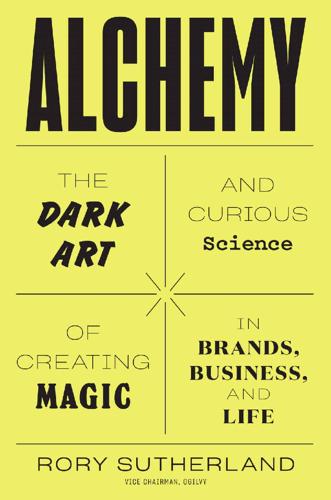
Alchemy: The Dark Art and Curious Science of Creating Magic in Brands, Business, and Life
by
Rory Sutherland
Published 6 May 2019
*An extreme example of this is often found in car-park design, where up and down ramps are placed at 90 degrees to the direction of travel of your car, to minimise the amount of concrete needed, even though this requires people repeatedly to execute a difficult manoeuvre with a high chance of damage to their vehicle. By contrast, if you want to see the work of the Steve Jobs of car park design, visit Bloomsbury Square in London, where the underground car park is a double-helix shape; it is possible to go all the way to the bottom and back up again with your steering wheel in one position. *Strictly speaking these radios were not pocket-sized, but in an early manifestation of his genius, Morita ordered shirts with outsized pockets for his employees. If you can’t make the radio smaller, make the pocket larger.
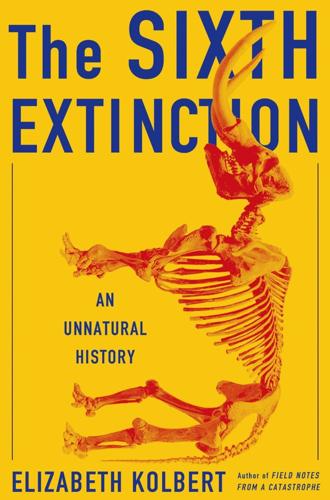
The Sixth Extinction: An Unnatural History
by
Elizabeth Kolbert
Published 11 Feb 2014
“Neanderthal man was not some prehistoric Rambo,” one of the display tags admonishes. “He was an intelligent individual.” * * * DNA is often compared to a text, a comparison that’s apt as long as the definition of “text” encompasses writing that doesn’t make sense. DNA consists of molecules known as nucleotides knit together in the shape of a ladder—the famous double helix. Each nucleotide contains one of four bases: adenine, thymine, guanine, and cytosine, which are designated by the letters A, T, G, and C, so that a stretch of the human genome might be represented as ACCTCCTCTAATGTCA. (This is an actual sequence, from chromosome 10; the comparable sequence in an elephant is ACCTCCCCTAATGTCA.)
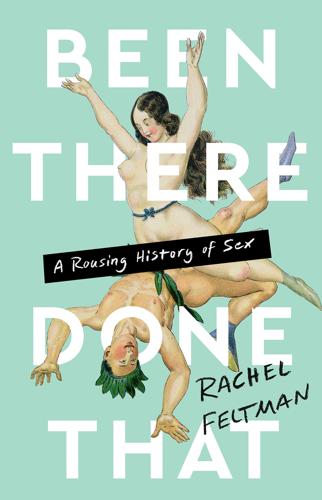
Been There, Done That: A Rousing History of Sex
by
Rachel Feltman
Published 14 May 2022
According to him, we’re awfully lucky our ancient relatives passed these pathogens around. Thanks to them, Underdown explains, we know what early humans got up to. Attempts to sequence ancient DNA have come a long way. When Underdown and I chatted in 2018, he cited a limit of around half a million years before fragile double helixes were just too degraded to read. Recent research has managed to peek at the genetic code of mammoths from just over a million years of age. But that still isn’t enough time to understand how our species evolved. Underdown and his colleagues can track the evolution of a virus to see when different strains came into contact with different species of human ancestor or when they moved around different parts of the globe.
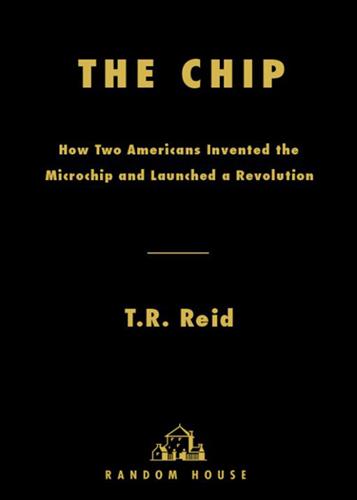
The Chip: How Two Americans Invented the Microchip and Launched a Revolution
by
T. R. Reid
Published 18 Dec 2007
Some of the most crucial inventions and discoveries of the modern world have come about through basic research—that is, work that was not directed toward any particular use. Albert Einstein’s picture of the universe, Alexander Fleming’s discovery of penicillin, Niels Bohr’s blueprint of the atomic nucleus, the Watson-Crick “double helix” model of DNA—all these have had enormous practical implications, but they all came out of basic research. There are just as many basic tools of modern life—the electric light, the telephone, vitamin pills, the Internet—that resulted from a clearly focused effort to solve a particular problem.

Green Mars
by
Kim Stanley Robinson
Published 23 Oct 1993
“Left-handed giant bird-people, that’s what we’re growing down here. It’s bizarre, if you ask me. You see them running across the dunes and expect them to just take off and fly.” That night Nirgal had the usual trouble sleeping. Ectogenes, transgenic . . . it made him feel odd. White and green in their double helix. . . . For hours he tossed, wondering what the uneasiness twisting through him meant, wondering what he should feel. Finally, exhausted, he fell asleep. And in his sleep he had a dream. All his dreams before that night had been about Zygote, but now he dreamed that he flew in the air, over the surface of Mars.
…
The little train car was black, squat, powered by a simple motor engaging the cog track, filled with a cargo that was no doubt mostly carbon nanotube filaments, and capped on top by a big rectangular block of diamond. Art had heard about this in Sheffield, and so was not surprised to see it. The diamond had been salvaged from the double helixes strengthening the cable, and the blocks were actually much less valuable than the carbon filament stored underneath them— basically a kind of fancy hatch door. But they did look nice. On the second day of his drive, Art got off the immense cone of Pavonis, and onto the Tharsis bulge proper. Here the ground was much more littered than the volcano’s side had been with loose rock, and meteor craters.

The Rise and Fall of the British Nation: A Twentieth-Century History
by
David Edgerton
Published 27 Jun 2018
Imperial Chemical Industries, ICI Wilton Works (1970). 17. Alan S. Milward and George Brennan, Britain’s Place in the World: A Historical Inquiry into Import Controls 1945–60 (London, 1996), p. 245. 18. Goulburn Evening Post (NSW), 18 May 1951, p. 7. 19. Kersten T. Hall, The Man in the Monkeynut Coat: William Astbury and the Forgotten Road to the Double-Helix (Oxford, 2014). 20. The Charleville Times (Brisbane), 22 November 1951. 21. The Argus (Melbourne), 5 April 1951. 22. Art Buchwald, ‘It Might Serve as a Sackcloth’, Detroit Free Press, 3 November 1957 (syndicated). 23. Nicholas J. White, ‘Government and Business Divided: Malaya, 1945–57’, The Journal of Imperial and Commonwealth History 22 (1994), pp. 251–74. 24.
…
Haeussler, Mathias, ‘The Popular Press and Ideas of Europe: The Daily Mirror, the Daily Express, and Britain’s First Application to Join the EEC, 1961–63’, Twentieth Century British History 25 (2014), pp. 108–31. Hall, Kersten T. The Man in the Monkeynut Coat: William Astbury and the Forgotten Road to the Double-Helix (Oxford, 2014). Hall, L. A., Sex, Gender and Social Change in Britain since 1880 (London, 2000). Hall, Stuart and Martin Jacques (eds.), New Times: The Changing Face of Politics in the 1990s (London, 1989). Halsey, A. H., Trends in British Society since 1900 (London, 1972). Hammond Perry, Kennetta, London Is the Place for Me: Black Britons, Citizenship and the Politics of Race (London, 2016).
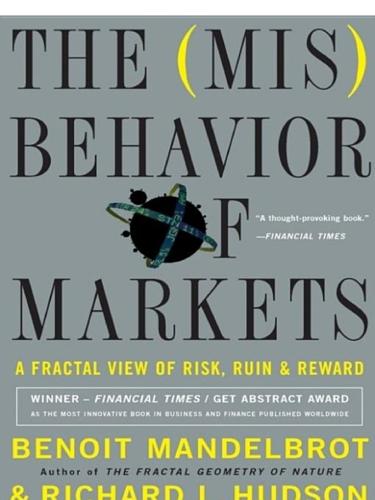
The Misbehavior of Markets: A Fractal View of Financial Turbulence
by
Benoit Mandelbrot
and
Richard L. Hudson
Published 7 Mar 2006
Last step: Use the new, baby generator to make a full fractal price chart that is a variant of one of the panels in the “Panorama of financial multifractal.” And there you are: a realistic financial chart, made by stretching and shrinking time. And a nice metaphor for our age, some fifty years after the discovery of the double helix: Each parent contributes one half of a chromosome to the baby. The Baby Theorem. This diagram shows how two generators can pass on traits to a third. The mother generator at top right is a Brownian motion, in conventional clock time—as apparent from the chart of its increments shown above the generator.

Memoirs of an Addicted Brain: A Neuroscientist Examines His Former Life on Drugs
by
Marc Lewis Phd
Published 5 Mar 2013
As shown in Figure 4, they are interlocked, because that’s how the brain works. But they are even more tightly interlocked in the brain of the addict, in my brain, because they shut out competing inputs, alternative meanings. They go round and round, building on themselves, releasing more dopamine and more glutamate in an ever-tightening spiral, a double helix of neural excitation. Producing a state of directed desire: desire that’s come to a point, so that nothing else matters. It’s not just craving, it’s customized craving, narrowly aimed. An ever-tightening spiral that is the outcome of its own recurrent history of synaptic selection. FIGURE 4.
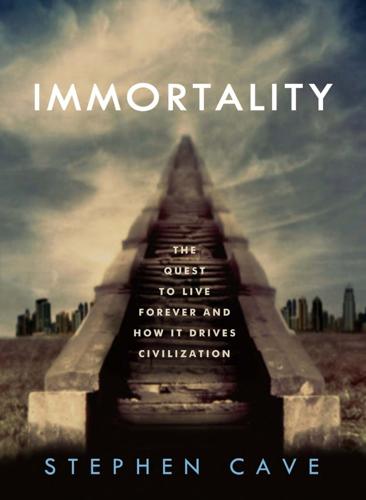
Immortality: The Quest to Live Forever and How It Drives Civilization
by
Stephen Cave
Published 2 Apr 2012
Pauling was at the time attempting to deduce the structure of DNA—a fact that, when they heard it, almost made the Cambridge University team including Francis Crick and James Watson give up immediately. But, unlike Pauling, Crick and Watson had seen Franklin’s crucial images and so were able to work out the now-famous double helix structure—a huge leap forward and triumph of the Engineering Approach. It is likely that if Pauling had been allowed to travel, he would have beaten them to it: by denying him a passport, the U.S. government ironically prevented one of the great achievements of twentieth-century science from being claimed by America.

The New Harvest: Agricultural Innovation in Africa
by
Calestous Juma
Published 27 May 2017
Ultimately, if Africa decides that these newest biotechnology techniques are in its best interest, countries must establish their own protocols and must decide for themselves how to classify genetically edited crops. Conclusion Probably the most significant research and educational opportunities for African countries in biotechnology lie in the potential to join the genomics revolution as the costs of sequencing genomes drop. When James Watson, co-discoverer of the DNA double-helix, had his genome sequenced in 2008 by 454 Life Sciences, the price tag was US$1.5 million. A year later a California-based firm, Applied Biosystems, revealed that it has sequenced the genome of a Nigerian man for under US$60,000. In 2010 another California-based firm, Illumina, announced that it had reduced the cost to about US$20,000.
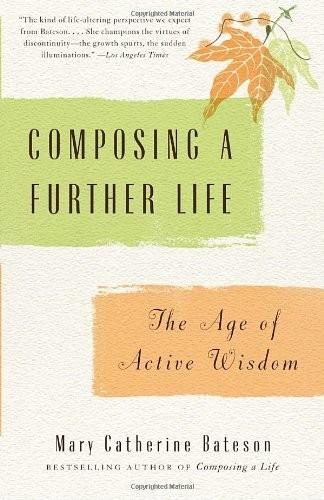
Composing a Further Life: The Age of Active Wisdom
by
Mary Catherine Bateson
Published 13 Sep 2010
The first example of his work that I saw was a chain necklace, given to me by Dick and Barbara. Such chains are made link by double or single link from different thicknesses of silver wire, then twisted together like a cable with a variety of textures. The Goldsbys, who are both biology professors, joked that the chain they gave me represented the double helix of DNA. Hank showed me a variety of other products he had developed, which he was reshaping into a small business. He got out half a dozen silver mussel shells, produced from a few shells brought from the Maine coast to his Tucson workshop, where he had experimented for over a year until he had a mold to produce a pendant that met his meticulous standards.
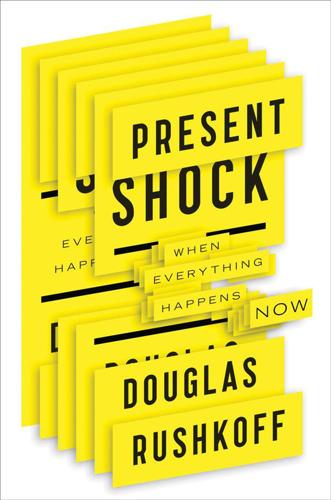
Present Shock: When Everything Happens Now
by
Douglas Rushkoff
Published 21 Mar 2013
Indeed, in spite of widespread confidence that we will crack the human code and replicate cognition within just a couple of decades, biology has a way of foiling even its most committed pursuers. The more we learn about DNA and the closer we come to mapping the entire genome, for example, the more we learn how small a part of the total picture it composes. We are no more determined by the neatly identifiable codons of the double helix than we are by the confused protein soup in which it actually operates. Put the same codons in a different person or species, and you’ll get very different results. Our picture of human cognition is even hazier, with current psychopharmacology taking a shotgun approach to regulating neurotransmitters whose actual functioning we have only begun to understand.

Forty Signs of Rain
by
Kim Stanley Robinson
Published 29 May 2004
The step-by-step mechanics of programming new calculating machines. All this resulted in an amalgam of math and logic, the symbols and methods drawn from both realms, combining in the often long and complicated operations that we call algorithms. In the time of the development of the algorithm, we also made discoveries in the real world: the double helix within our cells. DNA. Within half a century the whole genome was read, base pair by base pair. Three billion base pairs, parts of which are called genes, and serve as instruction packets for protein creation. But despite the fully explicated genome, the details of its expression and growth are still very mysterious.
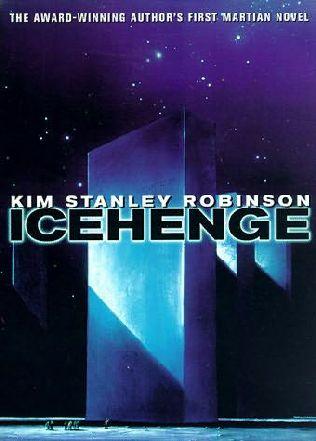
Icehenge
by
Kim Stanley Robinson
Published 29 May 1994
So often this had happened and I had resolved never to extend myself again — the aquifer was drained, the land above collapsing! — and here just the slightest show of friendship and I had done it again. Not the slightest bit of control over myself. There was something wrong with me, I knew it. I felt it. What I wanted then was a marriage like the Greek ideal, two strong trees grown round each other in a double helix, each stronger for the help of the other, and intertwined for good. Some people found such marriages even in our age, and I wanted one. I was just beginning to understand that my life was a series of discrete lives, and that I could not count on any family or friend to stay with me through more than one life.
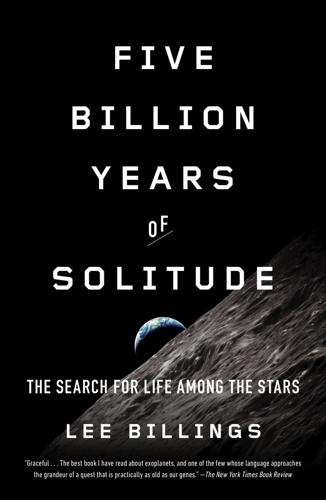
Five Billion Years of Solitude: The Search for Life Among the Stars
by
Lee Billings
Published 2 Oct 2013
His stained-glass window displayed the resulting output: a top row of dots establishing a binary counting method, listing numbers one through ten, followed by a second row listing the atomic numbers of hydrogen, carbon, nitrogen, oxygen, and phosphorus, the key chemical elements of all life on Earth. A third section assembled the preceding atomic numbers into chemical formulas for the nucleotides in a molecule of DNA, followed by a schematic depiction of a DNA molecule’s distinctive double helix. A long vertical bar represented the DNA molecule’s sugar-phosphate backbone, and doubled as a binary depiction of 3 billion, roughly the number of nucleotide base pairs within the human genome. The molecule’s image hovered over the head of a stick-figure human being, which was sandwiched between two more binary numbers, 4 billion and 14.
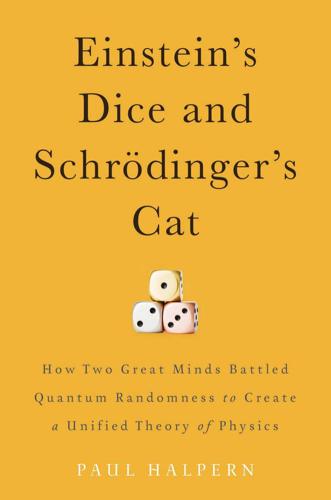
Einstein's Dice and Schrödinger's Cat: How Two Great Minds Battled Quantum Randomness to Create a Unified Theory of Physics
by
Paul Halpern
Published 13 Apr 2015
He also speculated that an aperiodic crystal (a nonrepeating arrangement of atoms) played a role in the development of life. Hence he was one of the first to suggest that life was encoded by a chemical sequence. A book based on Schrödinger’s lectures would serve as a source of inspiration for biologists in the 1950s, such as James Watson and Francis Crick, as they developed the double-helix model of DNA. The popular lectures drew the attention of Time magazine, which reported, “Schrödinger has a way with him. His soft, cheerful speech, his whimsical smile are engaging. And Dubliners are proud to have a Nobel prizewinner living among them.”25 174 Luck of the Irish When the Irish Press first reported about Schrödinger’s general unitary theory, it sent Einstein a copy of the article to gauge his reaction.
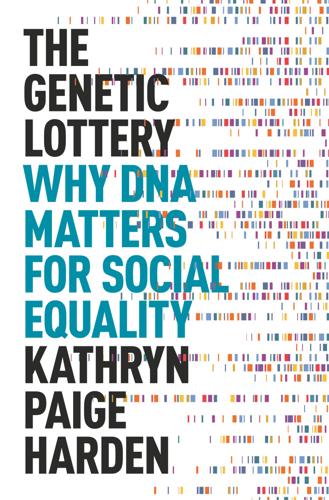
The Genetic Lottery: Why DNA Matters for Social Equality
by
Kathryn Paige Harden
Published 20 Sep 2021
His review of Blueprint, a book by the behavioral geneticist Robert Plomin (whose work I will describe in this book), proclaimed that new developments in genetics would sound the death knell for social justice: “if [these] scientific findings were broadly accepted, they would destroy the basis for the entire egalitarian enterprise of the last 60 or so years.”43 In 2017, white supremacists converged in Charlottesville for the “Unite the Right” rally.44 Men in khakis waved swastika flags and chanted “Jews will not replace us” as they marched through the town where Carrie Buck is buried—a grim reminder that the demented ideology of “racial purity” connecting Jim Crow Virginia and Nazi Germany, an ideology that also had grisly consequences for poor Whites like Buck, has never fully gone away. Genetics and Egalitarianism: A Preview In the century and a half since the publication of Hereditary Genius, geneticists have identified the physical substance of heredity, discovered the double-helix structure of DNA, cloned a sheep, sequenced the genomes of anatomically modern humans and of Neanderthals, created three-parent embryos, and pioneered CRISPR-Cas9 technology to edit the DNA code directly. Yet, in all that time, how people make sense of the relationship between genetic differences and social inequalities has barely budged from Galton’s original formulation: empirical claims (“people differ genetically, which causes physical, psychological, and behavioral differences”) are mixed together with moral oughts (“some people should be treated as superior to others”), with potentially horrible consequences.
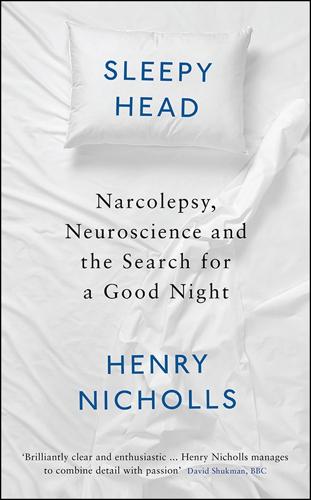
Sleepyhead: Narcolepsy, Neuroscience and the Search for a Good Night
by
Henry Nicholls
Published 1 Mar 2018
I think back to the onset of my own symptoms, more than 20 years ago. It was April 1994, or thereabouts. Did I suffer a nasty infection that winter? In all honesty I don’t remember. But I do know that my girlfriend at the time battled through November 1993 with a horrific strep throat, so I would certainly have encountered these same pathogens too. I add a double helix and an electron micrograph of Streptococcus to ‘the board’ to indicate the genetic predisposition and a subsequent infection. But taking a step back, I’m a little uneasy with the evidence gathered so far. All of it is circumstantial, nothing establishing a causal link between an infection and narcolepsy.
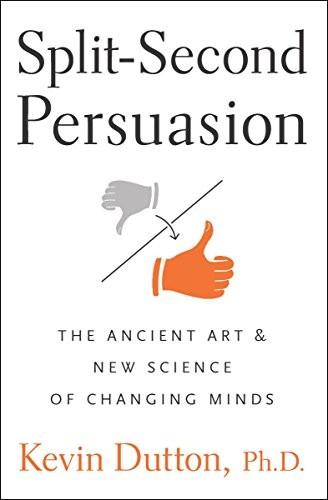
Split-Second Persuasion: The Ancient Art and New Science of Changing Minds
by
Kevin Dutton
Published 3 Feb 2011
In the following chapter, we turn the spotlight fully on split-second persuasion – placing it under the microscope and mapping its DNA. Is there, we ask, concealed within the melody of mind, a golden chord of influence that all of us can play? Not just the persuasion virtuosi, but the street performers, too? The answer, it turns out, is yes. Our analysis uncovers the double helix of influence, enshrined within which lies persuasion’s secret code. Attributional Style Test The following ten statements refer to different ways of looking at life events. Indicate on the scale provided the extent to which you either agree or disagree with each one. For example, if you strongly agree with the statement, circle 4.

Thinking About It Only Makes It Worse: And Other Lessons From Modern Life
by
David Mitchell
Published 4 Nov 2014
They may think women can do anything else men can do – right up to rocket science, brain surgery and transubstantiation – but that female intelligence cuts off just before that most elusive and nuanced of human ideas, the offside rule. If that’s the case, Keys and Gray are a bit sexist, but their main mental health problem is believing a slightly tricky rule from an incredibly straightforward game – a notion on the level of buying hotels in Monopoly – is like existentialism, string theory, the double helix, long division and backing-up-Nokia-phone-contacts-on-an-Apple-computer all rolled into one. But it may be that they’ve got a better sense of proportion about the trickiness of offside, yet still consider it to be beyond any woman’s intellectual grasp. If that’s the case, they must spend most of their lives looking around in horrified bewilderment.
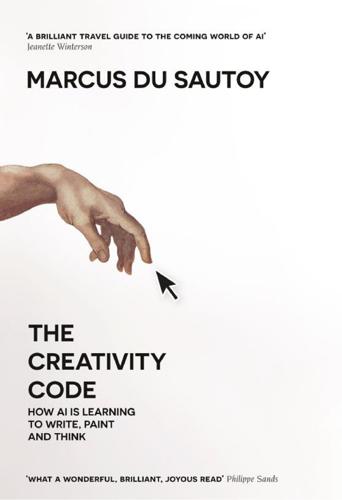
The Creativity Code: How AI Is Learning to Write, Paint and Think
by
Marcus Du Sautoy
Published 7 Mar 2019
Code up the right spell and then, rather like the Sorcerer’s Apprentice, the Commodore would go through the work of winning the game. Hassabis raced through school, culminating with an offer from Cambridge to study computer science at the age of sixteen. He’d set his heart on Cambridge after seeing Jeff Goldblum in the film The Race for the Double Helix. ‘I thought, is this what goes on at Cambridge? You go there and you invent DNA in the pub? Wow.’ Cambridge wouldn’t let him start his degree at the age of sixteen, so he had to defer for a year. To fill his time he won a place working for a game developer after having come second in a competition run by Amiga Power magazine.
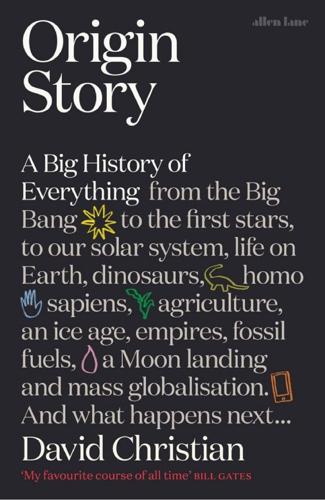
Origin Story: A Big History of Everything
by
David Christian
Published 21 May 2018
But Luca lacked a membrane that it could carry wherever it went, and a metabolism that was not tethered to energy flows near volcanic vents. Luca also seems to have lacked the more sophisticated reproductive mechanism that is present in most modern organisms and is based on RNA’s close relative, the double helix of DNA. At present, we know what had to evolve, but we do not understand the precise pathways by which these things evolved. Explaining the evolution of personal protective membranes is not too difficult. Cell membranes are made from long chains of phospholipids, and it is not hard to persuade phospholipids to link up in layers that form semipermeable bubblelike structures under the right conditions.

The Premonition: A Pandemic Story
by
Michael Lewis
Published 3 May 2021
At that moment, the FedEx delivery guy could be forgiven for asking a question: If this dude thinks he needs gloves even to touch the box, how come I don’t? Instead of asking it, he asked another. Hey, what’s in the box? Oh, it’s nothing, said Joe. The driver looked at him again. I’m never coming back here, he said. That was a very Joe moment. A twofer, like the double helix. He now had not only the chunk of human lung but a funny story about how he got it. Then he went to work on the lung. Twenty-four hours later his lab had identified the pathogen that had killed its original owner: a new coronavirus. Back in March 2003, this was shocking news. No one had ever heard of a coronavirus causing severe illness in people.
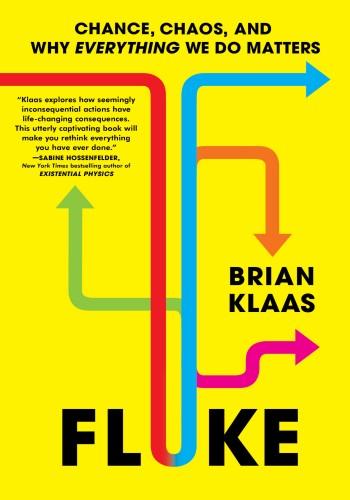
Fluke: Chance, Chaos, and Why Everything We Do Matters
by
Brian Klaas
Published 23 Jan 2024
It’s a simple but powerful model that is useful for understanding social and cultural change within humans as well as shifts within and between species. Organisms mutate and random variations accumulate, which creates the genetic building blocks for a trial-and-error approach to solving problems. (Today we know that seemingly random mutations occur when DNA gets copied, but Darwin died seventy-one years before the double helix was discovered.) Those mutations may create different beak types, some long and narrow, others short and broad. Then, natural selection does its handiwork. Organisms with more useful traits survive and pass their genes more, on average, to the next generation, while organisms with less useful traits die more frequently, on average, before they can reproduce.

France (Lonely Planet, 8th Edition)
by
Nicola Williams
Published 14 Oct 2010
* * * France’s soulful capital seduces: the Eiffel Tower is the peak of romance. Pop the question Gothic-style in Hôtel St-Merry. Nip north to chink glasses on Champagne’s wine route, or west to the Loire Valley and its châteaux: see love blossoming at Villandry; a drama of passion and betrayal unfold at Chenonceau; or meet your lover on the double-helix staircase at Château de Chambord. Don’t miss Brittany’s haunting Île d’Ouessant. Oysters, for which Cancale is famed, are an aphrodisiac. Tempting to lonely hearts and lovers is Belle Île, with its caves and beaches steeped in legend. Shouting ‘yes’ from a huge sand dune or in the surf on the Atlantic Coast is not a bad idea.
…
If it’s aristocratic pomp and architectural splendour you’re looking for, the Loire Valley is a place to linger. * * * HIGHLIGHTS Join the Joan of Arc trail in the historic city of Orléans Explore the cloisters and chapels of the Loire Valley’s greatest ecclesiastical complex, Abbaye Royale de Fontevraud Climb up the fabulous double-helix staircase to the turret-covered rooftop of Chambord, the Loire Valley’s most over-the-top château Visit the retirement home of the original Renaissance Man, Leonardo da Vinci, at Clos Lucé Admire the fabulous kitchen gardens and floral displays of Villandry Wander around the hobbit houses and mushroom museums of the Troglodyte Valley POPULATION: 2,589,000 AREA: 33,646 SQ KM * * * History The Loire River was one of Roman Gaul’s most important transport arteries.
…
Though construction was repeatedly halted by financial problems, design setbacks and military commitments (not to mention the kidnapping of the king’s two sons in Spain), by the time Chambord was finally finished 30-odd years later, the castle boasted some 440 rooms, 365 fireplaces, and 84 staircases, not to mention a cityscape of turrets, chimneys and lanterns crowning its rooftop, and a famous double-helix staircase, supposedly designed by the king’s chum, Leonardo da Vinci. Ironically, François ultimately found his elaborate palace too draughty, preferring the royal apartments in Amboise and Blois – he only stayed here for 42 days during his entire reign from 1515 to 1547. Despite its apparent complexity, Chambord is laid out according to simple mathematical rules.

Misspent Youth
by
Peter F. Hamilton
Published 1 Jan 2002
Yesterday Brussels had been dominated by the auditors refusing to sign off on the commission accounts for the fifteenth year in a row. But this was different; this was a human story, this was the official discovery of the fountain of youth. A long table had been set up on the raised stage, complete with the traditional glasses of water and silver microphones. Behind it, a huge screen was displaying a colorful double helix that writhed and twisted like a tormented serpent. The senior press officer looked across the audience of familiar cynical faces, took a deep breath to calm his fluttering nerves, and announced that they were ready to begin. President Jean Brèque walked onto the stage first. The press corps politely rose.

Augmented: Life in the Smart Lane
by
Brett King
Published 5 May 2016
We call the process of doing everything it takes to neutralise these linear decay factors, or even start getting improvement again, the “Activated Self”. It is what we will logically do in the future with all that data we’re collecting and interpreting about our health. Telomere Length Telomeres are the end caps on our chromosomes, which are made of the tightly wrapped double helix of our DNA. They are sometimes compared with aglets, the little pieces of plastic at the ends of your shoelaces. We have 15,000 units of telomeres at conception. Each time our cells divide, we lose telomeres. Our cells divide so many times while we are in the womb that by the time we are born, we have only 10,000 remaining units.

Drugs Without the Hot Air
by
David Nutt
Published 30 May 2012
The image stayed with him just as sharply after the drug experience had ended, and his design was accepted and constructed. Even in the less-obviously creative fields of hard science, LSD can be profoundly beneficial. In fact, it played a role in the two biggest discoveries in biology of the 20th century. 14Francis Crick, who discovered the double helix structure of DNA with James Watson, and 15Kary Mullis, who invented the 16polymerase chain reaction (PCR), had both taken the drug, and attributed some of their understanding and insights to it. Mullis has gone so far as to say: “would I have invented PCR if I hadn’t taken LSD? I seriously doubt it … [having taken LSD] I could sit on a DNA molecule and watch the polymers go by.
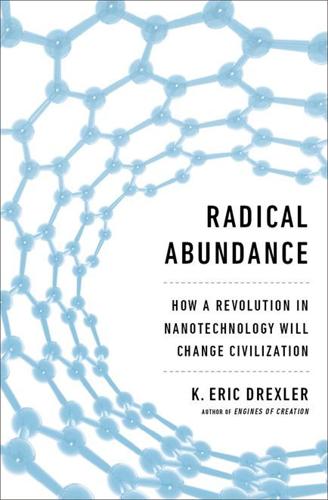
Radical Abundance: How a Revolution in Nanotechnology Will Change Civilization
by
K. Eric Drexler
Published 6 May 2013
Since then, the field has gone through a series of revolutions culminating in the ability to engineer atomically precise molecular frameworks on a scale of millions of atoms and hundreds of nanometers, using a technique called “DNA origami.” The simple, pairwise matching of DNA strands to form the predictable, rod-like structure of the DNA double helix has provided a molecular engineering method that can be as predictable as carpentry. In this analogy, short, single DNA strands play the role of the nails (technically termed “staples”), crossing between double helical strands to fasten them together. The products made to date include rectangles with arrays of hundreds of DNA-addressable binding sites, struts forming octahedra, and boxes with lids that latch and unlatch.

How Not to Network a Nation: The Uneasy History of the Soviet Internet (Information Policy)
by
Benjamin Peters
Published 2 Jun 2016
Many scientists worldwide were rushing to find ways to stabilize and regulate the consequences of a torrent of new and disruptive technologies—and cybernetics modeled a technical mindset for how to grapple with and control the consequences of technology itself. The 1950s saw a dizzying number of potentially revolutionary technologies become popular—atomic and hydrogen bombs, nuclear power plants, Sputnik, the double helix, passenger jets, dishwashers, polio vaccines, the lobotomy (invented in the 1930s), television, and transistor radios—and other trends, such as rock & roll and suburban housing developments. The disruptive influences of modern science and technology continued to be felt in the 1960s as quarks, lasers, Apollo, nylon, Pampers, the pill, LSD, napalm, DDT, mutually assured destruction, and the ARPANET entered the world stage.
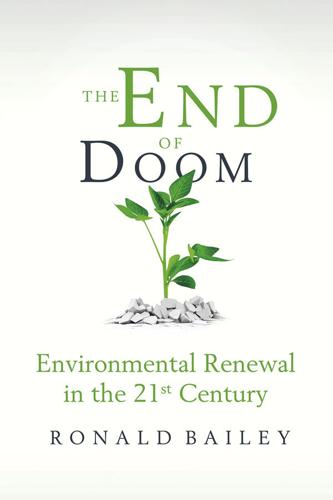
The End of Doom: Environmental Renewal in the Twenty-First Century
by
Ronald Bailey
Published 20 Jul 2015
They self-consciously thought that they were avoiding what they saw as the mistakes made a generation earlier by Manhattan Project nuclear physicists when they unleashed the power of the atom. The initially restrictive guidelines have been greatly relaxed, not least because it turns out that microorganisms are natural and promiscuous exchangers of genes. Reflecting later on the hysteria and rush to regulate, James Watson, codiscoverer of the double-helix structure of DNA, for which he won the Nobel Prize, succinctly noted, “Scientifically I was a nut. There is no evidence at all that recombinant DNA poses the slightest danger.” Similarly, biophysicist Burke Zimmerman, who participated in the congressional debates over regulating biotechnology, concluded, “In looking back, it would be hard to insist that a law was necessary, or, perhaps, that guidelines were necessary.”
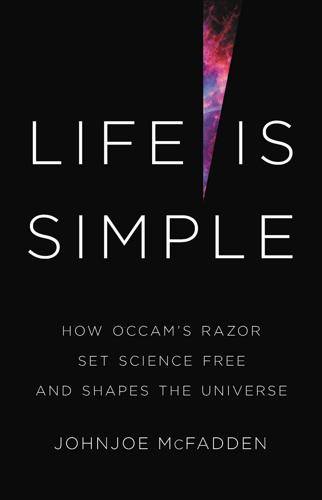
Life Is Simple: How Occam's Razor Set Science Free and Shapes the Universe
by
Johnjoe McFadden
Published 27 Sep 2021
Mendel, G., Experiments on Plant Hybrids (1866), translation and commentary by Staffan Müller-Wille and Kersten Hall, British Society for the History of Science Translation Series (2016), http://www.bshs.org.uk/bshs-translations/mendel. 5. Ibid. 6. Dobzhansky, T., ‘Nothing in Biology Makes Sense Except in the Light of Evolution’, American Biology Teacher, 35, 125–9 (1973). 7. Bergson, H., Creative Evolution, vol. 231 (University Press of America, 1911). 8. Watson, J., The Double Helix (Weidenfeld & Nicolson, 2010). Maddox, B., Rosalind Franklin: The Dark Lady of DNA (HarperCollins New York, 2002). Watson, J. D., Berry, A., and Davies, K., DNA: The Story of the Genetic Revolution (Knopf, 2017). 9. Karafyllidis, I. G., ‘Quantum Mechanical Model for Information Transfer From DNA to Protein’, Biosystems, 93, 191–8 (2008). 10.

Ask Me About My Uterus: A Quest to Make Doctors Believe in Women's Pain
by
Abby Norman
Published 6 Mar 2018
Having his arms around me, in other words, was a nice feeling, but one that invariably led to, “Okay, now let me suck your dick.” It was the “hurts so good” intensity of attraction. His embrace was molecularly energizing. I’ve had strange moments throughout my life where it feels as though I am expanding infinitely out into the universe, as though every double helix of my DNA were unfurling. It felt like every atom of my body was being drawn back to the cosmos by some unseen force, and was trying to return to whatever star I came from. In these moments, I find myself desperately wanting to be held. But more than held—stilled. Physical closeness with a man (sometimes as little as proximity—touching isn’t strictly necessary) inspires sexual stirrings in me because I’m straight.
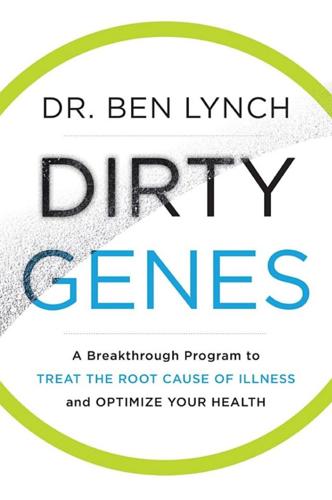
Dirty Genes: A Breakthrough Program to Treat the Root Cause of Illness and Optimize Your Health
by
Ben Lynch Nd.
Published 30 Jan 2018
Excessive and/or chronic inflammation—which can be created by poor methylation—has also been implicated in cardiovascular disease. DNA Repair Your genetic instructions are embodied in your DNA, the deoxyribonucleic acid that is the biochemical code for life itself. Two strands of DNA, wrapped together in a spiraling double helix, contain the particular sequence of molecules that say who you are—and that tell your cells what to do to keep you alive and well. Just as the couch in your family room is constantly undergoing wear and tear from being used so often, so is your DNA. Your body’s own biochemical processes can damage your DNA, as can exposure to free radicals (unstable, highly reactive molecules), ultraviolet B rays (UVB), and certain biochemicals.
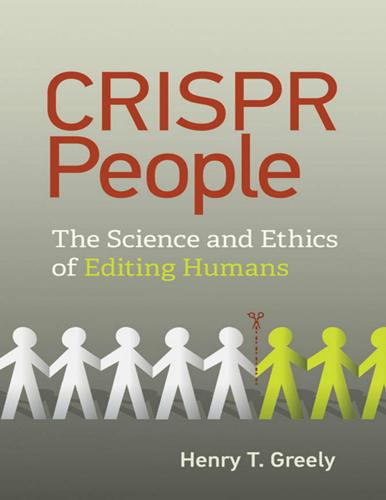
CRISPR People: The Science and Ethics of Editing Humans
by
Henry T. Greely
Published 22 Jan 2021
(You have, I hope, noticed that this is the same sequence we started out with, the old virus’s DNA sequence found in the CRISPR region.) The attached protein, like a molecular scissors, cuts this viral DNA into pieces at the location the guide RNA has found. Unlike RNA, DNA comes in two connected strands of sequence, curling around each other in the famous “double helix.” (Think of a twisted ladder.) The associated protein cuts the viral DNA across both strands, “killing” the virus, making it unable to reproduce, and thus protecting the microbe.18 The first of these “scissors” proteins was given the poetic name “CAS,” for “CRISPR-associated” protein. It turned out to be one of a large family of CAS proteins and so had its name changed to Cas1.
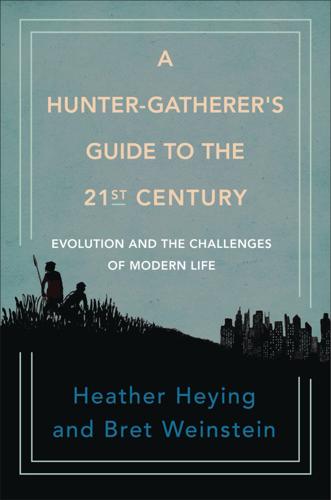
A Hunter-Gatherer's Guide to the 21st Century: Evolution and the Challenges of Modern Life
by
Heather Heying
and
Bret Weinstein
Published 14 Sep 2021
Lactase persistence was born of particular environmental conditions, and moved into the genetic layer, where it now lives. It brings differential success in some environments, and not in others, but the experience of being in a part of the world that enjoys or rejects dairy does not affect your ability to digest it. * * * — Following the discovery of the DNA double helix, there emerged a conflation of “evolutionary” traits with “genetic” traits. The terms evolutionary and genetic began to be used interchangeably, which made it more and more difficult, over time, to talk about evolutionary change that was not genetic. Darwin, had he been aware of Gregor Mendel’s work with peas, or had he been around to see the discovery of DNA, would have been pleased to know a mechanism of adaptation by natural selection, but he would not, we believe, have assumed that this was the only such mechanism.

In Our Own Image: Savior or Destroyer? The History and Future of Artificial Intelligence
by
George Zarkadakis
Published 7 Mar 2016
The computer metaphor for life is reinforced by its apparently successful application to real problems. Many disruptive new technologies in molecular biology – for instance ‘DNA printing’ – function on the basis of digital information. This is how they do it: DNA is a molecule formed by two sets of base pairs: adenine-thymine (A-T) and guanine-cytosine (G-C). The pairs are stacked along the double helix and their sequence defines the hereditary characteristics of the living being13 whose DNA it is. The sequence is called the ‘genome’.14 Let’s imagine these pairs as Lego pieces. In themselves, they are just pieces of boring chemistry. Put them in the right order, however, and you have the recipe for a complex, living creature.

Age of Discovery: Navigating the Risks and Rewards of Our New Renaissance
by
Ian Goldin
and
Chris Kutarna
Published 23 May 2016
The book of life The study of genes dates back to the 1860s, when an Augustinian friar, Gregor Johann Mendel, patiently bred some 30,000 pea plants and deduced from his monkish observations that the nature of a “child” plant must be due to a combination of dominant and recessive traits inherited from both parents. By around 1900, scientists had figured out that those inherited or “hereditary” traits are carried by chromosomes inside the nucleus of the cell. And by the 1950s, they had located within chromosomes the ultimate vault for our genetic inheritance: a clever, two-strand or “double helix” molecule dubbed DNA. DNA is nature’s language for storing and copying genetic information. It’s digital. But instead of 0s and 1s, each strand comprises a long sequence of A, C, G and T—adenine, cytosine, guanine and thymine, which are four simple molecules present in all cells in all living things.

The Idea of Israel: A History of Power and Knowledge
by
Ilan Pappe
Published 30 Apr 2012
Contested Land, Contested Memory: Israel’s Jews and Arabs and the Ghosts of Catastrophe, New York: Dundurn, 2013. Rogan, E. and Shlaim, A. (ed.) The War for Palestine: Rewriting the History of 1948, Cambridge: Cambridge University Press, 2007. Rotberg, R. (ed.) Israeli and Palestinian Narratives of Conflict: History’s Double Helix, Bloomington, IN: Indiana University Press, 2006. Sand, S. The Words and the Land: Israeli Intellectuals and the Nationalist Myth, London: Semiotext(e), 2011. Shafir, G. and Peled, Y. Being Israeli: The Dynamics of Multiple Citizenship, Cambridge: Cambridge University Press, 2002. Shatz, A.

The Master Algorithm: How the Quest for the Ultimate Learning Machine Will Remake Our World
by
Pedro Domingos
Published 21 Sep 2015
Mendeleev’s periodic table not only organized all the known elements into just two dimensions, it also predicted where new elements would be found. Darwin’s observations aboard the Beagle suddenly began to make sense when Malthus’s Essay on Population suggested natural selection as the organizing principle. When Crick and Watson hit on the double helix structure as an explanation for the puzzling properties of DNA, they immediately saw how it might replicate itself, and biology’s transition from stamp collecting (in Rutherford’s pejorative words) to unified science had begun. In each of these cases, a bewildering variety of observations turned out to have a common cause, and once scientists identified it, they could in turn use it to predict many new phenomena.
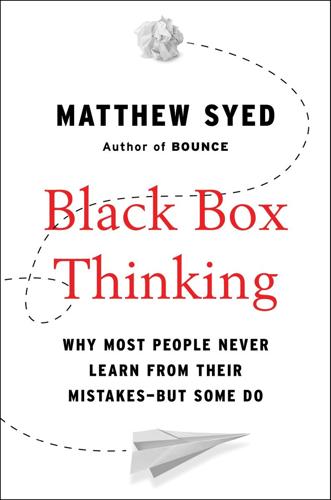
Black Box Thinking: Why Most People Never Learn From Their Mistakes--But Some Do
by
Matthew Syed
Published 3 Nov 2015
Ivan Pavlov won the Nobel Prize for Medicine in 1904 for his work on digestion. Ilya Mechnikov won the Nobel Prize in 1908 for his theories on the cellular response to infection. In 1927, Nikolai Koltsov proposed that inherited characteristics are double-stranded giant molecules, anticipating the double helix structure of DNA. By the end of the purges, however, Russian science had been decimated. As Valery Soyfer, a Russian scientist persecuted during the Lysenko era, put it: “The progress of science was slowed or stopped, and millions of university and high school students received a distorted education.”2 This produced a ripple effect on the quality of life for millions of Russians, not least because the agricultural techniques proposed by Lysenko were often ineffective.
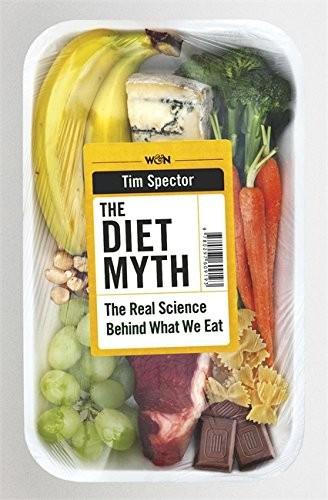
The Diet Myth: The Real Science Behind What We Eat
by
Tim Spector
Published 13 May 2015
diabetes: two diseases resulting from too much sugar (glucose) in the blood. The commonest is Type 2, which is related to obesity and to our genes and makes insulin ineffective, causing blood glucose to rise and excessive insulin to be produced in compensation. DNA: Deoxyribonucleic acid is the building block of our genetic material; it is arranged as a double helix in 23 chromosomes and contains the roughly 20,000 genes in each cell of our bodies. E. coli: a common bacteria that lives in our colons and can occasionally become pathogenic after infections or antibiotics. endocrine: a term for anything producing hormones (e.g. thyroid or pancreas). endocrine disruptors: chemicals that act epigenetically to alter hormones, e.g. the bisphenol (BPA) in plastic bottles.
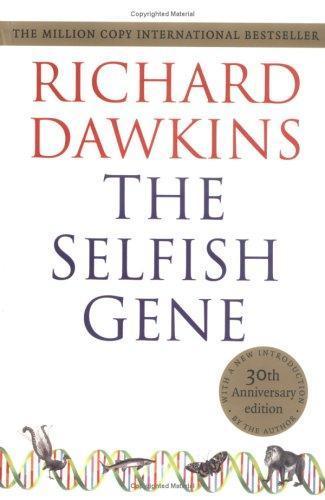
The Selfish Gene
by
Richard Dawkins
Published 1 Jan 1976
Just as protein molecules are chains of amino acids, so DNA molecules are chains of nucleotides. A DNA molecule is too small to be seen, but its exact shape has been ingeniously worked out by indirect means. It consists of a pair of nucleotide chains twisted together in an elegant spiral; the 'double helix'; the 'immortal coil'. The nucleotide building blocks come in only four different kinds, whose names may be shortened to A, T, C, and G. These are the same in all animals and plants. What differs is the order in which they are strung together. A G building block from a man is identical in every particular to a G building block from a snail.
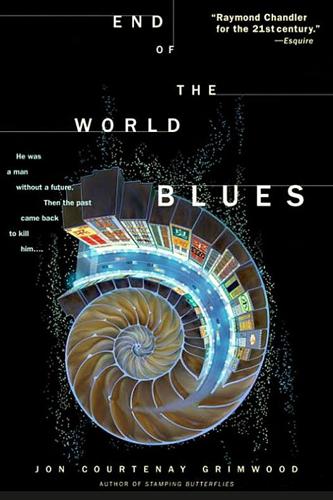
End of the World Blues
by
Jon Courtenay Grimwood
Published 24 Sep 2006
On balance, she’d have to say she’d been pretty good. Maybe it was her most recent trip to the schloss? But…I mean, she thought, they couldn’t possibly know about that. Of course not. Scuffing dust, Lady Neku slid her way to the middle of the corridor and finished with a quick twirl that left her dizzy and slightly breathless in front of a double helix of steps. The spiral came out behind a tapestry in the audience chamber above. Up close one could see that the tapestry of a girl with a unicorn was stitched, but from a distance the picture looked like a painting. It was very old. Millions of years had been mentioned. Right back to the far side of the Great White, when there was only one inhabited planet and this was it.

Remix
by
John Courtenay Grimwood
Published 15 Nov 2001
Water ran under the collar of her coat, dripped from black-lacquered fingertips and tumbled from the tiny rat tails of her close-cropped grey hair. But the water running over her cheeks was not rain. Not all of it, anyway. The head of the French Empire’s most feared Directorate was weeping. Looking out at the grey ribbon of the swollen river, staring blankly at where the vast cross-and-double-helix hologram of the Church Geneticist should have been, if only that arrondissement had power, Lady Clare let burning tears stream down her frozen face. There was no one to see her misery, and why should she care even if there was? God knew, there was enough horror in the city for even the most hardbitten Minister of the Empire to be crying.
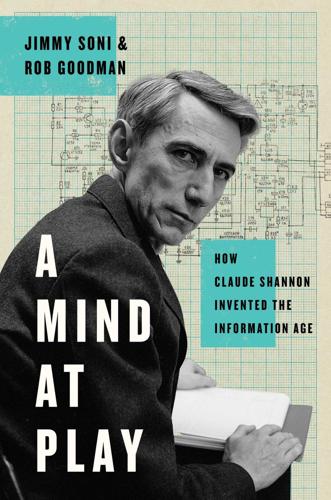
A Mind at Play: How Claude Shannon Invented the Information Age
by
Jimmy Soni
and
Rob Goodman
Published 17 Jul 2017
Along with Shannon, the resulting list included a twenty-six-year-old, boyish-looking molecular biologist working at the Cavendish Laboratory in Cambridge, England. Eight years later, at the age of thirty-four, James Watson won the Nobel Prize, along with Francis Crick and Maurice Wilkins, for discovering the double helix of DNA. Another of Bello’s profilees was a thirty-six-year-old wunderkind physicist. Richard Feynman, too, shared a Nobel in 1965 for his work on quantum electrodynamics. In fact, one-quarter of the twenty scientists Bello singled out for recognition would go on to win that honor. With similar encomia in Time, Life, and a host of other major publications, Shannon had reached the heights of scientific celebrity—in a postwar era in which the figure of “the Scientist” had itself reached its apex of cultural prestige.
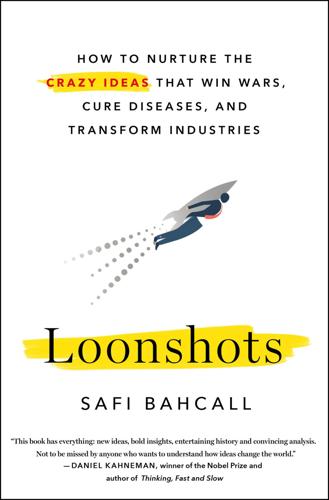
Loonshots: How to Nurture the Crazy Ideas That Win Wars, Cure Diseases, and Transform Industries
by
Safi Bahcall
Published 19 Mar 2019
He explained that he knew his patients. Many had only months to live, were desperately looking for options, and understood the risks. The potential, in this context, justified the risk. “There’s a quote from Francis Crick that I love,” Miller said. Crick was awarded the Nobel Prize for discovering, along with James Watson, the double-helix structure of DNA. “When asked what it takes to win a Nobel Prize, Crick said, ‘Oh it’s very simple. My secret had been I know what to ignore.’” Miller shared the early laboratory results from his piranha with a handful of physicians, who agreed to proceed with a clinical trial in patients with advanced leukemias.
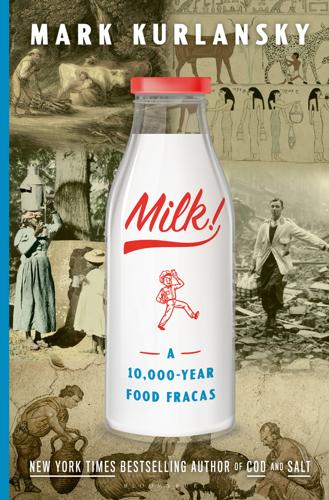
Milk!
by
Mark Kurlansky
GMO grain is banned in many other countries, including those belonging to the European Union, although there could be an economic motive behind this, since the banned grain is grown in the United States and if European farmers were to use it they would be buying imported American grain instead of the European product. In 1999, at a celebration of the first twenty-five years of biotechnology, James Dewey Watson, a member of the three-person team that won the 1962 Nobel Prize in Physiology or Medicine for revealing the structure of DNA, the double helix, said that the field of GMOs offered “certain promise and uncertain risk.” Watson’s point of view was that to make progress, you had to take risks. GMOs are indeed a field full of promise. They could produce food that no one would be allergic to, or food that when eaten prevents tooth decay, even perhaps food that fights certain diseases.
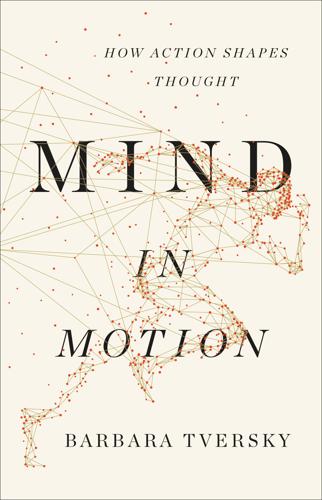
Mind in Motion: How Action Shapes Thought
by
Barbara Tversky
Published 20 May 2019
We found a small number of discourse forms, essentially descriptions, explanations, and stories. Descriptions included labeling the parts of a leaf or a cell and examples of different kinds of leaves or cells. Explanations included photosynthesis and cell division. Stories included Mendel’s discovery of genetics or Watson and Crick’s double helix of DNA. Yes, they can be diagrammed. The big three, descriptions, explanations, and stories, are also the big three that characterize discourse purely in language. Each of these builds on and expands the previous kind, and any particular piece of discourse, descriptive or depictive, may include a mix of the three kinds.
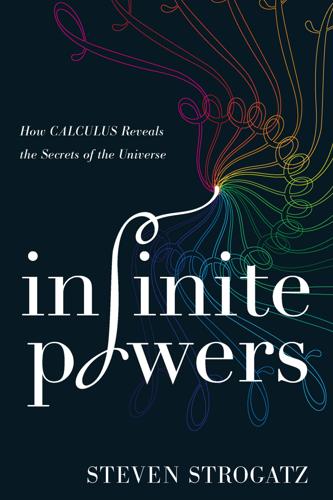
Infinite Powers: How Calculus Reveals the Secrets of the Universe
by
Steven Strogatz
Published 31 Mar 2019
The mechanism of action is not completely clear, but it is thought that by blocking the action of topoisomerases, the drugs (known as topoisomerase inhibitors) can selectively damage the DNA of cancer cells, which causes them to commit cellular suicide. Good news for the patient, bad news for the tumor. In the application of calculus to supercoiled DNA, the double helix is modeled as a continuous curve. As usual, calculus likes to work with continuous objects. In reality, DNA is a discrete collection of atoms. There’s nothing truly continuous about it. But to a good approximation, it can be treated as if it were a continuous curve, like an ideal rubber band. The advantage of doing that is that the apparatus of elasticity theory and differential geometry, two spinoffs of calculus, can then be applied to calculate how DNA deforms when subjected to forces from proteins, from the environment, and from interactions with itself.

Them and Us: How Immigrants and Locals Can Thrive Together
by
Philippe Legrain
Published 14 Oct 2020
Popular narratives tend to centre on individual geniuses coming up with incredible insights in isolation – and those few are disproportionately immigrants. But in fact, most ideas come from creative collisions between people. Take the discovery of DNA, the code of life. English physicist Francis Crick and American biologist James Watson concluded that it consisted of a three-dimensional double helix, based on the earlier discovery of DNA by a Swiss scientist, Friedrich Miescher, developed by Phoebus Levene, a Lithuanian-born American biochemist, and Erwin Chargaff, an Austro-Hungarian one.2 Or consider DeepMind, a London-based company doing groundbreaking practical research on artificial intelligence.

Think Like a Rocket Scientist: Simple Strategies You Can Use to Make Giant Leaps in Work and Life
by
Ozan Varol
Published 13 Apr 2020
As one study shows, National Football League (NFL) coaches change their lineup after a one-point loss, but don’t change it after a one-point win—even though these minor score differences are often poor indicators of player performance.42 Most of us act like American football coaches, treating success and failure as binary outcomes. But we don’t live in a binary world. The line between success and failure is often razor thin. “Failure hovers uncomfortably close to greatness,” wrote James Watson, the codiscoverer of DNA’s double-helix structure.43 The same decision that produced a failure in one scenario can lead to triumph in others. The goal, then, is to focus on the variables you can control—the inputs—instead of the outputs. You should ask, “What went wrong with this failure?” and if the inputs need fixing, you should fix them.
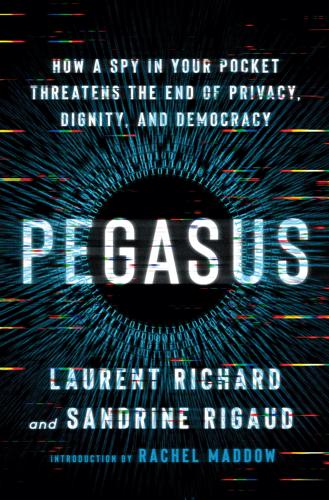
Pegasus: How a Spy in Your Pocket Threatens the End of Privacy, Dignity, and Democracy
by
Laurent Richard
and
Sandrine Rigaud
Published 17 Jan 2023
Khadija and I did not have a long history, but at least for me, the relationship was intense and meaningful. She was both a personal hero and an inspiration—the sort of journalist I most admire: the first to charge the hill, with courage that drew others to her standard. I think of Khadija as one of the two interwoven strands in the double helix of the Forbidden Stories’ DNA. I first met Khadija here in Paris when she spoke at a UNESCO conference in the spring of 2014, a week or so before I was to travel to her home country of Azerbaijan as part of French president François Hollande’s press contingent. I was working on a documentary for a television investigative magazine I had co-created—Cash Investigation—about France’s increasingly cozy relations with corrupt governments in former Soviet republics in the Caucasus.
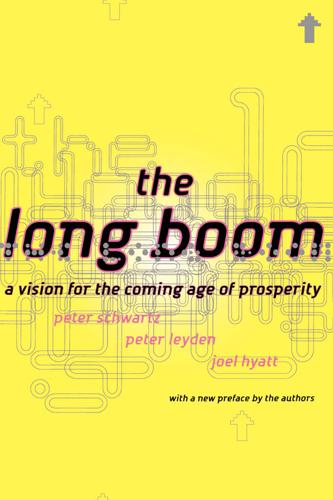
The Long Boom: A Vision for the Coming Age of Prosperity
by
Peter Schwartz
,
Peter Leyden
and
Joel Hyatt
Published 18 Oct 2000
He kept seeing images of the genetic coils of DMA spin out of his mind. He watched as the strands stretched out and separated in a way that gave him an idea. Why couldn't humans stretch out the long coils of DNA, the fundamental genetic material that carries the programs organizing all life forms? Why couldn't we then just unzip the two strands of the famous double helix, the spiral ladder whose image has been studied by every schoolchild since Watson and Crick TeclfNolocjy EwulATEs NATURE 189 first described it? Then we could use RNA, DNA's cousin, to provide the four basic protein building blocks that could match up with each of the two orphaned strands to effectively duplicate the original DNA molecule.

Tales of a Female Nomad: Living at Large in the World
by
Rita Golden Gelman
Published 21 May 2001
“I’ll call you right back.” Before I finish the scone in my hand, Lisa calls back. One of her neighbors, Marian, is looking to rent her house. The drive from Rotorua should take two and a half hours. I leave at nine for our twelve o’clock appointment. Two hours north of Rotorua, the road begins to wind like a double helix up the west coast of the Coromandel Peninsula. For more than an hour and a half, it twists with the whims of the rocky shoreline. With every sharp curve I worry that my right side is too far over the center, so I move to the left, worried then that my left side is going to go off the road, rolling me into the water.

Machine, Platform, Crowd: Harnessing Our Digital Future
by
Andrew McAfee
and
Erik Brynjolfsson
Published 26 Jun 2017
Cutting-edge gene-editing tools, for example, are completely different from what they were just five years ago. This is because of the development in 2012 of CRISPR, a tool kit derived from bacteria like Streptococcus that allows for unprecedented precision in finding, cutting out, and replacing any desired segment on the very long double helix of the DNA molecule. We’ve also seen fast recent changes in artificial intelligence and machine learning (as we discussed in Chapter 3), energy production (thanks to both fracking of oil and gas and very steep declines in the cost of solar power§), and many other fields. When such rapid progress is occurring, the knowledge of the core in organizations within these industries can easily become out of date.
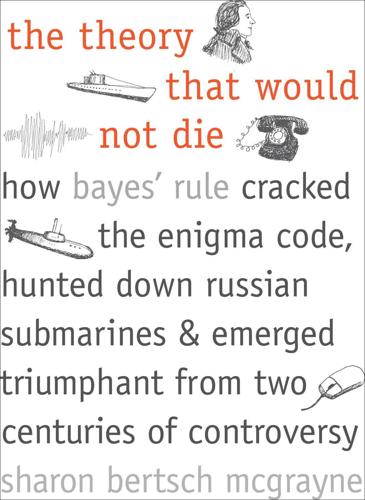
The Theory That Would Not Die: How Bayes' Rule Cracked the Enigma Code, Hunted Down Russian Submarines, and Emerged Triumphant From Two Centuries of Controversy
by
Sharon Bertsch McGrayne
Published 16 May 2011
Hillborn R, Mangel M. (1997) The Ecological Detective: Confronting Models with Data. Princeton University Press. Hively, Will. (1996) The mathematics of making up your mind. Discovery (17) 98(8). Kass, Robert E. (2006) Kinds of Bayesians (Comment on articles by Berger and by Goldstein). Bayesian Analysis (1) 437–40. Kaye, David H. (in press) The Double Helix and the Law of Evidence. Harvard University Press. Kaye DH, Bernstein D, Mnookin J. (2004) The New Wigmore, A Treatise on Evidence: Expert Evidence. Aspen Publishers. Kersten D, Mamassian P, Yuille A. (2004) Object perception as Bayesian inference. Annual Review of Psychology (55) 271–305.

Plutocrats: The Rise of the New Global Super-Rich and the Fall of Everyone Else
by
Chrystia Freeland
Published 11 Oct 2012
Einstein was indeed a groundbreaking physicist, whose theory of relativity ushered in the nuclear age and transformed the way we think about the material world. But why is he a household name, while Niels Bohr, who made important contributions to quantum mechanics and developed a model of atomic structure that remains valid today, or James Watson, one of the discoverers of the double helix structure of DNA, is not? According to historian Marshall Missner, Einstein owes much of his power as one of the most influential men of the twentieth century less to his theoretical papers and more to the trip he made to the United States in April 1921 as part of a Zionist delegation led by Chaim Weizmann.
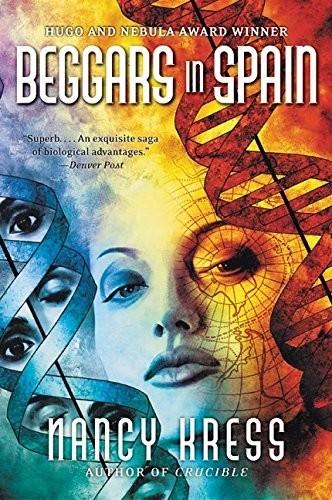
Beggars in Spain
by
Nancy Kress
Published 23 Nov 2004
After a moment she said, “I’m sorry.” “Let the kid in. At least it will stop that yelling. What did you say his name was?” “Drew Arlen,” Stella said. In orbit over the Pacific Ocean, the Sanctuary Council broke into spontaneous applause. Fourteen men and women sat around the polished metal table shaped like a stylized double helix in the Council dome. A plastiglass window three feet above the floor ran around the entire dome, occasionally crossed with thin metal support struts. The dome itself sat as close as possible to one end of the cylindrical orbital, so the view from the conference room, which neatly occupied half the Council dome, was appealingly varied.

Building and Dwelling: Ethics for the City
by
Richard Sennett
Published 9 Apr 2018
Since experimental drugs can be dangerous, the researcher has to exercise great caution in the course of charting unknown realms – but the experimenter in an adaptive clinical trial is more interested in making sense of things that are surprising or intriguing than in confirming what might have been predictable in advance.3 Of course adventure in a lab can’t be divorced from the plodding and plugging grind of sifting in a yes-or-no fashion. Francis Crick, who uncovered the double helix structure of DNA, remarked that its discovery came from studying small ‘anomalies’ in routine lab work. The researcher needs orientation, and fixed procedure provides it; only then can the self-critical work begin of exploring the odd result, the curious outcome. The challenge is to engage with these possibilities.4 ‘Open’ implies a system for fitting together the odd, the curious, the possible.
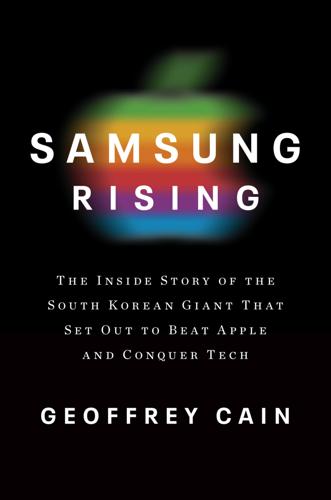
Samsung Rising: The Inside Story of the South Korean Giant That Set Out to Beat Apple and Conquer Tech
by
Geoffrey Cain
Published 15 Mar 2020
With the 1988 Seoul Olympics opening in two months, the economy was bustling, fueling a patriotic fervor that everyone hoped would bolster Samsung’s standing in the world. * * * — A SAMSUNG ADVERTISEMENT FROM the period, created to celebrate Samsung’s fiftieth anniversary, showed two children gazing up at a picture of the solar system. The planets had been replaced with images of a personal computer, a semiconductor, a DNA double helix, and an orbiting satellite. “Fifty years with our minjok,” the ad declared, using the patriotic word for the Korean race. Samsung’s success wasn’t about sales, operations, economic policies, and bottom lines. It was a story of patriotism and spirit. Samsung tapped into the feelings, emotion, and sense of belonging that South Koreans experienced.
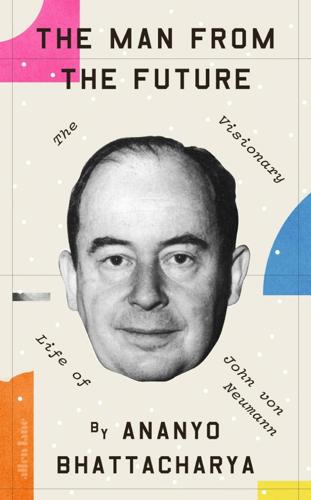
The Man From the Future: The Visionary Life of John Von Neumann
by
Ananyo Bhattacharya
Published 6 Oct 2021
That von Neumann was wary of journalists sensationalizing his work and too busy to popularize the theory himself probably did not help (Schrödinger, by contrast, had the lay reader in mind as his audience). One biologist who did read von Neumann’s words soon after their publication in 1951 was Sydney Brenner. He was later part of Delbrück’s coterie of bacteriophage researchers and worked with Crick and others in the 1960s to crack the genetic code. Brenner says that when he saw the double helix model of DNA in April 1953, everything clicked into place. ‘What von Neumann shows is that you have to have a mechanism not only of copying the machine but of copying the information that specifies the machine,’ he explains. ‘Von Neumann essentially tells you how it’s done … DNA is just one of the implementations of this.’12 Or, as Freeman Dyson put it, ‘So far as we know, the basic design of every microorganism larger than a virus is precisely as von Neumann said it should be.’13 In lectures over the next few years and an unfinished manuscript, von Neumann began to detail his theory about automata – including a vision of what his self-reproducing machines might look like.
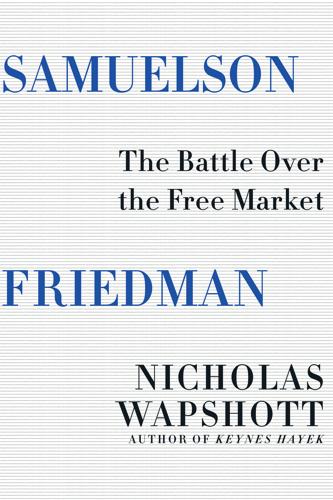
Samuelson Friedman: The Battle Over the Free Market
by
Nicholas Wapshott
Published 2 Aug 2021
Those without scientific training may imagine that Friedman’s approach is more convincing as it tests notions against facts. But the methodology used by Samuelson and Keynes—conjecture followed by mathematical proof—is commonplace throughout the physical and social sciences. Many of the major breakthroughs in scientific thought—such as DNA being configured as a double helix, or the result of splitting of the atom, or the earth circling the sun, or how gravity works—are based upon deduction rather than laboratory work. Validation through experimentation often comes long after a problem has been solved logically. Samuelson was adamant that intuition, not long hours poring over data, was the key to discovery.
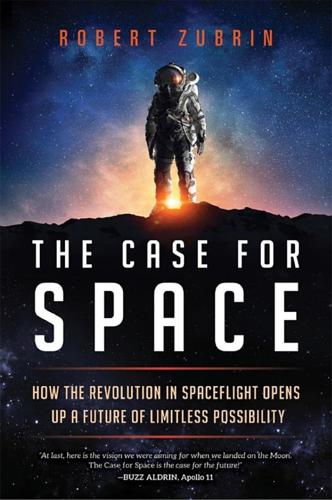
The Case for Space: How the Revolution in Spaceflight Opens Up a Future of Limitless Possibility
by
Robert Zubrin
Published 30 Apr 2019
This idea is questionable because despite hundreds of years of searching by scientists, no free-living organisms simpler than bacteria have ever been discovered on our planet. This is truly remarkable; as simple as bacteria may be compared to more complex organisms, they are certainly not simple in any absolute sense, incorporating as they do, among other things, the entire elegant double-helix scripted language of DNA. Believing that bacteria were the first life-forms to emerge from chemistry is like believing that the iPhone was the first human-invented machine. This notion is clearly not credible. Just as the development of the iPhone had to be preceded by the development of computers, and radio, and telephones, and electricity, and glassware, and metallurgy, and written and spoken language, to name just a few necessary technological predecessors, so the creation of the first bacterium had to be preceded by the evolution of a raft of preceding biological technologies.
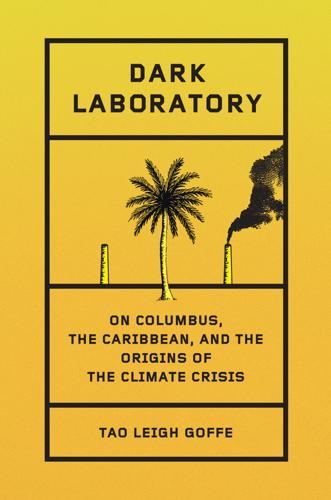
Dark Laboratory: On Columbus, the Caribbean, and the Origins of the Climate Crisis
by
Tao Leigh. Goffe
Published 14 Mar 2025
Cold Spring Harbor Laboratory was the breeding ground for the poisonous thought that would eventually morph into Nazi Germany’s death camps. A locus of contradictions of modern science and pseudoscience, it is also where discoveries about the crystallography of DNA were made by Rosalind Franklin before James Watson and Francis Crick took credit for the double-helix theory. Watson’s later legacy as a eugenicist shows us to heed the empiricism of scientific discovery. Racist thought is never far when it comes to the theorizing of genetics, although the science shows there is no biological basis for “race.” The Americans at Cold Spring Harbor modeled their studies from the eugenics movement that was born in Victorian Britain.
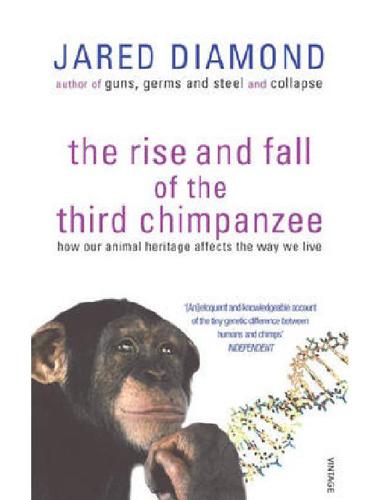
The Rise and Fall of the Third Chimpanzee
by
Jared Diamond
Published 2 Jan 1991
Four things had to be done before molecular clocks could be applied: find the best molecule; find a quick way of measuring changes in its structure; prove that the clock runs steady (that is, that the molecule's structure really does evolve at the same rate among all species that one is studying); and measure what that rate is. Molecular biologists worked out the first two of these problems by around 1970. The best molecule proved to be deoxyribonucleic acid (abbreviated to DNA), the famous substance whose structure James Watson and Francis Crick showed to consist of a double helix, thereby revolutionizing the study of genetics. DNA is made up of two complementary and extremely long chains, each made up of four types of small molecules whose sequence within the chain carries all the genetic information transmitted from parents to offspring. A quick method of measuring changes in DNA structure is to mix the DNA from two species, then to measure by how many degrees of temperature the melting point of the mixed (hybrid) DNA is reduced below the melting point of pure DNA from a single species.

The Red Queen: Sex and the Evolution of Human Nature
by
Matt Ridley
Published 14 Aug 1993
This means that there is an automatic way of copying DNA: by going along the strand of the molecule stitching together another from the complementary letters. The sequence AAGTTC becomes, on the complementary strand, TTCAAG: copy that and you get the original sequence back again. Every gene normally consists of a strand of DNA and its complementary copy closely entwined in the famous double helix. Special enzymes move up and down the strands and where they find a break repair it by reference to the complementary strand. DNA is continually being damaged by sunlight and chemicals. If it were not for the repair enzymes, it would quite quickly become meaningless gobbledegook. But what happens when both strands are damaged at the same place?
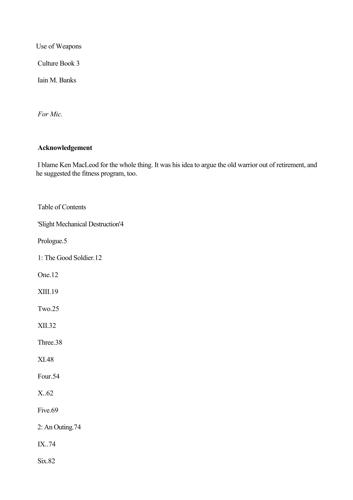
Use of Weapons
by
Iain M. Banks
Published 14 Jan 2011
He turned the glass over in his hands, moving it carefully and smoothly, seemingly fascinated by the roughness of the ground areas and the silky slickness of the unetched parts. He held it up to the sun, his eyes narrowing. The glass sparkled like a hundred tiny rainbows, and minute twists of bubbles in the slender stem glowed golden against the blue sky, spiralling about each other in a fluted double helix. He lowered the glass, slowly, and his gaze fell upon the silent city. He squinted out over the roofs and spires and towers, out over the clumps of trees marking the sparse and dusty parks, and out over the distant serrated line of the city walls to the pale plains and the smoke-blue hills shimmering in the heat haze beyond, beneath a cloudless sky.

Culture and Prosperity: The Truth About Markets - Why Some Nations Are Rich but Most Remain Poor
by
John Kay
Published 24 May 2004
The economic implications of computing are all around us. Relativity not only led to nuclear power but, by redefining modern physics, influenced devices from spaceships to computers. And genetics and biotechnology will transform medicine and nutrition in the next few decades. Relativity, computing, and the double helix are ideas: antibiotics, television, and improved seed varieties are products. Slovenly practices in Alexander Fleming's laboratory led to the discovery that certain molds would kill bacteria. Although practical significance of this discovery seems obvious, it was over a decade before research by Howard Florey and Ernst Chain, sponsored by the Rockefeller Foundation, produced a drug fit for patients. 5 Antibiotics virtually eliminated infectious disease as a cause of death in otherwise healthy adults in rich countries and formed the foundation of the modern pharmaceutical industry
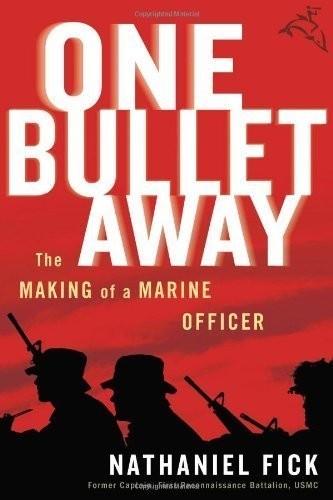
One Bullet Away: The Making of a Marine Officer by Fick, Nathaniel C.(October 3, 2005) Hardcover
by
Nathaniel C. Fick
Published 14 Apr 2006
I climbed slowly over a small berm and stopped. Below me was a fighting hole. Blankets lined it, and a kettle still hung over a fire. Untouched food was neatly dished onto two plates. Footprints in the dust disappeared into the brush. “Christeson, Stafford, get over here.” The two Marines came running and began walking a double helix along the footprints, cutting back and forth like dogs on a scent. But the hole’s occupants were gone. I imagined two guys, probably my age, told to sit in their hole and shoot at the Americans when they came. They would be protecting their village, their mothers and sisters, from the infidels.
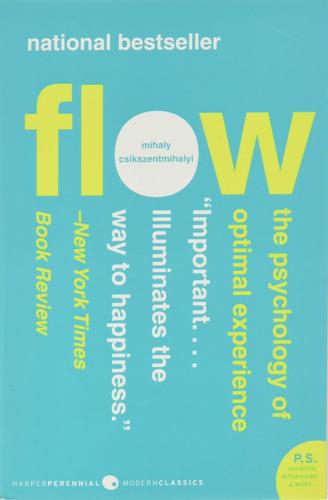
Flow: The Psychology of Optimal Experience
by
Mihaly Csikszentmihalyi
Published 1 Jul 2008
This may indicate that people who enjoy what they are doing will do a good job of it (although, as we know, correlation does not imply causation). A long time ago, Maurice Schlick (1934) pointed out how important enjoyment was in sustaining scientific creativity. In an interesting recent study, B. Eugene Griessman interviewed a potpourri of high achievers ranging from Francis H. C. Crick, the codiscoverer of the double helix, to Hank Aaron, Julie Andrews, and Ted Turner. Fifteen of these celebrities completed a questionnaire in which they rated the importance of thirty-three personal characteristics, such as creativity, competence, and breadth of knowledge, in terms of helping them achieve success. The item most strongly endorsed (for an average of 9.86 on a 10-point scale) was enjoyment of work (Griessman 1987, pp. 294–95).
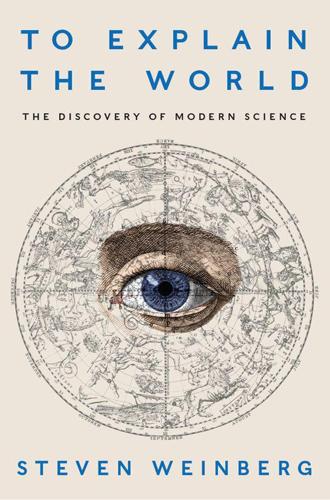
To Explain the World: The Discovery of Modern Science
by
Steven Weinberg
Published 17 Feb 2015
Eventually the discovery of the rules of genetics and of the occurrence of mutations led in the twentieth century to a “neo-Darwinian synthesis” that put the theory of evolution through natural selection on a firmer basis. Finally this theory was grounded on chemistry, and thereby on physics, through the realization that genetic information is carried by the double helix molecules of DNA. So biology joined chemistry in a unified view of nature based on physics. But it is important to acknowledge the limitations of this unification. No one is going to replace the language and methods of biology with a description of living things in terms of individual molecules, let alone quarks and electrons.
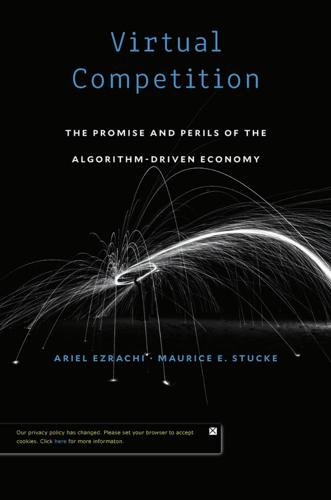
Virtual Competition
by
Ariel Ezrachi
and
Maurice E. Stucke
Published 30 Nov 2016
Stout, Cultivating Conscience: How Good Laws Make Good People (Princeton, NJ: Princeton University Press, 2011), 238–240 (discussing how societal norms of fairness and prosocial behav ior are both common in, and necessary for, a market economy); Thomas J. Horton, “Unraveling the Chicago/ Harvard Antitrust Double Helix: Applying Evolutionary Theory to Guard Competitors and Revive Antitrust Jury Trials,” University of Baltimore Law Review 41 (2012): 615, 653–654 (citing research on how “ ‘fairness evolved as a stable strategy for maintaining social harmony’ in our economic relation- Notes to Pages 123–125 22. 23. 24. 25. 26. 27. 28. 29. 30. 31. 32. 33. 34. 299 ships” and how “[n]eurobiological studies have found that ‘the sense of fairness fundamental to distributive justice’ is rooted in humans’ emotional processing”), quoting Joan Roughgarden, The Genial Gene: Deconstructing Darwinian Selfishness (Berkeley: University of California Press, 2009), 160; Michael Shermer, The Mind of the Market: Compassionate Apes, Competitive Humans, and Other Tales from Evolutionary Economics (New York: Times Books, 2008), 11.
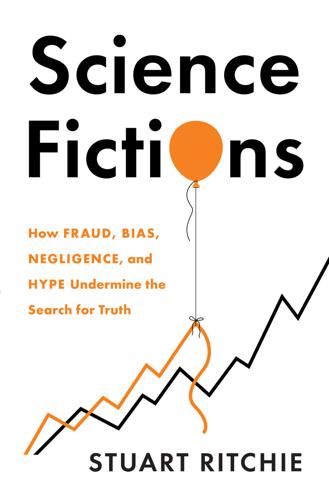
Science Fictions: How Fraud, Bias, Negligence, and Hype Undermine the Search for Truth
by
Stuart Ritchie
Published 20 Jul 2020
Southern, ‘Detection of Specific Sequences among DNA Fragments Separated by Gel Electrophoresis’, Journal of Molecular Biology 98, no. 3 (Nov. 1975): pp. 503–17; https://doi.org/10.1016/S0022-2836(75)80083-0 51. The full process of Southern blotting goes something like this: take a DNA molecule, break apart its double helix into single strands using an enzyme, then force it through a gel with an electric current (a process called electrophoresis), separating out all its fragments. The clever part is that fragments of different size move through the gel at different speeds, so you can get some idea of a protein’s size by its position in the gel after the current is applied for a time.

Braiding Sweetgrass
by
Robin Wall Kimmerer
The Three Sisters offer us a new metaphor for an emerging relationship between indigenous knowledge and Western science, both of which are rooted in the earth. I think of the corn as traditional ecological knowledge, the physical and spiritual framework that can guide the curious bean of science, which twines like a double helix. The squash creates the ethical habitat for coexistence and mutual flourishing. I envision a time when the intellectual monoculture of science will be replaced with a polyculture of complementary knowledges. And so all may be fed. Fran brings out a bowl of whipped cream for the Indian pudding.
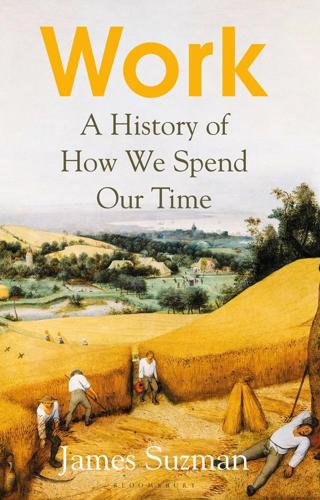
Work: A History of How We Spend Our Time
by
James Suzman
Published 2 Sep 2020
Schrödinger’s description of what he imagined to be the extraordinary information-encoding and instruction-giving capabilities of the atoms and molecules in our cells – DNA and RNA – inspired a generation of scientists to dedicate their careers to unravelling the chemical and physical bases of biology. Among this pioneering group of molecular biologists was Cambridge’s Francis Crick who, along with his partner James Watson, would reveal the distinctive double-helix shape of DNA to the world a decade later. Schrödinger’s wonder for the ability of the ‘incredibly small group of atoms’ that comprise a genome to organise trillions of other atoms into hair, livers, fingers, eyeballs and so on was because these atoms did so in apparent defiance of the second law of thermodynamics.
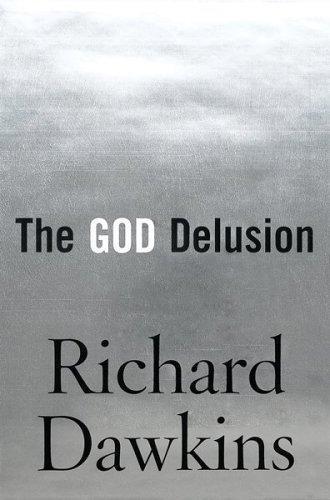
The God Delusion
by
Richard Dawkins
Published 12 Sep 2006
Craig Venter, decoder of the human genome “Passionate religious irrationality too often poses serious obstacles to human betterment. To oppose it effectively, the world needs equally passionate rationalists unafraid to challenge long accepted beliefs. Richard Dawkins so stands out through the cutting intelligence of The God Delusion.” —James D. Watson, co-discoverer of DNA, author of The Double Helix “Should be read by everyone from atheist to monk. If its merciless rationalism doesn’t enrage you at some point, you probably aren’t alive.” —Julian Barnes, author of Arthur and George “A magnificent book, lucid and wise, truly magisterial.” —Ian McEwan, author of Atonement Books by Richard Dawkins THE SELFISH GENE THE EXTENDED PHENOTYPE THE BLIND WATCHMAKER RIVER OUT OF EDEN CLIMBING MOUNT IMPROBABLE UNWEAVING THE RAINBOW A DEVIL’S CHAPLAIN THE ANCESTOR’S TALE THE GOD DELUSION Richard Dawkins THE GOD DELUSION A MARINER BOOK HOUGHTON MIFFLIN COMPANY Boston • New York Copyright © 2006 by Richard Dawkins Preface © 2008 by Richard Dawkins ALL RIGHTS RESERVED First published in Great Britain by Bantam Press, a division of Transworld Publishers, 2006 For information about permission to reproduce selections from this book, write to Permissions, Houghton Mifflin Company, 215 Park Avenue South, New York, New York 10003.
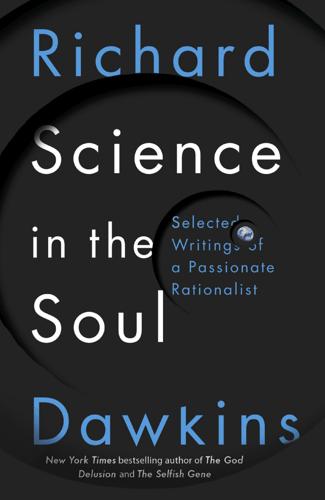
Science in the Soul: Selected Writings of a Passionate Rationalist
by
Richard Dawkins
Published 15 Mar 2017
But when it comes to digital genetics, Fisher and his colleagues of the synthesis didn’t know the half of it. Watson and Crick opened floodgates to what has been, by any standards, a spectacular intellectual revolution – even if Peter Medawar was going too far when he wrote, in his 1968 review of Watson’s The Double Helix, ‘It is simply not worth arguing with anyone so obtuse as not to realise that this complex of discoveries is the greatest achievement of science in the twentieth century.’ My misgiving about this engagingly calculated piece of arrogance is that I’d have a hard time defending it against a rival claim for, say, quantum theory or relativity.
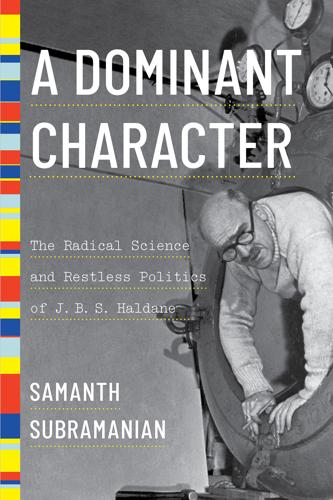
A Dominant Character
by
Samanth Subramanian
Published 27 Apr 2020
The anecdote also appears in Planet of Microbes: The Perils and Potential of Earth’s Essential Life Forms, by Ted Anton, published by the University of Chicago Press in 2017. 129 a spiral of nucleic acids: Haldane used the word spiral in an essay in an anthology volume called The Planet Earth (London: Pergamon Press, 1957)—four years after Crick and Watson discovered the double-helix structure of the DNA molecule. He was being inexact; he ought to have used the word helical to be perfectly accurate. 129 “Whenever you can, count”: The literature often refers to this as Galton’s motto, but it should be said that we can ascribe that fact only to Karl Pearson, who mentioned it in his book The Life, Letters and Labours of Francis Galton, Vol. 2 (Cambridge: Cambridge University Press, 1924), 340.

Nothing Personal: My Secret Life in the Dating App Inferno
by
Nancy Jo Sales
Published 17 May 2021
(Because most porn companies are privately held, it’s impossible to get an accurate estimate. It has been reported that online porn has more monthly visitors than Netflix, Twitter, and Amazon combined, making up around 30 percent of all Internet traffic). It’s hard not to see these two industries as intimately connected, like a double helix of cyber misogyny. With online porn, straight men suddenly had immediate access to images of women performing sex acts, or having sex acts performed on them, and with online dating, they had quicker access to actual women with whom they might perform such acts, in cyberspace or in real life. I’ve interviewed guys who talk about going from one to the other, from porn to dating apps, as if they’re related activities.

Physics of the Future: How Science Will Shape Human Destiny and Our Daily Lives by the Year 2100
by
Michio Kaku
Published 15 Mar 2011
By finding that molecule, he conjectured, one could unravel the secret of life. Physicist Francis Crick, inspired by Schrödinger’s book, teamed up with geneticist James Watson to prove that DNA was this fabled molecule. In 1953, in one of the most important discoveries of all time, Watson and Crick unlocked the structure of DNA, a double helix. When unraveled, a single strand of DNA stretches about six feet long. On it is contained a sequence of 3 billion nucleic acids, called A,T,C,G (adenine, thymine, cytosine, and guanine), that carry the code. By reading the precise sequence of these nucleic acids placed along the DNA molecule, one could read the book of life.

The Food Revolution: How Your Diet Can Help Save Your Life and Our World
by
John Robbins
Published 14 Sep 2010
An irreversible attack on the biosphere is something so unheard of, so unthinkable in previous generations, that I only wish that mine had not been guilty of it." -Erwin Chargaff, Professor Emeritus of Biochemistry, Columbia University, and discoverer of "Chargaff's Rules," the scientific foundation for the discovery of the DNA double helix' John Fagan is a molecular biologist who for more than twenty years was funded by the National Institutes of Health to conduct genetic engineering research. But in 1994, he returned more than $600,000 to the NIH and withdrew his proposals for another $1.25 million. Then he launched a global campaign to alert the public about the hazards of genetic engineering.
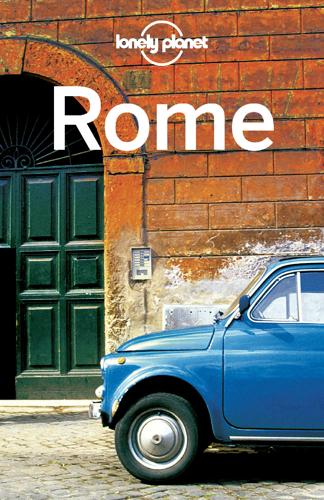
Rome
by
Lonely Planet
Spiral Staircase One of the most photographed works in the Vatican Museums’ – and yes, you can use cameras in the museum, but no flashes and no photos in the Sistine Chapel – is the spiral staircase that you take to leave the museums. The work of the Italian architect Giuseppe Moma, it was made in 1932 and served as the museums’ main entrance until 2000. In fact, it is actually two staircases incorporated into a single double-helix structure, just like the human DNA strand. Images from Raphael’s masterwork (The School of Athens) turn up in the most unusual of places. The Guns N’ Roses albums and both feature a detail from the painting – a boy crouching over to write in a notebook balanced on his raised leg. Stanze di Raffaello Even in the shadow of the Sistine Chapel, the Stanze di Raffaello (Raphael Rooms) stand out.
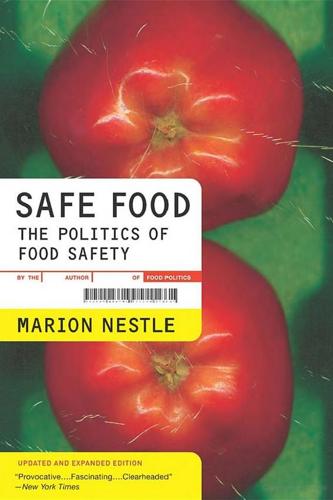
Safe Food: The Politics of Food Safety
by
Marion Nestle
Published 1 Jan 2010
• Proteins are composed of various combinations of the 20 different amino acids linked in a specific order defined by the gene DNA sequence. • Proteins do the work of cells, muscles, and other organs as structural components, signals, or enzymes. • Enzymes catalyze biochemical reactions in the body. • The structure of DNA is helical; its two strands are twisted around each other in a double helix. • Proteins differ from one another in structure; they fold into specific three-dimensional shapes that depend on the sequence of their amino acids (and other components that may be introduced during or after protein synthesis). • The structure of a protein determines its function. These biological features operate in the same way in most organisms.

Algorithms to Live By: The Computer Science of Human Decisions
by
Brian Christian
and
Tom Griffiths
Published 4 Apr 2016
As such, it provides an invaluable tool for both predicting and shaping economic policy, as well as social policy in general. As Nobel laureate economist Roger Myerson puts it, the Nash equilibrium “has had a fundamental and pervasive impact in economics and the social sciences which is comparable to that of the discovery of the DNA double helix in the biological sciences.” Computer science, however, has complicated this story. Put broadly, the object of study in mathematics is truth; the object of study in computer science is complexity. As we’ve seen, it’s not enough for a problem to have a solution if that problem is intractable. In a game-theory context, knowing that an equilibrium exists doesn’t actually tell us what it is—or how to get there.

Them And Us: Politics, Greed And Inequality - Why We Need A Fair Society
by
Will Hutton
Published 30 Sep 2010
Moreover, an Italian immigrant called Antonio Meucci had declared his invention of a ‘voice telegraphy device’ fully five years earlier, but he had lacked the $10 that was required to register his work. So the telephone would surely have arrived with or without Bell, because the sum of intelligence in the mid-1870s could clearly deliver it. The same could be said of the theory of natural selection, the discovery of DNA’s double helix and even the theory of relativity. Most of the arguments over patents take place because two inventors arrive independently at the same conclusion; and this happens because they both have access to the same stock of knowledge. Obviously, entrepreneurship remains important. Each individual innovator will face specific uncertainties in commercialising his or her innovative advance.
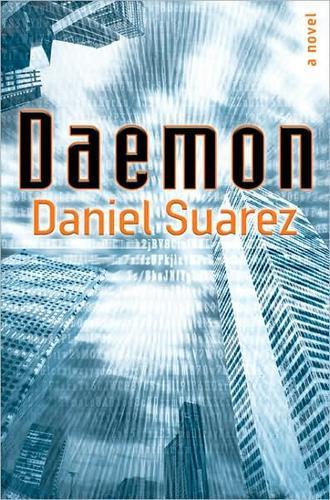
Daemon
by
Daniel Suarez
Published 1 Dec 2006
It chemically castrates the crab and becomes its new brain—controlling it like a zombie.” The screen then showed an image of a Sacculina-infested crab, with the bulging sack of the parasite filling its abdomen. “It compels the crab to raise the parasite’s young. It enslaves it.” The screen changed to a close-up computer animation. It was a double helix of DNA, with each set of genes showing clearly as rungs on the genetic ladder. The perspective moved along the length of the helix. “And so have thousands of parasites done with us. After tens of thousands of years, a parasite becomes so much a part of us that they evolve into sections of our DNA.”

Fancy Bear Goes Phishing: The Dark History of the Information Age, in Five Extraordinary Hacks
by
Scott J. Shapiro
During gene expression—the construction phase—messenger RNA transcribes DNA segments, and ribosomes assemble amino acid chains from messenger RNA templates to make proteins. Cells also possess copy machines for their internal code set out in the “DNA tape.” During DNA replication—the copying phase—proteins unzip the double helix and a special enzyme known as DNA polymerase builds new DNA helices from each strand. In a universal constructor, therefore, the internal blueprint serves two different functions. First, the blueprint functions as a set of instructions. When the UC reads the tape, it executes the operations written on it.

Hope Dies Last: Visionary People Across the World, Fighting to Find Us a Future
by
Alan Weisman
Published 21 Apr 2025
But—a big but—we’re now so distracted by our planet’s uncorked climate blowing away our rooftops, firebombing our forests, mauling our coasts, and scorching our crops that, too often, we forget that one of the biggest phase shifts in Earth’s history, a global holocaust against life itself, is also underway. Like two vipers coiled in a deadly double-helix, the unbridled climate and mass extinction are “one indivisible crisis—a global health emergency,” as the world’s 300 top medical journals wrote en masse to the UN in 2023. Meaning: A third of humanity’s food supply doomed, should pollinators succumb. Protein famines after 2°C, when virtually all corals die along with fish and shellfish who depend on their reefs.

Scale: The Universal Laws of Growth, Innovation, Sustainability, and the Pace of Life in Organisms, Cities, Economies, and Companies
by
Geoffrey West
Published 15 May 2017
Thus in 1947 was born one of the most successful enterprises in all of science, the Medical Research Council Unit (MRCU) within the famed Cavendish Laboratory at Cambridge, whose director was Lawrence Bragg. While under Perutz’s guidance the MRCU produced in just a few short years no fewer than nine Nobel prizes, one of which was the famous discovery of the double-helix structure of DNA by James Watson and Francis Crick. What was the secret to Perutz’s extraordinary success? Is there some magic formula he had discovered for optimizing how research should be carried out? If so, how could we exploit it to ensure the future success of the Santa Fe Institute?

2312
by
Kim Stanley Robinson
Published 22 May 2012
“Division of labor” in the proteins and what they accomplish is one way to describe the proliferation of replicating forms, but also, it’s a richer brew; it tastes better; there are micro-tastes within the taste. Your RNA will turn amino acids into particular flavors. (The technical term among biologists is “translation.”) Finally some of your RNA will melt together into strands of DNA, a more stable form because of its double helix. Then DNA will take over the role of protein expression, although by way of the creation of messenger RNA. (That would be “transcription.”) Information at that point will move from DNA to RNA to proteins, and the now living cell will reproduce itself, divide up functions in ever-more-versatile larger organisms, and so on.
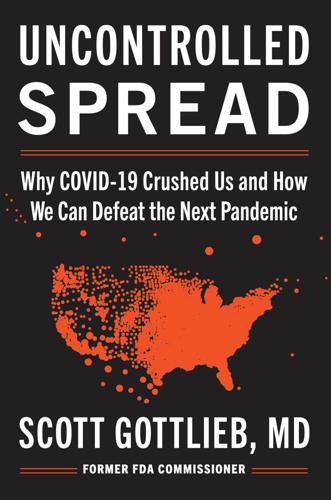
Uncontrolled Spread: Why COVID-19 Crushed Us and How We Can Defeat the Next Pandemic
by
Scott Gottlieb
Published 20 Sep 2021
This is how PCR is used to detect the presence of a particular virus and differentiate SARS-CoV-2 from more common coronaviruses. The technology can also determine how much of the virus is contained in a particular specimen, by quantifying the amount of RNA in a sample. The key ingredient is heat. Throughout the process, RNA from the target virus is converted to cDNA (a single-stranded version of the double-helix DNA molecule), which is repeatedly warmed and cooled. With the help of special reagents, this thermal cycling triggers a chemical reaction that allows the primers to bind to the target stretch of cDNA and copy it. With each heating and cooling cycle, the number of copies of cDNA can be doubled.

From eternity to here: the quest for the ultimate theory of time
by
Sean M. Carroll
Published 15 Jan 2010
Perhaps the most remarkable thing about the book is Schrödinger’s deduction that the stability of genetic information over time is best explained by positing the existence of some sort of “aperiodic crystal” that stored the information in its chemical structure. This insight helped inspire Francis Crick to leave physics in favor of molecular biology, eventually leading to his discovery with James Watson of the double-helix structure of DNA.157 But Schrödinger also mused on how to define “life.” He made a specific proposal in that direction, which comes across as somewhat casual and offhand, and perhaps hasn’t been taken as seriously as it might have been: What is the characteristic feature of life? When is a piece of matter said to be alive?
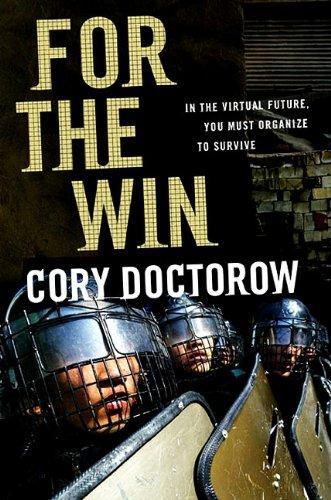
For the Win
by
Cory Doctorow
Published 11 May 2010
Tom Levine was dressed in a stern suit with narrow lapels and a tie pierced with some kind of frat pin. He wasn’t much older than Death, but he made Death feel like a little kid. “I need to talk to you about your Internet activity,” he said, sitting down beside him. He’d brought along a salt-water taffy assortment bought from the roadside, cut into double-helix molecules and other odd biological forms—an amoeba, a skeleton. “OK?” Death said. They’d switched him to something new for the pain that day, and given him a rocker-switch he could use to drizzle it into his IV when it got bad. He’d hit it just before the lawyer came to see him and now he couldn’t concentrate much.
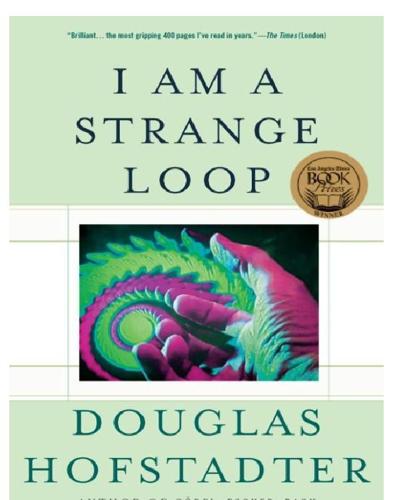
I Am a Strange Loop
by
Douglas R. Hofstadter
Published 21 Feb 2011
If I did, I guess life would be very uninteresting. SL #642: I should think so! SL #641: When we do look down at our fine-grained substrates through scientific experiments, we find small miracles just as Gödelian as is “I”. SL #642: Ah, yes, to be sure — little microgödelinos! But… such as? SL #641: I mean the self-reproduction of the double helix of DNA. The mechanism behind it all involves just the same abstract ideas as are implicated in Gödel’s type of self-reference. This is what John von Neumann unwittingly revealed when he designed a self-reproducing machine in the early 1950’s, and it had exactly the same abstract structure as Gödel’s self-referential trick did.
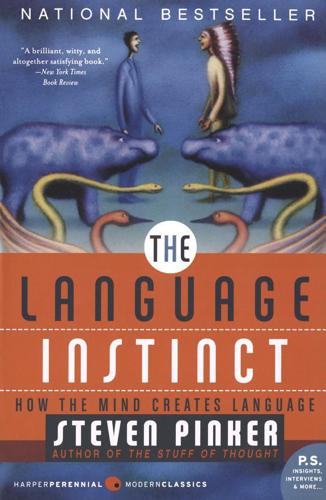
The Language Instinct: How the Mind Creates Language
by
Steven Pinker
Published 1 Jan 1994
James Clerk Maxwell formalized the concepts of electromagnetic fields in a set of mathematical equations and is considered the prime example of an abstract theoretician, but he set down the equations only after mentally playing with elaborate imaginary models of sheets and fluids. Nikola Tesla’s idea for the electrical motor and generator, Friedrich Kekulé’s discovery of the benzene ring that kicked off modern organic chemistry, Ernest Lawrence’s conception of the cyclotron, James Watson and Francis Crick’s discovery of the DNA double helix—all came to them in images. The most famous self-described visual thinker is Albert Einstein, who arrived at some of his insights by imagining himself riding a beam of light and looking back at a clock, or dropping a coin while standing in a plummeting elevator. He wrote: The psychical entities which seem to serve as elements in thought are certain signs and more or less clear images which can be “voluntarily” reproduced and combined….
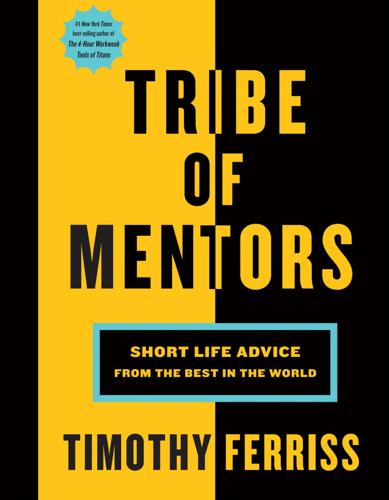
Tribe of Mentors: Short Life Advice From the Best in the World
by
Timothy Ferriss
Published 14 Jun 2017
He writes a weekly column in The Times (London) and writes regularly for The Wall Street Journal. As Viscount Ridley, he was elected to England’s House of Lords in February 2013. * * * What is the book (or books) you’ve given most as a gift, and why? Or what are one to three books that have greatly influenced your life? Two books that have greatly influenced my life are The Double Helix by James D. Watson and The Selfish Gene by Richard Dawkins. What fascinates me about these books is how they revolutionized the telling of scientific stories while themselves breaking new scientific ground in the elucidation of the secret of life. Read these two books and you will get a great answer to a question that has baffled mankind for millions of years: What is life?
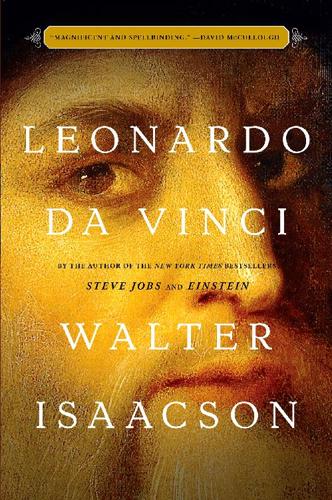
Leonardo Da Vinci
by
Walter Isaacson
Published 16 Oct 2017
He looked for ways to prevent the momentum of an object from draining away, and he studied ways that a system could create or replenish its own impetus. He considered many mechanisms: wheels with hammers on hinges that would swing out when their part of the wheel was heading down, ways to hang weights on wheels that would keep them turning, spiral screws that form a double helix, and curved compartments on a wheel with balls that roll to the lowest point when they are heading downward.11 He was especially intrigued by the possibility that water devices might be a way to achieve perpetual motion. One such attempt (fig. 55) envisions the use of moving water to turn a coiled tube known as an Archimedes screw, which would carry water upward and then continue turning the screw as it flows downward.
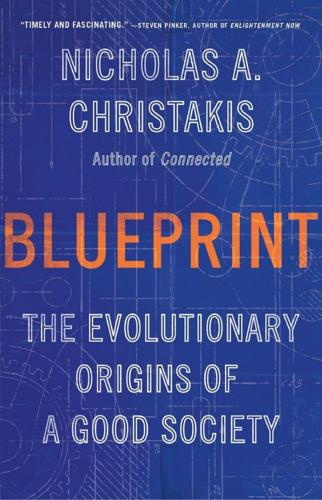
Blueprint: The Evolutionary Origins of a Good Society
by
Nicholas A. Christakis
Published 26 Mar 2019
Life became longer, richer, freer, and more peaceful.74 But people do not have to rely solely on such recent historical developments to make the world better. More ancient and more powerful forces are at work, propelling a good society. Humans have always had both competitive and cooperative impulses, both violent and beneficent tendencies. Like the two strands of the double helix of our DNA, these conflicting impulses are intertwined. We are primed for conflict and hatred but also for love, friendship, and cooperation. If anything, modern societies are just a patina of civilization on top of this evolutionary blueprint. There is another reason to step off the plateau and look at mountains rather than hills.
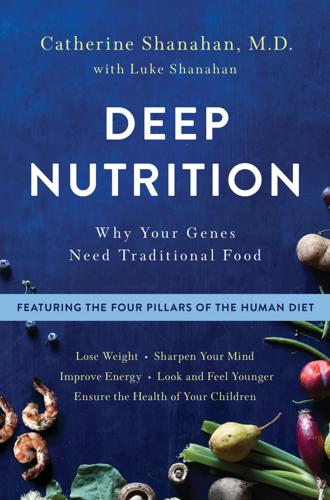
Deep Nutrition: Why Your Genes Need Traditional Food
by
Catherine Shanahan M. D.
Published 2 Jan 2017
Biologists had long assumed that letter substitution was the only way to generate such physiologic change. Epigenetics has taught us that more often, the reason different individuals develop different physiology stems not from permanent letter substitutions but from temporary markers—or epigenetic tags—that attach themselves to the double helix or other nuclear material and change how genes are expressed. Some of these markers are in place at birth, but throughout a person’s life, many of them detach, while others accumulate. Researchers needed to know what this tagging meant. Was it just a matter of DNA aging, or was something else—something more exciting—going on?

Future Crimes: Everything Is Connected, Everyone Is Vulnerable and What We Can Do About It
by
Marc Goodman
Published 24 Feb 2015
Krieger, “Biological Computer Created at Stanford,” San Jose Mercury News, March 29, 2013; Tim Requarth and Greg Wayne, “Tiny Biocomputers Move Closer to Reality,” Scientific American, Nov. 2, 2011; Adam Baer, “Why Living Cells Are the Future of Data Processing,” Popular Science, Nov. 5, 2012. 42 The emerging field: Clay Dillow, “Bio-storage Scheme Turns E. coli Bacteria into Hard Drives,” Popular Science, Jan. 10, 2011. 43 The legendary geneticist: Wyss Institute, “Writing the Book in DNA,” Aug. 16, 2012, http://wyss.harvard.edu/viewpressrelease/93/. 44 Not only do such storage techniques: Ibid. 45 Indeed, a whole host: Chiropractic Resource Organization, “NIH Heads Foresee the Future,” http://www.chiro.org/; Helen Thomson, “Deaf People Get Gene Tweak to Restore Natural Hearing,” New Scientist, April 23, 2014. 46 The died-out mammoth: George M. Church, Regenesis: How Synthetic Biology Will Reinvent Nature and Ourselves (New York: Basic Books, 2012); J. Craig Venter, Life at the Speed of Light: From the Double Helix to the Dawn of Digital Life (New York: Viking Adult, 2013). 47 In another example: Kim-Mai Cutler, “Glowing Plant Is One of Y Combinator’s Very First Biotech Startups,” TechCrunch, Aug. 11, 2014. 48 Her estate eventually: Rebecca Skloot, The Immortal Life of Henrietta Lacks (New York: Broadway Books, 2011); Moore v.

A Fiery Peace in a Cold War: Bernard Schriever and the Ultimate Weapon
by
Neil Sheehan
Published 21 Sep 2009
After nine years at Memorial Sloan-Kettering, the cancer center in New York, he gained sufficient recognition in the highly specialized field of X-ray microanalysis, a technique to detect and measure concentrations of chemicals in human tissue, that he was able to seek and receive an invitation to spend the academic year of 1962–63 at the Cavendish Laboratory at Cambridge University in England, which had continued to be a home of genius. (Most recently, James Watson and Francis Crick had won a Nobel for creating their “double helix” model, the first accurate rendition of a DNA molecule, at the Cavendish in 1953.) The one year turned into twenty-two as Hall and his wife, Joan (she was as intensely left-wing as he was and he had told her everything), and their three daughters settled in at Cambridge and he won international distinction for his work, retiring in 1984 after his research had played itself out.
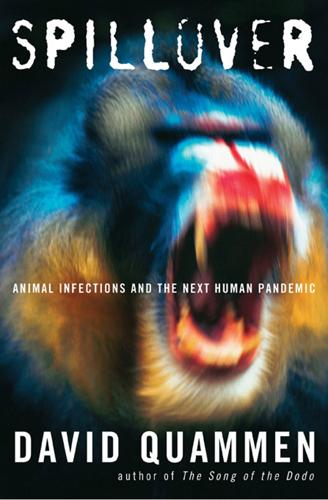
Spillover: Animal Infections and the Next Human Pandemic
by
David Quammen
Published 30 Sep 2012
Others, including filoviruses, retroviruses (most notoriously, HIV-1), coronaviruses (SARS-CoV), and the families encompassing measles, mumps, Hendra, Nipah, yellow fever, dengue, West Nile, rabies, Machupo, Junin, Lassa, chikungunya, all the hantaviruses, all the influenzas, and the common cold viruses, store their genetic information in the form of RNA. The different attributes of DNA and RNA account for one of the most crucial differences among viruses: rate of mutation. DNA is a double-stranded molecule, the famed double helix, and because its two strands fit together by way of those very specific relationships between pairs of nucleotide bases (adenine linking only with thymine, cytosine only with guanine), it generally repairs mistakes in the placement of bases as it replicates itself. This repair work is performed by DNA polymerase, the enzyme that helps catalyze construction of new DNA from single strands.

Enemies and Neighbours: Arabs and Jews in Palestine and Israel, 1917-2017
by
Ian Black
Published 2 Nov 2017
Rosenfeld, Maya, Confronting the Occupation: Work, Education, and Political Activism of Palestinian Families in a Refugee Camp. Stanford University Press, 2004. Ross, Dennis, The Missing Peace. Farrar, Straus & Giroux, 2005. Rotbard, Sharon, White City, Black City: Architecture and War in Tel Aviv and Jaffa. Pluto Press, 2005. Rotberg, Robert I. (ed.), Israeli and Palestinian Narratives of Conflict: History’s Double Helix. Indiana University Press, 2006. Rouhana, Nadim N. and Areej Sabbagh-Khoury (eds.), The Palestinians in Israel: Readings in History, Politics and Society. Mada al-Carmel–Arab Centre for Applied Social Research, 2011. Roy, Sara, Failing Peace: Gaza and the Palestinian-Israeli Conflict. Pluto Press, 2007.

Frommer's London 2009
by
Darwin Porter
and
Danforth Prince
Published 25 Aug 2008
The Maypole, Portugal Place at Park Street (& 01223/352999), is the local hangout for actors from the nearby ADC Theatre. Though known for cocktails, you can still get a Tetley’s 6X or Castle Eden. The Eagle, Benet Street off King’s Parade (& 01223/505020), will be forever famous as the place where Nobel Laureates Watson and Crick first announced their discovery of the DNA double helix. Real ales include Icebreaker and local brewery Greene King’s Abbott, so make your order and raise a pint to the wonders of modern science. To meet up with current Cambridge students, join the locals at the Anchor, Silver Street (& 01223/353554), or Tap and Spiel (The Mill), 14 Mill Lane, off Silver Street Bridge (& 01223/357026), for a pint of Greene King’s IPA or Abbott.

Lonely Planet London City Guide
by
Tom Masters
,
Steve Fallon
and
Vesna Maric
Published 31 Jan 2010
Return to beginning of chapter SLEEPING Most places have a minimum two-night stay on weekends. You should book ahead for weekends in summer and during the Brighton Festival in May and Brighton Pride in late July/early August. Hotel du Vin ( 718588; www.hotelduvin.com; Ship St; d/ste from £170/275; ) Located in a former wine merchant’s home, this award-winning hotel has an ornate double helix staircase, a wonderful Tudor entrance, an excellent wine bar and 49 elegant rooms named after wine producers. Drakes ( 696394; www.drakesofbrighton.com; 44 Marine Pde; s/d from £100/130; ) Classy atmosphere, fantastic sea views from many of its 20 rooms, obliging staff, and beautiful ‘feature rooms’ (£155 to £325) with clawfoot baths in front of a massive bay window overlooking the sea (try room 104).

The Rise of the Network Society
by
Manuel Castells
Published 31 Aug 1996
I think we can say, without exaggeration, that the information technology revolution, as a revolution, was born in the 1970s, particularly if we include in it the parallel emergence and diffusion of genetic engineering around the same dates and places, a development that deserves, to say the least, a few lines of attention. Technologies of life Although biotechnology can be traced all the way back to a 6000 BC Babylonian tablet on brewing, and the revolution in microbiology to the scientific discovery of the basic structure of life, DNA’s double helix, by Francis Crick and James Watson at Cambridge University in 1953, it was only in the early 1970s that gene splicing and recombinant DNA, the technological foundation of genetic engineering, made possible the application of cumulative knowledge. Stanford’s Stanley Cohen and University of California at San Francisco’s Herbert Boyer are generally credited with the discovery of gene-cloning procedures in 1973, although their work was based on research by Stanford’s Nobel Prize winner Paul Berg.
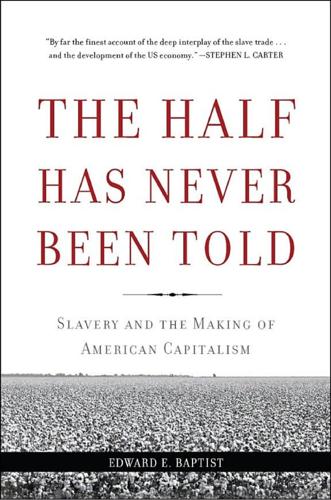
The Half Has Never Been Told: Slavery and the Making of American Capitalism
by
Edward E. Baptist
Published 24 Oct 2016
Her turn now, she drops a seed, rakes damp black dirt over it with her naked left heel, presses the ball of her foot down to settle the seed in the dirt. She moves a few inches up the row.2 Underneath, all is dark. The layers of muck and humus have already quickened with their own yearly cycle. They hum the rhythms of their local history of biological alliances. The outsider seed sits quiet as a tick. In its hull, double helixes lie in suspended animation. The next day, the rain falls. Water molecules leach through the seed coat. The helixes awaken. They twist, shudder, break apart, draw more molecules to their open spaces, building their own mirrors. From them march streams of chemical messengers; orders that compel whole cells to stretch and split into twins.
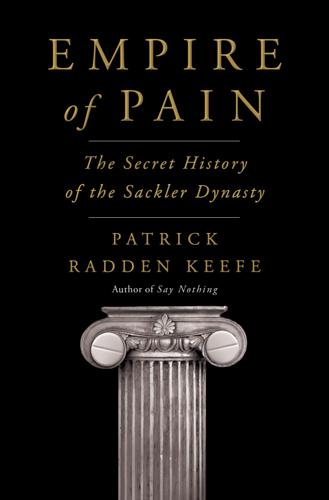
Empire of Pain: The Secret History of the Sackler Dynasty
by
Patrick Radden Keefe
Published 12 Apr 2021
Bayer proceeded to sell the drug in little boxes with a lion printed on the label, and suggested that differences in the molecular structure of heroin meant that it did not possess the dangerous addictive qualities of morphine. It was an appealing proposition: throughout human history, opium’s upsides and its downsides had appeared to be inextricable, like the twined strands of a double helix. But now, Bayer claimed, they had been decoupled, by science, and with heroin, humans could enjoy all the therapeutic benefits of the opium poppy, with none of the drawbacks. In fact, some people advocated using heroin as a cure for morphine addiction. None of this had any basis in fact. In reality, heroin was roughly six times more powerful than morphine and just as habit forming.
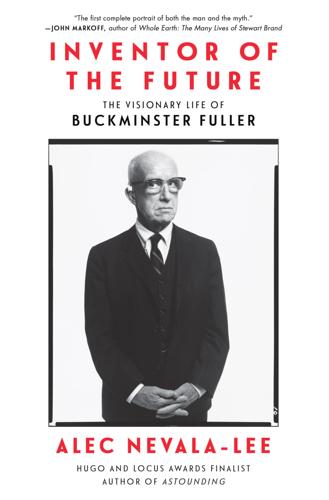
Inventor of the Future: The Visionary Life of Buckminster Fuller
by
Alec Nevala-Lee
Published 1 Aug 2022
Nature preferred to operate at 60 degrees, rather than right angles, and the tetrahedron served as a universal building block. It combined maximum surface area with minimal volume, optimizing its strength, and a series of tetrahedra could be joined in a spiral, which Fuller associated with the double helix. On a more abstract level, Fuller saw the tetrahedron as “the minimum thinkable set.” He related it to the number of possible relationships between a given number of objects, such as “the number of telephone lines necessary to interequip various numbers of individuals so that any two individuals will always have their unique private telephone line.”
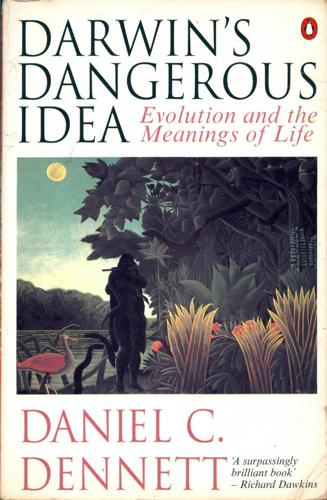
Darwin's Dangerous Idea: Evolution and the Meanings of Life
by
Daniel C. Dennett
Published 15 Jan 1995
We may not yet know exactly how to take all these ideas seriously, but thanks to Darwin's secure beachhead in biology, we know that we can and must. {151} It is small wonder that Darwin didn't hit upon a suitable mechanism of heredity. What do you suppose his attitude would have been to the speculation that within the nucleus of each of the cells in his body there was a copy of a set of instructions, written on huge macromolecules, in the form of double helixes tightly kinked into snarls to form a set of forty-six chromosomes? The DNA in your body, unsnarled and linked, would stretch to the sun and back several — ten or a hundred — times. Of course, Darwin is the man who painstakingly uncovered a host of jaw-dropping complexities in the lives and bodies of barnacles, orchids, and earthworms, and described them with obvious relish.
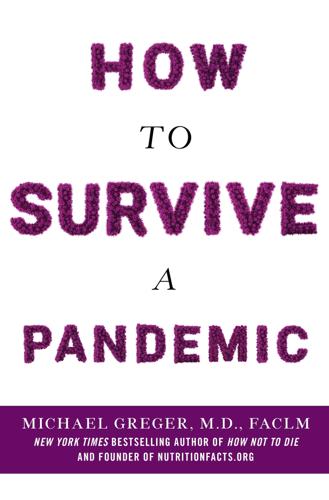
How to Survive a Pandemic
by
Michael Greger, M.D., FACLM
Viruses, however, have neither cell walls nor fungal compounds, and, therefore, these antibiotics and antifungals don’t work against viruses. There’s not much to a virus to single out and attack. There’s the viral RNA or DNA, of course, but that’s the same genetic material as in our cells. Human DNA is double-stranded (the famous spiral “double helix”), whereas human RNA is predominantly single-stranded.329 To copy its RNA genome to repackage into new viruses, the influenza virus carries along an enzyme that travels the length of the viral RNA to make a duplicate strand. For a split second, there are two intertwined RNA strands. That’s the body’s signal that something is awry.

Enlightenment Now: The Case for Reason, Science, Humanism, and Progress
by
Steven Pinker
Published 13 Feb 2018
6 He has tried to undermine federal support of basic research by proposing legislation that would require the NSF to fund only studies that promote “the national interest” such as defense and the economy.7 Science, of course, transcends national boundaries (as Chekhov noted, “There is no national science just as there is no national multiplication table”), and its ability to promote anyone’s interests comes from its foundational understanding of reality.8 The Global Positioning System, for example, uses the theory of relativity. Cancer therapies depend on the discovery of the double helix. Artificial intelligence adapts neural and semantic networks from the brain and cognitive sciences. But chapter 21 prepared us for the fact that politicized repression of science comes from the left as well. It was the left that stoked panics about overpopulation, nuclear power, and genetically modified organisms.
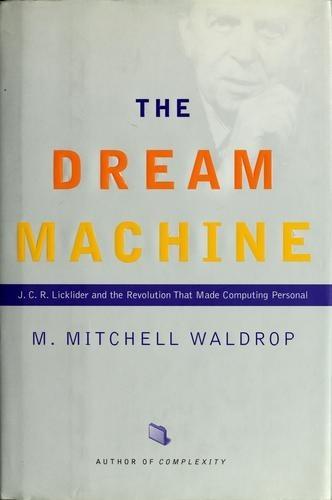
The Dream Machine: J.C.R. Licklider and the Revolution That Made Computing Personal
by
M. Mitchell Waldrop
Published 14 Apr 2001
As a scientific prediction, that same analysis was breathtaking: in 1953, when James Watson and Francis Crick finally determined the molecular structure of DNA, it would fulfill von Neumann's two requirements exactly. As a genetic program, DNA encodes the instructions for making all the enzymes and struc- tural proteins that the cell needs in order to function. And as a repository of ge- netic data, the DNA double helix unwinds and makes a copy of itself every time the cell divides in two. Nature thus built the dual role of the genetic material into the structure of the DNA molecule itself. In any case, John von Neumann was a very busy man indeed in the late 1940s-to the point where attendees at the Macy meetings began to talk of his "meteoric appearances," when he would show up for no more than half a day, or even just for lunch.

How the Mind Works
by
Steven Pinker
Published 1 Jan 1997
Many creative people claim to “see” the solution to a problem in an image. Faraday and Maxwell visualized electromagnetic fields as tiny tubes filled with fluid. Kekule saw the benzene ring in a reverie of snakes biting their tails. Watson and Crick mentally rotated models of what was to become the double helix. Einstein imagined what it would be like to ride on a beam of light or drop a penny in a plummeting elevator. He once wrote, “My particular ability does not lie in mathematical calculation, but rather in visualizing effects, possibilities, and consequences.” Painters and sculptors try out ideas in their minds, and even novelists visualize scenes and plots in their mind’s eye before putting pen to paper.

Palo Alto: A History of California, Capitalism, and the World
by
Malcolm Harris
Published 14 Feb 2023
One even tried to study her maid’s efficiency by strapping a pedometer to her leg.29 Equal in education but separate in function, the women of the bionomic elite diffused men’s scientific work throughout the western WASP class. Jane Stanford’s rule of 500 held until the 1930s, when the gender ratio began exceeding 5–1. The board of trustees decided to allow a 60–40 ratio, maintaining coed scarcity at a sustainable level. And then there were the babies. Women hold up half the double helix, and the quality the university could attract to Palo Alto directly determined the quality of the next generation. Lewis Terman hired a number of women graduate students in psychology to assist him with genius tests, and he mentored them within the profession. In 1928, when Frederick Terman was successful but still a bachelor nearing thirty, Lewis set him up with Sibyl Walcott, one of his grad students.
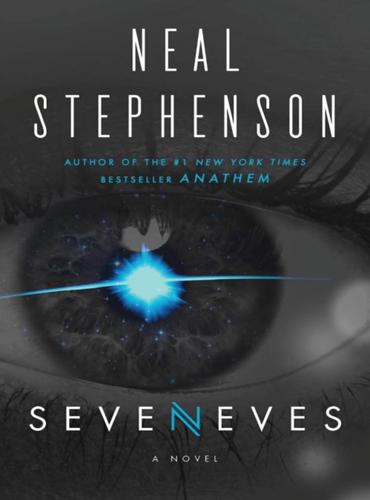
Seveneves
by
Neal Stephenson
Published 19 May 2015
“Moving my eyeballs oh so slightly, I see at least three other morphologies in your bestiary.” “The Siwi is adapted from a robot that was made for exploring collapsed buildings. Which in turn was obviously adapted from a snake.” “A sidewinder, presumably, given the name.” “Yeah. The electromagnets are arranged around the Siwi’s body in a double helix, so by turning some on and others off, it can sort of roll diagonally along the surface with minimal power usage.” “The thing that looks like a Buckyball seems to be using a similar trick.” “You nailed the name. We do in fact call those Buckies. Technically speaking, it’s a thing called a—” “Tensegrity.”

Behave: The Biology of Humans at Our Best and Worst
by
Robert M. Sapolsky
Published 1 May 2017
This sure helps in circumstances where copies of the protein must wind up in each of the thousands of a single neuron’s axon terminals.) This produces what is termed the “central dogma” of life, a concept first framed in the early 1960s by Francis Crick, half of the renowned Watson and Crick, who discovered the “double helix” structure of DNA (with more than a little purloined help from Rosalind Franklin, but that’s another story). Crick’s central dogma holds that the nucleotide sequence of DNA that composes a gene determines how a unique stretch of RNA is put together . . . which determines how a unique stretch of amino acids are put together . . . which determines the shape(s) of the resulting protein . . . which determines that protein’s function.
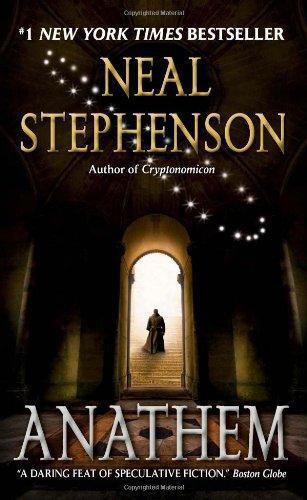
Anathem
by
Neal Stephenson
Published 25 Aug 2009
Its stones were graven and inlaid with curves and symbols of cosmography. Around its perimeter, megaliths stood to mark where certain cosmic bodies rose and set at different times of the year. Inside of that ring, several freestanding structures had been erected. The tallest of these, right in the center, was the Pinnacle, wrapped in a double helix of external stairs. Its top was the highest part of the Mynster. The most voluminous structures up here were the twin domes of the big telescope. Dotted around from place to place were a few much smaller telescope-domes, a windowless laboratory where we worked with the photomnemonic tablets, and a heated chapel where Orolo liked to work and to lecture his fids.
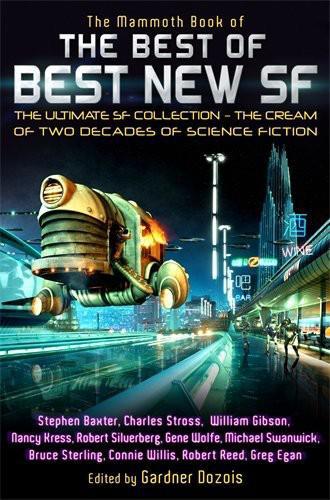
The Best of Best New SF
by
Gardner R. Dozois
Published 1 Jan 2005
After the funeral, I sat in the dark in my father’s study, in his maroon leather chair and at his teak desk. Both felt oversize. All the lights were off. Outside it rained; I heard the steady beat of water on the window, and the wind. The dark room was cold. In my palm I held one of my father’s research awards, a small abstract sculpture of a double helix, done by Harold Landau himself. It was very heavy. I couldn’t think what Landau had used, to make it so heavy. I couldn’t think, with all the noise from the rain. My father was dead, and I would never bear a child. Devrie came into the room, leaving the lights off but bringing with her an incandescent rectangle from the doorway.
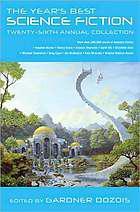
The Year's Best Science Fiction: Twenty-Sixth Annual Collection
by
Gardner Dozois
Published 23 Jun 2009
The Adarean shifted, turned his head toward the others, who leaned together, without speaking. A moment later, he said, “We want to honor the spirit of the twentieth century.” That made less sense to Max than anything. Yes, his people wanted to hold time back to the twentieth century, but the Adareans had advanced far beyond that. “What? You mean like the discovery of the double helix, the first genome projects?” “More than that,” the Adarean said. “It’s the great century of political change, of people like Mahatma Gandhi and Martin Luther King. For the first time in history, people could peacefully oppose their governments; for the first time, without the use of violence, they could force their governments to change.
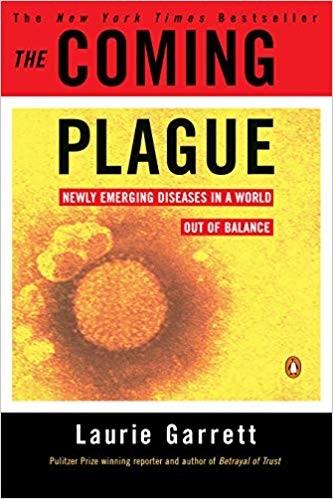
The Coming Plague: Newly Emerging Diseases in a World Out of Balance
by
Laurie Garrett
Published 31 Oct 1994
.: National Academy Press, 1992). 11 Further information can be found in: J. D. Watson et al., Molecular Biology of the Gene (4th ed.; Menlo Park. CA: The Benjamin/Cummings Publishing Company, 1987); P. Berg and M. Singer, Dealing with Genes: The Language of Heredity (Mill Valley, CA: University Science Books, 1992); and J. D. Watson, The Double Helix (New York: New American Library, 1969). 12 F. J. Fenner et al., The Biology of Animal Viruses (New York: Academic Press, 1968). 13 For excellent renditions of the history of antibiotics and controversies concerning the rise of bacterial resistance to the chemicals, the reader is referred to two highly readable books: M.
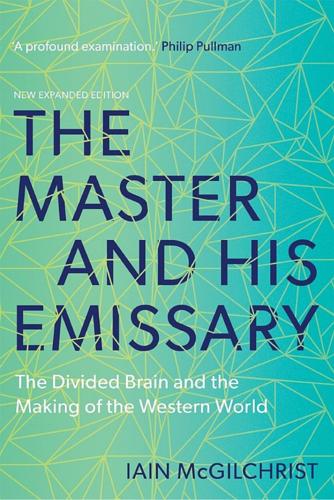
The Master and His Emissary: The Divided Brain and the Making of the Western World
by
Iain McGilchrist
Published 8 Oct 2012
On the face of it, it’s odd that the gene sequence in every cell in the body is the same – a kidney cell, though structurally and functionally different from a muscle cell, is exactly the same in respect of its DNA – and yet each kind of cell gives rise only to its own kind of tissue. This is because only parts of the gene sequence in each case get to be expressed. Similarly, processes such as DNA methylation, alteration of the histone molecules in chromatin (which forms the ‘core’ round which the double helix spirals), mitochondrial transmission and X-chromosome inactivation modulate expression of parts of the genome, and form possible mechanisms for learnt behaviours to be transmitted. This is because use of certain cell functions by the organism during its lifetime actually alters the structure of that cell, leading to what has been called ‘cell memory’.

Frommer's England 2011: With Wales
by
Darwin Porter
and
Danforth Prince
Published 2 Jan 2010
Real ales on tap include Bulmer’s Traditional Cider, Old Speckled Hen, Theakston’s 6X, Old Peculiar, and Best Bitter. 534 18_615386-ch15.indd 53418_615386-ch15.indd 534 8/24/10 2:13 PM8/24/10 2:13 PM 15 CAMBRIDGE & EAST ANGLIA The Maypole, Portugal Place at Park Street (& 01223/352999), is the local hangout for actors from the nearby ADC Theatre. Known for cocktails and not ales, you can still get a Tetley’s 6X or Castle Eden. The Eagle, Benet Street off King’s Parade (& 01223/505020), will be forever famous as the place where Nobel Laureates Watson and Crick first announced their discovery of the DNA double helix. Real ales include Icebreaker and local brewery Greene King’s Abbott, so make your order and raise a pint to the wonders of modern science. To meet up with current Cambridge students, join the locals at the Anchor, Silver Street (& 01223/353554), or the Mill (Tap & Spile), 14 Mill Lane, off Silver Street Bridge (& 01223/357026), for a pint of Greene King’s IPA or Abbott.

Germany Travel Guide
by
Lonely Planet
Pop-Art-Viertel NEIGHBOURHOOD (www.mandauerglanz.de; btwn Grüne Strasse & Rosenstrasse) Zittau’s newest attraction is this once drab cluster of GDR-era buildings turned colourful and fanciful living quarter dreamed up by Berlin artist Sergej Alexander Dott. It’s a shutterbug’s dream with giant sheep clambering around bright orange facades and centaurs and angels standing guard over a pedestrianised walkway spanned by a massive double helix. Salzhaus HISTORIC BUILDING (www.salzhaus-zittau.de; Neustadt; 8am-6.30pm) Overlooking fountain-studded Neustadt square, the weighty Salzhaus was originally a 16th-century salt storage house and now brims with market stalls, shops, restaurants and the public library. CHOO-CHOO TRAIN TO THE MOUNTAINS South of Zittau, the Zittauer Gebirge is the smallest low-mountain range in Europe.

Engineering Security
by
Peter Gutmann
[146] Nelson Bolyard, posting to discussion thread for “Most common trusted root certificates”, 15 June 2010, http://netsekure.org/2010/04/most-commontrusted-root-certificates/#comment-435. [147] “E-Gesundheitskarte: Datenverlust mit Folgen“, Detlef Borchers, 10 July 2009, http://www.heise.de/security/news/meldung/141864. 744 PKI [148] “Loss of data has serious consequences for German electronic health card”, Detlef Borchers, 11 July 2009, http://www.h-online.com/security/news/113740. [149] “Re: [TLS] New version of Multiple OCSP mode of Certificate Status extension”, Peter Gutmann, posting to the tls@ietf.org mailing list, messageID E1OgKhk-0006UP-Fe@wintermute02.cs.auckland.ac.nz, 4 August 2010. [150] “The Evolution of PGP’s Web of Trust”, Phil Zimmermann and Jon Callas, in “Beautiful Security”, O’Reilly, 2009, p.107. [151] “Reflecting on PGP, keyservers, and the Web of Trust”, Greg Rose, posting to the cryptography@c2.net mailing list, message-ID 4.3.1.0.20000901145546.00c55100@127.0.0.1, 1 September 2000. [152] “Investigating the OpenPGP Web of Trust”, Alexander Ulrich, Ralph Holz, Peter Hauck and Georg Carle, Proceedings of the 16th European Symposium on Research in Computer Security (ESORICS’11), Springer-Verlag LNCS No.6879, September 2011, p.488. [153] “Another fake key for my email address”, Erinn Clark, posting to the tortalk@lists.torproject.org mailing list, 9 March 2014, message-ID 20140309192556.gc5591@berimbolo.double-helix.org. [154] “Re: Another fake key for my email address”, Guido Witmond, posting to the tor-talk@lists.torproject.org mailing list, 10 March 2014, message-ID 531DABE1.5020006@witmond.nl. [155] “Codes of the Underworld”, Diego Gambetta, Princeton University Press, 2009. [156] “Why Johnny Can’t Encrypt: A Usability Evaluation of PGP 5.0”, Alma Whitten and J.

Lonely Planet France
by
Lonely Planet Publications
Published 31 Mar 2013
Though construction was repeatedly halted by financial problems, design setbacks and military commitments (not to mention the kidnapping of the king’s two sons in Spain), by the time Chambord was finally finished 30-odd years later, the castle boasted some 440 rooms, 365 fireplaces and 84 staircases, not to mention a cityscape of turrets, chimneys and lanterns crowning its rooftop, and a famous double-helix staircase, reputedly designed by the king’s chum, Leonardo da Vinci. Ironically, François ultimately found his elaborate palace too draughty, preferring the royal apartments in Amboise and Blois; he stayed here for only 42 days during his entire reign from 1515 to 1547. Despite its apparent complexity, Chambord is laid out according to simple mathematical rules.